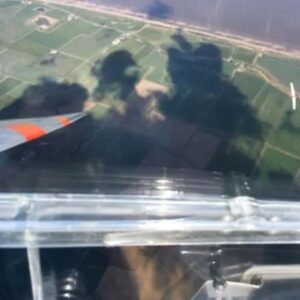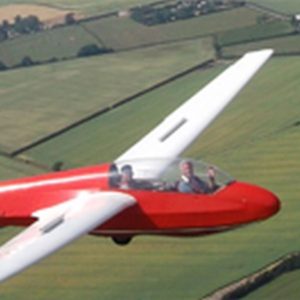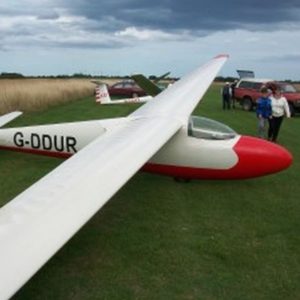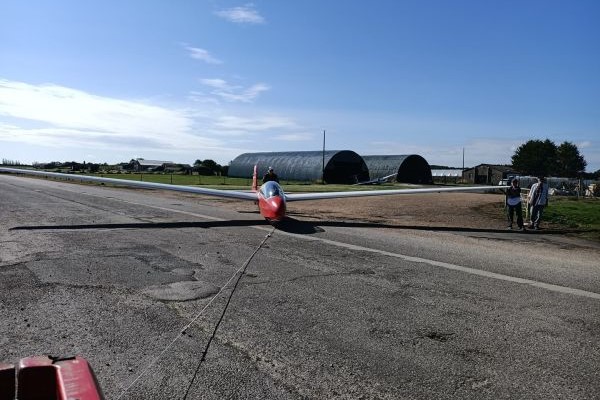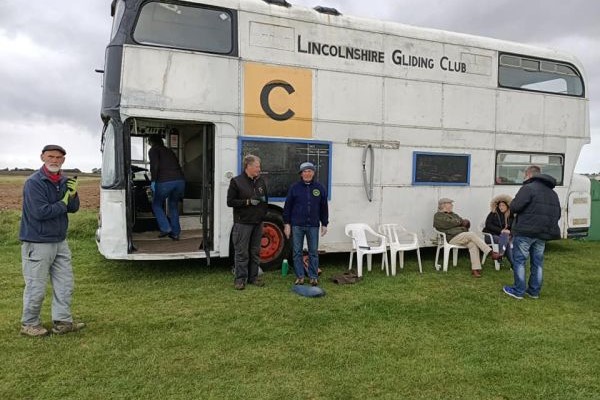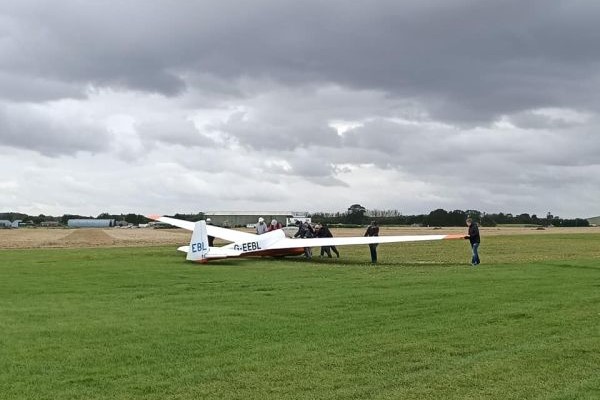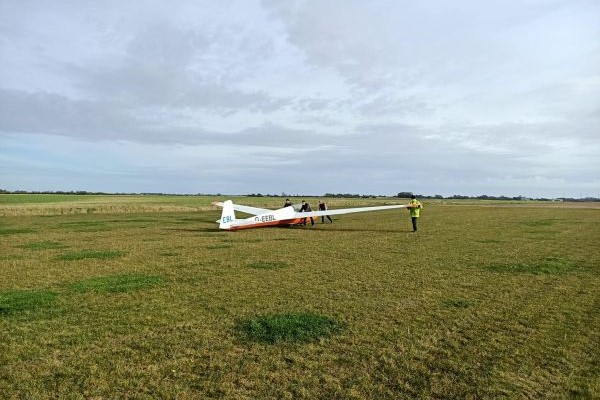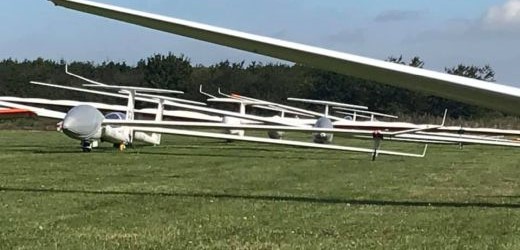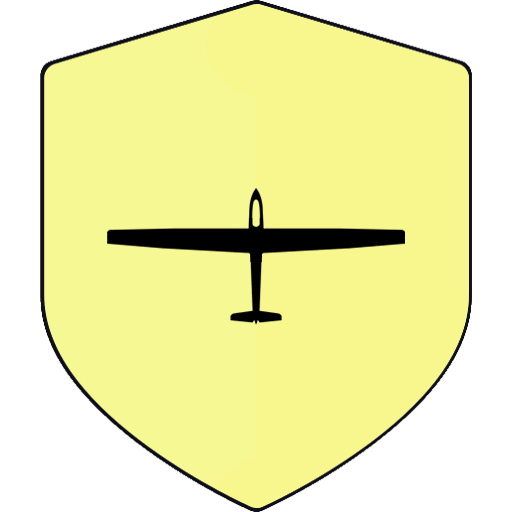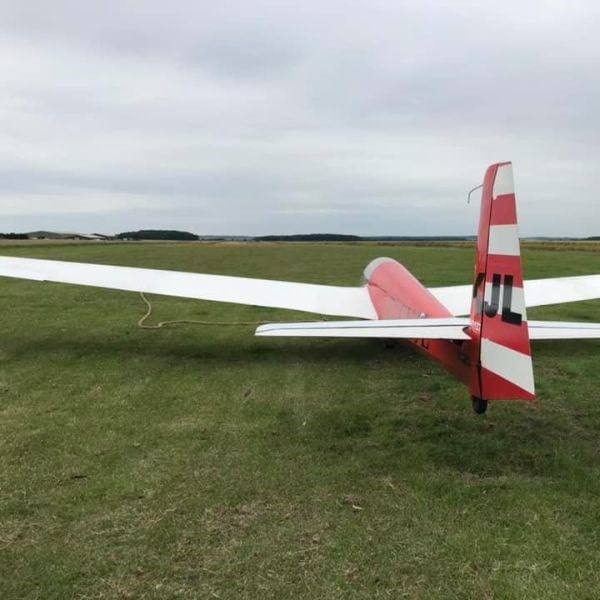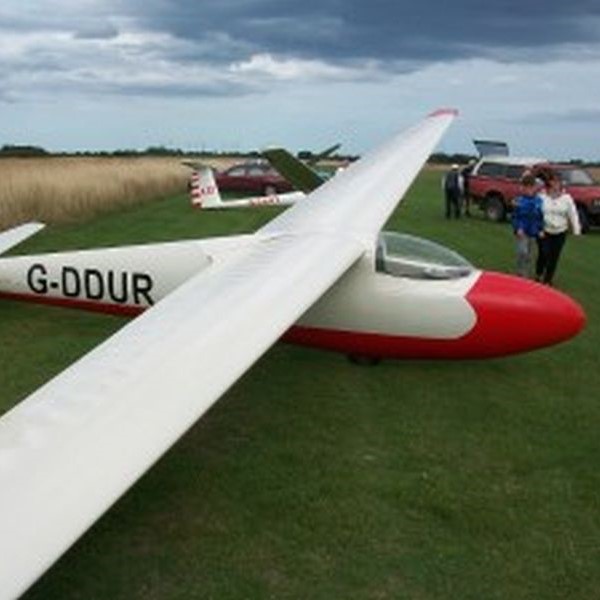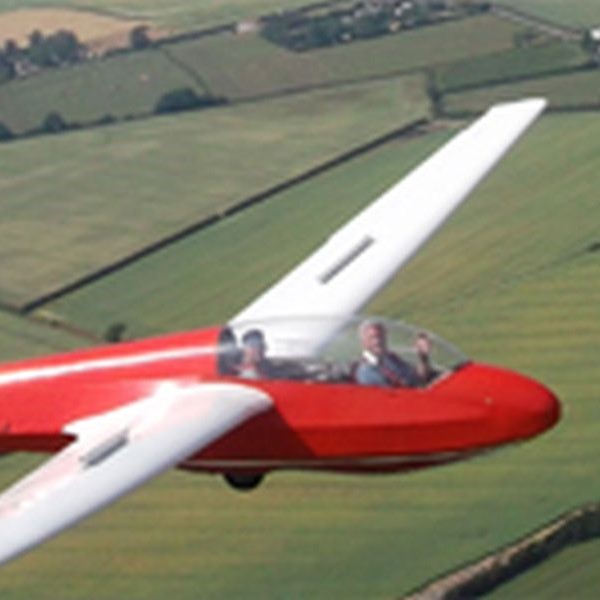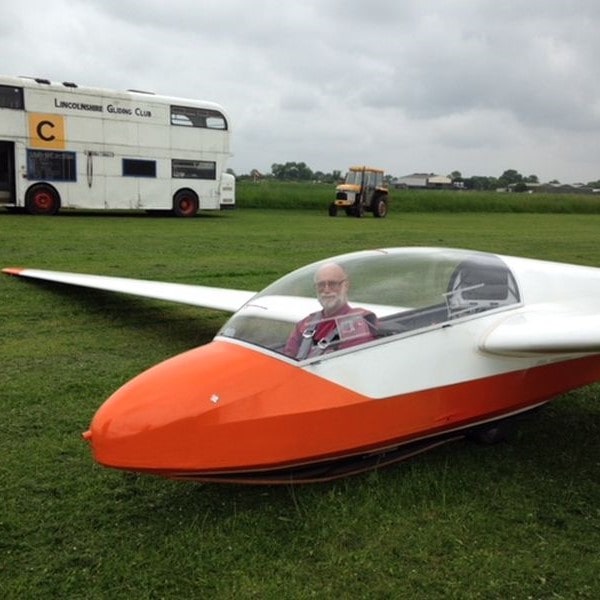document.addEventListener("DOMContentLoaded", function() {
let $awsForms = jQuery(".aws-container");
if ( $awsForms.length > 0 ) {
$awsForms.each(function( index ) {
if ( ! jQuery(this).closest("#wcfmmp-store").length > 0 && ! jQuery(this).closest("#wcfmmp-store-content").length > 0 ) {
jQuery(this).find('form').attr('action', 'https://avpay.aero/');
jQuery(this).data('tax', '');
}
});
}
});
if (typeof wcpt_persist_params === 'undefined') {
var wcpt_persist_params = [];
}
wcpt_persist_params.push('hide_form');
if (typeof wcpt_persist_params === 'undefined') { var wcpt_persist_params = []; } wcpt_persist_params = wcpt_persist_params.concat(["min_price","max_price","rating_filter","filter_aad-mode","filter_aad-pin-type","filter_aircraft-hire","filter_aircraft-size-mtow","filter_aircraft-type-1","filter_aircraft-type-2","filter_airs-hang-gliding","filter_airs-kite-taster","filter_airs-microlight-flights","filter_assisted-or-unassisted","filter_atlas-elastic-wrist-mount","filter_avpay-banners","filter_blackbushe-hour-building","filter_bright-creativity-1","filter_cfs-hour-building-options","filter_cfs-package-type","filter_cloud-dancer-spec","filter_clouddancer-canopy-type","filter_colour","filter_darl-landing-fees","filter_delivery-seht","filter_donations","filter_duration","filter_ecgb-gyro-membership","filter_egcb-north-west-gyro","filter_egcb-north-west-gyro-book","filter_egcb-north-west-gyro-eq","filter_egcb-north-west-gyro-gift","filter_egcb-north-west-gyro-hrs","filter_egcb-north-west-gyro-select","filter_egcb-north-west-gyro-train","filter_egcb-north-west-gyro-trial","filter_egnc-cumbria-mic","filter_egnc-de-ice","filter_egnc-de-ice-call-out","filter_egnc-fuel","filter_egnc-handling-fees","filter_egnc-security-charges","filter_egne-retford-airport-class","filter_egne-tas-training","filter_egnh-hangar-3-ac-s","filter_egnh-hangar-3-c","filter_egnh-hangar-3-h","filter_egnh-hangar-3-hours","filter_egnh-hangar-3-ooh","filter_egnh-hangar-3-p","filter_egnh-hangar-3-s","filter_egnh-hangar-3-stocks","filter_egnh-helispeed-academy-e","filter_egnh-helispeed-academy-f","filter_egnh-helispeed-academy-l","filter_egnh-helispeed-academy-t","filter_egpg-hangarage","filter_egpg-landing-fee-fixed-wing","filter_egpg-landing-fee-heli","filter_egpg-main-hangar","filter_egpg-oil-hyd-fluid","filter_egpg-parking-fees-size","filter_egpg-parking-fees-time","filter_email-broadcast-list","filter_enstone-circuit-fees","filter_execujet-parking","filter_execujet-weights","filter_flightline-aviation-deposit","filter_fuel","filter_fwma-airport-parking","filter_gender","filter_gyro-ground-school","filter_hangarage-size","filter_heli-charter","filter_heli-strato-sunglasses","filter_heli-tropo-sun-glasses","filter_heliair-faa","filter_heliair-helicopter-list","filter_heliair-pilot-serv","filter_heliair-test-fees","filter_heliair-trial","filter_helicopter-type","filter_hobbs-datcon","filter_hwel-tour","filter_involvement-in-aviation","filter_landing-fee","filter_landing-fees-tonnes","filter_lszh-execujet-zurich-conf","filter_lszh-execujet-zurich-gpu","filter_lszh-execujet-zurich-oil","filter_lszh-execujet-zurich-park","filter_lszh-execujet-zurich-tow","filter_lszh-execujet-zurich-tran","filter_mtow","filter_multiflight-24-hour-parking","filter_multiflight-handing-mtow","filter_multiflight-handling-fuel","filter_multiflight-landing-fee","filter_nemy-oil1","filter_nemy-oil2","filter_nemy-oil3","filter_number-of-people","filter_out-of-hours-times","filter_package","filter_plane-size","filter_porterage","filter_price","filter_private-flyer-days","filter_select-aircraft-page","filter_select-banner-type","filter_select-day","filter_select-directory","filter_select-hours","filter_select-number-of-passengers","filter_select-term","filter_size","filter_special-badge","filter_strathaven-airfield-fly","filter_strathaven-airfield-hang","filter_strathaven-airfield-landing","filter_strathaven-airfield-mi","filter_strathaven-airfield-out","filter_stunden-wahlen","filter_uk-01-tours","filter_uk-10-r44-block-rates","filter_uk02-tours","filter_uk03-instructor","filter_uk10","filter_uk10-ac-landing","filter_uk10-ground-school","filter_uk10-hours","filter_uk10-landing-circuits","filter_uk10-pilot-services","filter_uk10-shop","filter_uk10-test-fees","filter_uk11","filter_uk11-crew-lounge","filter_uk11-days","filter_uk11-fees","filter_uk11-helipad-transfer","filter_uk11-keys","filter_uk11-parking","filter_uk11-parking-car","filter_uk11-passenger-waiting","filter_uk11-vip-lounge","filter_uk11-working-hours","filter_uk12-bespoke-tours","filter_uk12-pleasure-flights","filter_uk12-pplh-training","filter_uk12-self-hire","filter_uk12-trial-lessons","filter_uk12-type-rating","filter_uk19-flight-academy-dist","filter_uk19-flight-academy-time","filter_uk20-micro-valets","filter_uk20-micro-valets-gold","filter_uk20-micro-valets-silver","filter_uk22-t6-harvard-exp","filter_uk24-aps-promotions-fb","filter_uk24-aps-promotions-fl","filter_uk24-aps-promotions-pm","filter_uk25-dorset-gliding-club-f","filter_uk25-dorset-gliding-club-i","filter_uk25-dorset-gliding-club-l","filter_uk25-dorset-gliding-club-s","filter_uk25-dorset-gliding-landing","filter_valet"]);
https://avpay.aero/wp-content/plugins/complianz-gdpr-premium/pro/tcf-stub/build/index.js
var breeze_prefetch = {"local_url":"https:\/\/avpay.aero","ignore_remote_prefetch":"1","ignore_list":["\/cart-2\/","\/checkout\/","\/my-account\/","\/cart-2\/","\/checkout\/","\/wp-admin\/"]};
https://avpay.aero/wp-content/plugins/breeze/assets/js/js-front-end/breeze-prefetch-links.min.js
var wc_add_to_cart_params = {"ajax_url":"\/wp-admin\/admin-ajax.php","wc_ajax_url":"\/?wc-ajax=%%endpoint%%","i18n_view_cart":"View cart","cart_url":"https:\/\/avpay.aero\/cart-2\/","is_cart":"","cart_redirect_after_add":"no"};
https://avpay.aero/wp-content/plugins/woocommerce/assets/js/frontend/add-to-cart.min.js
var wc_add_to_cart_variation_params = {"wc_ajax_url":"\/?wc-ajax=%%endpoint%%","i18n_no_matching_variations_text":"Sorry, no products matched your selection. Please choose a different combination.","i18n_make_a_selection_text":"Please select some product options before adding this product to your cart.","i18n_unavailable_text":"Sorry, this product is unavailable. Please choose a different combination."};
https://avpay.aero/wp-content/plugins/woocommerce/assets/js/frontend/add-to-cart-variation.min.js
https://avpay.aero/wp-content/plugins/woocommerce/assets/js/jquery-blockui/jquery.blockUI.min.js
https://avpay.aero/wp-content/plugins/woocommerce/assets/js/js-cookie/js.cookie.min.js
var woocommerce_params = {"ajax_url":"\/wp-admin\/admin-ajax.php","wc_ajax_url":"\/?wc-ajax=%%endpoint%%"};
https://avpay.aero/wp-content/plugins/woocommerce/assets/js/frontend/woocommerce.min.js
var cmplz_tcf = {"cmp_url":"https:\/\/avpay.aero\/wp-content\/uploads\/complianz\/","retention_string":"Retention in days","undeclared_string":"Not declared","isServiceSpecific":"1","excludedVendors":{"15":15,"46":46,"56":56,"66":66,"110":110,"119":119,"139":139,"141":141,"174":174,"192":192,"261":261,"262":262,"359":359,"375":375,"377":377,"387":387,"415":415,"427":427,"431":431,"435":435,"458":458,"462":462,"482":482,"508":508,"512":512,"521":521,"527":527,"528":528,"531":531,"544":544,"569":569,"581":581,"587":587,"626":626,"644":644,"667":667,"711":711,"713":713,"733":733,"734":734,"736":736,"748":748,"756":756,"776":776,"786":786,"806":806,"809":809,"822":822,"836":836,"856":856,"870":870,"873":873,"876":876,"879":879,"882":882,"888":888,"890":890,"894":894,"899":899,"908":908,"909":909,"923":923,"970":970,"975":975,"986":986,"988":988,"996":996,"1011":1011,"1015":1015,"1018":1018,"1022":1022,"1039":1039,"1044":1044,"1051":1051,"1075":1075,"1078":1078,"1079":1079,"1087":1087,"1094":1094,"1102":1102,"1107":1107,"1114":1114,"1115":1115,"1121":1121,"1123":1123,"1124":1124,"1139":1139,"1141":1141,"1149":1149,"1156":1156,"1164":1164,"1167":1167,"1173":1173,"1181":1181,"901":901,"1198":1198,"1199":1199,"1211":1211,"1216":1216},"purposes":[1,2,3,4,5,6,7,8,9,10,11,1],"specialPurposes":[1,2],"features":[1,2,3],"specialFeatures":[1,2],"publisherCountryCode":"GB","lspact":"N","ccpa_applies":"","ac_mode":"1","debug":"","prefix":"cmplz_"};
https://avpay.aero/wp-content/plugins/complianz-gdpr-premium/pro/tcf/build/index.js
https://avpay.aero/wp-content/plugins/currency-per-product-for-woocommerce-pro/assets/js/fix_cart_fragments.js
var bb_powerpack = {
search_term: '',
version: '2.36.2',
getAjaxUrl: function() { return atob( 'aHR0cHM6Ly9hdnBheS5hZXJvL3dwLWFkbWluL2FkbWluLWFqYXgucGhw' ); },
callback: function() {}
};
var woopack_config = {"ajaxurl":"https:\/\/avpay.aero\/wp-admin\/admin-ajax.php","page":0,"current_page":"https:\/\/avpay.aero\/company\/lincolnshire-gliding\/","woo_url":"https:\/\/avpay.aero\/wp-content\/plugins\/woocommerce\/"};
( function() {
window.onpageshow = function( event ) {
// Defined window.wpforms means that a form exists on a page.
// If so and back/forward button has been clicked,
// force reload a page to prevent the submit button state stuck.
if ( typeof window.wpforms !== 'undefined' && event.persisted ) {
window.location.reload();
}
};
}() );
Finding us
We are based at Strubby Airfield, Alford, Lincolnshire LN13 0DD which is 2½ miles North of Alford, 4 miles SW of Mablethorpe and 8 miles SE of Louth, just off the B1373.
From Louth take the A157 towards Mablethorpe, just before Withern turn right onto B1373, follow road to Woodthorpe Garden Centre (on left), approximately 100 yards on the left is the entrance to the airfield.
By air
The gliding club operates from part of the old RAF Strubby Airfield (EGCG).
Position: N53°18.30 E000°10.10
There is a power strip operating to the north of the glider runway; this has white runway markings, whereas the glider runway is part concrete and part grass and has no markings. Circuits are normally planned to the south of the glider strip to avoid conflicts with the power club. It is also worth noting that a model plane club operates from a grass square at the end of the south runway. The power club have conveniently provided a photo that shows both runways and the concrete track leaving the gliding strip at the concrete/grass boundary leading down to the modellers: we try to plan circuits outside or inside of the model strip and maintain 1000′ above them unless thermalling or in dire straits.
Showing all 5 results
Showing 1 – 5 of 5 results Showing all 5 results Showing the single result No results found
Filters Sort results Reset Apply
The gliding experience
Winch launching is the most exhilarating way to take-off and is the only launch method routinely used at Strubby.
The glider is connected to a cable approximately three-quarters of a mile long and is pulled up into the sky much like a kite. The glider runs on its wheels along the ground, then comes a few feet off the ground while picking up speed and when flying fast enough (about 60mph) pulls up at a 45o angle to gain as much height as possible. In the two-seater training aircraft, launch heights above 1200′ are common and in the right conditions can be over 2000′. To put this in context, a launch height of 1000′ would result in a flight of 5 minutes unless rising air is found, any more height gives additional time in the air and greater opportunity to find thermals and extend the flight.
The only sounds are the air moving past the glider, or occasional noises such as car engines from the ground. The ground flattens out into a rumpled patchwork quilt, a living photograph of the landscape with familiar landmarks from a superior viewpoint. The sky seems huge and empty other than for the tantalising mounds of bubbling white cumulus clouds indicating the presence of thermals. Rising air is what prolongs the flying time, and thermals are the likely source of this at Strubby, which means that much of a good flight will be spent circling to catch the strongest lift: climbing at first in tight, then in broadening rings, with the variometer beeping its happy song of lift.
Of course, where there is lift there will also be sink somewhere nearby, and then the variometer will sound its mournful bell and in the absence of any other lift, the pilot will start to plan the route back to the airfield. In the local soaring that is the chief component of early lessons, the airfield will always be comfortably in sight provided the student looks in the right direction! The circuit plan will be decided on to bring the glider on a final approach to the airfield at a good height and headed into wind (most times the same direction as launch) and this is the time when the glider has to be encouraged to come down from the sky by using the air brakes, which increase drag and allow a steeper, shorter approach. The glider lands softly on its wheel and runs on – a long way on concrete, less far on grass – and eventually comes to a standstill and one wing is lowered.
On the ground
It takes a team of people to get a glider in the air, and much of the day will be spent helping get the glider out of the hanger, helping others to launch and pushing, pulling or towing the glider along the airfield to the launch point.
The club is run by members, and everyone is encouraged to play an active part in supporting the activities. The main roles are described below and people often swap between them throughout the day:
Log keeper:
Keeps track of who is in the air at any time, how long they have flown for and how much they need to pay at the end of the day. Relays signals to the winch driver when the glider is ready to launch.
Wingman:
Holds the wings level just prior to launch and walks or runs a few steps alongside the glider until it picks up speed.
Launch marshall:
Connects the cable to the glider and signals to the log keeper when ready and safe to launch.
Winch driver:
Drives the winch to give the best launch possible, and winds the cable back in tidily once the glider has let go.
Tractor driver:
Tows out the cables back to the launch point ready for the next take-off.
Retrieve team:
Go to meet the glider if it runs on past the launch point (very likely on the concrete runway) and push or tow it back depending on the distance.
The flying order is generally determined by order of arrival, although some negotiation can occur between members with different needs and aims for the day. The Flying Instructor or Duty Pilot will ensure that all students know where they are on the list and roughly when they can expect to fly.
Copyright © 2024 AvPay.aero All Rights Reserved.
To provide the best experiences, we and our partners use technologies like cookies to store and/or access device information. Consenting to these technologies will allow us and our partners to process personal data such as browsing behavior or unique IDs on this site and show (non-) personalized ads. Not consenting or withdrawing consent, may adversely affect certain features and functions.
Click below to consent to the above or make granular choices. Your choices will be applied to this site only. You can change your settings at any time, including withdrawing your consent, by using the toggles on the Cookie Policy, or by clicking on the manage consent button at the bottom of the screen.
The technical storage or access is strictly necessary for the legitimate purpose of enabling the use of a specific service explicitly requested by the subscriber or user, or for the sole purpose of carrying out the transmission of a communication over an electronic communications network.
The technical storage or access is necessary for the legitimate purpose of storing preferences that are not requested by the subscriber or user.
The technical storage or access that is used exclusively for statistical purposes. The technical storage or access that is used exclusively for anonymous statistical purposes. Without a subpoena, voluntary compliance on the part of your Internet Service Provider, or additional records from a third party, information stored or retrieved for this purpose alone cannot usually be used to identify you.
The technical storage or access is required to create user profiles to send advertising, or to track the user on a website or across several websites for similar marketing purposes.
To provide the best experiences, we use technologies like cookies to store and/or access device information. Consenting to these technologies will allow us to process data such as browsing behavior or unique IDs on this site. Not consenting or withdrawing consent, may adversely affect certain features and functions.
The technical storage or access is strictly necessary for the legitimate purpose of enabling the use of a specific service explicitly requested by the subscriber or user, or for the sole purpose of carrying out the transmission of a communication over an electronic communications network.
The technical storage or access is necessary for the legitimate purpose of storing preferences that are not requested by the subscriber or user.
The technical storage or access that is used exclusively for statistical purposes. The technical storage or access that is used exclusively for anonymous statistical purposes. Without a subpoena, voluntary compliance on the part of your Internet Service Provider, or additional records from a third party, information stored or retrieved for this purpose alone cannot usually be used to identify you.
The technical storage or access is required to create user profiles to send advertising, or to track the user on a website or across several websites for similar marketing purposes.
Manage consent Manage consent
Click outside to hide the comparison bar
Scroll To Top
(adsbygoogle = window.adsbygoogle || []).push({});
jQuery(function($){ $('.wcpt-82342 [data-wcpt-filter="taxonomy"].wcpt-filter [data-wcpt-value="9677"], .wcpt-82342 [data-wcpt-filter="taxonomy"].wcpt-filter [data-wcpt-value="11342"], .wcpt-82342 [data-wcpt-filter="taxonomy"].wcpt-filter [data-wcpt-value="13453"], .wcpt-82342 [data-wcpt-filter="taxonomy"].wcpt-filter [data-wcpt-value="14150"], .wcpt-82342 [data-wcpt-filter="taxonomy"].wcpt-filter [data-wcpt-value="14829"], .wcpt-82342 [data-wcpt-filter="taxonomy"].wcpt-filter [data-wcpt-value="3291"], .wcpt-82342 [data-wcpt-filter="taxonomy"].wcpt-filter [data-wcpt-value="3578"], .wcpt-82342 [data-wcpt-filter="taxonomy"].wcpt-filter [data-wcpt-value="3651"], .wcpt-82342 [data-wcpt-filter="taxonomy"].wcpt-filter [data-wcpt-value="4339"], .wcpt-82342 [data-wcpt-filter="taxonomy"].wcpt-filter [data-wcpt-value="4412"], .wcpt-82342 [data-wcpt-filter="taxonomy"].wcpt-filter [data-wcpt-value="4827"], .wcpt-82342 [data-wcpt-filter="taxonomy"].wcpt-filter [data-wcpt-value="4874"], .wcpt-82342 [data-wcpt-filter="taxonomy"].wcpt-filter [data-wcpt-value="5017"], .wcpt-82342 [data-wcpt-filter="taxonomy"].wcpt-filter [data-wcpt-value="5292"], .wcpt-82342 [data-wcpt-filter="taxonomy"].wcpt-filter [data-wcpt-value="6043"], .wcpt-82342 [data-wcpt-filter="taxonomy"].wcpt-filter [data-wcpt-value="7022"], .wcpt-82342 [data-wcpt-filter="taxonomy"].wcpt-filter [data-wcpt-value="7328"], .wcpt-82342 [data-wcpt-filter="taxonomy"].wcpt-filter [data-wcpt-value="9342"], .wcpt-82342 [data-wcpt-filter="taxonomy"].wcpt-filter [data-wcpt-value="9441"], .wcpt-82342 [data-wcpt-filter="taxonomy"].wcpt-filter [data-wcpt-value="9678"], .wcpt-82342 [data-wcpt-filter="taxonomy"].wcpt-filter [data-wcpt-value="10188"], .wcpt-82342 [data-wcpt-filter="taxonomy"].wcpt-filter [data-wcpt-value="10607"], .wcpt-82342 [data-wcpt-filter="taxonomy"].wcpt-filter [data-wcpt-value="10746"], .wcpt-82342 [data-wcpt-filter="taxonomy"].wcpt-filter [data-wcpt-value="11569"], .wcpt-82342 [data-wcpt-filter="taxonomy"].wcpt-filter [data-wcpt-value="11946"], .wcpt-82342 [data-wcpt-filter="taxonomy"].wcpt-filter [data-wcpt-value="14157"], .wcpt-82342 [data-wcpt-filter="taxonomy"].wcpt-filter [data-wcpt-value="14462"], .wcpt-82342 [data-wcpt-filter="taxonomy"].wcpt-filter [data-wcpt-value="3360"], .wcpt-82342 [data-wcpt-filter="taxonomy"].wcpt-filter [data-wcpt-value="3444"], .wcpt-82342 [data-wcpt-filter="taxonomy"].wcpt-filter [data-wcpt-value="3460"], .wcpt-82342 [data-wcpt-filter="taxonomy"].wcpt-filter [data-wcpt-value="3492"], .wcpt-82342 [data-wcpt-filter="taxonomy"].wcpt-filter [data-wcpt-value="3508"], .wcpt-82342 [data-wcpt-filter="taxonomy"].wcpt-filter [data-wcpt-value="4188"], .wcpt-82342 [data-wcpt-filter="taxonomy"].wcpt-filter [data-wcpt-value="4794"], .wcpt-82342 [data-wcpt-filter="taxonomy"].wcpt-filter [data-wcpt-value="5457"], .wcpt-82342 [data-wcpt-filter="taxonomy"].wcpt-filter [data-wcpt-value="5761"], .wcpt-82342 [data-wcpt-filter="taxonomy"].wcpt-filter [data-wcpt-value="6200"], .wcpt-82342 [data-wcpt-filter="taxonomy"].wcpt-filter [data-wcpt-value="7090"], .wcpt-82342 [data-wcpt-filter="taxonomy"].wcpt-filter [data-wcpt-value="7237"], .wcpt-82342 [data-wcpt-filter="taxonomy"].wcpt-filter [data-wcpt-value="7869"], .wcpt-82342 [data-wcpt-filter="taxonomy"].wcpt-filter [data-wcpt-value="8229"], .wcpt-82342 [data-wcpt-filter="taxonomy"].wcpt-filter [data-wcpt-value="11101"], .wcpt-82342 [data-wcpt-filter="taxonomy"].wcpt-filter [data-wcpt-value="13460"], .wcpt-82342 [data-wcpt-filter="taxonomy"].wcpt-filter [data-wcpt-value="13978"], .wcpt-82342 [data-wcpt-filter="taxonomy"].wcpt-filter [data-wcpt-value="15625"], .wcpt-82342 [data-wcpt-filter="taxonomy"].wcpt-filter [data-wcpt-value="3309"], .wcpt-82342 [data-wcpt-filter="taxonomy"].wcpt-filter [data-wcpt-value="3493"], .wcpt-82342 [data-wcpt-filter="taxonomy"].wcpt-filter [data-wcpt-value="3953"], .wcpt-82342 [data-wcpt-filter="taxonomy"].wcpt-filter [data-wcpt-value="4272"], .wcpt-82342 [data-wcpt-filter="taxonomy"].wcpt-filter [data-wcpt-value="4750"], .wcpt-82342 [data-wcpt-filter="taxonomy"].wcpt-filter [data-wcpt-value="4876"], .wcpt-82342 [data-wcpt-filter="taxonomy"].wcpt-filter [data-wcpt-value="5196"], .wcpt-82342 [data-wcpt-filter="taxonomy"].wcpt-filter [data-wcpt-value="5714"], .wcpt-82342 [data-wcpt-filter="taxonomy"].wcpt-filter [data-wcpt-value="6045"], .wcpt-82342 [data-wcpt-filter="taxonomy"].wcpt-filter [data-wcpt-value="6201"], .wcpt-82342 [data-wcpt-filter="taxonomy"].wcpt-filter [data-wcpt-value="6273"], .wcpt-82342 [data-wcpt-filter="taxonomy"].wcpt-filter [data-wcpt-value="7722"], .wcpt-82342 [data-wcpt-filter="taxonomy"].wcpt-filter [data-wcpt-value="8634"], .wcpt-82342 [data-wcpt-filter="taxonomy"].wcpt-filter [data-wcpt-value="9052"], .wcpt-82342 [data-wcpt-filter="taxonomy"].wcpt-filter [data-wcpt-value="11573"], .wcpt-82342 [data-wcpt-filter="taxonomy"].wcpt-filter [data-wcpt-value="11950"], .wcpt-82342 [data-wcpt-filter="taxonomy"].wcpt-filter [data-wcpt-value="12112"], .wcpt-82342 [data-wcpt-filter="taxonomy"].wcpt-filter [data-wcpt-value="13306"], .wcpt-82342 [data-wcpt-filter="taxonomy"].wcpt-filter [data-wcpt-value="14563"], .wcpt-82342 [data-wcpt-filter="taxonomy"].wcpt-filter [data-wcpt-value="15206"], .wcpt-82342 [data-wcpt-filter="taxonomy"].wcpt-filter [data-wcpt-value="3362"], .wcpt-82342 [data-wcpt-filter="taxonomy"].wcpt-filter [data-wcpt-value="3462"], .wcpt-82342 [data-wcpt-filter="taxonomy"].wcpt-filter [data-wcpt-value="3494"], .wcpt-82342 [data-wcpt-filter="taxonomy"].wcpt-filter [data-wcpt-value="3510"], .wcpt-82342 [data-wcpt-filter="taxonomy"].wcpt-filter [data-wcpt-value="4121"], .wcpt-82342 [data-wcpt-filter="taxonomy"].wcpt-filter [data-wcpt-value="4319"], .wcpt-82342 [data-wcpt-filter="taxonomy"].wcpt-filter [data-wcpt-value="4376"], .wcpt-82342 [data-wcpt-filter="taxonomy"].wcpt-filter [data-wcpt-value="4450"], .wcpt-82342 [data-wcpt-filter="taxonomy"].wcpt-filter [data-wcpt-value="4775"], .wcpt-82342 [data-wcpt-filter="taxonomy"].wcpt-filter [data-wcpt-value="5562"], .wcpt-82342 [data-wcpt-filter="taxonomy"].wcpt-filter [data-wcpt-value="5784"], .wcpt-82342 [data-wcpt-filter="taxonomy"].wcpt-filter [data-wcpt-value="7028"], .wcpt-82342 [data-wcpt-filter="taxonomy"].wcpt-filter [data-wcpt-value="7097"], .wcpt-82342 [data-wcpt-filter="taxonomy"].wcpt-filter [data-wcpt-value="7249"], .wcpt-82342 [data-wcpt-filter="taxonomy"].wcpt-filter [data-wcpt-value="8592"], .wcpt-82342 [data-wcpt-filter="taxonomy"].wcpt-filter [data-wcpt-value="11580"], .wcpt-82342 [data-wcpt-filter="taxonomy"].wcpt-filter [data-wcpt-value="11837"], .wcpt-82342 [data-wcpt-filter="taxonomy"].wcpt-filter [data-wcpt-value="14028"], .wcpt-82342 [data-wcpt-filter="taxonomy"].wcpt-filter [data-wcpt-value="14195"], .wcpt-82342 [data-wcpt-filter="taxonomy"].wcpt-filter [data-wcpt-value="14953"], .wcpt-82342 [data-wcpt-filter="taxonomy"].wcpt-filter [data-wcpt-value="15213"], .wcpt-82342 [data-wcpt-filter="taxonomy"].wcpt-filter [data-wcpt-value="3262"], .wcpt-82342 [data-wcpt-filter="taxonomy"].wcpt-filter [data-wcpt-value="3398"], .wcpt-82342 [data-wcpt-filter="taxonomy"].wcpt-filter [data-wcpt-value="3958"], .wcpt-82342 [data-wcpt-filter="taxonomy"].wcpt-filter [data-wcpt-value="3997"], .wcpt-82342 [data-wcpt-filter="taxonomy"].wcpt-filter [data-wcpt-value="4083"], .wcpt-82342 [data-wcpt-filter="taxonomy"].wcpt-filter [data-wcpt-value="4800"], .wcpt-82342 [data-wcpt-filter="taxonomy"].wcpt-filter [data-wcpt-value="9244"], .wcpt-82342 [data-wcpt-filter="taxonomy"].wcpt-filter [data-wcpt-value="9369"], .wcpt-82342 [data-wcpt-filter="taxonomy"].wcpt-filter [data-wcpt-value="9471"], .wcpt-82342 [data-wcpt-filter="taxonomy"].wcpt-filter [data-wcpt-value="9703"], .wcpt-82342 [data-wcpt-filter="taxonomy"].wcpt-filter [data-wcpt-value="9925"], .wcpt-82342 [data-wcpt-filter="taxonomy"].wcpt-filter [data-wcpt-value="10650"], .wcpt-82342 [data-wcpt-filter="taxonomy"].wcpt-filter [data-wcpt-value="11191"], .wcpt-82342 [data-wcpt-filter="taxonomy"].wcpt-filter [data-wcpt-value="11382"], .wcpt-82342 [data-wcpt-filter="taxonomy"].wcpt-filter [data-wcpt-value="11956"], .wcpt-82342 [data-wcpt-filter="taxonomy"].wcpt-filter [data-wcpt-value="13321"], .wcpt-82342 [data-wcpt-filter="taxonomy"].wcpt-filter [data-wcpt-value="13486"], .wcpt-82342 [data-wcpt-filter="taxonomy"].wcpt-filter [data-wcpt-value="14971"], .wcpt-82342 [data-wcpt-filter="taxonomy"].wcpt-filter [data-wcpt-value="15221"], .wcpt-82342 [data-wcpt-filter="taxonomy"].wcpt-filter [data-wcpt-value="3312"], .wcpt-82342 [data-wcpt-filter="taxonomy"].wcpt-filter [data-wcpt-value="3380"], .wcpt-82342 [data-wcpt-filter="taxonomy"].wcpt-filter [data-wcpt-value="3464"], .wcpt-82342 [data-wcpt-filter="taxonomy"].wcpt-filter [data-wcpt-value="4777"], .wcpt-82342 [data-wcpt-filter="taxonomy"].wcpt-filter [data-wcpt-value="5336"], .wcpt-82342 [data-wcpt-filter="taxonomy"].wcpt-filter [data-wcpt-value="5383"], .wcpt-82342 [data-wcpt-filter="taxonomy"].wcpt-filter [data-wcpt-value="5717"], .wcpt-82342 [data-wcpt-filter="taxonomy"].wcpt-filter [data-wcpt-value="6184"], .wcpt-82342 [data-wcpt-filter="taxonomy"].wcpt-filter [data-wcpt-value="8594"], .wcpt-82342 [data-wcpt-filter="taxonomy"].wcpt-filter [data-wcpt-value="9065"], .wcpt-82342 [data-wcpt-filter="taxonomy"].wcpt-filter [data-wcpt-value="11850"], .wcpt-82342 [data-wcpt-filter="taxonomy"].wcpt-filter [data-wcpt-value="11978"], .wcpt-82342 [data-wcpt-filter="taxonomy"].wcpt-filter [data-wcpt-value="13488"], .wcpt-82342 [data-wcpt-filter="taxonomy"].wcpt-filter [data-wcpt-value="13760"], .wcpt-82342 [data-wcpt-filter="taxonomy"].wcpt-filter [data-wcpt-value="3400"], .wcpt-82342 [data-wcpt-filter="taxonomy"].wcpt-filter [data-wcpt-value="3481"], .wcpt-82342 [data-wcpt-filter="taxonomy"].wcpt-filter [data-wcpt-value="4888"], .wcpt-82342 [data-wcpt-filter="taxonomy"].wcpt-filter [data-wcpt-value="5787"], .wcpt-82342 [data-wcpt-filter="taxonomy"].wcpt-filter [data-wcpt-value="6537"], .wcpt-82342 [data-wcpt-filter="taxonomy"].wcpt-filter [data-wcpt-value="6942"], .wcpt-82342 [data-wcpt-filter="taxonomy"].wcpt-filter [data-wcpt-value="6981"], .wcpt-82342 [data-wcpt-filter="taxonomy"].wcpt-filter [data-wcpt-value="6998"], .wcpt-82342 [data-wcpt-filter="taxonomy"].wcpt-filter [data-wcpt-value="7136"], .wcpt-82342 [data-wcpt-filter="taxonomy"].wcpt-filter [data-wcpt-value="8639"], .wcpt-82342 [data-wcpt-filter="taxonomy"].wcpt-filter [data-wcpt-value="9283"], .wcpt-82342 [data-wcpt-filter="taxonomy"].wcpt-filter [data-wcpt-value="9712"], .wcpt-82342 [data-wcpt-filter="taxonomy"].wcpt-filter [data-wcpt-value="9977"], .wcpt-82342 [data-wcpt-filter="taxonomy"].wcpt-filter [data-wcpt-value="10922"], .wcpt-82342 [data-wcpt-filter="taxonomy"].wcpt-filter [data-wcpt-value="11859"], .wcpt-82342 [data-wcpt-filter="taxonomy"].wcpt-filter [data-wcpt-value="12155"], .wcpt-82342 [data-wcpt-filter="taxonomy"].wcpt-filter [data-wcpt-value="13359"], .wcpt-82342 [data-wcpt-filter="taxonomy"].wcpt-filter [data-wcpt-value="14212"], .wcpt-82342 [data-wcpt-filter="taxonomy"].wcpt-filter [data-wcpt-value="14643"], .wcpt-82342 [data-wcpt-filter="taxonomy"].wcpt-filter [data-wcpt-value="15235"], .wcpt-82342 [data-wcpt-filter="taxonomy"].wcpt-filter [data-wcpt-value="2072"], .wcpt-82342 [data-wcpt-filter="taxonomy"].wcpt-filter [data-wcpt-value="3265"], .wcpt-82342 [data-wcpt-filter="taxonomy"].wcpt-filter [data-wcpt-value="3314"], .wcpt-82342 [data-wcpt-filter="taxonomy"].wcpt-filter [data-wcpt-value="3366"], .wcpt-82342 [data-wcpt-filter="taxonomy"].wcpt-filter [data-wcpt-value="3382"], .wcpt-82342 [data-wcpt-filter="taxonomy"].wcpt-filter [data-wcpt-value="3450"], .wcpt-82342 [data-wcpt-filter="taxonomy"].wcpt-filter [data-wcpt-value="3535"], .wcpt-82342 [data-wcpt-filter="taxonomy"].wcpt-filter [data-wcpt-value="3738"], .wcpt-82342 [data-wcpt-filter="taxonomy"].wcpt-filter [data-wcpt-value="4153"], .wcpt-82342 [data-wcpt-filter="taxonomy"].wcpt-filter [data-wcpt-value="5342"], .wcpt-82342 [data-wcpt-filter="taxonomy"].wcpt-filter [data-wcpt-value="5738"], .wcpt-82342 [data-wcpt-filter="taxonomy"].wcpt-filter [data-wcpt-value="6096"], .wcpt-82342 [data-wcpt-filter="taxonomy"].wcpt-filter [data-wcpt-value="6186"], .wcpt-82342 [data-wcpt-filter="taxonomy"].wcpt-filter [data-wcpt-value="7500"], .wcpt-82342 [data-wcpt-filter="taxonomy"].wcpt-filter [data-wcpt-value="7652"], .wcpt-82342 [data-wcpt-filter="taxonomy"].wcpt-filter [data-wcpt-value="8256"], .wcpt-82342 [data-wcpt-filter="taxonomy"].wcpt-filter [data-wcpt-value="8952"], .wcpt-82342 [data-wcpt-filter="taxonomy"].wcpt-filter [data-wcpt-value="10315"], .wcpt-82342 [data-wcpt-filter="taxonomy"].wcpt-filter [data-wcpt-value="11401"], .wcpt-82342 [data-wcpt-filter="taxonomy"].wcpt-filter [data-wcpt-value="12611"], .wcpt-82342 [data-wcpt-filter="taxonomy"].wcpt-filter [data-wcpt-value="13517"], .wcpt-82342 [data-wcpt-filter="taxonomy"].wcpt-filter [data-wcpt-value="14105"], .wcpt-82342 [data-wcpt-filter="taxonomy"].wcpt-filter [data-wcpt-value="4326"], .wcpt-82342 [data-wcpt-filter="taxonomy"].wcpt-filter [data-wcpt-value="4994"], .wcpt-82342 [data-wcpt-filter="taxonomy"].wcpt-filter [data-wcpt-value="5030"], .wcpt-82342 [data-wcpt-filter="taxonomy"].wcpt-filter [data-wcpt-value="5245"], .wcpt-82342 [data-wcpt-filter="taxonomy"].wcpt-filter [data-wcpt-value="5551"], .wcpt-82342 [data-wcpt-filter="taxonomy"].wcpt-filter [data-wcpt-value="6542"], .wcpt-82342 [data-wcpt-filter="taxonomy"].wcpt-filter [data-wcpt-value="7260"], .wcpt-82342 [data-wcpt-filter="taxonomy"].wcpt-filter [data-wcpt-value="7920"], .wcpt-82342 [data-wcpt-filter="taxonomy"].wcpt-filter [data-wcpt-value="9291"], .wcpt-82342 [data-wcpt-filter="taxonomy"].wcpt-filter [data-wcpt-value="12073"], .wcpt-82342 [data-wcpt-filter="taxonomy"].wcpt-filter [data-wcpt-value="13361"], .wcpt-82342 [data-wcpt-filter="taxonomy"].wcpt-filter [data-wcpt-value="15026"], .wcpt-82342 [data-wcpt-filter="taxonomy"].wcpt-filter [data-wcpt-value="3368"], .wcpt-82342 [data-wcpt-filter="taxonomy"].wcpt-filter [data-wcpt-value="3452"], .wcpt-82342 [data-wcpt-filter="taxonomy"].wcpt-filter [data-wcpt-value="4208"], .wcpt-82342 [data-wcpt-filter="taxonomy"].wcpt-filter [data-wcpt-value="4298"], .wcpt-82342 [data-wcpt-filter="taxonomy"].wcpt-filter [data-wcpt-value="4423"], .wcpt-82342 [data-wcpt-filter="taxonomy"].wcpt-filter [data-wcpt-value="5349"], .wcpt-82342 [data-wcpt-filter="taxonomy"].wcpt-filter [data-wcpt-value="5478"], .wcpt-82342 [data-wcpt-filter="taxonomy"].wcpt-filter [data-wcpt-value="6188"], .wcpt-82342 [data-wcpt-filter="taxonomy"].wcpt-filter [data-wcpt-value="7041"], .wcpt-82342 [data-wcpt-filter="taxonomy"].wcpt-filter [data-wcpt-value="7667"], .wcpt-82342 [data-wcpt-filter="taxonomy"].wcpt-filter [data-wcpt-value="8301"], .wcpt-82342 [data-wcpt-filter="taxonomy"].wcpt-filter [data-wcpt-value="8650"], .wcpt-82342 [data-wcpt-filter="taxonomy"].wcpt-filter [data-wcpt-value="8972"], .wcpt-82342 [data-wcpt-filter="taxonomy"].wcpt-filter [data-wcpt-value="10688"], .wcpt-82342 [data-wcpt-filter="taxonomy"].wcpt-filter [data-wcpt-value="11403"], .wcpt-82342 [data-wcpt-filter="taxonomy"].wcpt-filter [data-wcpt-value="12176"], .wcpt-82342 [data-wcpt-filter="taxonomy"].wcpt-filter [data-wcpt-value="13229"], .wcpt-82342 [data-wcpt-filter="taxonomy"].wcpt-filter [data-wcpt-value="14123"], .wcpt-82342 [data-wcpt-filter="taxonomy"].wcpt-filter [data-wcpt-value="14307"], .wcpt-82342 [data-wcpt-filter="taxonomy"].wcpt-filter [data-wcpt-value="15279"], .wcpt-82342 [data-wcpt-filter="taxonomy"].wcpt-filter [data-wcpt-value="3972"], .wcpt-82342 [data-wcpt-filter="taxonomy"].wcpt-filter [data-wcpt-value="4165"], .wcpt-82342 [data-wcpt-filter="taxonomy"].wcpt-filter [data-wcpt-value="4785"], .wcpt-82342 [data-wcpt-filter="taxonomy"].wcpt-filter [data-wcpt-value="4845"], .wcpt-82342 [data-wcpt-filter="taxonomy"].wcpt-filter [data-wcpt-value="5391"], .wcpt-82342 [data-wcpt-filter="taxonomy"].wcpt-filter [data-wcpt-value="5670"], .wcpt-82342 [data-wcpt-filter="taxonomy"].wcpt-filter [data-wcpt-value="6955"], .wcpt-82342 [data-wcpt-filter="taxonomy"].wcpt-filter [data-wcpt-value="7774"], .wcpt-82342 [data-wcpt-filter="taxonomy"].wcpt-filter [data-wcpt-value="8302"], .wcpt-82342 [data-wcpt-filter="taxonomy"].wcpt-filter [data-wcpt-value="10360"], .wcpt-82342 [data-wcpt-filter="taxonomy"].wcpt-filter [data-wcpt-value="11266"], .wcpt-82342 [data-wcpt-filter="taxonomy"].wcpt-filter [data-wcpt-value="11694"], .wcpt-82342 [data-wcpt-filter="taxonomy"].wcpt-filter [data-wcpt-value="12078"], .wcpt-82342 [data-wcpt-filter="taxonomy"].wcpt-filter [data-wcpt-value="13407"], .wcpt-82342 [data-wcpt-filter="taxonomy"].wcpt-filter [data-wcpt-value="14802"], .wcpt-82342 [data-wcpt-filter="taxonomy"].wcpt-filter [data-wcpt-value="3370"], .wcpt-82342 [data-wcpt-filter="taxonomy"].wcpt-filter [data-wcpt-value="3502"], .wcpt-82342 [data-wcpt-filter="taxonomy"].wcpt-filter [data-wcpt-value="3572"], .wcpt-82342 [data-wcpt-filter="taxonomy"].wcpt-filter [data-wcpt-value="4166"], .wcpt-82342 [data-wcpt-filter="taxonomy"].wcpt-filter [data-wcpt-value="4368"], .wcpt-82342 [data-wcpt-filter="taxonomy"].wcpt-filter [data-wcpt-value="5043"], .wcpt-82342 [data-wcpt-filter="taxonomy"].wcpt-filter [data-wcpt-value="5608"], .wcpt-82342 [data-wcpt-filter="taxonomy"].wcpt-filter [data-wcpt-value="6986"], .wcpt-82342 [data-wcpt-filter="taxonomy"].wcpt-filter [data-wcpt-value="7677"], .wcpt-82342 [data-wcpt-filter="taxonomy"].wcpt-filter [data-wcpt-value="9418"], .wcpt-82342 [data-wcpt-filter="taxonomy"].wcpt-filter [data-wcpt-value="12184"], .wcpt-82342 [data-wcpt-filter="taxonomy"].wcpt-filter [data-wcpt-value="13412"], .wcpt-82342 [data-wcpt-filter="taxonomy"].wcpt-filter [data-wcpt-value="14139"], .wcpt-82342 [data-wcpt-filter="taxonomy"].wcpt-filter [data-wcpt-value="14324"], .wcpt-82342 [data-wcpt-filter="taxonomy"].wcpt-filter [data-wcpt-value="15094"], .wcpt-82342 [data-wcpt-filter="taxonomy"].wcpt-filter [data-wcpt-value="15287"], .wcpt-82342 [data-wcpt-filter="taxonomy"].wcpt-filter [data-wcpt-value="3337"], .wcpt-82342 [data-wcpt-filter="taxonomy"].wcpt-filter [data-wcpt-value="3355"], .wcpt-82342 [data-wcpt-filter="taxonomy"].wcpt-filter [data-wcpt-value="3438"], .wcpt-82342 [data-wcpt-filter="taxonomy"].wcpt-filter [data-wcpt-value="5084"], .wcpt-82342 [data-wcpt-filter="taxonomy"].wcpt-filter [data-wcpt-value="5672"], .wcpt-82342 [data-wcpt-filter="taxonomy"].wcpt-filter [data-wcpt-value="5880"], .wcpt-82342 [data-wcpt-filter="taxonomy"].wcpt-filter [data-wcpt-value="6011"], .wcpt-82342 [data-wcpt-filter="taxonomy"].wcpt-filter [data-wcpt-value="6191"], .wcpt-82342 [data-wcpt-filter="taxonomy"].wcpt-filter [data-wcpt-value="6458"], .wcpt-82342 [data-wcpt-filter="taxonomy"].wcpt-filter [data-wcpt-value="7210"], .wcpt-82342 [data-wcpt-filter="taxonomy"].wcpt-filter [data-wcpt-value="8180"], .wcpt-82342 [data-wcpt-filter="taxonomy"].wcpt-filter [data-wcpt-value="8307"], .wcpt-82342 [data-wcpt-filter="taxonomy"].wcpt-filter [data-wcpt-value="9008"], .wcpt-82342 [data-wcpt-filter="taxonomy"].wcpt-filter [data-wcpt-value="9657"], .wcpt-82342 [data-wcpt-filter="taxonomy"].wcpt-filter [data-wcpt-value="10162"], .wcpt-82342 [data-wcpt-filter="taxonomy"].wcpt-filter [data-wcpt-value="10717"], .wcpt-82342 [data-wcpt-filter="taxonomy"].wcpt-filter [data-wcpt-value="10952"], .wcpt-82342 [data-wcpt-filter="taxonomy"].wcpt-filter [data-wcpt-value="11435"], .wcpt-82342 [data-wcpt-filter="taxonomy"].wcpt-filter [data-wcpt-value="11913"], .wcpt-82342 [data-wcpt-filter="taxonomy"].wcpt-filter [data-wcpt-value="14813"], .wcpt-82342 [data-wcpt-filter="taxonomy"].wcpt-filter [data-wcpt-value="15119"], .wcpt-82342 [data-wcpt-filter="taxonomy"].wcpt-filter [data-wcpt-value="3288"], .wcpt-82342 [data-wcpt-filter="taxonomy"].wcpt-filter [data-wcpt-value="3472"], .wcpt-82342 [data-wcpt-filter="taxonomy"].wcpt-filter [data-wcpt-value="3504"], .wcpt-82342 [data-wcpt-filter="taxonomy"].wcpt-filter [data-wcpt-value="3865"], .wcpt-82342 [data-wcpt-filter="taxonomy"].wcpt-filter [data-wcpt-value="3990"], .wcpt-82342 [data-wcpt-filter="taxonomy"].wcpt-filter [data-wcpt-value="4871"], .wcpt-82342 [data-wcpt-filter="taxonomy"].wcpt-filter [data-wcpt-value="5012"], .wcpt-82342 [data-wcpt-filter="taxonomy"].wcpt-filter [data-wcpt-value="5404"], .wcpt-82342 [data-wcpt-filter="taxonomy"].wcpt-filter [data-wcpt-value="6192"], .wcpt-82342 [data-wcpt-filter="taxonomy"].wcpt-filter [data-wcpt-value="8859"], .wcpt-82342 [data-wcpt-filter="taxonomy"].wcpt-filter [data-wcpt-value="9136"], .wcpt-82342 [data-wcpt-filter="taxonomy"].wcpt-filter [data-wcpt-value="9330"], .wcpt-82342 [data-wcpt-filter="taxonomy"].wcpt-filter [data-wcpt-value="13441"], .wcpt-82342 [data-wcpt-filter="taxonomy"].wcpt-filter [data-wcpt-value="13923"], .wcpt-82342 [data-wcpt-filter="taxonomy"].wcpt-filter [data-wcpt-value="14143"], .wcpt-82342 [data-wcpt-filter="taxonomy"].wcpt-filter [data-wcpt-value="15331"], .wcpt-82342 [data-wcpt-filter="taxonomy"].wcpt-filter [data-wcpt-value="3289"], .wcpt-82342 [data-wcpt-filter="taxonomy"].wcpt-filter [data-wcpt-value="3357"], .wcpt-82342 [data-wcpt-filter="taxonomy"].wcpt-filter [data-wcpt-value="3440"], .wcpt-82342 [data-wcpt-filter="taxonomy"].wcpt-filter [data-wcpt-value="3575"], .wcpt-82342 [data-wcpt-filter="taxonomy"].wcpt-filter [data-wcpt-value="4185"], .wcpt-82342 [data-wcpt-filter="taxonomy"].wcpt-filter [data-wcpt-value="5089"], .wcpt-82342 [data-wcpt-filter="taxonomy"].wcpt-filter [data-wcpt-value="5709"], .wcpt-82342 [data-wcpt-filter="taxonomy"].wcpt-filter [data-wcpt-value="6560"], .wcpt-82342 [data-wcpt-filter="taxonomy"].wcpt-filter [data-wcpt-value="7017"], .wcpt-82342 [data-wcpt-filter="taxonomy"].wcpt-filter [data-wcpt-value="7324"], .wcpt-82342 [data-wcpt-filter="taxonomy"].wcpt-filter [data-wcpt-value="8574"], .wcpt-82342 [data-wcpt-filter="taxonomy"].wcpt-filter [data-wcpt-value="8865"], .wcpt-82342 [data-wcpt-filter="taxonomy"].wcpt-filter [data-wcpt-value="9661"], .wcpt-82342 [data-wcpt-filter="taxonomy"].wcpt-filter [data-wcpt-value="10175"], .wcpt-82342 [data-wcpt-filter="taxonomy"].wcpt-filter [data-wcpt-value="11309"], .wcpt-82342 [data-wcpt-filter="taxonomy"].wcpt-filter [data-wcpt-value="12367"], .wcpt-82342 [data-wcpt-filter="taxonomy"].wcpt-filter [data-wcpt-value="15126"], .wcpt-82342 [data-wcpt-filter="taxonomy"].wcpt-filter [data-wcpt-value="3340"], .wcpt-82342 [data-wcpt-filter="taxonomy"].wcpt-filter [data-wcpt-value="3374"], .wcpt-82342 [data-wcpt-filter="taxonomy"].wcpt-filter [data-wcpt-value="3458"], .wcpt-82342 [data-wcpt-filter="taxonomy"].wcpt-filter [data-wcpt-value="3506"], .wcpt-82342 [data-wcpt-filter="taxonomy"].wcpt-filter [data-wcpt-value="4073"], .wcpt-82342 [data-wcpt-filter="taxonomy"].wcpt-filter [data-wcpt-value="4411"], .wcpt-82342 [data-wcpt-filter="taxonomy"].wcpt-filter [data-wcpt-value="5542"], .wcpt-82342 [data-wcpt-filter="taxonomy"].wcpt-filter [data-wcpt-value="5750"], .wcpt-82342 [data-wcpt-filter="taxonomy"].wcpt-filter [data-wcpt-value="6198"], .wcpt-82342 [data-wcpt-filter="taxonomy"].wcpt-filter [data-wcpt-value="7021"], .wcpt-82342 [data-wcpt-filter="taxonomy"].wcpt-filter [data-wcpt-value="7085"], .wcpt-82342 [data-wcpt-filter="taxonomy"].wcpt-filter [data-wcpt-value="15147"], .wcpt-82342 [data-wcpt-filter="taxonomy"].wcpt-filter [data-wcpt-value="3394"], .wcpt-82342 [data-wcpt-filter="taxonomy"].wcpt-filter [data-wcpt-value="4265"], .wcpt-82342 [data-wcpt-filter="taxonomy"].wcpt-filter [data-wcpt-value="5711"], .wcpt-82342 [data-wcpt-filter="taxonomy"].wcpt-filter [data-wcpt-value="9045"], .wcpt-82342 [data-wcpt-filter="taxonomy"].wcpt-filter [data-wcpt-value="13302"], .wcpt-82342 [data-wcpt-filter="taxonomy"].wcpt-filter [data-wcpt-value="3308"], .wcpt-82342 [data-wcpt-filter="taxonomy"].wcpt-filter [data-wcpt-value="3376"], .wcpt-82342 [data-wcpt-filter="taxonomy"].wcpt-filter [data-wcpt-value="3427"], .wcpt-82342 [data-wcpt-filter="taxonomy"].wcpt-filter [data-wcpt-value="4113"], .wcpt-82342 [data-wcpt-filter="taxonomy"].wcpt-filter [data-wcpt-value="4413"], .wcpt-82342 [data-wcpt-filter="taxonomy"].wcpt-filter [data-wcpt-value="5021"], .wcpt-82342 [data-wcpt-filter="taxonomy"].wcpt-filter [data-wcpt-value="5233"], .wcpt-82342 [data-wcpt-filter="taxonomy"].wcpt-filter [data-wcpt-value="5658"], .wcpt-82342 [data-wcpt-filter="taxonomy"].wcpt-filter [data-wcpt-value="6253"], .wcpt-82342 [data-wcpt-filter="taxonomy"].wcpt-filter [data-wcpt-value="7023"], .wcpt-82342 [data-wcpt-filter="taxonomy"].wcpt-filter [data-wcpt-value="9205"], .wcpt-82342 [data-wcpt-filter="taxonomy"].wcpt-filter [data-wcpt-value="9813"], .wcpt-82342 [data-wcpt-filter="taxonomy"].wcpt-filter [data-wcpt-value="11948"], .wcpt-82342 [data-wcpt-filter="taxonomy"].wcpt-filter [data-wcpt-value="14857"], .wcpt-82342 [data-wcpt-filter="taxonomy"].wcpt-filter [data-wcpt-value="3396"], .wcpt-82342 [data-wcpt-filter="taxonomy"].wcpt-filter [data-wcpt-value="3445"], .wcpt-82342 [data-wcpt-filter="taxonomy"].wcpt-filter [data-wcpt-value="4047"], .wcpt-82342 [data-wcpt-filter="taxonomy"].wcpt-filter [data-wcpt-value="4547"], .wcpt-82342 [data-wcpt-filter="taxonomy"].wcpt-filter [data-wcpt-value="4795"], .wcpt-82342 [data-wcpt-filter="taxonomy"].wcpt-filter [data-wcpt-value="4832"], .wcpt-82342 [data-wcpt-filter="taxonomy"].wcpt-filter [data-wcpt-value="5310"], .wcpt-82342 [data-wcpt-filter="taxonomy"].wcpt-filter [data-wcpt-value="5458"], .wcpt-82342 [data-wcpt-filter="taxonomy"].wcpt-filter [data-wcpt-value="9224"], .wcpt-82342 [data-wcpt-filter="taxonomy"].wcpt-filter [data-wcpt-value="10899"], .wcpt-82342 [data-wcpt-filter="taxonomy"].wcpt-filter [data-wcpt-value="15629"], .wcpt-82342 [data-wcpt-filter="taxonomy"].wcpt-filter [data-wcpt-value="3589"], .wcpt-82342 [data-wcpt-filter="taxonomy"].wcpt-filter [data-wcpt-value="3996"], .wcpt-82342 [data-wcpt-filter="taxonomy"].wcpt-filter [data-wcpt-value="4082"], .wcpt-82342 [data-wcpt-filter="taxonomy"].wcpt-filter [data-wcpt-value="4349"], .wcpt-82342 [data-wcpt-filter="taxonomy"].wcpt-filter [data-wcpt-value="5025"], .wcpt-82342 [data-wcpt-filter="taxonomy"].wcpt-filter [data-wcpt-value="5197"], .wcpt-82342 [data-wcpt-filter="taxonomy"].wcpt-filter [data-wcpt-value="5715"], .wcpt-82342 [data-wcpt-filter="taxonomy"].wcpt-filter [data-wcpt-value="6202"], .wcpt-82342 [data-wcpt-filter="taxonomy"].wcpt-filter [data-wcpt-value="6524"], .wcpt-82342 [data-wcpt-filter="taxonomy"].wcpt-filter [data-wcpt-value="7909"], .wcpt-82342 [data-wcpt-filter="taxonomy"].wcpt-filter [data-wcpt-value="8235"], .wcpt-82342 [data-wcpt-filter="taxonomy"].wcpt-filter [data-wcpt-value="4456"], .wcpt-82342 [data-wcpt-filter="taxonomy"].wcpt-filter [data-wcpt-value="5312"], .wcpt-82342 [data-wcpt-filter="taxonomy"].wcpt-filter [data-wcpt-value="5716"], .wcpt-82342 [data-wcpt-filter="taxonomy"].wcpt-filter [data-wcpt-value="6047"], .wcpt-82342 [data-wcpt-filter="taxonomy"].wcpt-filter [data-wcpt-value="7029"], .wcpt-82342 [data-wcpt-filter="taxonomy"].wcpt-filter [data-wcpt-value="10914"], .wcpt-82342 [data-wcpt-filter="taxonomy"].wcpt-filter [data-wcpt-value="14601"], .wcpt-82342 [data-wcpt-filter="taxonomy"].wcpt-filter [data-wcpt-value="3364"], .wcpt-82342 [data-wcpt-filter="taxonomy"].wcpt-filter [data-wcpt-value="4353"], .wcpt-82342 [data-wcpt-filter="taxonomy"].wcpt-filter [data-wcpt-value="5242"], .wcpt-82342 [data-wcpt-filter="taxonomy"].wcpt-filter [data-wcpt-value="5474"], .wcpt-82342 [data-wcpt-filter="taxonomy"].wcpt-filter [data-wcpt-value="5786"], .wcpt-82342 [data-wcpt-filter="taxonomy"].wcpt-filter [data-wcpt-value="6980"], .wcpt-82342 [data-wcpt-filter="taxonomy"].wcpt-filter [data-wcpt-value="7255"], .wcpt-82342 [data-wcpt-filter="taxonomy"].wcpt-filter [data-wcpt-value="10279"], .wcpt-82342 [data-wcpt-filter="taxonomy"].wcpt-filter [data-wcpt-value="11203"], .wcpt-82342 [data-wcpt-filter="taxonomy"].wcpt-filter [data-wcpt-value="14211"], .wcpt-82342 [data-wcpt-filter="taxonomy"].wcpt-filter [data-wcpt-value="14642"], .wcpt-82342 [data-wcpt-filter="taxonomy"].wcpt-filter [data-wcpt-value="15637"], .wcpt-82342 [data-wcpt-filter="taxonomy"].wcpt-filter [data-wcpt-value="3264"], .wcpt-82342 [data-wcpt-filter="taxonomy"].wcpt-filter [data-wcpt-value="3365"], .wcpt-82342 [data-wcpt-filter="taxonomy"].wcpt-filter [data-wcpt-value="3432"], .wcpt-82342 [data-wcpt-filter="taxonomy"].wcpt-filter [data-wcpt-value="3961"], .wcpt-82342 [data-wcpt-filter="taxonomy"].wcpt-filter [data-wcpt-value="4146"], .wcpt-82342 [data-wcpt-filter="taxonomy"].wcpt-filter [data-wcpt-value="4616"], .wcpt-82342 [data-wcpt-filter="taxonomy"].wcpt-filter [data-wcpt-value="5243"], .wcpt-82342 [data-wcpt-filter="taxonomy"].wcpt-filter [data-wcpt-value="6185"], .wcpt-82342 [data-wcpt-filter="taxonomy"].wcpt-filter [data-wcpt-value="6205"], .wcpt-82342 [data-wcpt-filter="taxonomy"].wcpt-filter [data-wcpt-value="7742"], .wcpt-82342 [data-wcpt-filter="taxonomy"].wcpt-filter [data-wcpt-value="8759"], .wcpt-82342 [data-wcpt-filter="taxonomy"].wcpt-filter [data-wcpt-value="3247"], .wcpt-82342 [data-wcpt-filter="taxonomy"].wcpt-filter [data-wcpt-value="3466"], .wcpt-82342 [data-wcpt-filter="taxonomy"].wcpt-filter [data-wcpt-value="3962"], .wcpt-82342 [data-wcpt-filter="taxonomy"].wcpt-filter [data-wcpt-value="4804"], .wcpt-82342 [data-wcpt-filter="taxonomy"].wcpt-filter [data-wcpt-value="4842"], .wcpt-82342 [data-wcpt-filter="taxonomy"].wcpt-filter [data-wcpt-value="4993"], .wcpt-82342 [data-wcpt-filter="taxonomy"].wcpt-filter [data-wcpt-value="5029"], .wcpt-82342 [data-wcpt-filter="taxonomy"].wcpt-filter [data-wcpt-value="10014"], .wcpt-82342 [data-wcpt-filter="taxonomy"].wcpt-filter [data-wcpt-value="10661"], .wcpt-82342 [data-wcpt-filter="taxonomy"].wcpt-filter [data-wcpt-value="14679"], .wcpt-82342 [data-wcpt-filter="taxonomy"].wcpt-filter [data-wcpt-value="2073"], .wcpt-82342 [data-wcpt-filter="taxonomy"].wcpt-filter [data-wcpt-value="3350"], .wcpt-82342 [data-wcpt-filter="taxonomy"].wcpt-filter [data-wcpt-value="3536"], .wcpt-82342 [data-wcpt-filter="taxonomy"].wcpt-filter [data-wcpt-value="3915"], .wcpt-82342 [data-wcpt-filter="taxonomy"].wcpt-filter [data-wcpt-value="4154"], .wcpt-82342 [data-wcpt-filter="taxonomy"].wcpt-filter [data-wcpt-value="5203"], .wcpt-82342 [data-wcpt-filter="taxonomy"].wcpt-filter [data-wcpt-value="6111"], .wcpt-82342 [data-wcpt-filter="taxonomy"].wcpt-filter [data-wcpt-value="6187"], .wcpt-82342 [data-wcpt-filter="taxonomy"].wcpt-filter [data-wcpt-value="10056"], .wcpt-82342 [data-wcpt-filter="taxonomy"].wcpt-filter [data-wcpt-value="10327"], .wcpt-82342 [data-wcpt-filter="taxonomy"].wcpt-filter [data-wcpt-value="3403"], .wcpt-82342 [data-wcpt-filter="taxonomy"].wcpt-filter [data-wcpt-value="3435"], .wcpt-82342 [data-wcpt-filter="taxonomy"].wcpt-filter [data-wcpt-value="4327"], .wcpt-82342 [data-wcpt-filter="taxonomy"].wcpt-filter [data-wcpt-value="5318"], .wcpt-82342 [data-wcpt-filter="taxonomy"].wcpt-filter [data-wcpt-value="6455"], .wcpt-82342 [data-wcpt-filter="taxonomy"].wcpt-filter [data-wcpt-value="7921"], .wcpt-82342 [data-wcpt-filter="taxonomy"].wcpt-filter [data-wcpt-value="8170"], .wcpt-82342 [data-wcpt-filter="taxonomy"].wcpt-filter [data-wcpt-value="9409"], .wcpt-82342 [data-wcpt-filter="taxonomy"].wcpt-filter [data-wcpt-value="3285"], .wcpt-82342 [data-wcpt-filter="taxonomy"].wcpt-filter [data-wcpt-value="4818"], .wcpt-82342 [data-wcpt-filter="taxonomy"].wcpt-filter [data-wcpt-value="5487"], .wcpt-82342 [data-wcpt-filter="taxonomy"].wcpt-filter [data-wcpt-value="5744"], .wcpt-82342 [data-wcpt-filter="taxonomy"].wcpt-filter [data-wcpt-value="7269"], .wcpt-82342 [data-wcpt-filter="taxonomy"].wcpt-filter [data-wcpt-value="8658"], .wcpt-82342 [data-wcpt-filter="taxonomy"].wcpt-filter [data-wcpt-value="11404"], .wcpt-82342 [data-wcpt-filter="taxonomy"].wcpt-filter [data-wcpt-value="13562"], .wcpt-82342 [data-wcpt-filter="taxonomy"].wcpt-filter [data-wcpt-value="13915"], .wcpt-82342 [data-wcpt-filter="taxonomy"].wcpt-filter [data-wcpt-value="3302"], .wcpt-82342 [data-wcpt-filter="taxonomy"].wcpt-filter [data-wcpt-value="3454"], .wcpt-82342 [data-wcpt-filter="taxonomy"].wcpt-filter [data-wcpt-value="4212"], .wcpt-82342 [data-wcpt-filter="taxonomy"].wcpt-filter [data-wcpt-value="8672"], .wcpt-82342 [data-wcpt-filter="taxonomy"].wcpt-filter [data-wcpt-value="8845"], .wcpt-82342 [data-wcpt-filter="taxonomy"].wcpt-filter [data-wcpt-value="9323"], .wcpt-82342 [data-wcpt-filter="taxonomy"].wcpt-filter [data-wcpt-value="10373"], .wcpt-82342 [data-wcpt-filter="taxonomy"].wcpt-filter [data-wcpt-value="10951"], .wcpt-82342 [data-wcpt-filter="taxonomy"].wcpt-filter [data-wcpt-value="13573"], .wcpt-82342 [data-wcpt-filter="taxonomy"].wcpt-filter [data-wcpt-value="3471"], .wcpt-82342 [data-wcpt-filter="taxonomy"].wcpt-filter [data-wcpt-value="4307"], .wcpt-82342 [data-wcpt-filter="taxonomy"].wcpt-filter [data-wcpt-value="4870"], .wcpt-82342 [data-wcpt-filter="taxonomy"].wcpt-filter [data-wcpt-value="5536"], .wcpt-82342 [data-wcpt-filter="taxonomy"].wcpt-filter [data-wcpt-value="5609"], .wcpt-82342 [data-wcpt-filter="taxonomy"].wcpt-filter [data-wcpt-value="6961"], .wcpt-82342 [data-wcpt-filter="taxonomy"].wcpt-filter [data-wcpt-value="7004"], .wcpt-82342 [data-wcpt-filter="taxonomy"].wcpt-filter [data-wcpt-value="8006"], .wcpt-82342 [data-wcpt-filter="taxonomy"].wcpt-filter [data-wcpt-value="10447"], .wcpt-82342 [data-wcpt-filter="taxonomy"].wcpt-filter [data-wcpt-value="4040"], .wcpt-82342 [data-wcpt-filter="taxonomy"].wcpt-filter [data-wcpt-value="4311"], .wcpt-82342 [data-wcpt-filter="taxonomy"].wcpt-filter [data-wcpt-value="4333"], .wcpt-82342 [data-wcpt-filter="taxonomy"].wcpt-filter [data-wcpt-value="4432"], .wcpt-82342 [data-wcpt-filter="taxonomy"].wcpt-filter [data-wcpt-value="5278"], .wcpt-82342 [data-wcpt-filter="taxonomy"].wcpt-filter [data-wcpt-value="9011"], .wcpt-82342 [data-wcpt-filter="taxonomy"].wcpt-filter [data-wcpt-value="9426"], .wcpt-82342 [data-wcpt-filter="taxonomy"].wcpt-filter [data-wcpt-value="11920"], .wcpt-82342 [data-wcpt-filter="taxonomy"].wcpt-filter [data-wcpt-value="3991"], .wcpt-82342 [data-wcpt-filter="taxonomy"].wcpt-filter [data-wcpt-value="4072"], .wcpt-82342 [data-wcpt-filter="taxonomy"].wcpt-filter [data-wcpt-value="4507"], .wcpt-82342 [data-wcpt-filter="taxonomy"].wcpt-filter [data-wcpt-value="5225"], .wcpt-82342 [data-wcpt-filter="taxonomy"].wcpt-filter [data-wcpt-value="5749"], .wcpt-82342 [data-wcpt-filter="taxonomy"].wcpt-filter [data-wcpt-value="6989"], .wcpt-82342 [data-wcpt-filter="taxonomy"].wcpt-filter [data-wcpt-value="13296"], .wcpt-82342 [data-wcpt-filter="taxonomy"].wcpt-filter [data-wcpt-value="14414"], .wcpt-82342 [data-wcpt-filter="taxonomy"].wcpt-filter [data-wcpt-value="3290"], .wcpt-82342 [data-wcpt-filter="taxonomy"].wcpt-filter [data-wcpt-value="4315"], .wcpt-82342 [data-wcpt-filter="taxonomy"].wcpt-filter [data-wcpt-value="4435"], .wcpt-82342 [data-wcpt-filter="taxonomy"].wcpt-filter [data-wcpt-value="4728"], .wcpt-82342 [data-wcpt-filter="taxonomy"].wcpt-filter [data-wcpt-value="4826"], .wcpt-82342 [data-wcpt-filter="taxonomy"].wcpt-filter [data-wcpt-value="5016"], .wcpt-82342 [data-wcpt-filter="taxonomy"].wcpt-filter [data-wcpt-value="6042"], .wcpt-82342 [data-wcpt-filter="taxonomy"].wcpt-filter [data-wcpt-value="11922"], .wcpt-82342 [data-wcpt-filter="taxonomy"].wcpt-filter [data-wcpt-value="13298"], .wcpt-82342 [data-wcpt-filter="taxonomy"].wcpt-filter [data-wcpt-value="13665"], .wcpt-82342 [data-wcpt-filter="taxonomy"].wcpt-filter [data-wcpt-value="3359"], .wcpt-82342 [data-wcpt-filter="taxonomy"].wcpt-filter [data-wcpt-value="3442"], .wcpt-82342 [data-wcpt-filter="taxonomy"].wcpt-filter [data-wcpt-value="4076"], .wcpt-82342 [data-wcpt-filter="taxonomy"].wcpt-filter [data-wcpt-value="4316"], .wcpt-82342 [data-wcpt-filter="taxonomy"].wcpt-filter [data-wcpt-value="4741"], .wcpt-82342 [data-wcpt-filter="taxonomy"].wcpt-filter [data-wcpt-value="5751"], .wcpt-82342 [data-wcpt-filter="taxonomy"].wcpt-filter [data-wcpt-value="7089"], .wcpt-82342 [data-wcpt-filter="taxonomy"].wcpt-filter [data-wcpt-value="8331"], .wcpt-82342 [data-wcpt-filter="taxonomy"].wcpt-filter [data-wcpt-value="15623"], .wcpt-82342 [data-wcpt-filter="taxonomy"].wcpt-filter [data-wcpt-value="4745"], .wcpt-82342 [data-wcpt-filter="taxonomy"].wcpt-filter [data-wcpt-value="5195"], .wcpt-82342 [data-wcpt-filter="taxonomy"].wcpt-filter [data-wcpt-value="6583"], .wcpt-82342 [data-wcpt-filter="taxonomy"].wcpt-filter [data-wcpt-value="9446"], .wcpt-82342 [data-wcpt-filter="taxonomy"].wcpt-filter [data-wcpt-value="11362"], .wcpt-82342 [data-wcpt-filter="taxonomy"].wcpt-filter [data-wcpt-value="11572"], .wcpt-82342 [data-wcpt-filter="taxonomy"].wcpt-filter [data-wcpt-value="3260"], .wcpt-82342 [data-wcpt-filter="taxonomy"].wcpt-filter [data-wcpt-value="3293"], .wcpt-82342 [data-wcpt-filter="taxonomy"].wcpt-filter [data-wcpt-value="3428"], .wcpt-82342 [data-wcpt-filter="taxonomy"].wcpt-filter [data-wcpt-value="3477"], .wcpt-82342 [data-wcpt-filter="taxonomy"].wcpt-filter [data-wcpt-value="4081"], .wcpt-82342 [data-wcpt-filter="taxonomy"].wcpt-filter [data-wcpt-value="4414"], .wcpt-82342 [data-wcpt-filter="taxonomy"].wcpt-filter [data-wcpt-value="5781"], .wcpt-82342 [data-wcpt-filter="taxonomy"].wcpt-filter [data-wcpt-value="8898"], .wcpt-82342 [data-wcpt-filter="taxonomy"].wcpt-filter [data-wcpt-value="9352"], .wcpt-82342 [data-wcpt-filter="taxonomy"].wcpt-filter [data-wcpt-value="3310"], .wcpt-82342 [data-wcpt-filter="taxonomy"].wcpt-filter [data-wcpt-value="3715"], .wcpt-82342 [data-wcpt-filter="taxonomy"].wcpt-filter [data-wcpt-value="4048"], .wcpt-82342 [data-wcpt-filter="taxonomy"].wcpt-filter [data-wcpt-value="5376"], .wcpt-82342 [data-wcpt-filter="taxonomy"].wcpt-filter [data-wcpt-value="6046"], .wcpt-82342 [data-wcpt-filter="taxonomy"].wcpt-filter [data-wcpt-value="6172"], .wcpt-82342 [data-wcpt-filter="taxonomy"].wcpt-filter [data-wcpt-value="6382"], .wcpt-82342 [data-wcpt-filter="taxonomy"].wcpt-filter [data-wcpt-value="8084"], .wcpt-82342 [data-wcpt-filter="taxonomy"].wcpt-filter [data-wcpt-value="4350"], .wcpt-82342 [data-wcpt-filter="taxonomy"].wcpt-filter [data-wcpt-value="4377"], .wcpt-82342 [data-wcpt-filter="taxonomy"].wcpt-filter [data-wcpt-value="5026"], .wcpt-82342 [data-wcpt-filter="taxonomy"].wcpt-filter [data-wcpt-value="5785"], .wcpt-82342 [data-wcpt-filter="taxonomy"].wcpt-filter [data-wcpt-value="6203"], .wcpt-82342 [data-wcpt-filter="taxonomy"].wcpt-filter [data-wcpt-value="6275"], .wcpt-82342 [data-wcpt-filter="taxonomy"].wcpt-filter [data-wcpt-value="6403"], .wcpt-82342 [data-wcpt-filter="taxonomy"].wcpt-filter [data-wcpt-value="6528"], .wcpt-82342 [data-wcpt-filter="taxonomy"].wcpt-filter [data-wcpt-value="14197"], .wcpt-82342 [data-wcpt-filter="taxonomy"].wcpt-filter [data-wcpt-value="3960"], .wcpt-82342 [data-wcpt-filter="taxonomy"].wcpt-filter [data-wcpt-value="4801"], .wcpt-82342 [data-wcpt-filter="taxonomy"].wcpt-filter [data-wcpt-value="5199"], .wcpt-82342 [data-wcpt-filter="taxonomy"].wcpt-filter [data-wcpt-value="5314"], .wcpt-82342 [data-wcpt-filter="taxonomy"].wcpt-filter [data-wcpt-value="6064"], .wcpt-82342 [data-wcpt-filter="taxonomy"].wcpt-filter [data-wcpt-value="7030"], .wcpt-82342 [data-wcpt-filter="taxonomy"].wcpt-filter [data-wcpt-value="9382"], .wcpt-82342 [data-wcpt-filter="taxonomy"].wcpt-filter [data-wcpt-value="12587"], .wcpt-82342 [data-wcpt-filter="taxonomy"].wcpt-filter [data-wcpt-value="3297"], .wcpt-82342 [data-wcpt-filter="taxonomy"].wcpt-filter [data-wcpt-value="3737"], .wcpt-82342 [data-wcpt-filter="taxonomy"].wcpt-filter [data-wcpt-value="4324"], .wcpt-82342 [data-wcpt-filter="taxonomy"].wcpt-filter [data-wcpt-value="4356"], .wcpt-82342 [data-wcpt-filter="taxonomy"].wcpt-filter [data-wcpt-value="4461"], .wcpt-82342 [data-wcpt-filter="taxonomy"].wcpt-filter [data-wcpt-value="5341"], .wcpt-82342 [data-wcpt-filter="taxonomy"].wcpt-filter [data-wcpt-value="6287"], .wcpt-82342 [data-wcpt-filter="taxonomy"].wcpt-filter [data-wcpt-value="3596"], .wcpt-82342 [data-wcpt-filter="taxonomy"].wcpt-filter [data-wcpt-value="4010"], .wcpt-82342 [data-wcpt-filter="taxonomy"].wcpt-filter [data-wcpt-value="4325"], .wcpt-82342 [data-wcpt-filter="taxonomy"].wcpt-filter [data-wcpt-value="4360"], .wcpt-82342 [data-wcpt-filter="taxonomy"].wcpt-filter [data-wcpt-value="5244"], .wcpt-82342 [data-wcpt-filter="taxonomy"].wcpt-filter [data-wcpt-value="8533"], .wcpt-82342 [data-wcpt-filter="taxonomy"].wcpt-filter [data-wcpt-value="9567"], .wcpt-82342 [data-wcpt-filter="taxonomy"].wcpt-filter [data-wcpt-value="10933"], .wcpt-82342 [data-wcpt-filter="taxonomy"].wcpt-filter [data-wcpt-value="11234"], .wcpt-82342 [data-wcpt-filter="taxonomy"].wcpt-filter [data-wcpt-value="12059"], .wcpt-82342 [data-wcpt-filter="taxonomy"].wcpt-filter [data-wcpt-value="3402"], .wcpt-82342 [data-wcpt-filter="taxonomy"].wcpt-filter [data-wcpt-value="3467"], .wcpt-82342 [data-wcpt-filter="taxonomy"].wcpt-filter [data-wcpt-value="3597"], .wcpt-82342 [data-wcpt-filter="taxonomy"].wcpt-filter [data-wcpt-value="4782"], .wcpt-82342 [data-wcpt-filter="taxonomy"].wcpt-filter [data-wcpt-value="4843"], .wcpt-82342 [data-wcpt-filter="taxonomy"].wcpt-filter [data-wcpt-value="5477"], .wcpt-82342 [data-wcpt-filter="taxonomy"].wcpt-filter [data-wcpt-value="6454"], .wcpt-82342 [data-wcpt-filter="taxonomy"].wcpt-filter [data-wcpt-value="10943"], .wcpt-82342 [data-wcpt-filter="taxonomy"].wcpt-filter [data-wcpt-value="3853"], .wcpt-82342 [data-wcpt-filter="taxonomy"].wcpt-filter [data-wcpt-value="4155"], .wcpt-82342 [data-wcpt-filter="taxonomy"].wcpt-filter [data-wcpt-value="4897"], .wcpt-82342 [data-wcpt-filter="taxonomy"].wcpt-filter [data-wcpt-value="7001"], .wcpt-82342 [data-wcpt-filter="taxonomy"].wcpt-filter [data-wcpt-value="7502"], .wcpt-82342 [data-wcpt-filter="taxonomy"].wcpt-filter [data-wcpt-value="9603"], .wcpt-82342 [data-wcpt-filter="taxonomy"].wcpt-filter [data-wcpt-value="13556"], .wcpt-82342 [data-wcpt-filter="taxonomy"].wcpt-filter [data-wcpt-value="3436"], .wcpt-82342 [data-wcpt-filter="taxonomy"].wcpt-filter [data-wcpt-value="3469"], .wcpt-82342 [data-wcpt-filter="taxonomy"].wcpt-filter [data-wcpt-value="4328"], .wcpt-82342 [data-wcpt-filter="taxonomy"].wcpt-filter [data-wcpt-value="5354"], .wcpt-82342 [data-wcpt-filter="taxonomy"].wcpt-filter [data-wcpt-value="7922"], .wcpt-82342 [data-wcpt-filter="taxonomy"].wcpt-filter [data-wcpt-value="8844"], .wcpt-82342 [data-wcpt-filter="taxonomy"].wcpt-filter [data-wcpt-value="10950"], .wcpt-82342 [data-wcpt-filter="taxonomy"].wcpt-filter [data-wcpt-value="4787"], .wcpt-82342 [data-wcpt-filter="taxonomy"].wcpt-filter [data-wcpt-value="5745"], .wcpt-82342 [data-wcpt-filter="taxonomy"].wcpt-filter [data-wcpt-value="7003"], .wcpt-82342 [data-wcpt-filter="taxonomy"].wcpt-filter [data-wcpt-value="3390"], .wcpt-82342 [data-wcpt-filter="taxonomy"].wcpt-filter [data-wcpt-value="3455"], .wcpt-82342 [data-wcpt-filter="taxonomy"].wcpt-filter [data-wcpt-value="4070"], .wcpt-82342 [data-wcpt-filter="taxonomy"].wcpt-filter [data-wcpt-value="4788"], .wcpt-82342 [data-wcpt-filter="taxonomy"].wcpt-filter [data-wcpt-value="8570"], .wcpt-82342 [data-wcpt-filter="taxonomy"].wcpt-filter [data-wcpt-value="13244"], .wcpt-82342 [data-wcpt-filter="taxonomy"].wcpt-filter [data-wcpt-value="3439"], .wcpt-82342 [data-wcpt-filter="taxonomy"].wcpt-filter [data-wcpt-value="5224"], .wcpt-82342 [data-wcpt-filter="taxonomy"].wcpt-filter [data-wcpt-value="5610"], .wcpt-82342 [data-wcpt-filter="taxonomy"].wcpt-filter [data-wcpt-value="6019"], .wcpt-82342 [data-wcpt-filter="taxonomy"].wcpt-filter [data-wcpt-value="6988"], .wcpt-82342 [data-wcpt-filter="taxonomy"].wcpt-filter [data-wcpt-value="7700"], .wcpt-82342 [data-wcpt-filter="taxonomy"].wcpt-filter [data-wcpt-value="10953"], .wcpt-82342 [data-wcpt-filter="taxonomy"].wcpt-filter [data-wcpt-value="3392"], .wcpt-82342 [data-wcpt-filter="taxonomy"].wcpt-filter [data-wcpt-value="4825"], .wcpt-82342 [data-wcpt-filter="taxonomy"].wcpt-filter [data-wcpt-value="4872"], .wcpt-82342 [data-wcpt-filter="taxonomy"].wcpt-filter [data-wcpt-value="4936"], .wcpt-82342 [data-wcpt-filter="taxonomy"].wcpt-filter [data-wcpt-value="3992"], .wcpt-82342 [data-wcpt-filter="taxonomy"].wcpt-filter [data-wcpt-value="4111"], .wcpt-82342 [data-wcpt-filter="taxonomy"].wcpt-filter [data-wcpt-value="4252"], .wcpt-82342 [data-wcpt-filter="taxonomy"].wcpt-filter [data-wcpt-value="9438"], .wcpt-82342 [data-wcpt-filter="taxonomy"].wcpt-filter [data-wcpt-value="3475"], .wcpt-82342 [data-wcpt-filter="taxonomy"].wcpt-filter [data-wcpt-value="3993"], .wcpt-82342 [data-wcpt-filter="taxonomy"].wcpt-filter [data-wcpt-value="4437"], .wcpt-82342 [data-wcpt-filter="taxonomy"].wcpt-filter [data-wcpt-value="7714"], .wcpt-82342 [data-wcpt-filter="taxonomy"].wcpt-filter [data-wcpt-value="8221"], .wcpt-82342 [data-wcpt-filter="taxonomy"].wcpt-filter [data-wcpt-value="13975"], .wcpt-82342 [data-wcpt-filter="taxonomy"].wcpt-filter [data-wcpt-value="3583"], .wcpt-82342 [data-wcpt-filter="taxonomy"].wcpt-filter [data-wcpt-value="3952"], .wcpt-82342 [data-wcpt-filter="taxonomy"].wcpt-filter [data-wcpt-value="5331"], .wcpt-82342 [data-wcpt-filter="taxonomy"].wcpt-filter [data-wcpt-value="10762"], .wcpt-82342 [data-wcpt-filter="taxonomy"].wcpt-filter [data-wcpt-value="13681"], .wcpt-82342 [data-wcpt-filter="taxonomy"].wcpt-filter [data-wcpt-value="4197"], .wcpt-82342 [data-wcpt-filter="taxonomy"].wcpt-filter [data-wcpt-value="5132"], .wcpt-82342 [data-wcpt-filter="taxonomy"].wcpt-filter [data-wcpt-value="5372"], .wcpt-82342 [data-wcpt-filter="taxonomy"].wcpt-filter [data-wcpt-value="4415"], .wcpt-82342 [data-wcpt-filter="taxonomy"].wcpt-filter [data-wcpt-value="5660"], .wcpt-82342 [data-wcpt-filter="taxonomy"].wcpt-filter [data-wcpt-value="5925"], .wcpt-82342 [data-wcpt-filter="taxonomy"].wcpt-filter [data-wcpt-value="3430"], .wcpt-82342 [data-wcpt-filter="taxonomy"].wcpt-filter [data-wcpt-value="3720"], .wcpt-82342 [data-wcpt-filter="taxonomy"].wcpt-filter [data-wcpt-value="4049"], .wcpt-82342 [data-wcpt-filter="taxonomy"].wcpt-filter [data-wcpt-value="4276"], .wcpt-82342 [data-wcpt-filter="taxonomy"].wcpt-filter [data-wcpt-value="4834"], .wcpt-82342 [data-wcpt-filter="taxonomy"].wcpt-filter [data-wcpt-value="5382"], .wcpt-82342 [data-wcpt-filter="taxonomy"].wcpt-filter [data-wcpt-value="5473"], .wcpt-82342 [data-wcpt-filter="taxonomy"].wcpt-filter [data-wcpt-value="10275"], .wcpt-82342 [data-wcpt-filter="taxonomy"].wcpt-filter [data-wcpt-value="13759"], .wcpt-82342 [data-wcpt-filter="taxonomy"].wcpt-filter [data-wcpt-value="4323"], .wcpt-82342 [data-wcpt-filter="taxonomy"].wcpt-filter [data-wcpt-value="5027"], .wcpt-82342 [data-wcpt-filter="taxonomy"].wcpt-filter [data-wcpt-value="8752"], .wcpt-82342 [data-wcpt-filter="taxonomy"].wcpt-filter [data-wcpt-value="11599"], .wcpt-82342 [data-wcpt-filter="taxonomy"].wcpt-filter [data-wcpt-value="4802"], .wcpt-82342 [data-wcpt-filter="taxonomy"].wcpt-filter [data-wcpt-value="5475"], .wcpt-82342 [data-wcpt-filter="taxonomy"].wcpt-filter [data-wcpt-value="6450"], .wcpt-82342 [data-wcpt-filter="taxonomy"].wcpt-filter [data-wcpt-value="7031"], .wcpt-82342 [data-wcpt-filter="taxonomy"].wcpt-filter [data-wcpt-value="14985"], .wcpt-82342 [data-wcpt-filter="taxonomy"].wcpt-filter [data-wcpt-value="3482"], .wcpt-82342 [data-wcpt-filter="taxonomy"].wcpt-filter [data-wcpt-value="6541"], .wcpt-82342 [data-wcpt-filter="taxonomy"].wcpt-filter [data-wcpt-value="6982"], .wcpt-82342 [data-wcpt-filter="taxonomy"].wcpt-filter [data-wcpt-value="7259"], .wcpt-82342 [data-wcpt-filter="taxonomy"].wcpt-filter [data-wcpt-value="3367"], .wcpt-82342 [data-wcpt-filter="taxonomy"].wcpt-filter [data-wcpt-value="5186"], .wcpt-82342 [data-wcpt-filter="taxonomy"].wcpt-filter [data-wcpt-value="6223"], .wcpt-82342 [data-wcpt-filter="taxonomy"].wcpt-filter [data-wcpt-value="7000"], .wcpt-82342 [data-wcpt-filter="taxonomy"].wcpt-filter [data-wcpt-value="7170"], .wcpt-82342 [data-wcpt-filter="taxonomy"].wcpt-filter [data-wcpt-value="9407"], .wcpt-82342 [data-wcpt-filter="taxonomy"].wcpt-filter [data-wcpt-value="9753"], .wcpt-82342 [data-wcpt-filter="taxonomy"].wcpt-filter [data-wcpt-value="15278"], .wcpt-82342 [data-wcpt-filter="taxonomy"].wcpt-filter [data-wcpt-value="4844"], .wcpt-82342 [data-wcpt-filter="taxonomy"].wcpt-filter [data-wcpt-value="8604"], .wcpt-82342 [data-wcpt-filter="taxonomy"].wcpt-filter [data-wcpt-value="3854"], .wcpt-82342 [data-wcpt-filter="taxonomy"].wcpt-filter [data-wcpt-value="5247"], .wcpt-82342 [data-wcpt-filter="taxonomy"].wcpt-filter [data-wcpt-value="3270"], .wcpt-82342 [data-wcpt-filter="taxonomy"].wcpt-filter [data-wcpt-value="3437"], .wcpt-82342 [data-wcpt-filter="taxonomy"].wcpt-filter [data-wcpt-value="3470"], .wcpt-82342 [data-wcpt-filter="taxonomy"].wcpt-filter [data-wcpt-value="3977"], .wcpt-82342 [data-wcpt-filter="taxonomy"].wcpt-filter [data-wcpt-value="4329"], .wcpt-82342 [data-wcpt-filter="taxonomy"].wcpt-filter [data-wcpt-value="4504"], .wcpt-82342 [data-wcpt-filter="taxonomy"].wcpt-filter [data-wcpt-value="6244"], .wcpt-82342 [data-wcpt-filter="taxonomy"].wcpt-filter [data-wcpt-value="6457"], .wcpt-82342 [data-wcpt-filter="taxonomy"].wcpt-filter [data-wcpt-value="7934"], .wcpt-82342 [data-wcpt-filter="taxonomy"].wcpt-filter [data-wcpt-value="3573"], .wcpt-82342 [data-wcpt-filter="taxonomy"].wcpt-filter [data-wcpt-value="3926"], .wcpt-82342 [data-wcpt-filter="taxonomy"].wcpt-filter [data-wcpt-value="4039"], .wcpt-82342 [data-wcpt-filter="taxonomy"].wcpt-filter [data-wcpt-value="4170"], .wcpt-82342 [data-wcpt-filter="taxonomy"].wcpt-filter [data-wcpt-value="4823"], .wcpt-82342 [data-wcpt-filter="taxonomy"].wcpt-filter [data-wcpt-value="5746"], .wcpt-82342 [data-wcpt-filter="taxonomy"].wcpt-filter [data-wcpt-value="6987"], .wcpt-82342 [data-wcpt-filter="taxonomy"].wcpt-filter [data-wcpt-value="7068"], .wcpt-82342 [data-wcpt-filter="taxonomy"].wcpt-filter [data-wcpt-value="9129"], .wcpt-82342 [data-wcpt-filter="taxonomy"].wcpt-filter [data-wcpt-value="11277"], .wcpt-82342 [data-wcpt-filter="taxonomy"].wcpt-filter [data-wcpt-value="3372"], .wcpt-82342 [data-wcpt-filter="taxonomy"].wcpt-filter [data-wcpt-value="3456"], .wcpt-82342 [data-wcpt-filter="taxonomy"].wcpt-filter [data-wcpt-value="4242"], .wcpt-82342 [data-wcpt-filter="taxonomy"].wcpt-filter [data-wcpt-value="10174"], .wcpt-82342 [data-wcpt-filter="taxonomy"].wcpt-filter [data-wcpt-value="12085"], .wcpt-82342 [data-wcpt-filter="taxonomy"].wcpt-filter [data-wcpt-value="12202"], .wcpt-82342 [data-wcpt-filter="taxonomy"].wcpt-filter [data-wcpt-value="3489"], .wcpt-82342 [data-wcpt-filter="taxonomy"].wcpt-filter [data-wcpt-value="5361"], .wcpt-82342 [data-wcpt-filter="taxonomy"].wcpt-filter [data-wcpt-value="5611"], .wcpt-82342 [data-wcpt-filter="taxonomy"].wcpt-filter [data-wcpt-value="6250"], .wcpt-82342 [data-wcpt-filter="taxonomy"].wcpt-filter [data-wcpt-value="11752"], .wcpt-82342 [data-wcpt-filter="taxonomy"].wcpt-filter [data-wcpt-value="3306"], .wcpt-82342 [data-wcpt-filter="taxonomy"].wcpt-filter [data-wcpt-value="3441"], .wcpt-82342 [data-wcpt-filter="taxonomy"].wcpt-filter [data-wcpt-value="4873"], .wcpt-82342 [data-wcpt-filter="taxonomy"].wcpt-filter [data-wcpt-value="6480"], .wcpt-82342 [data-wcpt-filter="taxonomy"].wcpt-filter [data-wcpt-value="8578"], .wcpt-82342 [data-wcpt-filter="taxonomy"].wcpt-filter [data-wcpt-value="5094"], .wcpt-82342 [data-wcpt-filter="taxonomy"].wcpt-filter [data-wcpt-value="6199"], .wcpt-82342 [data-wcpt-filter="taxonomy"].wcpt-filter [data-wcpt-value="6252"], .wcpt-82342 [data-wcpt-filter="taxonomy"].wcpt-filter [data-wcpt-value="3994"], .wcpt-82342 [data-wcpt-filter="taxonomy"].wcpt-filter [data-wcpt-value="7585"], .wcpt-82342 [data-wcpt-filter="taxonomy"].wcpt-filter [data-wcpt-value="13305"], .wcpt-82342 [data-wcpt-filter="taxonomy"].wcpt-filter [data-wcpt-value="3893"], .wcpt-82342 [data-wcpt-filter="taxonomy"].wcpt-filter [data-wcpt-value="4345"], .wcpt-82342 [data-wcpt-filter="taxonomy"].wcpt-filter [data-wcpt-value="13468"], .wcpt-82342 [data-wcpt-filter="taxonomy"].wcpt-filter [data-wcpt-value="3446"], .wcpt-82342 [data-wcpt-filter="taxonomy"].wcpt-filter [data-wcpt-value="8395"], .wcpt-82342 [data-wcpt-filter="taxonomy"].wcpt-filter [data-wcpt-value="3295"], .wcpt-82342 [data-wcpt-filter="taxonomy"].wcpt-filter [data-wcpt-value="4878"], .wcpt-82342 [data-wcpt-filter="taxonomy"].wcpt-filter [data-wcpt-value="5334"], .wcpt-82342 [data-wcpt-filter="taxonomy"].wcpt-filter [data-wcpt-value="5661"], .wcpt-82342 [data-wcpt-filter="taxonomy"].wcpt-filter [data-wcpt-value="3296"], .wcpt-82342 [data-wcpt-filter="taxonomy"].wcpt-filter [data-wcpt-value="4585"], .wcpt-82342 [data-wcpt-filter="taxonomy"].wcpt-filter [data-wcpt-value="8638"], .wcpt-82342 [data-wcpt-filter="taxonomy"].wcpt-filter [data-wcpt-value="8928"], .wcpt-82342 [data-wcpt-filter="taxonomy"].wcpt-filter [data-wcpt-value="14046"], .wcpt-82342 [data-wcpt-filter="taxonomy"].wcpt-filter [data-wcpt-value="4009"], .wcpt-82342 [data-wcpt-filter="taxonomy"].wcpt-filter [data-wcpt-value="4088"], .wcpt-82342 [data-wcpt-filter="taxonomy"].wcpt-filter [data-wcpt-value="4836"], .wcpt-82342 [data-wcpt-filter="taxonomy"].wcpt-filter [data-wcpt-value="5028"], .wcpt-82342 [data-wcpt-filter="taxonomy"].wcpt-filter [data-wcpt-value="5315"], .wcpt-82342 [data-wcpt-filter="taxonomy"].wcpt-filter [data-wcpt-value="5603"], .wcpt-82342 [data-wcpt-filter="taxonomy"].wcpt-filter [data-wcpt-value="11208"], .wcpt-82342 [data-wcpt-filter="taxonomy"].wcpt-filter [data-wcpt-value="5476"], .wcpt-82342 [data-wcpt-filter="taxonomy"].wcpt-filter [data-wcpt-value="5604"], .wcpt-82342 [data-wcpt-filter="taxonomy"].wcpt-filter [data-wcpt-value="7032"], .wcpt-82342 [data-wcpt-filter="taxonomy"].wcpt-filter [data-wcpt-value="7169"], .wcpt-82342 [data-wcpt-filter="taxonomy"].wcpt-filter [data-wcpt-value="9095"], .wcpt-82342 [data-wcpt-filter="taxonomy"].wcpt-filter [data-wcpt-value="14264"], .wcpt-82342 [data-wcpt-filter="taxonomy"].wcpt-filter [data-wcpt-value="3483"], .wcpt-82342 [data-wcpt-filter="taxonomy"].wcpt-filter [data-wcpt-value="3967"], .wcpt-82342 [data-wcpt-filter="taxonomy"].wcpt-filter [data-wcpt-value="4362"], .wcpt-82342 [data-wcpt-filter="taxonomy"].wcpt-filter [data-wcpt-value="5246"], .wcpt-82342 [data-wcpt-filter="taxonomy"].wcpt-filter [data-wcpt-value="6954"], .wcpt-82342 [data-wcpt-filter="taxonomy"].wcpt-filter [data-wcpt-value="7264"], .wcpt-82342 [data-wcpt-filter="taxonomy"].wcpt-filter [data-wcpt-value="4301"], .wcpt-82342 [data-wcpt-filter="taxonomy"].wcpt-filter [data-wcpt-value="5042"], .wcpt-82342 [data-wcpt-filter="taxonomy"].wcpt-filter [data-wcpt-value="5212"], .wcpt-82342 [data-wcpt-filter="taxonomy"].wcpt-filter [data-wcpt-value="6189"], .wcpt-82342 [data-wcpt-filter="taxonomy"].wcpt-filter [data-wcpt-value="6456"], .wcpt-82342 [data-wcpt-filter="taxonomy"].wcpt-filter [data-wcpt-value="6985"], .wcpt-82342 [data-wcpt-filter="taxonomy"].wcpt-filter [data-wcpt-value="7194"], .wcpt-82342 [data-wcpt-filter="taxonomy"].wcpt-filter [data-wcpt-value="9614"], .wcpt-82342 [data-wcpt-filter="taxonomy"].wcpt-filter [data-wcpt-value="10119"], .wcpt-82342 [data-wcpt-filter="taxonomy"].wcpt-filter [data-wcpt-value="3389"], .wcpt-82342 [data-wcpt-filter="taxonomy"].wcpt-filter [data-wcpt-value="4100"], .wcpt-82342 [data-wcpt-filter="taxonomy"].wcpt-filter [data-wcpt-value="6004"], .wcpt-82342 [data-wcpt-filter="taxonomy"].wcpt-filter [data-wcpt-value="3271"], .wcpt-82342 [data-wcpt-filter="taxonomy"].wcpt-filter [data-wcpt-value="4385"], .wcpt-82342 [data-wcpt-filter="taxonomy"].wcpt-filter [data-wcpt-value="2078"], .wcpt-82342 [data-wcpt-filter="taxonomy"].wcpt-filter [data-wcpt-value="3255"], .wcpt-82342 [data-wcpt-filter="taxonomy"].wcpt-filter [data-wcpt-value="3304"], .wcpt-82342 [data-wcpt-filter="taxonomy"].wcpt-filter [data-wcpt-value="3338"], .wcpt-82342 [data-wcpt-filter="taxonomy"].wcpt-filter [data-wcpt-value="4824"], .wcpt-82342 [data-wcpt-filter="taxonomy"].wcpt-filter [data-wcpt-value="5748"], .wcpt-82342 [data-wcpt-filter="taxonomy"].wcpt-filter [data-wcpt-value="9789"], .wcpt-82342 [data-wcpt-filter="taxonomy"].wcpt-filter [data-wcpt-value="3457"], .wcpt-82342 [data-wcpt-filter="taxonomy"].wcpt-filter [data-wcpt-value="5407"], .wcpt-82342 [data-wcpt-filter="taxonomy"].wcpt-filter [data-wcpt-value="8209"], .wcpt-82342 [data-wcpt-filter="taxonomy"].wcpt-filter [data-wcpt-value="13641"], .wcpt-82342 [data-wcpt-filter="taxonomy"].wcpt-filter [data-wcpt-value="3425"], .wcpt-82342 [data-wcpt-filter="taxonomy"].wcpt-filter [data-wcpt-value="3490"], .wcpt-82342 [data-wcpt-filter="taxonomy"].wcpt-filter [data-wcpt-value="3882"], .wcpt-82342 [data-wcpt-filter="taxonomy"].wcpt-filter [data-wcpt-value="7232"], .wcpt-82342 [data-wcpt-filter="taxonomy"].wcpt-filter [data-wcpt-value="7579"], .wcpt-82342 [data-wcpt-filter="taxonomy"].wcpt-filter [data-wcpt-value="9808"], .wcpt-82342 [data-wcpt-filter="taxonomy"].wcpt-filter [data-wcpt-value="15160"], .wcpt-82342 [data-wcpt-filter="taxonomy"].wcpt-filter [data-wcpt-value="5368"], .wcpt-82342 [data-wcpt-filter="taxonomy"].wcpt-filter [data-wcpt-value="3995"], .wcpt-82342 [data-wcpt-filter="taxonomy"].wcpt-filter [data-wcpt-value="5332"], .wcpt-82342 [data-wcpt-filter="taxonomy"].wcpt-filter [data-wcpt-value="6521"], .wcpt-82342 [data-wcpt-filter="taxonomy"].wcpt-filter [data-wcpt-value="3378"], .wcpt-82342 [data-wcpt-filter="taxonomy"].wcpt-filter [data-wcpt-value="6274"], .wcpt-82342 [data-wcpt-filter="taxonomy"].wcpt-filter [data-wcpt-value="7426"], .wcpt-82342 [data-wcpt-filter="taxonomy"].wcpt-filter [data-wcpt-value="11377"], .wcpt-82342 [data-wcpt-filter="taxonomy"].wcpt-filter [data-wcpt-value="12132"], .wcpt-82342 [data-wcpt-filter="taxonomy"].wcpt-filter [data-wcpt-value="2337"], .wcpt-82342 [data-wcpt-filter="taxonomy"].wcpt-filter [data-wcpt-value="3311"], .wcpt-82342 [data-wcpt-filter="taxonomy"].wcpt-filter [data-wcpt-value="3511"], .wcpt-82342 [data-wcpt-filter="taxonomy"].wcpt-filter [data-wcpt-value="4126"], .wcpt-82342 [data-wcpt-filter="taxonomy"].wcpt-filter [data-wcpt-value="8925"], .wcpt-82342 [data-wcpt-filter="taxonomy"].wcpt-filter [data-wcpt-value="11589"], .wcpt-82342 [data-wcpt-filter="taxonomy"].wcpt-filter [data-wcpt-value="3347"], .wcpt-82342 [data-wcpt-filter="taxonomy"].wcpt-filter [data-wcpt-value="3480"], .wcpt-82342 [data-wcpt-filter="taxonomy"].wcpt-filter [data-wcpt-value="5662"], .wcpt-82342 [data-wcpt-filter="taxonomy"].wcpt-filter [data-wcpt-value="7917"], .wcpt-82342 [data-wcpt-filter="taxonomy"].wcpt-filter [data-wcpt-value="10651"], .wcpt-82342 [data-wcpt-filter="taxonomy"].wcpt-filter [data-wcpt-value="3246"], .wcpt-82342 [data-wcpt-filter="taxonomy"].wcpt-filter [data-wcpt-value="9402"], .wcpt-82342 [data-wcpt-filter="taxonomy"].wcpt-filter [data-wcpt-value="11395"], .wcpt-82342 [data-wcpt-filter="taxonomy"].wcpt-filter [data-wcpt-value="4202"], .wcpt-82342 [data-wcpt-filter="taxonomy"].wcpt-filter [data-wcpt-value="5201"], .wcpt-82342 [data-wcpt-filter="taxonomy"].wcpt-filter [data-wcpt-value="6999"], .wcpt-82342 [data-wcpt-filter="taxonomy"].wcpt-filter [data-wcpt-value="8643"], .wcpt-82342 [data-wcpt-filter="taxonomy"].wcpt-filter [data-wcpt-value="3283"], .wcpt-82342 [data-wcpt-filter="taxonomy"].wcpt-filter [data-wcpt-value="4018"], .wcpt-82342 [data-wcpt-filter="taxonomy"].wcpt-filter [data-wcpt-value="4092"], .wcpt-82342 [data-wcpt-filter="taxonomy"].wcpt-filter [data-wcpt-value="5605"], .wcpt-82342 [data-wcpt-filter="taxonomy"].wcpt-filter [data-wcpt-value="14282"], .wcpt-82342 [data-wcpt-filter="taxonomy"].wcpt-filter [data-wcpt-value="3316"], .wcpt-82342 [data-wcpt-filter="taxonomy"].wcpt-filter [data-wcpt-value="4363"], .wcpt-82342 [data-wcpt-filter="taxonomy"].wcpt-filter [data-wcpt-value="5204"], .wcpt-82342 [data-wcpt-filter="taxonomy"].wcpt-filter [data-wcpt-value="5390"], .wcpt-82342 [data-wcpt-filter="taxonomy"].wcpt-filter [data-wcpt-value="6984"], .wcpt-82342 [data-wcpt-filter="taxonomy"].wcpt-filter [data-wcpt-value="9758"], .wcpt-82342 [data-wcpt-filter="taxonomy"].wcpt-filter [data-wcpt-value="11260"], .wcpt-82342 [data-wcpt-filter="taxonomy"].wcpt-filter [data-wcpt-value="11895"], .wcpt-82342 [data-wcpt-filter="taxonomy"].wcpt-filter [data-wcpt-value="13914"], .wcpt-82342 [data-wcpt-filter="taxonomy"].wcpt-filter [data-wcpt-value="5002"], .wcpt-82342 [data-wcpt-filter="taxonomy"].wcpt-filter [data-wcpt-value="6001"], .wcpt-82342 [data-wcpt-filter="taxonomy"].wcpt-filter [data-wcpt-value="6233"], .wcpt-82342 [data-wcpt-filter="taxonomy"].wcpt-filter [data-wcpt-value="7671"], .wcpt-82342 [data-wcpt-filter="taxonomy"].wcpt-filter [data-wcpt-value="9768"], .wcpt-82342 [data-wcpt-filter="taxonomy"].wcpt-filter [data-wcpt-value="3318"], .wcpt-82342 [data-wcpt-filter="taxonomy"].wcpt-filter [data-wcpt-value="3618"], .wcpt-82342 [data-wcpt-filter="taxonomy"].wcpt-filter [data-wcpt-value="5259"], .wcpt-82342 [data-wcpt-filter="taxonomy"].wcpt-filter [data-wcpt-value="3989"], .wcpt-82342 [data-wcpt-filter="taxonomy"].wcpt-filter [data-wcpt-value="4103"], .wcpt-82342 [data-wcpt-filter="taxonomy"].wcpt-filter [data-wcpt-value="6248"], .wcpt-82342 [data-wcpt-filter="taxonomy"].wcpt-filter [data-wcpt-value="9329"], .wcpt-82342 [data-wcpt-filter="taxonomy"].wcpt-filter [data-wcpt-value="3272"], .wcpt-82342 [data-wcpt-filter="taxonomy"].wcpt-filter [data-wcpt-value="3630"], .wcpt-82342 [data-wcpt-filter="taxonomy"].wcpt-filter [data-wcpt-value="6459"], .wcpt-82342 [data-wcpt-filter="taxonomy"].wcpt-filter [data-wcpt-value="7016"], .wcpt-82342 [data-wcpt-filter="taxonomy"].wcpt-filter [data-wcpt-value="13615"], .wcpt-82342 [data-wcpt-filter="taxonomy"].wcpt-filter [data-wcpt-value="3257"], .wcpt-82342 [data-wcpt-filter="taxonomy"].wcpt-filter [data-wcpt-value="8044"], .wcpt-82342 [data-wcpt-filter="taxonomy"].wcpt-filter [data-wcpt-value="8213"], .wcpt-82342 [data-wcpt-filter="taxonomy"].wcpt-filter [data-wcpt-value="6162"], .wcpt-82342 [data-wcpt-filter="taxonomy"].wcpt-filter [data-wcpt-value="7868"], .wcpt-82342 [data-wcpt-filter="taxonomy"].wcpt-filter [data-wcpt-value="13669"], .wcpt-82342 [data-wcpt-filter="taxonomy"].wcpt-filter [data-wcpt-value="4317"], .wcpt-82342 [data-wcpt-filter="taxonomy"].wcpt-filter [data-wcpt-value="5099"], .wcpt-82342 [data-wcpt-filter="taxonomy"].wcpt-filter [data-wcpt-value="8367"], .wcpt-82342 [data-wcpt-filter="taxonomy"].wcpt-filter [data-wcpt-value="5910"], .wcpt-82342 [data-wcpt-filter="taxonomy"].wcpt-filter [data-wcpt-value="8699"], .wcpt-82342 [data-wcpt-filter="taxonomy"].wcpt-filter [data-wcpt-value="14945"], .wcpt-82342 [data-wcpt-filter="taxonomy"].wcpt-filter [data-wcpt-value="3957"], .wcpt-82342 [data-wcpt-filter="taxonomy"].wcpt-filter [data-wcpt-value="4959"], .wcpt-82342 [data-wcpt-filter="taxonomy"].wcpt-filter [data-wcpt-value="5333"], .wcpt-82342 [data-wcpt-filter="taxonomy"].wcpt-filter [data-wcpt-value="6995"], .wcpt-82342 [data-wcpt-filter="taxonomy"].wcpt-filter [data-wcpt-value="7115"], .wcpt-82342 [data-wcpt-filter="taxonomy"].wcpt-filter [data-wcpt-value="4004"], .wcpt-82342 [data-wcpt-filter="taxonomy"].wcpt-filter [data-wcpt-value="3313"], .wcpt-82342 [data-wcpt-filter="taxonomy"].wcpt-filter [data-wcpt-value="3595"], .wcpt-82342 [data-wcpt-filter="taxonomy"].wcpt-filter [data-wcpt-value="4201"], .wcpt-82342 [data-wcpt-filter="taxonomy"].wcpt-filter [data-wcpt-value="5663"], .wcpt-82342 [data-wcpt-filter="taxonomy"].wcpt-filter [data-wcpt-value="7918"], .wcpt-82342 [data-wcpt-filter="taxonomy"].wcpt-filter [data-wcpt-value="11610"], .wcpt-82342 [data-wcpt-filter="taxonomy"].wcpt-filter [data-wcpt-value="3417"], .wcpt-82342 [data-wcpt-filter="taxonomy"].wcpt-filter [data-wcpt-value="6453"], .wcpt-82342 [data-wcpt-filter="taxonomy"].wcpt-filter [data-wcpt-value="3266"], .wcpt-82342 [data-wcpt-filter="taxonomy"].wcpt-filter [data-wcpt-value="3386"], .wcpt-82342 [data-wcpt-filter="taxonomy"].wcpt-filter [data-wcpt-value="4058"], .wcpt-82342 [data-wcpt-filter="taxonomy"].wcpt-filter [data-wcpt-value="4471"], .wcpt-82342 [data-wcpt-filter="taxonomy"].wcpt-filter [data-wcpt-value="4811"], .wcpt-82342 [data-wcpt-filter="taxonomy"].wcpt-filter [data-wcpt-value="6953"], .wcpt-82342 [data-wcpt-filter="taxonomy"].wcpt-filter [data-wcpt-value="6983"], .wcpt-82342 [data-wcpt-filter="taxonomy"].wcpt-filter [data-wcpt-value="8603"], .wcpt-82342 [data-wcpt-filter="taxonomy"].wcpt-filter [data-wcpt-value="3284"], .wcpt-82342 [data-wcpt-filter="taxonomy"].wcpt-filter [data-wcpt-value="3387"], .wcpt-82342 [data-wcpt-filter="taxonomy"].wcpt-filter [data-wcpt-value="4676"], .wcpt-82342 [data-wcpt-filter="taxonomy"].wcpt-filter [data-wcpt-value="4998"], .wcpt-82342 [data-wcpt-filter="taxonomy"].wcpt-filter [data-wcpt-value="5187"], .wcpt-82342 [data-wcpt-filter="taxonomy"].wcpt-filter [data-wcpt-value="5606"], .wcpt-82342 [data-wcpt-filter="taxonomy"].wcpt-filter [data-wcpt-value="14753"], .wcpt-82342 [data-wcpt-filter="taxonomy"].wcpt-filter [data-wcpt-value="3252"], .wcpt-82342 [data-wcpt-filter="taxonomy"].wcpt-filter [data-wcpt-value="3317"], .wcpt-82342 [data-wcpt-filter="taxonomy"].wcpt-filter [data-wcpt-value="3600"], .wcpt-82342 [data-wcpt-filter="taxonomy"].wcpt-filter [data-wcpt-value="4029"], .wcpt-82342 [data-wcpt-filter="taxonomy"].wcpt-filter [data-wcpt-value="4065"], .wcpt-82342 [data-wcpt-filter="taxonomy"].wcpt-filter [data-wcpt-value="9322"], .wcpt-82342 [data-wcpt-filter="taxonomy"].wcpt-filter [data-wcpt-value="3253"], .wcpt-82342 [data-wcpt-filter="taxonomy"].wcpt-filter [data-wcpt-value="3859"], .wcpt-82342 [data-wcpt-filter="taxonomy"].wcpt-filter [data-wcpt-value="4865"], .wcpt-82342 [data-wcpt-filter="taxonomy"].wcpt-filter [data-wcpt-value="3319"], .wcpt-82342 [data-wcpt-filter="taxonomy"].wcpt-filter [data-wcpt-value="5400"], .wcpt-82342 [data-wcpt-filter="taxonomy"].wcpt-filter [data-wcpt-value="4175"], .wcpt-82342 [data-wcpt-filter="taxonomy"].wcpt-filter [data-wcpt-value="6249"], .wcpt-82342 [data-wcpt-filter="taxonomy"].wcpt-filter [data-wcpt-value="2079"], .wcpt-82342 [data-wcpt-filter="taxonomy"].wcpt-filter [data-wcpt-value="3273"], .wcpt-82342 [data-wcpt-filter="taxonomy"].wcpt-filter [data-wcpt-value="5541"], .wcpt-82342 [data-wcpt-filter="taxonomy"].wcpt-filter [data-wcpt-value="6041"], .wcpt-82342 [data-wcpt-filter="taxonomy"].wcpt-filter [data-wcpt-value="9026"], .wcpt-82342 [data-wcpt-filter="taxonomy"].wcpt-filter [data-wcpt-value="10513"], .wcpt-82342 [data-wcpt-filter="taxonomy"].wcpt-filter [data-wcpt-value="5194"], .wcpt-82342 [data-wcpt-filter="taxonomy"].wcpt-filter [data-wcpt-value="5657"], .wcpt-82342 [data-wcpt-filter="taxonomy"].wcpt-filter [data-wcpt-value="14846"], .wcpt-82342 [data-wcpt-filter="taxonomy"].wcpt-filter [data-wcpt-value="3699"], .wcpt-82342 [data-wcpt-filter="taxonomy"].wcpt-filter [data-wcpt-value="3889"], .wcpt-82342 [data-wcpt-filter="taxonomy"].wcpt-filter [data-wcpt-value="8082"], .wcpt-82342 [data-wcpt-filter="taxonomy"].wcpt-filter [data-wcpt-value="3461"], .wcpt-82342 [data-wcpt-filter="taxonomy"].wcpt-filter [data-wcpt-value="4318"], .wcpt-82342 [data-wcpt-filter="taxonomy"].wcpt-filter [data-wcpt-value="6994"], .wcpt-82342 [data-wcpt-filter="taxonomy"].wcpt-filter [data-wcpt-value="14194"], .wcpt-82342 [data-wcpt-filter="taxonomy"].wcpt-filter [data-wcpt-value="3328"], .wcpt-82342 [data-wcpt-filter="taxonomy"].wcpt-filter [data-wcpt-value="9470"], .wcpt-82342 [data-wcpt-filter="taxonomy"].wcpt-filter [data-wcpt-value="11190"], .wcpt-82342 [data-wcpt-filter="taxonomy"].wcpt-filter [data-wcpt-value="5597"], .wcpt-82342 [data-wcpt-filter="taxonomy"].wcpt-filter [data-wcpt-value="3903"], .wcpt-82342 [data-wcpt-filter="taxonomy"].wcpt-filter [data-wcpt-value="4200"], .wcpt-82342 [data-wcpt-filter="taxonomy"].wcpt-filter [data-wcpt-value="3497"], .wcpt-82342 [data-wcpt-filter="taxonomy"].wcpt-filter [data-wcpt-value="4290"], .wcpt-82342 [data-wcpt-filter="taxonomy"].wcpt-filter [data-wcpt-value="8530"], .wcpt-82342 [data-wcpt-filter="taxonomy"].wcpt-filter [data-wcpt-value="8601"], .wcpt-82342 [data-wcpt-filter="taxonomy"].wcpt-filter [data-wcpt-value="10314"], .wcpt-82342 [data-wcpt-filter="taxonomy"].wcpt-filter [data-wcpt-value="12046"], .wcpt-82342 [data-wcpt-filter="taxonomy"].wcpt-filter [data-wcpt-value="3349"], .wcpt-82342 [data-wcpt-filter="taxonomy"].wcpt-filter [data-wcpt-value="4293"], .wcpt-82342 [data-wcpt-filter="taxonomy"].wcpt-filter [data-wcpt-value="4653"], .wcpt-82342 [data-wcpt-filter="taxonomy"].wcpt-filter [data-wcpt-value="7772"], .wcpt-82342 [data-wcpt-filter="taxonomy"].wcpt-filter [data-wcpt-value="4817"], .wcpt-82342 [data-wcpt-filter="taxonomy"].wcpt-filter [data-wcpt-value="5040"], .wcpt-82342 [data-wcpt-filter="taxonomy"].wcpt-filter [data-wcpt-value="3917"], .wcpt-82342 [data-wcpt-filter="taxonomy"].wcpt-filter [data-wcpt-value="5607"], .wcpt-82342 [data-wcpt-filter="taxonomy"].wcpt-filter [data-wcpt-value="6146"], .wcpt-82342 [data-wcpt-filter="taxonomy"].wcpt-filter [data-wcpt-value="7506"], .wcpt-82342 [data-wcpt-filter="taxonomy"].wcpt-filter [data-wcpt-value="5323"], .wcpt-82342 [data-wcpt-filter="taxonomy"].wcpt-filter [data-wcpt-value="8567"], .wcpt-82342 [data-wcpt-filter="taxonomy"].wcpt-filter [data-wcpt-value="4715"], .wcpt-82342 [data-wcpt-filter="taxonomy"].wcpt-filter [data-wcpt-value="5219"], .wcpt-82342 [data-wcpt-filter="taxonomy"].wcpt-filter [data-wcpt-value="9422"], .wcpt-82342 [data-wcpt-filter="taxonomy"].wcpt-filter [data-wcpt-value="5191"], .wcpt-82342 [data-wcpt-filter="taxonomy"].wcpt-filter [data-wcpt-value="14818"], .wcpt-82342 [data-wcpt-filter="taxonomy"].wcpt-filter [data-wcpt-value="3321"], .wcpt-82342 [data-wcpt-filter="taxonomy"].wcpt-filter [data-wcpt-value="3339"], .wcpt-82342 [data-wcpt-filter="taxonomy"].wcpt-filter [data-wcpt-value="4727"], .wcpt-82342 [data-wcpt-filter="taxonomy"].wcpt-filter [data-wcpt-value="2080"], .wcpt-82342 [data-wcpt-filter="taxonomy"].wcpt-filter [data-wcpt-value="3274"], .wcpt-82342 [data-wcpt-filter="taxonomy"].wcpt-filter [data-wcpt-value="3938"], .wcpt-82342 [data-wcpt-filter="taxonomy"].wcpt-filter [data-wcpt-value="4042"], .wcpt-82342 [data-wcpt-filter="taxonomy"].wcpt-filter [data-wcpt-value="6251"], .wcpt-82342 [data-wcpt-filter="taxonomy"].wcpt-filter [data-wcpt-value="10187"], .wcpt-82342 [data-wcpt-filter="taxonomy"].wcpt-filter [data-wcpt-value="3275"], .wcpt-82342 [data-wcpt-filter="taxonomy"].wcpt-filter [data-wcpt-value="2082"], .wcpt-82342 [data-wcpt-filter="taxonomy"].wcpt-filter [data-wcpt-value="4046"], .wcpt-82342 [data-wcpt-filter="taxonomy"].wcpt-filter [data-wcpt-value="4875"], .wcpt-82342 [data-wcpt-filter="taxonomy"].wcpt-filter [data-wcpt-value="6992"], .wcpt-82342 [data-wcpt-filter="taxonomy"].wcpt-filter [data-wcpt-value="3377"], .wcpt-82342 [data-wcpt-filter="taxonomy"].wcpt-filter [data-wcpt-value="3702"], .wcpt-82342 [data-wcpt-filter="taxonomy"].wcpt-filter [data-wcpt-value="6978"], .wcpt-82342 [data-wcpt-filter="taxonomy"].wcpt-filter [data-wcpt-value="13484"], .wcpt-82342 [data-wcpt-filter="taxonomy"].wcpt-filter [data-wcpt-value="3329"], .wcpt-82342 [data-wcpt-filter="taxonomy"].wcpt-filter [data-wcpt-value="3590"], .wcpt-82342 [data-wcpt-filter="taxonomy"].wcpt-filter [data-wcpt-value="3899"], .wcpt-82342 [data-wcpt-filter="taxonomy"].wcpt-filter [data-wcpt-value="4199"], .wcpt-82342 [data-wcpt-filter="taxonomy"].wcpt-filter [data-wcpt-value="7910"], .wcpt-82342 [data-wcpt-filter="taxonomy"].wcpt-filter [data-wcpt-value="8496"], .wcpt-82342 [data-wcpt-filter="taxonomy"].wcpt-filter [data-wcpt-value="9252"], .wcpt-82342 [data-wcpt-filter="taxonomy"].wcpt-filter [data-wcpt-value="3282"], .wcpt-82342 [data-wcpt-filter="taxonomy"].wcpt-filter [data-wcpt-value="3433"], .wcpt-82342 [data-wcpt-filter="taxonomy"].wcpt-filter [data-wcpt-value="3498"], .wcpt-82342 [data-wcpt-filter="taxonomy"].wcpt-filter [data-wcpt-value="9733"], .wcpt-82342 [data-wcpt-filter="taxonomy"].wcpt-filter [data-wcpt-value="8295"], .wcpt-82342 [data-wcpt-filter="taxonomy"].wcpt-filter [data-wcpt-value="14685"], .wcpt-82342 [data-wcpt-filter="taxonomy"].wcpt-filter [data-wcpt-value="3251"], .wcpt-82342 [data-wcpt-filter="taxonomy"].wcpt-filter [data-wcpt-value="6144"], .wcpt-82342 [data-wcpt-filter="taxonomy"].wcpt-filter [data-wcpt-value="5188"], .wcpt-82342 [data-wcpt-filter="taxonomy"].wcpt-filter [data-wcpt-value="8996"], .wcpt-82342 [data-wcpt-filter="taxonomy"].wcpt-filter [data-wcpt-value="15286"], .wcpt-82342 [data-wcpt-filter="taxonomy"].wcpt-filter [data-wcpt-value="3354"], .wcpt-82342 [data-wcpt-filter="taxonomy"].wcpt-filter [data-wcpt-value="3405"], .wcpt-82342 [data-wcpt-filter="taxonomy"].wcpt-filter [data-wcpt-value="3925"], .wcpt-82342 [data-wcpt-filter="taxonomy"].wcpt-filter [data-wcpt-value="5218"], .wcpt-82342 [data-wcpt-filter="taxonomy"].wcpt-filter [data-wcpt-value="6190"], .wcpt-82342 [data-wcpt-filter="taxonomy"].wcpt-filter [data-wcpt-value="3406"], .wcpt-82342 [data-wcpt-filter="taxonomy"].wcpt-filter [data-wcpt-value="3423"], .wcpt-82342 [data-wcpt-filter="taxonomy"].wcpt-filter [data-wcpt-value="5086"], .wcpt-82342 [data-wcpt-filter="taxonomy"].wcpt-filter [data-wcpt-value="7213"], .wcpt-82342 [data-wcpt-filter="taxonomy"].wcpt-filter [data-wcpt-value="8012"], .wcpt-82342 [data-wcpt-filter="taxonomy"].wcpt-filter [data-wcpt-value="4338"], .wcpt-82342 [data-wcpt-filter="taxonomy"].wcpt-filter [data-wcpt-value="4518"], .wcpt-82342 [data-wcpt-filter="taxonomy"].wcpt-filter [data-wcpt-value="5450"], .wcpt-82342 [data-wcpt-filter="taxonomy"].wcpt-filter [data-wcpt-value="5889"], .wcpt-82342 [data-wcpt-filter="taxonomy"].wcpt-filter [data-wcpt-value="13967"], .wcpt-82342 [data-wcpt-filter="taxonomy"].wcpt-filter [data-wcpt-value="6991"], .wcpt-82342 [data-wcpt-filter="taxonomy"].wcpt-filter [data-wcpt-value="3259"], .wcpt-82342 [data-wcpt-filter="taxonomy"].wcpt-filter [data-wcpt-value="4441"], .wcpt-82342 [data-wcpt-filter="taxonomy"].wcpt-filter [data-wcpt-value="4831"], .wcpt-82342 [data-wcpt-filter="taxonomy"].wcpt-filter [data-wcpt-value="8633"], .wcpt-82342 [data-wcpt-filter="taxonomy"].wcpt-filter [data-wcpt-value="7246"], .wcpt-82342 [data-wcpt-filter="taxonomy"].wcpt-filter [data-wcpt-value="13685"], .wcpt-82342 [data-wcpt-filter="taxonomy"].wcpt-filter [data-wcpt-value="3894"], .wcpt-82342 [data-wcpt-filter="taxonomy"].wcpt-filter [data-wcpt-value="15632"], .wcpt-82342 [data-wcpt-filter="taxonomy"].wcpt-filter [data-wcpt-value="3463"], .wcpt-82342 [data-wcpt-filter="taxonomy"].wcpt-filter [data-wcpt-value="3495"], .wcpt-82342 [data-wcpt-filter="taxonomy"].wcpt-filter [data-wcpt-value="5241"], .wcpt-82342 [data-wcpt-filter="taxonomy"].wcpt-filter [data-wcpt-value="12571"], .wcpt-82342 [data-wcpt-filter="taxonomy"].wcpt-filter [data-wcpt-value="2338"], .wcpt-82342 [data-wcpt-filter="taxonomy"].wcpt-filter [data-wcpt-value="6284"], .wcpt-82342 [data-wcpt-filter="taxonomy"].wcpt-filter [data-wcpt-value="7120"], .wcpt-82342 [data-wcpt-filter="taxonomy"].wcpt-filter [data-wcpt-value="14980"], .wcpt-82342 [data-wcpt-filter="taxonomy"].wcpt-filter [data-wcpt-value="3331"], .wcpt-82342 [data-wcpt-filter="taxonomy"].wcpt-filter [data-wcpt-value="3904"], .wcpt-82342 [data-wcpt-filter="taxonomy"].wcpt-filter [data-wcpt-value="6209"], .wcpt-82342 [data-wcpt-filter="taxonomy"].wcpt-filter [data-wcpt-value="9406"], .wcpt-82342 [data-wcpt-filter="taxonomy"].wcpt-filter [data-wcpt-value="3250"], .wcpt-82342 [data-wcpt-filter="taxonomy"].wcpt-filter [data-wcpt-value="3499"], .wcpt-82342 [data-wcpt-filter="taxonomy"].wcpt-filter [data-wcpt-value="3419"], .wcpt-82342 [data-wcpt-filter="taxonomy"].wcpt-filter [data-wcpt-value="4784"], .wcpt-82342 [data-wcpt-filter="taxonomy"].wcpt-filter [data-wcpt-value="3369"], .wcpt-82342 [data-wcpt-filter="taxonomy"].wcpt-filter [data-wcpt-value="3486"], .wcpt-82342 [data-wcpt-filter="taxonomy"].wcpt-filter [data-wcpt-value="5189"], .wcpt-82342 [data-wcpt-filter="taxonomy"].wcpt-filter [data-wcpt-value="3287"], .wcpt-82342 [data-wcpt-filter="taxonomy"].wcpt-filter [data-wcpt-value="5326"], .wcpt-82342 [data-wcpt-filter="taxonomy"].wcpt-filter [data-wcpt-value="6150"], .wcpt-82342 [data-wcpt-filter="taxonomy"].wcpt-filter [data-wcpt-value="11736"], .wcpt-82342 [data-wcpt-filter="taxonomy"].wcpt-filter [data-wcpt-value="4912"], .wcpt-82342 [data-wcpt-filter="taxonomy"].wcpt-filter [data-wcpt-value="8608"], .wcpt-82342 [data-wcpt-filter="taxonomy"].wcpt-filter [data-wcpt-value="8018"], .wcpt-82342 [data-wcpt-filter="taxonomy"].wcpt-filter [data-wcpt-value="9335"], .wcpt-82342 [data-wcpt-filter="taxonomy"].wcpt-filter [data-wcpt-value="6974"], .wcpt-82342 [data-wcpt-filter="taxonomy"].wcpt-filter [data-wcpt-value="14461"], .wcpt-82342 [data-wcpt-filter="taxonomy"].wcpt-filter [data-wcpt-value="6975"], .wcpt-82342 [data-wcpt-filter="taxonomy"].wcpt-filter [data-wcpt-value="12501"], .wcpt-82342 [data-wcpt-filter="taxonomy"].wcpt-filter [data-wcpt-value="3276"], .wcpt-82342 [data-wcpt-filter="taxonomy"].wcpt-filter [data-wcpt-value="5713"], .wcpt-82342 [data-wcpt-filter="taxonomy"].wcpt-filter [data-wcpt-value="9689"], .wcpt-82342 [data-wcpt-filter="taxonomy"].wcpt-filter [data-wcpt-value="4120"], .wcpt-82342 [data-wcpt-filter="taxonomy"].wcpt-filter [data-wcpt-value="5234"], .wcpt-82342 [data-wcpt-filter="taxonomy"].wcpt-filter [data-wcpt-value="7908"], .wcpt-82342 [data-wcpt-filter="taxonomy"].wcpt-filter [data-wcpt-value="3479"], .wcpt-82342 [data-wcpt-filter="taxonomy"].wcpt-filter [data-wcpt-value="3431"], .wcpt-82342 [data-wcpt-filter="taxonomy"].wcpt-filter [data-wcpt-value="3449"], .wcpt-82342 [data-wcpt-filter="taxonomy"].wcpt-filter [data-wcpt-value="3298"], .wcpt-82342 [data-wcpt-filter="taxonomy"].wcpt-filter [data-wcpt-value="3332"], .wcpt-82342 [data-wcpt-filter="taxonomy"].wcpt-filter [data-wcpt-value="12167"], .wcpt-82342 [data-wcpt-filter="taxonomy"].wcpt-filter [data-wcpt-value="5739"], .wcpt-82342 [data-wcpt-filter="taxonomy"].wcpt-filter [data-wcpt-value="3351"], .wcpt-82342 [data-wcpt-filter="taxonomy"].wcpt-filter [data-wcpt-value="4063"], .wcpt-82342 [data-wcpt-filter="taxonomy"].wcpt-filter [data-wcpt-value="5743"], .wcpt-82342 [data-wcpt-filter="taxonomy"].wcpt-filter [data-wcpt-value="6303"], .wcpt-82342 [data-wcpt-filter="taxonomy"].wcpt-filter [data-wcpt-value="2075"], .wcpt-82342 [data-wcpt-filter="taxonomy"].wcpt-filter [data-wcpt-value="3269"], .wcpt-82342 [data-wcpt-filter="taxonomy"].wcpt-filter [data-wcpt-value="4097"], .wcpt-82342 [data-wcpt-filter="taxonomy"].wcpt-filter [data-wcpt-value="7052"], .wcpt-82342 [data-wcpt-filter="taxonomy"].wcpt-filter [data-wcpt-value="4067"], .wcpt-82342 [data-wcpt-filter="taxonomy"].wcpt-filter [data-wcpt-value="4706"], .wcpt-82342 [data-wcpt-filter="taxonomy"].wcpt-filter [data-wcpt-value="6149"], .wcpt-82342 [data-wcpt-filter="taxonomy"].wcpt-filter [data-wcpt-value="11270"], .wcpt-82342 [data-wcpt-filter="taxonomy"].wcpt-filter [data-wcpt-value="11702"], .wcpt-82342 [data-wcpt-filter="taxonomy"].wcpt-filter [data-wcpt-value="3371"], .wcpt-82342 [data-wcpt-filter="taxonomy"].wcpt-filter [data-wcpt-value="4238"], .wcpt-82342 [data-wcpt-filter="taxonomy"].wcpt-filter [data-wcpt-value="4903"], .wcpt-82342 [data-wcpt-filter="taxonomy"].wcpt-filter [data-wcpt-value="4105"], .wcpt-82342 [data-wcpt-filter="taxonomy"].wcpt-filter [data-wcpt-value="4337"], .wcpt-82342 [data-wcpt-filter="taxonomy"].wcpt-filter [data-wcpt-value="9015"], .wcpt-82342 [data-wcpt-filter="taxonomy"].wcpt-filter [data-wcpt-value="5710"], .wcpt-82342 [data-wcpt-filter="taxonomy"].wcpt-filter [data-wcpt-value="6990"], .wcpt-82342 [data-wcpt-filter="taxonomy"].wcpt-filter [data-wcpt-value="7236"], .wcpt-82342 [data-wcpt-filter="taxonomy"].wcpt-filter [data-wcpt-value="13459"], .wcpt-82342 [data-wcpt-filter="taxonomy"].wcpt-filter [data-wcpt-value="8587"], .wcpt-82342 [data-wcpt-filter="taxonomy"].wcpt-filter [data-wcpt-value="9346"], .wcpt-82342 [data-wcpt-filter="taxonomy"].wcpt-filter [data-wcpt-value="3277"], .wcpt-82342 [data-wcpt-filter="taxonomy"].wcpt-filter [data-wcpt-value="7027"], .wcpt-82342 [data-wcpt-filter="taxonomy"].wcpt-filter [data-wcpt-value="11185"], .wcpt-82342 [data-wcpt-filter="taxonomy"].wcpt-filter [data-wcpt-value="4198"], .wcpt-82342 [data-wcpt-filter="taxonomy"].wcpt-filter [data-wcpt-value="4579"], .wcpt-82342 [data-wcpt-filter="taxonomy"].wcpt-filter [data-wcpt-value="3731"], .wcpt-82342 [data-wcpt-filter="taxonomy"].wcpt-filter [data-wcpt-value="4086"], .wcpt-82342 [data-wcpt-filter="taxonomy"].wcpt-filter [data-wcpt-value="6653"], .wcpt-82342 [data-wcpt-filter="taxonomy"].wcpt-filter [data-wcpt-value="6997"], .wcpt-82342 [data-wcpt-filter="taxonomy"].wcpt-filter [data-wcpt-value="7651"], .wcpt-82342 [data-wcpt-filter="taxonomy"].wcpt-filter [data-wcpt-value="8158"], .wcpt-82342 [data-wcpt-filter="taxonomy"].wcpt-filter [data-wcpt-value="11622"], .wcpt-82342 [data-wcpt-filter="taxonomy"].wcpt-filter [data-wcpt-value="3333"], .wcpt-82342 [data-wcpt-filter="taxonomy"].wcpt-filter [data-wcpt-value="3451"], .wcpt-82342 [data-wcpt-filter="taxonomy"].wcpt-filter [data-wcpt-value="11243"], .wcpt-82342 [data-wcpt-filter="taxonomy"].wcpt-filter [data-wcpt-value="2074"], .wcpt-82342 [data-wcpt-filter="taxonomy"].wcpt-filter [data-wcpt-value="3971"], .wcpt-82342 [data-wcpt-filter="taxonomy"].wcpt-filter [data-wcpt-value="3301"], .wcpt-82342 [data-wcpt-filter="taxonomy"].wcpt-filter [data-wcpt-value="4038"], .wcpt-82342 [data-wcpt-filter="taxonomy"].wcpt-filter [data-wcpt-value="4899"], .wcpt-82342 [data-wcpt-filter="taxonomy"].wcpt-filter [data-wcpt-value="5327"], .wcpt-82342 [data-wcpt-filter="taxonomy"].wcpt-filter [data-wcpt-value="9660"], .wcpt-82342 [data-wcpt-filter="taxonomy"].wcpt-filter [data-wcpt-value="3305"], .wcpt-82342 [data-wcpt-filter="taxonomy"].wcpt-filter [data-wcpt-value="3424"], .wcpt-82342 [data-wcpt-filter="taxonomy"].wcpt-filter [data-wcpt-value="3647"], .wcpt-82342 [data-wcpt-filter="taxonomy"].wcpt-filter [data-wcpt-value="5192"], .wcpt-82342 [data-wcpt-filter="taxonomy"].wcpt-filter [data-wcpt-value="6160"], .wcpt-82342 [data-wcpt-filter="taxonomy"].wcpt-filter [data-wcpt-value="6973"], .wcpt-82342 [data-wcpt-filter="taxonomy"].wcpt-filter [data-wcpt-value="7822"], .wcpt-82342 [data-wcpt-filter="taxonomy"].wcpt-filter [data-wcpt-value="13948"], .wcpt-82342 [data-wcpt-filter="taxonomy"].wcpt-filter [data-wcpt-value="3474"], .wcpt-82342 [data-wcpt-filter="taxonomy"].wcpt-filter [data-wcpt-value="5093"], .wcpt-82342 [data-wcpt-filter="taxonomy"].wcpt-filter [data-wcpt-value="5228"], .wcpt-82342 [data-wcpt-filter="taxonomy"].wcpt-filter [data-wcpt-value="12375"], .wcpt-82342 [data-wcpt-filter="taxonomy"].wcpt-filter [data-wcpt-value="5902"], .wcpt-82342 [data-wcpt-filter="taxonomy"].wcpt-filter [data-wcpt-value="11809"], .wcpt-82342 [data-wcpt-filter="taxonomy"].wcpt-filter [data-wcpt-value="3343"], .wcpt-82342 [data-wcpt-filter="taxonomy"].wcpt-filter [data-wcpt-value="6977"], .wcpt-82342 [data-wcpt-filter="taxonomy"].wcpt-filter [data-wcpt-value="3278"], .wcpt-82342 [data-wcpt-filter="taxonomy"].wcpt-filter [data-wcpt-value="3478"], .wcpt-82342 [data-wcpt-filter="taxonomy"].wcpt-filter [data-wcpt-value="5157"], .wcpt-82342 [data-wcpt-filter="taxonomy"].wcpt-filter [data-wcpt-value="5459"], .wcpt-82342 [data-wcpt-filter="taxonomy"].wcpt-filter [data-wcpt-value="6996"], .wcpt-82342 [data-wcpt-filter="taxonomy"].wcpt-filter [data-wcpt-value="8402"], .wcpt-82342 [data-wcpt-filter="taxonomy"].wcpt-filter [data-wcpt-value="4280"], .wcpt-82342 [data-wcpt-filter="taxonomy"].wcpt-filter [data-wcpt-value="7741"], .wcpt-82342 [data-wcpt-filter="taxonomy"].wcpt-filter [data-wcpt-value="10921"], .wcpt-82342 [data-wcpt-filter="taxonomy"].wcpt-filter [data-wcpt-value="4055"], .wcpt-82342 [data-wcpt-filter="taxonomy"].wcpt-filter [data-wcpt-value="5384"], .wcpt-82342 [data-wcpt-filter="taxonomy"].wcpt-filter [data-wcpt-value="8116"], .wcpt-82342 [data-wcpt-filter="taxonomy"].wcpt-filter [data-wcpt-value="15639"], .wcpt-82342 [data-wcpt-filter="taxonomy"].wcpt-filter [data-wcpt-value="8602"], .wcpt-82342 [data-wcpt-filter="taxonomy"].wcpt-filter [data-wcpt-value="8962"], .wcpt-82342 [data-wcpt-filter="taxonomy"].wcpt-filter [data-wcpt-value="3334"], .wcpt-82342 [data-wcpt-filter="taxonomy"].wcpt-filter [data-wcpt-value="3560"], .wcpt-82342 [data-wcpt-filter="taxonomy"].wcpt-filter [data-wcpt-value="3453"], .wcpt-82342 [data-wcpt-filter="taxonomy"].wcpt-filter [data-wcpt-value="4365"], .wcpt-82342 [data-wcpt-filter="taxonomy"].wcpt-filter [data-wcpt-value="2077"], .wcpt-82342 [data-wcpt-filter="taxonomy"].wcpt-filter [data-wcpt-value="4071"], .wcpt-82342 [data-wcpt-filter="taxonomy"].wcpt-filter [data-wcpt-value="10459"], .wcpt-82342 [data-wcpt-filter="taxonomy"].wcpt-filter [data-wcpt-value="4110"], .wcpt-82342 [data-wcpt-filter="taxonomy"].wcpt-filter [data-wcpt-value="4434"], .wcpt-82342 [data-wcpt-filter="taxonomy"].wcpt-filter [data-wcpt-value="9153"], .wcpt-82342 [data-wcpt-filter="taxonomy"].wcpt-filter [data-wcpt-value="10733"], .wcpt-82342 [data-wcpt-filter="taxonomy"].wcpt-filter [data-wcpt-value="15382"], .wcpt-82342 [data-wcpt-filter="taxonomy"].wcpt-filter [data-wcpt-value="9341"], .wcpt-82342 [data-wcpt-filter="taxonomy"].wcpt-filter [data-wcpt-value="4342"], .wcpt-82342 [data-wcpt-filter="taxonomy"].wcpt-filter [data-wcpt-value="10195"], .wcpt-82342 [data-wcpt-filter="taxonomy"].wcpt-filter [data-wcpt-value="2335"], .wcpt-82342 [data-wcpt-filter="taxonomy"].wcpt-filter [data-wcpt-value="14027"], .wcpt-82342 [data-wcpt-filter="taxonomy"].wcpt-filter [data-wcpt-value="8917"], .wcpt-82342 [data-wcpt-filter="taxonomy"].wcpt-filter [data-wcpt-value="11955"], .wcpt-82342 [data-wcpt-filter="taxonomy"].wcpt-filter [data-wcpt-value="13320"], .wcpt-82342 [data-wcpt-filter="taxonomy"].wcpt-filter [data-wcpt-value="3363"], .wcpt-82342 [data-wcpt-filter="taxonomy"].wcpt-filter [data-wcpt-value="6979"], .wcpt-82342 [data-wcpt-filter="taxonomy"].wcpt-filter [data-wcpt-value="8637"], .wcpt-82342 [data-wcpt-filter="taxonomy"].wcpt-filter [data-wcpt-value="3496"], .wcpt-82342 [data-wcpt-filter="taxonomy"].wcpt-filter [data-wcpt-value="3348"], .wcpt-82342 [data-wcpt-filter="taxonomy"].wcpt-filter [data-wcpt-value="4418"], .wcpt-82342 [data-wcpt-filter="taxonomy"].wcpt-filter [data-wcpt-value="4991"], .wcpt-82342 [data-wcpt-filter="taxonomy"].wcpt-filter [data-wcpt-value="13766"], .wcpt-82342 [data-wcpt-filter="taxonomy"].wcpt-filter [data-wcpt-value="3905"], .wcpt-82342 [data-wcpt-filter="taxonomy"].wcpt-filter [data-wcpt-value="3771"], .wcpt-82342 [data-wcpt-filter="taxonomy"].wcpt-filter [data-wcpt-value="5669"], .wcpt-82342 [data-wcpt-filter="taxonomy"].wcpt-filter [data-wcpt-value="8828"], .wcpt-82342 [data-wcpt-filter="taxonomy"].wcpt-filter [data-wcpt-value="3335"], .wcpt-82342 [data-wcpt-filter="taxonomy"].wcpt-filter [data-wcpt-value="8606"], .wcpt-82342 [data-wcpt-filter="taxonomy"].wcpt-filter [data-wcpt-value="3487"], .wcpt-82342 [data-wcpt-filter="taxonomy"].wcpt-filter [data-wcpt-value="3320"], .wcpt-82342 [data-wcpt-filter="taxonomy"].wcpt-filter [data-wcpt-value="6156"], .wcpt-82342 [data-wcpt-filter="taxonomy"].wcpt-filter [data-wcpt-value="3256"], .wcpt-82342 [data-wcpt-filter="taxonomy"].wcpt-filter [data-wcpt-value="5328"], .wcpt-82342 [data-wcpt-filter="taxonomy"].wcpt-filter [data-wcpt-value="9433"], .wcpt-82342 [data-wcpt-filter="taxonomy"].wcpt-filter [data-wcpt-value="3322"], .wcpt-82342 [data-wcpt-filter="taxonomy"].wcpt-filter [data-wcpt-value="9164"], .wcpt-82342 [data-wcpt-filter="taxonomy"].wcpt-filter [data-wcpt-value="10737"], .wcpt-82342 [data-wcpt-filter="taxonomy"].wcpt-filter [data-wcpt-value="3459"], .wcpt-82342 [data-wcpt-filter="taxonomy"].wcpt-filter [data-wcpt-value="5367"], .wcpt-82342 [data-wcpt-filter="taxonomy"].wcpt-filter [data-wcpt-value="6976"], .wcpt-82342 [data-wcpt-filter="taxonomy"].wcpt-filter [data-wcpt-value="2336"], .wcpt-82342 [data-wcpt-filter="taxonomy"].wcpt-filter [data-wcpt-value="3414"], .wcpt-82342 [data-wcpt-filter="taxonomy"].wcpt-filter [data-wcpt-value="4972"], .wcpt-82342 [data-wcpt-filter="taxonomy"].wcpt-filter [data-wcpt-value="5172"], .wcpt-82342 [data-wcpt-filter="taxonomy"].wcpt-filter [data-wcpt-value="9494"], .wcpt-82342 [data-wcpt-filter="taxonomy"].wcpt-filter [data-wcpt-value="7750"], .wcpt-82342 [data-wcpt-filter="taxonomy"].wcpt-filter [data-wcpt-value="4022"], .wcpt-82342 [data-wcpt-filter="taxonomy"].wcpt-filter [data-wcpt-value="10359"], .wcpt-82342 [data-wcpt-filter="taxonomy"].wcpt-filter [data-wcpt-value="5863"], .wcpt-82342 [data-wcpt-filter="taxonomy"].wcpt-filter [data-wcpt-value="6554"], .wcpt-82342 [data-wcpt-filter="taxonomy"].wcpt-filter [data-wcpt-value="12084"], .wcpt-82342 [data-wcpt-filter="taxonomy"].wcpt-filter [data-wcpt-value="4790"], .wcpt-82342 [data-wcpt-filter="taxonomy"].wcpt-filter [data-wcpt-value="7539"], .wcpt-82342 [data-wcpt-filter="taxonomy"].wcpt-filter [data-wcpt-value="8190"], .wcpt-82342 [data-wcpt-filter="taxonomy"].wcpt-filter [data-wcpt-value="14413"], .wcpt-82342 [data-wcpt-filter="taxonomy"].wcpt-filter [data-wcpt-value="3373"], .wcpt-82342 [data-wcpt-filter="taxonomy"].wcpt-filter [data-wcpt-value="4041"], .wcpt-82342 [data-wcpt-filter="taxonomy"].wcpt-filter [data-wcpt-value="5329"], .wcpt-82342 [data-wcpt-filter="taxonomy"].wcpt-filter [data-wcpt-value="2081"], .wcpt-82342 [data-wcpt-filter="taxonomy"].wcpt-filter [data-wcpt-value="3375"], .wcpt-82342 [data-wcpt-filter="taxonomy"].wcpt-filter [data-wcpt-value="5330"], .wcpt-82342 [data-wcpt-filter="taxonomy"].wcpt-filter [data-wcpt-value="8585"], .wcpt-82342 [data-wcpt-filter="taxonomy"].wcpt-filter [data-wcpt-value="3342"], .wcpt-82342 [data-wcpt-filter="taxonomy"].wcpt-filter [data-wcpt-value="6163"], .wcpt-82342 [data-wcpt-filter="taxonomy"].wcpt-filter [data-wcpt-value="8893"], .wcpt-82342 [data-wcpt-filter="taxonomy"].wcpt-filter [data-wcpt-value="6164"], .wcpt-82342 [data-wcpt-filter="taxonomy"].wcpt-filter [data-wcpt-value="3379"], .wcpt-82342 [data-wcpt-filter="taxonomy"].wcpt-filter [data-wcpt-value="4887"], .wcpt-82342 [data-wcpt-filter="taxonomy"].wcpt-filter [data-wcpt-value="3465"], .wcpt-82342 [data-wcpt-filter="taxonomy"].wcpt-filter [data-wcpt-value="8255"], .wcpt-82342 [data-wcpt-filter="taxonomy"].wcpt-filter [data-wcpt-value="4779"], .wcpt-82342 [data-wcpt-filter="taxonomy"].wcpt-filter [data-wcpt-value="3418"], .wcpt-82342 [data-wcpt-filter="taxonomy"].wcpt-filter [data-wcpt-value="3268"], .wcpt-82342 [data-wcpt-filter="taxonomy"].wcpt-filter [data-wcpt-value="11693"], .wcpt-82342 [data-wcpt-filter="taxonomy"].wcpt-filter [data-wcpt-value="13377"], .wcpt-82342 [data-wcpt-filter="taxonomy"].wcpt-filter [data-wcpt-value="12194"], .wcpt-82342 [data-wcpt-filter="taxonomy"].wcpt-filter [data-wcpt-value="3488"], .wcpt-82342 [data-wcpt-filter="taxonomy"].wcpt-filter [data-wcpt-value="7541"], .wcpt-82342 [data-wcpt-filter="taxonomy"].wcpt-filter [data-wcpt-value="7847"], .wcpt-82342 [data-wcpt-filter="taxonomy"].wcpt-filter [data-wcpt-value="11781"], .wcpt-82342 [data-wcpt-filter="taxonomy"].wcpt-filter [data-wcpt-value="3945"], .wcpt-82342 [data-wcpt-filter="taxonomy"].wcpt-filter [data-wcpt-value="4112"], .wcpt-82342 [data-wcpt-filter="taxonomy"].wcpt-filter [data-wcpt-value="8051"], .wcpt-82342 [data-wcpt-filter="taxonomy"].wcpt-filter [data-wcpt-value="4542"], .wcpt-82342 [data-wcpt-filter="taxonomy"].wcpt-filter [data-wcpt-value="4877"], .wcpt-82342 [data-wcpt-filter="taxonomy"].wcpt-filter [data-wcpt-value="10247"], .wcpt-82342 [data-wcpt-filter="taxonomy"].wcpt-filter [data-wcpt-value="9064"], .wcpt-82342 [data-wcpt-filter="taxonomy"].wcpt-filter [data-wcpt-value="4051"], .wcpt-82342 [data-wcpt-filter="taxonomy"].wcpt-filter [data-wcpt-value="15247"], .wcpt-82342 [data-wcpt-filter="taxonomy"].wcpt-filter [data-wcpt-value="3299"], .wcpt-82342 [data-wcpt-filter="taxonomy"].wcpt-filter [data-wcpt-value="4094"], .wcpt-82342 [data-wcpt-filter="taxonomy"].wcpt-filter [data-wcpt-value="8605"], .wcpt-82342 [data-wcpt-filter="taxonomy"].wcpt-filter [data-wcpt-value="4822"], .wcpt-82342 [data-wcpt-filter="taxonomy"].wcpt-filter [data-wcpt-value="6559"], .wcpt-82342 [data-wcpt-filter="taxonomy"].wcpt-filter [data-wcpt-value="8314"], .wcpt-82342 [data-wcpt-filter="taxonomy"].wcpt-filter [data-wcpt-value="3325"], .wcpt-82342 [data-wcpt-filter="taxonomy"].wcpt-filter [data-wcpt-value="7721"], .wcpt-82342 [data-wcpt-filter="taxonomy"].wcpt-filter [data-wcpt-value="6595"], .wcpt-82342 [data-wcpt-filter="taxonomy"].wcpt-filter [data-wcpt-value="9454"], .wcpt-82342 [data-wcpt-filter="taxonomy"].wcpt-filter [data-wcpt-value="8732"], .wcpt-82342 [data-wcpt-filter="taxonomy"].wcpt-filter [data-wcpt-value="10908"], .wcpt-82342 [data-wcpt-filter="taxonomy"].wcpt-filter [data-wcpt-value="5164"], .wcpt-82342 [data-wcpt-filter="taxonomy"].wcpt-filter [data-wcpt-value="11640"], .wcpt-82342 [data-wcpt-filter="taxonomy"].wcpt-filter [data-wcpt-value="3300"], .wcpt-82342 [data-wcpt-filter="taxonomy"].wcpt-filter [data-wcpt-value="3468"], .wcpt-82342 [data-wcpt-filter="taxonomy"].wcpt-filter [data-wcpt-value="5991"], .wcpt-82342 [data-wcpt-filter="taxonomy"].wcpt-filter [data-wcpt-value="3254"], .wcpt-82342 [data-wcpt-filter="taxonomy"].wcpt-filter [data-wcpt-value="5011"], .wcpt-82342 [data-wcpt-filter="taxonomy"].wcpt-filter [data-wcpt-value="3356"], .wcpt-82342 [data-wcpt-filter="taxonomy"].wcpt-filter [data-wcpt-value="4716"], .wcpt-82342 [data-wcpt-filter="taxonomy"].wcpt-filter [data-wcpt-value="6472"], .wcpt-82342 [data-wcpt-filter="taxonomy"].wcpt-filter [data-wcpt-value="6161"], .wcpt-82342 [data-wcpt-filter="taxonomy"].wcpt-filter [data-wcpt-value="8330"], .wcpt-82342 [data-wcpt-filter="taxonomy"].wcpt-filter [data-wcpt-value="3491"], .wcpt-82342 [data-wcpt-filter="taxonomy"].wcpt-filter [data-wcpt-value="3411"], .wcpt-82342 [data-wcpt-filter="taxonomy"].wcpt-filter [data-wcpt-value="4078"], .wcpt-82342 [data-wcpt-filter="taxonomy"].wcpt-filter [data-wcpt-value="3261"], .wcpt-82342 [data-wcpt-filter="taxonomy"].wcpt-filter [data-wcpt-value="8636"], .wcpt-82342 [data-wcpt-filter="taxonomy"].wcpt-filter [data-wcpt-value="9071"], .wcpt-82342 [data-wcpt-filter="taxonomy"].wcpt-filter [data-wcpt-value="10660"], .wcpt-82342 [data-wcpt-filter="taxonomy"].wcpt-filter [data-wcpt-value="11887"], .wcpt-82342 [data-wcpt-filter="taxonomy"].wcpt-filter [data-wcpt-value="3484"], .wcpt-82342 [data-wcpt-filter="taxonomy"].wcpt-filter [data-wcpt-value="15062"], .wcpt-82342 [data-wcpt-filter="taxonomy"].wcpt-filter [data-wcpt-value="8179"], .wcpt-82342 [data-wcpt-filter="taxonomy"].wcpt-filter [data-wcpt-value="9118"], .wcpt-82342 [data-wcpt-filter="taxonomy"].wcpt-filter [data-wcpt-value="4314"], .wcpt-82342 [data-wcpt-filter="taxonomy"].wcpt-filter [data-wcpt-value="11529"], .wcpt-82342 [data-wcpt-filter="taxonomy"].wcpt-filter [data-wcpt-value="8866"], .wcpt-82342 [data-wcpt-filter="taxonomy"].wcpt-filter [data-wcpt-value="3507"], .wcpt-82342 [data-wcpt-filter="taxonomy"].wcpt-filter [data-wcpt-value="5456"], .wcpt-82342 [data-wcpt-filter="taxonomy"].wcpt-filter [data-wcpt-value="3413"], .wcpt-82342 [data-wcpt-filter="taxonomy"].wcpt-filter [data-wcpt-value="5240"], .wcpt-82342 [data-wcpt-filter="taxonomy"].wcpt-filter [data-wcpt-value="15635"], .wcpt-82342 [data-wcpt-filter="taxonomy"].wcpt-filter [data-wcpt-value="8248"], .wcpt-82342 [data-wcpt-filter="taxonomy"].wcpt-filter [data-wcpt-value="3315"], .wcpt-82342 [data-wcpt-filter="taxonomy"].wcpt-filter [data-wcpt-value="5986"], .wcpt-82342 [data-wcpt-filter="taxonomy"].wcpt-filter [data-wcpt-value="5009"], .wcpt-82342 [data-wcpt-filter="taxonomy"].wcpt-filter [data-wcpt-value="7209"], .wcpt-82342 [data-wcpt-filter="taxonomy"].wcpt-filter [data-wcpt-value="3407"], .wcpt-82342 [data-wcpt-filter="taxonomy"].wcpt-filter [data-wcpt-value="11308"], .wcpt-82342 [data-wcpt-filter="taxonomy"].wcpt-filter [data-wcpt-value="15125"], .wcpt-82342 [data-wcpt-filter="taxonomy"].wcpt-filter [data-wcpt-value="4245"], .wcpt-82342 [data-wcpt-filter="taxonomy"].wcpt-filter [data-wcpt-value="3327"], .wcpt-82342 [data-wcpt-filter="taxonomy"].wcpt-filter [data-wcpt-value="8591"], .wcpt-82342 [data-wcpt-filter="taxonomy"].wcpt-filter [data-wcpt-value="10242"], .wcpt-82342 [data-wcpt-filter="taxonomy"].wcpt-filter [data-wcpt-value="9057"], .wcpt-82342 [data-wcpt-filter="taxonomy"].wcpt-filter [data-wcpt-value="9702"], .wcpt-82342 [data-wcpt-filter="taxonomy"].wcpt-filter [data-wcpt-value="14594"], .wcpt-82342 [data-wcpt-filter="taxonomy"].wcpt-filter [data-wcpt-value="4459"], .wcpt-82342 [data-wcpt-filter="taxonomy"].wcpt-filter [data-wcpt-value="11389"], .wcpt-82342 [data-wcpt-filter="taxonomy"].wcpt-filter [data-wcpt-value="5985"], .wcpt-82342 [data-wcpt-filter="taxonomy"].wcpt-filter [data-wcpt-value="9290"], .wcpt-82342 [data-wcpt-filter="taxonomy"].wcpt-filter [data-wcpt-value="5553"], .wcpt-82342 [data-wcpt-filter="taxonomy"].wcpt-filter [data-wcpt-value="14812"], .wcpt-82342 [data-wcpt-filter="taxonomy"].wcpt-filter [data-wcpt-value="3391"], .wcpt-82342 [data-wcpt-filter="taxonomy"].wcpt-filter [data-wcpt-value="4393"], .wcpt-82342 [data-wcpt-filter="taxonomy"].wcpt-filter [data-wcpt-value="3341"], .wcpt-82342 [data-wcpt-filter="taxonomy"].wcpt-filter [data-wcpt-value="4522"], .wcpt-82342 [data-wcpt-filter="taxonomy"].wcpt-filter [data-wcpt-value="8885"], .wcpt-82342 [data-wcpt-filter="taxonomy"].wcpt-filter [data-wcpt-value="4776"], .wcpt-82342 [data-wcpt-filter="taxonomy"].wcpt-filter [data-wcpt-value="5737"], .wcpt-82342 [data-wcpt-filter="taxonomy"].wcpt-filter [data-wcpt-value="7919"], .wcpt-82342 [data-wcpt-filter="taxonomy"].wcpt-filter [data-wcpt-value="13530"], .wcpt-82342 [data-wcpt-filter="taxonomy"].wcpt-filter [data-wcpt-value="11900"], .wcpt-82342 [data-wcpt-filter="taxonomy"].wcpt-filter [data-wcpt-value="6960"], .wcpt-82342 [data-wcpt-filter="taxonomy"].wcpt-filter [data-wcpt-value="7286"], .wcpt-82342 [data-wcpt-filter="taxonomy"].wcpt-filter [data-wcpt-value="4389"], .wcpt-82342 [data-wcpt-filter="taxonomy"].wcpt-filter [data-wcpt-value="8318"], .wcpt-82342 [data-wcpt-filter="taxonomy"].wcpt-filter [data-wcpt-value="3648"], .wcpt-82342 [data-wcpt-filter="taxonomy"].wcpt-filter [data-wcpt-value="3307"], .wcpt-82342 [data-wcpt-filter="taxonomy"].wcpt-filter [data-wcpt-value="5909"], .wcpt-82342 [data-wcpt-filter="taxonomy"].wcpt-filter [data-wcpt-value="9368"], .wcpt-82342 [data-wcpt-filter="taxonomy"].wcpt-filter [data-wcpt-value="3330"], .wcpt-82342 [data-wcpt-filter="taxonomy"].wcpt-filter [data-wcpt-value="3485"], .wcpt-82342 [data-wcpt-filter="taxonomy"].wcpt-filter [data-wcpt-value="3501"], .wcpt-82342 [data-wcpt-filter="taxonomy"].wcpt-filter [data-wcpt-value="10692"], .wcpt-82342 [data-wcpt-filter="taxonomy"].wcpt-filter [data-wcpt-value="3336"], .wcpt-82342 [data-wcpt-filter="taxonomy"].wcpt-filter [data-wcpt-value="9780"], .wcpt-82342 [data-wcpt-filter="taxonomy"].wcpt-filter [data-wcpt-value="13440"], .wcpt-82342 [data-wcpt-filter="taxonomy"].wcpt-filter [data-wcpt-value="15325"], .wcpt-82342 [data-wcpt-filter="taxonomy"].wcpt-filter [data-wcpt-value="5291"], .wcpt-82342 [data-wcpt-filter="taxonomy"].wcpt-filter [data-wcpt-value="12529"], .wcpt-82342 [data-wcpt-filter="taxonomy"].wcpt-filter [data-wcpt-value="3509"], .wcpt-82342 [data-wcpt-filter="taxonomy"].wcpt-filter [data-wcpt-value="7096"], .wcpt-82342 [data-wcpt-filter="taxonomy"].wcpt-filter [data-wcpt-value="5948"], .wcpt-82342 [data-wcpt-filter="taxonomy"].wcpt-filter [data-wcpt-value="4057"], .wcpt-82342 [data-wcpt-filter="taxonomy"].wcpt-filter [data-wcpt-value="14122"], .wcpt-82342 [data-wcpt-filter="taxonomy"].wcpt-filter [data-wcpt-value="5679"], .wcpt-82342 [data-wcpt-filter="taxonomy"].wcpt-filter [data-wcpt-value="10728"], .wcpt-82342 [data-wcpt-filter="taxonomy"].wcpt-filter [data-wcpt-value="4792"], .wcpt-82342 [data-wcpt-filter="taxonomy"].wcpt-filter [data-wcpt-value="5366"], .wcpt-82342 [data-wcpt-filter="taxonomy"].wcpt-filter [data-wcpt-value="3410"], .wcpt-82342 [data-wcpt-filter="taxonomy"].wcpt-filter [data-wcpt-value="9812"], .wcpt-82342 [data-wcpt-filter="taxonomy"].wcpt-filter [data-wcpt-value="5023"], .wcpt-82342 [data-wcpt-filter="taxonomy"].wcpt-filter [data-wcpt-value="13720"], .wcpt-82342 [data-wcpt-filter="taxonomy"].wcpt-filter [data-wcpt-value="7257"], .wcpt-82342 [data-wcpt-filter="taxonomy"].wcpt-filter [data-wcpt-value="11867"], .wcpt-82342 [data-wcpt-filter="taxonomy"].wcpt-filter [data-wcpt-value="4207"], .wcpt-82342 [data-wcpt-filter="taxonomy"].wcpt-filter [data-wcpt-value="5513"], .wcpt-82342 [data-wcpt-filter="taxonomy"].wcpt-filter [data-wcpt-value="3503"], .wcpt-82342 [data-wcpt-filter="taxonomy"].wcpt-filter [data-wcpt-value="6510"], .wcpt-82342 [data-wcpt-filter="taxonomy"].wcpt-filter [data-wcpt-value="8373"], .wcpt-82342 [data-wcpt-filter="taxonomy"].wcpt-filter [data-wcpt-value="5311"], .wcpt-82342 [data-wcpt-filter="taxonomy"].wcpt-filter [data-wcpt-value="3404"], .wcpt-82342 [data-wcpt-filter="taxonomy"].wcpt-filter [data-wcpt-value="8556"], .wcpt-82342 [data-wcpt-filter="taxonomy"].wcpt-filter [data-wcpt-value="5285"], .wcpt-82342 [data-wcpt-filter="taxonomy"].wcpt-filter [data-wcpt-value="7084"], .wcpt-82342 [data-wcpt-filter="taxonomy"].wcpt-filter [data-wcpt-value="5656"], .wcpt-82342 [data-wcpt-filter="taxonomy"].wcpt-filter [data-wcpt-value="3263"], .wcpt-82342 [data-wcpt-filter="taxonomy"].wcpt-filter [data-wcpt-value="7040"], .wcpt-82342 [data-wcpt-filter="taxonomy"].wcpt-filter [data-wcpt-value="12644"], .wcpt-82342 [data-wcpt-filter="taxonomy"].wcpt-filter [data-wcpt-value="12083"], .wcpt-82342 [data-wcpt-filter="taxonomy"].wcpt-filter [data-wcpt-value="9784"], .wcpt-82342 [data-wcpt-filter="taxonomy"].wcpt-filter [data-wcpt-value="13922"], .wcpt-82342 [data-wcpt-filter="taxonomy"].wcpt-filter [data-wcpt-value="10485"], .wcpt-82342 [data-wcpt-filter="taxonomy"].wcpt-filter [data-wcpt-value="4799"], .wcpt-82342 [data-wcpt-filter="taxonomy"].wcpt-filter [data-wcpt-value="3279"], .wcpt-82342 [data-wcpt-filter="taxonomy"].wcpt-filter [data-wcpt-value="7438"], .wcpt-82342 [data-wcpt-filter="taxonomy"].wcpt-filter [data-wcpt-value="8593"], .wcpt-82342 [data-wcpt-filter="taxonomy"].wcpt-filter [data-wcpt-value="15652"], .wcpt-82342 [data-wcpt-filter="taxonomy"].wcpt-filter [data-wcpt-value="14323"], .wcpt-82342 [data-wcpt-filter="taxonomy"].wcpt-filter [data-wcpt-value="11905"], .wcpt-82342 [data-wcpt-filter="taxonomy"].wcpt-filter [data-wcpt-value="8851"], .wcpt-82342 [data-wcpt-filter="taxonomy"].wcpt-filter [data-wcpt-value="5178"], .wcpt-82342 [data-wcpt-filter="taxonomy"].wcpt-filter [data-wcpt-value="15025"], .wcpt-82342 [data-wcpt-filter="taxonomy"].wcpt-filter [data-wcpt-value="3388"], .wcpt-82342 [data-wcpt-filter="taxonomy"].wcpt-filter [data-wcpt-value="8607"], .wcpt-82342 [data-wcpt-filter="taxonomy"].wcpt-filter [data-wcpt-value="3409"], .wcpt-82342 [data-wcpt-filter="taxonomy"].wcpt-filter [data-wcpt-value="7327"], .wcpt-82342 [data-wcpt-filter="taxonomy"].wcpt-filter [data-wcpt-value="7710"], .wcpt-82342 [data-wcpt-filter="taxonomy"].wcpt-filter [data-wcpt-value="4187"], .wcpt-82342 [data-wcpt-filter="taxonomy"].wcpt-filter [data-wcpt-value="3326"], .wcpt-82342 [data-wcpt-filter="taxonomy"].wcpt-filter [data-wcpt-value="4275"], .wcpt-82342 [data-wcpt-filter="taxonomy"].wcpt-filter [data-wcpt-value="3415"], .wcpt-82342 [data-wcpt-filter="taxonomy"].wcpt-filter [data-wcpt-value="14104"], .wcpt-82342 [data-wcpt-filter="taxonomy"].wcpt-filter [data-wcpt-value="5015"], .wcpt-82342 [data-wcpt-filter="taxonomy"].wcpt-filter [data-wcpt-value="7706"], .wcpt-82342 [data-wcpt-filter="taxonomy"].wcpt-filter [data-wcpt-value="3577"], .wcpt-82342 [data-wcpt-filter="taxonomy"].wcpt-filter [data-wcpt-value="4793"], .wcpt-82342 [data-wcpt-filter="taxonomy"].wcpt-filter [data-wcpt-value="12154"], .wcpt-82342 [data-wcpt-filter="taxonomy"].wcpt-filter [data-wcpt-value="9104"], .wcpt-82342 [data-wcpt-filter="taxonomy"].wcpt-filter [data-wcpt-value="13239"], .wcpt-82342 [data-wcpt-filter="taxonomy"].wcpt-filter [data-wcpt-value="5356"], .wcpt-82342 [data-wcpt-filter="taxonomy"].wcpt-filter [data-wcpt-value="4791"], .wcpt-82342 [data-wcpt-filter="taxonomy"].wcpt-filter [data-wcpt-value="3393"], .wcpt-82342 [data-wcpt-filter="taxonomy"].wcpt-filter [data-wcpt-value="3399"], .wcpt-82342 [data-wcpt-filter="taxonomy"].wcpt-filter [data-wcpt-value="12604"], .wcpt-82342 [data-wcpt-filter="taxonomy"].wcpt-filter [data-wcpt-value="4297"], .wcpt-82342 [data-wcpt-filter="taxonomy"].wcpt-filter [data-wcpt-value="10057"], .wcpt-82342 [data-wcpt-filter="taxonomy"].wcpt-filter [data-wcpt-value="8306"], .wcpt-82342 [data-wcpt-filter="taxonomy"].wcpt-filter [data-wcpt-value="3412"], .wcpt-82342 [data-wcpt-filter="taxonomy"].wcpt-filter [data-wcpt-value="4448"], .wcpt-82342 [data-wcpt-filter="taxonomy"].wcpt-filter [data-wcpt-value="15234"], .wcpt-82342 [data-wcpt-filter="taxonomy"].wcpt-filter [data-wcpt-value="8649"], .wcpt-82342 [data-wcpt-filter="taxonomy"].wcpt-filter [data-wcpt-value="9572"], .wcpt-82342 [data-wcpt-filter="taxonomy"].wcpt-filter [data-wcpt-value="5671"], .wcpt-82342 [data-wcpt-filter="taxonomy"].wcpt-filter [data-wcpt-value="11849"], .wcpt-82342 [data-wcpt-filter="taxonomy"].wcpt-filter [data-wcpt-value="14037"], .wcpt-82342 [data-wcpt-filter="taxonomy"].wcpt-filter [data-wcpt-value="5941"], .wcpt-82342 [data-wcpt-filter="taxonomy"].wcpt-filter [data-wcpt-value="4090"], .wcpt-82342 [data-wcpt-filter="taxonomy"].wcpt-filter [data-wcpt-value="7323"], .wcpt-82342 [data-wcpt-filter="taxonomy"].wcpt-filter [data-wcpt-value="14190"], .wcpt-82342 [data-wcpt-filter="taxonomy"].wcpt-filter [data-wcpt-value="5561"], .wcpt-82342 [data-wcpt-filter="taxonomy"].wcpt-filter [data-wcpt-value="13516"], .wcpt-82342 [data-wcpt-filter="taxonomy"].wcpt-filter [data-wcpt-value="8548"], .wcpt-82342 [data-wcpt-filter="taxonomy"].wcpt-filter [data-wcpt-value="3408"], .wcpt-82342 [data-wcpt-filter="taxonomy"].wcpt-filter [data-wcpt-value="9051"], .wcpt-82342 [data-wcpt-filter="taxonomy"].wcpt-filter [data-wcpt-value="7250"], .wcpt-82342 [data-wcpt-filter="taxonomy"].wcpt-filter [data-wcpt-value="3421"], .wcpt-82342 [data-wcpt-filter="taxonomy"].wcpt-filter [data-wcpt-value="5879"], .wcpt-82342 [data-wcpt-filter="taxonomy"].wcpt-filter [data-wcpt-value="14389"], .wcpt-82342 [data-wcpt-filter="taxonomy"].wcpt-filter [data-wcpt-value="14828"], .wcpt-82342 [data-wcpt-filter="taxonomy"].wcpt-filter [data-wcpt-value="4271"], .wcpt-82342 [data-wcpt-filter="taxonomy"].wcpt-filter [data-wcpt-value="5185"], .wcpt-82342 [data-wcpt-filter="taxonomy"].wcpt-filter [data-wcpt-value="12077"], .wcpt-82342 [data-wcpt-filter="taxonomy"].wcpt-filter [data-wcpt-value="7523"], .wcpt-82342 [data-wcpt-filter="taxonomy"].wcpt-filter [data-wcpt-value="8613"], .wcpt-82342 [data-wcpt-filter="taxonomy"].wcpt-filter [data-wcpt-value="11100"], .wcpt-82342 [data-wcpt-filter="taxonomy"].wcpt-filter [data-wcpt-value="3381"], .wcpt-82342 [data-wcpt-filter="taxonomy"].wcpt-filter [data-wcpt-value="4422"], .wcpt-82342 [data-wcpt-filter="taxonomy"].wcpt-filter [data-wcpt-value="4502"], .wcpt-82342 [data-wcpt-filter="taxonomy"].wcpt-filter [data-wcpt-value="3505"], .wcpt-82342 [data-wcpt-filter="taxonomy"].wcpt-filter [data-wcpt-value="3395"], .wcpt-82342 [data-wcpt-filter="taxonomy"].wcpt-filter [data-wcpt-value="11825"], .wcpt-82342 [data-wcpt-filter="taxonomy"].wcpt-filter [data-wcpt-value="3420"], .wcpt-82342 [data-wcpt-filter="taxonomy"].wcpt-filter [data-wcpt-value="10161"], .wcpt-82342 [data-wcpt-filter="taxonomy"].wcpt-filter [data-wcpt-value="8736"], .wcpt-82342 [data-wcpt-filter="taxonomy"].wcpt-filter [data-wcpt-value="5348"], .wcpt-82342 [data-wcpt-filter="taxonomy"].wcpt-filter [data-wcpt-value="7666"], .wcpt-82342 [data-wcpt-filter="taxonomy"].wcpt-filter [data-wcpt-value="5359"], .wcpt-82342 [data-wcpt-filter="taxonomy"].wcpt-filter [data-wcpt-value="4892"], .wcpt-82342 [data-wcpt-filter="taxonomy"].wcpt-filter [data-wcpt-value="13895"], .wcpt-82342 [data-wcpt-filter="taxonomy"].wcpt-filter [data-wcpt-value="3434"], .wcpt-82342 [data-wcpt-filter="taxonomy"].wcpt-filter [data-wcpt-value="10716"], .wcpt-82342 [data-wcpt-filter="taxonomy"].wcpt-filter [data-wcpt-value="4506"], .wcpt-82342 [data-wcpt-filter="taxonomy"].wcpt-filter [data-wcpt-value="11082"], .wcpt-82342 [data-wcpt-filter="taxonomy"].wcpt-filter [data-wcpt-value="3416"], .wcpt-82342 [data-wcpt-filter="taxonomy"].wcpt-filter [data-wcpt-value="13360"], .wcpt-82342 [data-wcpt-filter="taxonomy"].wcpt-filter [data-wcpt-value="3574"], .wcpt-82342 [data-wcpt-filter="taxonomy"].wcpt-filter [data-wcpt-value="11368"], .wcpt-82342 [data-wcpt-filter="taxonomy"].wcpt-filter [data-wcpt-value="9924"], .wcpt-82342 [data-wcpt-filter="taxonomy"].wcpt-filter [data-wcpt-value="4332"], .wcpt-82342 [data-wcpt-filter="taxonomy"].wcpt-filter [data-wcpt-value="7690"], .wcpt-82342 [data-wcpt-filter="taxonomy"].wcpt-filter [data-wcpt-value="6581"], .wcpt-82342 [data-wcpt-filter="taxonomy"].wcpt-filter [data-wcpt-value="6044"], .wcpt-82342 [data-wcpt-filter="taxonomy"].wcpt-filter [data-wcpt-value="9417"], .wcpt-82342 [data-wcpt-filter="taxonomy"].wcpt-filter [data-wcpt-value="4186"], .wcpt-82342 [data-wcpt-filter="taxonomy"].wcpt-filter [data-wcpt-value="3397"], .wcpt-82342 [data-wcpt-filter="taxonomy"].wcpt-filter [data-wcpt-value="12136"], .wcpt-82342 [data-wcpt-filter="taxonomy"].wcpt-filter [data-wcpt-value="3571"], .wcpt-82342 [data-wcpt-filter="taxonomy"].wcpt-filter [data-wcpt-value="4302"], .wcpt-82342 [data-wcpt-filter="taxonomy"].wcpt-filter [data-wcpt-value="15205"], .wcpt-82342 [data-wcpt-filter="taxonomy"].wcpt-filter [data-wcpt-value="9830"], .wcpt-82342 [data-wcpt-filter="taxonomy"].wcpt-filter [data-wcpt-value="3500"], .wcpt-82342 [data-wcpt-filter="taxonomy"].wcpt-filter [data-wcpt-value="4211"], .wcpt-82342 [data-wcpt-filter="taxonomy"].wcpt-filter [data-wcpt-value="11788"], .wcpt-82342 [data-wcpt-filter="taxonomy"].wcpt-filter [data-wcpt-value="7448"], .wcpt-82342 [data-wcpt-filter="taxonomy"].wcpt-filter [data-wcpt-value="7538"], .wcpt-82342 [data-wcpt-filter="taxonomy"].wcpt-filter [data-wcpt-value="11921"], .wcpt-82342 [data-wcpt-filter="taxonomy"].wcpt-filter [data-wcpt-value="15622"], .wcpt-82342 [data-wcpt-filter="taxonomy"].wcpt-filter [data-wcpt-value="5937"], .wcpt-82342 [data-wcpt-filter="taxonomy"].wcpt-filter [data-wcpt-value="4145"], .wcpt-82342 [data-wcpt-filter="taxonomy"].wcpt-filter [data-wcpt-value="3625"], .wcpt-82342 [data-wcpt-filter="taxonomy"].wcpt-filter [data-wcpt-value="4571"], .wcpt-82342 [data-wcpt-filter="taxonomy"].wcpt-filter [data-wcpt-value="4896"], .wcpt-82342 [data-wcpt-filter="taxonomy"].wcpt-filter [data-wcpt-value="9316"], .wcpt-82342 [data-wcpt-filter="taxonomy"].wcpt-filter [data-wcpt-value="5884"], .wcpt-82342 [data-wcpt-filter="taxonomy"].wcpt-filter [data-wcpt-value="8627"], .wcpt-82342 [data-wcpt-filter="taxonomy"].wcpt-filter [data-wcpt-value="9976"], .wcpt-82342 [data-wcpt-filter="taxonomy"].wcpt-filter [data-wcpt-value="7061"], .wcpt-82342 [data-wcpt-filter="taxonomy"].wcpt-filter [data-wcpt-value="11434"], .wcpt-82342 [data-wcpt-filter="taxonomy"].wcpt-filter [data-wcpt-value="4971"], .wcpt-82342 [data-wcpt-filter="taxonomy"].wcpt-filter [data-wcpt-value="6228"], .wcpt-82342 [data-wcpt-filter="taxonomy"].wcpt-filter [data-wcpt-value="8573"], .wcpt-82342 [data-wcpt-filter="taxonomy"].wcpt-filter [data-wcpt-value="12090"], .wcpt-82342 [data-wcpt-filter="taxonomy"].wcpt-filter [data-wcpt-value="6183"], .wcpt-82342 [data-wcpt-filter="taxonomy"].wcpt-filter [data-wcpt-value="12175"], .wcpt-82342 [data-wcpt-filter="taxonomy"].wcpt-filter [data-wcpt-value="10946"], .wcpt-82342 [data-wcpt-filter="taxonomy"].wcpt-filter [data-wcpt-value="4505"], .wcpt-82342 [data-wcpt-filter="taxonomy"].wcpt-filter [data-wcpt-value="9227"], .wcpt-82342 [data-wcpt-filter="taxonomy"].wcpt-filter [data-wcpt-value="3280"], .wcpt-82342 [data-wcpt-filter="taxonomy"].wcpt-filter [data-wcpt-value="13358"], .wcpt-82342 [data-wcpt-filter="taxonomy"].wcpt-filter [data-wcpt-value="3361"], .wcpt-82342 [data-wcpt-filter="taxonomy"].wcpt-filter [data-wcpt-value="13898"], .wcpt-82342 [data-wcpt-filter="taxonomy"].wcpt-filter [data-wcpt-value="4429"], .wcpt-82342 [data-wcpt-filter="taxonomy"].wcpt-filter [data-wcpt-value="3281"], .wcpt-82342 [data-wcpt-filter="taxonomy"].wcpt-filter [data-wcpt-value="8951"], .wcpt-82342 [data-wcpt-filter="taxonomy"].wcpt-filter [data-wcpt-value="5395"], .wcpt-82342 [data-wcpt-filter="taxonomy"].wcpt-filter [data-wcpt-value="13582"], .wcpt-82342 [data-wcpt-filter="taxonomy"].wcpt-filter [data-wcpt-value="14138"], .wcpt-82342 [data-wcpt-filter="taxonomy"].wcpt-filter [data-wcpt-value="6966"], .wcpt-82342 [data-wcpt-filter="taxonomy"].wcpt-filter [data-wcpt-value="3344"], .wcpt-82342 [data-wcpt-filter="taxonomy"].wcpt-filter [data-wcpt-value="7632"], .wcpt-82342 [data-wcpt-filter="taxonomy"].wcpt-filter [data-wcpt-value="7499"], .wcpt-82342 [data-wcpt-filter="taxonomy"].wcpt-filter [data-wcpt-value="3871"], .wcpt-82342 [data-wcpt-filter="taxonomy"].wcpt-filter [data-wcpt-value="6204"], .wcpt-82342 [data-wcpt-filter="taxonomy"].wcpt-filter [data-wcpt-value="4626"], .wcpt-82342 [data-wcpt-filter="taxonomy"].wcpt-filter [data-wcpt-value="10687"], .wcpt-82342 [data-wcpt-filter="taxonomy"].wcpt-filter [data-wcpt-value="3358"], .wcpt-82342 [data-wcpt-filter="taxonomy"].wcpt-filter [data-wcpt-value="6557"], .wcpt-82342 [data-wcpt-filter="taxonomy"].wcpt-filter [data-wcpt-value="13452"], .wcpt-82342 [data-wcpt-filter="taxonomy"].wcpt-filter [data-wcpt-value="4427"], .wcpt-82342 [data-wcpt-filter="taxonomy"].wcpt-filter [data-wcpt-value="3422"], .wcpt-82342 [data-wcpt-filter="taxonomy"].wcpt-filter [data-wcpt-value="9696"], .wcpt-82342 [data-wcpt-filter="taxonomy"].wcpt-filter [data-wcpt-value="3512"], .wcpt-82342 [data-wcpt-filter="taxonomy"].wcpt-filter [data-wcpt-value="9711"], .wcpt-82342 [data-wcpt-filter="taxonomy"].wcpt-filter [data-wcpt-value="4420"], .wcpt-82342 [data-wcpt-filter="taxonomy"].wcpt-filter [data-wcpt-value="5299"], .wcpt-82342 [data-wcpt-filter="taxonomy"].wcpt-filter [data-wcpt-value="7773"], .wcpt-82342 [data-wcpt-filter="taxonomy"].wcpt-filter [data-wcpt-value="4503"], .wcpt-82342 [data-wcpt-filter="taxonomy"].wcpt-filter [data-wcpt-value="15093"], .wcpt-82342 [data-wcpt-filter="taxonomy"].wcpt-filter [data-wcpt-value="3426"], .wcpt-82342 [data-wcpt-filter="taxonomy"].wcpt-filter [data-wcpt-value="4425"], .wcpt-82342 [data-wcpt-filter="taxonomy"].wcpt-filter [data-wcpt-value="6649"], .wcpt-82342 [data-wcpt-filter="taxonomy"].wcpt-filter [data-wcpt-value="3401"], .wcpt-82342 [data-wcpt-filter="taxonomy"].wcpt-filter [data-wcpt-value="3429"], .wcpt-82342 [data-wcpt-filter="taxonomy"].wcpt-filter [data-wcpt-value="6638"], .wcpt-82342 [data-wcpt-filter="taxonomy"].wcpt-filter [data-wcpt-value="3864"], .wcpt-82342 [data-wcpt-filter="taxonomy"].wcpt-filter [data-wcpt-value="7073"], .wcpt-82342 [data-wcpt-filter="taxonomy"].wcpt-filter [data-wcpt-value="14149"], .wcpt-82342 [data-wcpt-filter="taxonomy"].wcpt-filter [data-wcpt-value="4681"], .wcpt-82342 [data-wcpt-filter="taxonomy"].wcpt-filter [data-wcpt-value="12183"], .wcpt-82342 [data-wcpt-filter="taxonomy"].wcpt-filter [data-wcpt-value="11402"], .wcpt-82342 [data-wcpt-filter="taxonomy"].wcpt-filter [data-wcpt-value="14142"], .wcpt-82342 [data-wcpt-filter="taxonomy"].wcpt-filter [data-wcpt-value="3346"], .wcpt-82342 [data-wcpt-filter="taxonomy"].wcpt-filter [data-wcpt-value="3599"], .wcpt-82342 [data-wcpt-filter="taxonomy"].wcpt-filter [data-wcpt-value="10649"], .wcpt-82342 [data-wcpt-filter="taxonomy"].wcpt-filter [data-wcpt-value="12111"], .wcpt-82342 [data-wcpt-filter="taxonomy"].wcpt-filter [data-wcpt-value="9007"], .wcpt-82342 [data-wcpt-filter="taxonomy"].wcpt-filter [data-wcpt-value="9655"], .wcpt-82342 [data-wcpt-filter="category"].wcpt-filter [data-wcpt-value="2112"], .wcpt-82342 [data-wcpt-filter="category"].wcpt-filter [data-wcpt-value="2990"], .wcpt-82342 [data-wcpt-filter="category"].wcpt-filter [data-wcpt-value="5792"], .wcpt-82342 [data-wcpt-filter="category"].wcpt-filter [data-wcpt-value="1918"], .wcpt-82342 [data-wcpt-filter="category"].wcpt-filter [data-wcpt-value="5793"], .wcpt-82342 [data-wcpt-filter="category"].wcpt-filter [data-wcpt-value="11506"], .wcpt-82342 [data-wcpt-filter="category"].wcpt-filter [data-wcpt-value="5635"], .wcpt-82342 [data-wcpt-filter="category"].wcpt-filter [data-wcpt-value="1903"], .wcpt-82342 [data-wcpt-filter="category"].wcpt-filter [data-wcpt-value="3103"], .wcpt-82342 [data-wcpt-filter="category"].wcpt-filter [data-wcpt-value="5861"], .wcpt-82342 [data-wcpt-filter="category"].wcpt-filter [data-wcpt-value="11567"], .wcpt-82342 [data-wcpt-filter="category"].wcpt-filter [data-wcpt-value="2644"], .wcpt-82342 [data-wcpt-filter="category"].wcpt-filter [data-wcpt-value="8363"], .wcpt-82342 [data-wcpt-filter="category"].wcpt-filter [data-wcpt-value="1744"], .wcpt-82342 [data-wcpt-filter="category"].wcpt-filter [data-wcpt-value="1923"], .wcpt-82342 [data-wcpt-filter="category"].wcpt-filter [data-wcpt-value="2739"], .wcpt-82342 [data-wcpt-filter="category"].wcpt-filter [data-wcpt-value="5689"], .wcpt-82342 [data-wcpt-filter="category"].wcpt-filter [data-wcpt-value="5904"], .wcpt-82342 [data-wcpt-filter="category"].wcpt-filter [data-wcpt-value="2744"], .wcpt-82342 [data-wcpt-filter="category"].wcpt-filter [data-wcpt-value="6170"], .wcpt-82342 [data-wcpt-filter="category"].wcpt-filter [data-wcpt-value="3109"], .wcpt-82342 [data-wcpt-filter="category"].wcpt-filter [data-wcpt-value="3682"], .wcpt-82342 [data-wcpt-filter="category"].wcpt-filter [data-wcpt-value="6062"], .wcpt-82342 [data-wcpt-filter="category"].wcpt-filter [data-wcpt-value="10233"], .wcpt-82342 [data-wcpt-filter="category"].wcpt-filter [data-wcpt-value="2667"], .wcpt-82342 [data-wcpt-filter="category"].wcpt-filter [data-wcpt-value="3073"], .wcpt-82342 [data-wcpt-filter="category"].wcpt-filter [data-wcpt-value="5804"], .wcpt-82342 [data-wcpt-filter="category"].wcpt-filter [data-wcpt-value="14447"], .wcpt-82342 [data-wcpt-filter="category"].wcpt-filter [data-wcpt-value="5721"], .wcpt-82342 [data-wcpt-filter="category"].wcpt-filter [data-wcpt-value="1868"], .wcpt-82342 [data-wcpt-filter="category"].wcpt-filter [data-wcpt-value="5722"], .wcpt-82342 [data-wcpt-filter="category"].wcpt-filter [data-wcpt-value="11449"], .wcpt-82342 [data-wcpt-filter="category"].wcpt-filter [data-wcpt-value="6461"], .wcpt-82342 [data-wcpt-filter="category"].wcpt-filter [data-wcpt-value="1874"], .wcpt-82342 [data-wcpt-filter="category"].wcpt-filter [data-wcpt-value="1631"], .wcpt-82342 [data-wcpt-filter="category"].wcpt-filter [data-wcpt-value="6102"], .wcpt-82342 [data-wcpt-filter="category"].wcpt-filter [data-wcpt-value="6500"], .wcpt-82342 [data-wcpt-filter="category"].wcpt-filter [data-wcpt-value="2113"], .wcpt-82342 [data-wcpt-filter="category"].wcpt-filter [data-wcpt-value="2794"], .wcpt-82342 [data-wcpt-filter="category"].wcpt-filter [data-wcpt-value="3010"], .wcpt-82342 [data-wcpt-filter="category"].wcpt-filter [data-wcpt-value="9746"], .wcpt-82342 [data-wcpt-filter="category"].wcpt-filter [data-wcpt-value="7140"], .wcpt-82342 [data-wcpt-filter="category"].wcpt-filter [data-wcpt-value="11562"], .wcpt-82342 [data-wcpt-filter="category"].wcpt-filter [data-wcpt-value="2613"], .wcpt-82342 [data-wcpt-filter="category"].wcpt-filter [data-wcpt-value="5795"], .wcpt-82342 [data-wcpt-filter="category"].wcpt-filter [data-wcpt-value="1922"], .wcpt-82342 [data-wcpt-filter="category"].wcpt-filter [data-wcpt-value="11568"], .wcpt-82342 [data-wcpt-filter="category"].wcpt-filter [data-wcpt-value="3105"], .wcpt-82342 [data-wcpt-filter="category"].wcpt-filter [data-wcpt-value="3152"], .wcpt-82342 [data-wcpt-filter="category"].wcpt-filter [data-wcpt-value="3196"], .wcpt-82342 [data-wcpt-filter="category"].wcpt-filter [data-wcpt-value="6034"], .wcpt-82342 [data-wcpt-filter="category"].wcpt-filter [data-wcpt-value="10139"], .wcpt-82342 [data-wcpt-filter="category"].wcpt-filter [data-wcpt-value="1908"], .wcpt-82342 [data-wcpt-filter="category"].wcpt-filter [data-wcpt-value="2666"], .wcpt-82342 [data-wcpt-filter="category"].wcpt-filter [data-wcpt-value="2750"], .wcpt-82342 [data-wcpt-filter="category"].wcpt-filter [data-wcpt-value="3603"], .wcpt-82342 [data-wcpt-filter="category"].wcpt-filter [data-wcpt-value="1891"], .wcpt-82342 [data-wcpt-filter="category"].wcpt-filter [data-wcpt-value="2668"], .wcpt-82342 [data-wcpt-filter="category"].wcpt-filter [data-wcpt-value="3684"], .wcpt-82342 [data-wcpt-filter="category"].wcpt-filter [data-wcpt-value="5805"], .wcpt-82342 [data-wcpt-filter="category"].wcpt-filter [data-wcpt-value="3076"], .wcpt-82342 [data-wcpt-filter="category"].wcpt-filter [data-wcpt-value="3654"], .wcpt-82342 [data-wcpt-filter="category"].wcpt-filter [data-wcpt-value="5723"], .wcpt-82342 [data-wcpt-filter="category"].wcpt-filter [data-wcpt-value="1936"], .wcpt-82342 [data-wcpt-filter="category"].wcpt-filter [data-wcpt-value="3655"], .wcpt-82342 [data-wcpt-filter="category"].wcpt-filter [data-wcpt-value="2731"], .wcpt-82342 [data-wcpt-filter="category"].wcpt-filter [data-wcpt-value="6499"], .wcpt-82342 [data-wcpt-filter="category"].wcpt-filter [data-wcpt-value="2787"], .wcpt-82342 [data-wcpt-filter="category"].wcpt-filter [data-wcpt-value="1878"], .wcpt-82342 [data-wcpt-filter="category"].wcpt-filter [data-wcpt-value="5633"], .wcpt-82342 [data-wcpt-filter="category"].wcpt-filter [data-wcpt-value="3101"], .wcpt-82342 [data-wcpt-filter="category"].wcpt-filter [data-wcpt-value="6104"], .wcpt-82342 [data-wcpt-filter="category"].wcpt-filter [data-wcpt-value="3660"], .wcpt-82342 [data-wcpt-filter="category"].wcpt-filter [data-wcpt-value="5794"], .wcpt-82342 [data-wcpt-filter="category"].wcpt-filter [data-wcpt-value="2324"], .wcpt-82342 [data-wcpt-filter="category"].wcpt-filter [data-wcpt-value="3677"], .wcpt-82342 [data-wcpt-filter="category"].wcpt-filter [data-wcpt-value="5862"], .wcpt-82342 [data-wcpt-filter="category"].wcpt-filter [data-wcpt-value="8580"], .wcpt-82342 [data-wcpt-filter="category"].wcpt-filter [data-wcpt-value="11571"], .wcpt-82342 [data-wcpt-filter="category"].wcpt-filter [data-wcpt-value="3106"], .wcpt-82342 [data-wcpt-filter="category"].wcpt-filter [data-wcpt-value="10138"], .wcpt-82342 [data-wcpt-filter="category"].wcpt-filter [data-wcpt-value="3071"], .wcpt-82342 [data-wcpt-filter="category"].wcpt-filter [data-wcpt-value="2812"], .wcpt-82342 [data-wcpt-filter="category"].wcpt-filter [data-wcpt-value="2621"], .wcpt-82342 [data-wcpt-filter="category"].wcpt-filter [data-wcpt-value="3683"], .wcpt-82342 [data-wcpt-filter="category"].wcpt-filter [data-wcpt-value="6063"], .wcpt-82342 [data-wcpt-filter="category"].wcpt-filter [data-wcpt-value="8706"], .wcpt-82342 [data-wcpt-filter="category"].wcpt-filter [data-wcpt-value="1929"], .wcpt-82342 [data-wcpt-filter="category"].wcpt-filter [data-wcpt-value="1911"], .wcpt-82342 [data-wcpt-filter="category"].wcpt-filter [data-wcpt-value="1930"], .wcpt-82342 [data-wcpt-filter="category"].wcpt-filter [data-wcpt-value="3086"], .wcpt-82342 [data-wcpt-filter="category"].wcpt-filter [data-wcpt-value="5630"], .wcpt-82342 [data-wcpt-filter="category"].wcpt-filter [data-wcpt-value="5808"], .wcpt-82342 [data-wcpt-filter="category"].wcpt-filter [data-wcpt-value="1947"], .wcpt-82342 [data-wcpt-filter="category"].wcpt-filter [data-wcpt-value="1879"], .wcpt-82342 [data-wcpt-filter="category"].wcpt-filter [data-wcpt-value="1733"], .wcpt-82342 [data-wcpt-filter="category"].wcpt-filter [data-wcpt-value="3102"], .wcpt-82342 [data-wcpt-filter="category"].wcpt-filter [data-wcpt-value="3678"], .wcpt-82342 [data-wcpt-filter="category"].wcpt-filter [data-wcpt-value="5796"], .wcpt-82342 [data-wcpt-filter="category"].wcpt-filter [data-wcpt-value="5690"], .wcpt-82342 [data-wcpt-filter="category"].wcpt-filter [data-wcpt-value="8703"], .wcpt-82342 [data-wcpt-filter="category"].wcpt-filter [data-wcpt-value="12216"], .wcpt-82342 [data-wcpt-filter="category"].wcpt-filter [data-wcpt-value="1863"], .wcpt-82342 [data-wcpt-filter="category"].wcpt-filter [data-wcpt-value="2344"], .wcpt-82342 [data-wcpt-filter="category"].wcpt-filter [data-wcpt-value="3576"], .wcpt-82342 [data-wcpt-filter="category"].wcpt-filter [data-wcpt-value="2747"], .wcpt-82342 [data-wcpt-filter="category"].wcpt-filter [data-wcpt-value="1890"], .wcpt-82342 [data-wcpt-filter="category"].wcpt-filter [data-wcpt-value="3110"], .wcpt-82342 [data-wcpt-filter="category"].wcpt-filter [data-wcpt-value="6179"], .wcpt-82342 [data-wcpt-filter="category"].wcpt-filter [data-wcpt-value="3075"], .wcpt-82342 [data-wcpt-filter="category"].wcpt-filter [data-wcpt-value="90"], .wcpt-82342 [data-wcpt-filter="category"].wcpt-filter [data-wcpt-value="2696"], .wcpt-82342 [data-wcpt-filter="category"].wcpt-filter [data-wcpt-value="3656"], .wcpt-82342 [data-wcpt-filter="category"].wcpt-filter [data-wcpt-value="5631"], .wcpt-82342 [data-wcpt-filter="category"].wcpt-filter [data-wcpt-value="2632"], .wcpt-82342 [data-wcpt-filter="category"].wcpt-filter [data-wcpt-value="5791"], .wcpt-82342 [data-wcpt-filter="category"].wcpt-filter [data-wcpt-value="1732"], .wcpt-82342 [data-wcpt-filter="category"].wcpt-filter [data-wcpt-value="3128"], .wcpt-82342 [data-wcpt-filter="category"].wcpt-filter [data-wcpt-value="3659"], .wcpt-82342 [data-wcpt-filter="category"].wcpt-filter [data-wcpt-value="1880"], .wcpt-82342 [data-wcpt-filter="category"].wcpt-filter [data-wcpt-value="2609"], .wcpt-82342 [data-wcpt-filter="category"].wcpt-filter [data-wcpt-value="2736"], .wcpt-82342 [data-wcpt-filter="category"].wcpt-filter [data-wcpt-value="3679"], .wcpt-82342 [data-wcpt-filter="category"].wcpt-filter [data-wcpt-value="5797"], .wcpt-82342 [data-wcpt-filter="category"].wcpt-filter [data-wcpt-value="1862"], .wcpt-82342 [data-wcpt-filter="category"].wcpt-filter [data-wcpt-value="1924"], .wcpt-82342 [data-wcpt-filter="category"].wcpt-filter [data-wcpt-value="6177"], .wcpt-82342 [data-wcpt-filter="category"].wcpt-filter [data-wcpt-value="8705"], .wcpt-82342 [data-wcpt-filter="category"].wcpt-filter [data-wcpt-value="2815"], .wcpt-82342 [data-wcpt-filter="category"].wcpt-filter [data-wcpt-value="4774"], .wcpt-82342 [data-wcpt-filter="category"].wcpt-filter [data-wcpt-value="2767"], .wcpt-82342 [data-wcpt-filter="category"].wcpt-filter [data-wcpt-value="1430"], .wcpt-82342 [data-wcpt-filter="category"].wcpt-filter [data-wcpt-value="2597"], .wcpt-82342 [data-wcpt-filter="category"].wcpt-filter [data-wcpt-value="3116"], .wcpt-82342 [data-wcpt-filter="category"].wcpt-filter [data-wcpt-value="1987"], .wcpt-82342 [data-wcpt-filter="category"].wcpt-filter [data-wcpt-value="5632"], .wcpt-82342 [data-wcpt-filter="category"].wcpt-filter [data-wcpt-value="2733"], .wcpt-82342 [data-wcpt-filter="category"].wcpt-filter [data-wcpt-value="3658"], .wcpt-82342 [data-wcpt-filter="category"].wcpt-filter [data-wcpt-value="6103"], .wcpt-82342 [data-wcpt-filter="category"].wcpt-filter [data-wcpt-value="6108"], .wcpt-82342 [data-wcpt-filter="category"].wcpt-filter [data-wcpt-value="3104"], .wcpt-82342 [data-wcpt-filter="category"].wcpt-filter [data-wcpt-value="2615"], .wcpt-82342 [data-wcpt-filter="category"].wcpt-filter [data-wcpt-value="3680"], .wcpt-82342 [data-wcpt-filter="category"].wcpt-filter [data-wcpt-value="1888"], .wcpt-82342 [data-wcpt-filter="category"].wcpt-filter [data-wcpt-value="3072"], .wcpt-82342 [data-wcpt-filter="category"].wcpt-filter [data-wcpt-value="1865"], .wcpt-82342 [data-wcpt-filter="category"].wcpt-filter [data-wcpt-value="1909"], .wcpt-82342 [data-wcpt-filter="category"].wcpt-filter [data-wcpt-value="1894"], .wcpt-82342 [data-wcpt-filter="category"].wcpt-filter [data-wcpt-value="1931"], .wcpt-82342 [data-wcpt-filter="category"].wcpt-filter [data-wcpt-value="2784"], .wcpt-82342 [data-wcpt-filter="category"].wcpt-filter [data-wcpt-value="6101"], .wcpt-82342 [data-wcpt-filter="category"].wcpt-filter [data-wcpt-value="2328"], .wcpt-82342 [data-wcpt-filter="category"].wcpt-filter [data-wcpt-value="2737"], .wcpt-82342 [data-wcpt-filter="category"].wcpt-filter [data-wcpt-value="2646"], .wcpt-82342 [data-wcpt-filter="category"].wcpt-filter [data-wcpt-value="3681"], .wcpt-82342 [data-wcpt-filter="category"].wcpt-filter [data-wcpt-value="1926"], .wcpt-82342 [data-wcpt-filter="category"].wcpt-filter [data-wcpt-value="2622"], .wcpt-82342 [data-wcpt-filter="category"].wcpt-filter [data-wcpt-value="6272"], .wcpt-82342 [data-wcpt-filter="category"].wcpt-filter [data-wcpt-value="8964"], .wcpt-82342 [data-wcpt-filter="category"].wcpt-filter [data-wcpt-value="2598"], .wcpt-82342 [data-wcpt-filter="category"].wcpt-filter [data-wcpt-value="2988"], .wcpt-82342 [data-wcpt-filter="category"].wcpt-filter [data-wcpt-value="5846"], .wcpt-82342 [data-wcpt-filter="category"].wcpt-filter [data-wcpt-value="1917"], .wcpt-82342 [data-wcpt-filter="category"].wcpt-filter [data-wcpt-value="2793"], .wcpt-82342 [data-wcpt-filter="category"].wcpt-filter [data-wcpt-value="2601"], .wcpt-82342 [data-wcpt-filter="category"].wcpt-filter [data-wcpt-value="2734"], .wcpt-82342 [data-wcpt-filter="category"].wcpt-filter [data-wcpt-value="2614"], .wcpt-82342 [data-wcpt-filter="category"].wcpt-filter [data-wcpt-value="1884"], .wcpt-82342 [data-wcpt-filter="category"].wcpt-filter [data-wcpt-value="5798"], .wcpt-82342 [data-wcpt-filter="category"].wcpt-filter [data-wcpt-value="2647"], .wcpt-82342 [data-wcpt-filter="category"].wcpt-filter [data-wcpt-value="6460"], .wcpt-82342 [data-wcpt-filter="category"].wcpt-filter [data-wcpt-value="5393"], .wcpt-82342 [data-wcpt-filter="category"].wcpt-filter [data-wcpt-value="6075"], .wcpt-82342 [data-wcpt-filter="category"].wcpt-filter [data-wcpt-value="1436"], .wcpt-82342 [data-wcpt-filter="category"].wcpt-filter [data-wcpt-value="3091"], .wcpt-82342 [data-wcpt-filter="category"].wcpt-filter [data-wcpt-value="3099"], .wcpt-82342 [data-wcpt-filter="category"].wcpt-filter [data-wcpt-value="2635"], .wcpt-82342 [data-wcpt-filter="category"].wcpt-filter [data-wcpt-value="2735"], .wcpt-82342 [data-wcpt-filter="category"].wcpt-filter [data-wcpt-value="1883"], .wcpt-82342 [data-wcpt-filter="category"].wcpt-filter [data-wcpt-value="2645"], .wcpt-82342 [data-wcpt-filter="category"].wcpt-filter [data-wcpt-value="5973"], .wcpt-82342 [data-wcpt-filter="category"].wcpt-filter [data-wcpt-value="1910"], .wcpt-82342 [data-wcpt-filter="category"].wcpt-filter [data-wcpt-value="15"], .wcpt-82342 [data-wcpt-filter="category"].wcpt-filter [data-wcpt-value="2682"], .wcpt-82342 [data-wcpt-filter="category"].wcpt-filter [data-wcpt-value="5807"], .wcpt-82342 [data-wcpt-filter="category"].wcpt-filter [data-wcpt-value="2839"], .wcpt-82342 [data-wcpt-filter="category"].wcpt-filter [data-wcpt-value="3117"], .wcpt-82342 [data-wcpt-filter="category"].wcpt-filter [data-wcpt-value="1921"], .wcpt-82342 [data-wcpt-filter="category"].wcpt-filter [data-wcpt-value="2616"], .wcpt-82342 [data-wcpt-filter="category"].wcpt-filter [data-wcpt-value="3070"], .wcpt-82342 [data-wcpt-filter="category"].wcpt-filter [data-wcpt-value="6159"], .wcpt-82342 [data-wcpt-filter="category"].wcpt-filter [data-wcpt-value="1925"], .wcpt-82342 [data-wcpt-filter="category"].wcpt-filter [data-wcpt-value="1889"], .wcpt-82342 [data-wcpt-filter="category"].wcpt-filter [data-wcpt-value="5802"], .wcpt-82342 [data-wcpt-filter="category"].wcpt-filter [data-wcpt-value="14446"], .wcpt-82342 [data-wcpt-filter="category"].wcpt-filter [data-wcpt-value="1928"], .wcpt-82342 [data-wcpt-filter="category"].wcpt-filter [data-wcpt-value="5806"], .wcpt-82342 [data-wcpt-filter="category"].wcpt-filter [data-wcpt-value="1869"], .wcpt-82342 [data-wcpt-filter="category"].wcpt-filter [data-wcpt-value="1912"], .wcpt-82342 [data-wcpt-filter="category"].wcpt-filter [data-wcpt-value="2595"], .wcpt-82342 [data-wcpt-filter="category"].wcpt-filter [data-wcpt-value="2629"], .wcpt-82342 [data-wcpt-filter="category"].wcpt-filter [data-wcpt-value="1871"], .wcpt-82342 [data-wcpt-filter="category"].wcpt-filter [data-wcpt-value="2723"], .wcpt-82342 [data-wcpt-filter="category"].wcpt-filter [data-wcpt-value="2634"], .wcpt-82342 [data-wcpt-filter="category"].wcpt-filter [data-wcpt-value="9747"], .wcpt-82342 [data-wcpt-filter="category"].wcpt-filter [data-wcpt-value="1881"], .wcpt-82342 [data-wcpt-filter="category"].wcpt-filter [data-wcpt-value="3131"], .wcpt-82342 [data-wcpt-filter="category"].wcpt-filter [data-wcpt-value="1739"], .wcpt-82342 [data-wcpt-filter="category"].wcpt-filter [data-wcpt-value="1885"], .wcpt-82342 [data-wcpt-filter="category"].wcpt-filter [data-wcpt-value="5812"], .wcpt-82342 [data-wcpt-filter="category"].wcpt-filter [data-wcpt-value="9744"], .wcpt-82342 [data-wcpt-filter="category"].wcpt-filter [data-wcpt-value="2204"], .wcpt-82342 [data-wcpt-filter="category"].wcpt-filter [data-wcpt-value="3023"], .wcpt-82342 [data-wcpt-filter="category"].wcpt-filter [data-wcpt-value="2618"], .wcpt-82342 [data-wcpt-filter="category"].wcpt-filter [data-wcpt-value="13691"], .wcpt-82342 [data-wcpt-filter="category"].wcpt-filter [data-wcpt-value="3074"], .wcpt-82342 [data-wcpt-filter="category"].wcpt-filter [data-wcpt-value="5859"], .wcpt-82342 [data-wcpt-filter="category"].wcpt-filter [data-wcpt-value="3068"], .wcpt-82342 [data-wcpt-filter="category"].wcpt-filter [data-wcpt-value="1893"], .wcpt-82342 [data-wcpt-filter="category"].wcpt-filter [data-wcpt-value="3653"], .wcpt-82342 [data-wcpt-filter="category"].wcpt-filter [data-wcpt-value="2631"], .wcpt-82342 [data-wcpt-filter="category"].wcpt-filter [data-wcpt-value="1916"], .wcpt-82342 [data-wcpt-filter="category"].wcpt-filter [data-wcpt-value="1686"], .wcpt-82342 [data-wcpt-filter="category"].wcpt-filter [data-wcpt-value="5860"], .wcpt-82342 [data-wcpt-filter="category"].wcpt-filter [data-wcpt-value="3069"], .wcpt-82342 [data-wcpt-filter="category"].wcpt-filter [data-wcpt-value="2630"], .wcpt-82342 [data-wcpt-filter="category"].wcpt-filter [data-wcpt-value="9613"], .wcpt-82342 [data-wcpt-filter="category"].wcpt-filter [data-wcpt-value="2633"], .wcpt-82342 [data-wcpt-filter="category"].wcpt-filter [data-wcpt-value="1736"], .wcpt-82342 [data-wcpt-filter="category"].wcpt-filter [data-wcpt-value="6122"], .wcpt-82342 [data-wcpt-filter="category"].wcpt-filter [data-wcpt-value="2620"], .wcpt-82342 [data-wcpt-filter="category"].wcpt-filter [data-wcpt-value="3113"], .wcpt-82342 [data-wcpt-filter="category"].wcpt-filter [data-wcpt-value="3066"], .wcpt-82342 [data-wcpt-filter="category"].wcpt-filter [data-wcpt-value="3652"], .wcpt-82342 [data-wcpt-filter="category"].wcpt-filter [data-wcpt-value="2628"], .wcpt-82342 [data-wcpt-filter="category"].wcpt-filter [data-wcpt-value="6074"], .wcpt-82342 [data-wcpt-filter="category"].wcpt-filter [data-wcpt-value="1915"], .wcpt-82342 [data-wcpt-filter="category"].wcpt-filter [data-wcpt-value="3118"], .wcpt-82342 [data-wcpt-filter="category"].wcpt-filter [data-wcpt-value="1906"], .wcpt-82342 [data-wcpt-filter="category"].wcpt-filter [data-wcpt-value="6073"], .wcpt-82342 [data-wcpt-filter="category"].wcpt-filter [data-wcpt-value="2599"], .wcpt-82342 [data-wcpt-filter="category"].wcpt-filter [data-wcpt-value="2600"], .wcpt-82342 [data-wcpt-filter="category"].wcpt-filter [data-wcpt-value="5857"], .wcpt-82342 [data-wcpt-filter="category"].wcpt-filter [data-wcpt-value="6957"], .wcpt-82342 [data-wcpt-filter="category"].wcpt-filter [data-wcpt-value="2757"], .wcpt-82342 [data-wcpt-filter="category"].wcpt-filter [data-wcpt-value="5692"], .wcpt-82342 [data-wcpt-filter="category"].wcpt-filter [data-wcpt-value="6498"], .wcpt-82342 [data-wcpt-filter="category"].wcpt-filter [data-wcpt-value="3098"], .wcpt-82342 [data-wcpt-filter="category"].wcpt-filter [data-wcpt-value="1902"], .wcpt-82342 [data-wcpt-filter="category"].wcpt-filter [data-wcpt-value="6151"], .wcpt-82342 [data-wcpt-filter="category"].wcpt-filter [data-wcpt-value="2542"], .wcpt-82342 [data-wcpt-filter="category"].wcpt-filter [data-wcpt-value="2541"], .wcpt-82342 [data-wcpt-filter="category"].wcpt-filter [data-wcpt-value="14668"], .wcpt-82342 [data-wcpt-filter="category"].wcpt-filter [data-wcpt-value="2334"], .wcpt-82342 [data-wcpt-filter="category"].wcpt-filter [data-wcpt-value="2571"], .wcpt-82342 [data-wcpt-filter="category"].wcpt-filter [data-wcpt-value="1898"], .wcpt-82342 [data-wcpt-filter="category"].wcpt-filter [data-wcpt-value="6152"], .wcpt-82342 [data-wcpt-filter="category"].wcpt-filter [data-wcpt-value="2341"], .wcpt-82342 [data-wcpt-filter="category"].wcpt-filter [data-wcpt-value="10446"], .wcpt-82342 [data-wcpt-filter="category"].wcpt-filter [data-wcpt-value="9748"], .wcpt-82342 [data-wcpt-filter="category"].wcpt-filter [data-wcpt-value="1864"], .wcpt-82342 [data-wcpt-filter="category"].wcpt-filter [data-wcpt-value="2758"], .wcpt-82342 [data-wcpt-filter="category"].wcpt-filter [data-wcpt-value="5636"], .wcpt-82342 [data-wcpt-filter="category"].wcpt-filter [data-wcpt-value="5687"], .wcpt-82342 [data-wcpt-filter="category"].wcpt-filter [data-wcpt-value="6092"], .wcpt-82342 [data-wcpt-filter="category"].wcpt-filter [data-wcpt-value="9749"], .wcpt-82342 [data-wcpt-filter="category"].wcpt-filter [data-wcpt-value="1907"], .wcpt-82342 [data-wcpt-filter="category"].wcpt-filter [data-wcpt-value="1901"], .wcpt-82342 [data-wcpt-filter="category"].wcpt-filter [data-wcpt-value="8966"], .wcpt-82342 [data-wcpt-filter="category"].wcpt-filter [data-wcpt-value="5712"], .wcpt-82342 [data-wcpt-filter="category"].wcpt-filter [data-wcpt-value="5730"], .wcpt-82342 [data-wcpt-filter="category"].wcpt-filter [data-wcpt-value="1904"], .wcpt-82342 [data-wcpt-filter="category"].wcpt-filter [data-wcpt-value="2564"], .wcpt-82342 [data-wcpt-filter="category"].wcpt-filter [data-wcpt-value="1913"], .wcpt-82342 [data-wcpt-filter="category"].wcpt-filter [data-wcpt-value="3130"], .wcpt-82342 [data-wcpt-filter="category"].wcpt-filter [data-wcpt-value="3585"], .wcpt-82342 [data-wcpt-filter="category"].wcpt-filter [data-wcpt-value="5691"], .wcpt-82342 [data-wcpt-filter="category"].wcpt-filter [data-wcpt-value="5731"], .wcpt-82342 [data-wcpt-filter="category"].wcpt-filter [data-wcpt-value="5634"], .wcpt-82342 [data-wcpt-filter="category"].wcpt-filter [data-wcpt-value="1920"], .wcpt-82342 [data-wcpt-filter="category"].wcpt-filter [data-wcpt-value="10445"], .wcpt-82342 [data-wcpt-filter="category"].wcpt-filter [data-wcpt-value="2638"], .wcpt-82342 [data-wcpt-filter="category"].wcpt-filter [data-wcpt-value="1899"], .wcpt-82342 [data-wcpt-filter="category"].wcpt-filter [data-wcpt-value="1897"], .wcpt-82342 [data-wcpt-filter="category"].wcpt-filter [data-wcpt-value="1905"], .wcpt-82342 [data-wcpt-filter="category"].wcpt-filter [data-wcpt-value="3132"], [data-wcpt-table-id="82342"].wcpt-nav-modal [data-wcpt-filter="taxonomy"].wcpt-filter [data-wcpt-value="9677"], [data-wcpt-table-id="82342"].wcpt-nav-modal [data-wcpt-filter="taxonomy"].wcpt-filter [data-wcpt-value="11342"], [data-wcpt-table-id="82342"].wcpt-nav-modal [data-wcpt-filter="taxonomy"].wcpt-filter [data-wcpt-value="13453"], [data-wcpt-table-id="82342"].wcpt-nav-modal [data-wcpt-filter="taxonomy"].wcpt-filter [data-wcpt-value="14150"], [data-wcpt-table-id="82342"].wcpt-nav-modal [data-wcpt-filter="taxonomy"].wcpt-filter [data-wcpt-value="14829"], [data-wcpt-table-id="82342"].wcpt-nav-modal [data-wcpt-filter="taxonomy"].wcpt-filter [data-wcpt-value="3291"], [data-wcpt-table-id="82342"].wcpt-nav-modal [data-wcpt-filter="taxonomy"].wcpt-filter [data-wcpt-value="3578"], [data-wcpt-table-id="82342"].wcpt-nav-modal [data-wcpt-filter="taxonomy"].wcpt-filter [data-wcpt-value="3651"], [data-wcpt-table-id="82342"].wcpt-nav-modal [data-wcpt-filter="taxonomy"].wcpt-filter [data-wcpt-value="4339"], [data-wcpt-table-id="82342"].wcpt-nav-modal [data-wcpt-filter="taxonomy"].wcpt-filter [data-wcpt-value="4412"], [data-wcpt-table-id="82342"].wcpt-nav-modal [data-wcpt-filter="taxonomy"].wcpt-filter [data-wcpt-value="4827"], [data-wcpt-table-id="82342"].wcpt-nav-modal [data-wcpt-filter="taxonomy"].wcpt-filter [data-wcpt-value="4874"], [data-wcpt-table-id="82342"].wcpt-nav-modal [data-wcpt-filter="taxonomy"].wcpt-filter [data-wcpt-value="5017"], [data-wcpt-table-id="82342"].wcpt-nav-modal [data-wcpt-filter="taxonomy"].wcpt-filter [data-wcpt-value="5292"], [data-wcpt-table-id="82342"].wcpt-nav-modal [data-wcpt-filter="taxonomy"].wcpt-filter [data-wcpt-value="6043"], [data-wcpt-table-id="82342"].wcpt-nav-modal [data-wcpt-filter="taxonomy"].wcpt-filter [data-wcpt-value="7022"], [data-wcpt-table-id="82342"].wcpt-nav-modal [data-wcpt-filter="taxonomy"].wcpt-filter [data-wcpt-value="7328"], [data-wcpt-table-id="82342"].wcpt-nav-modal [data-wcpt-filter="taxonomy"].wcpt-filter [data-wcpt-value="9342"], [data-wcpt-table-id="82342"].wcpt-nav-modal [data-wcpt-filter="taxonomy"].wcpt-filter [data-wcpt-value="9441"], [data-wcpt-table-id="82342"].wcpt-nav-modal [data-wcpt-filter="taxonomy"].wcpt-filter [data-wcpt-value="9678"], [data-wcpt-table-id="82342"].wcpt-nav-modal [data-wcpt-filter="taxonomy"].wcpt-filter [data-wcpt-value="10188"], [data-wcpt-table-id="82342"].wcpt-nav-modal [data-wcpt-filter="taxonomy"].wcpt-filter [data-wcpt-value="10607"], [data-wcpt-table-id="82342"].wcpt-nav-modal [data-wcpt-filter="taxonomy"].wcpt-filter [data-wcpt-value="10746"], [data-wcpt-table-id="82342"].wcpt-nav-modal [data-wcpt-filter="taxonomy"].wcpt-filter [data-wcpt-value="11569"], [data-wcpt-table-id="82342"].wcpt-nav-modal [data-wcpt-filter="taxonomy"].wcpt-filter [data-wcpt-value="11946"], [data-wcpt-table-id="82342"].wcpt-nav-modal [data-wcpt-filter="taxonomy"].wcpt-filter [data-wcpt-value="14157"], [data-wcpt-table-id="82342"].wcpt-nav-modal [data-wcpt-filter="taxonomy"].wcpt-filter [data-wcpt-value="14462"], [data-wcpt-table-id="82342"].wcpt-nav-modal [data-wcpt-filter="taxonomy"].wcpt-filter [data-wcpt-value="3360"], [data-wcpt-table-id="82342"].wcpt-nav-modal [data-wcpt-filter="taxonomy"].wcpt-filter [data-wcpt-value="3444"], [data-wcpt-table-id="82342"].wcpt-nav-modal [data-wcpt-filter="taxonomy"].wcpt-filter [data-wcpt-value="3460"], [data-wcpt-table-id="82342"].wcpt-nav-modal [data-wcpt-filter="taxonomy"].wcpt-filter [data-wcpt-value="3492"], [data-wcpt-table-id="82342"].wcpt-nav-modal [data-wcpt-filter="taxonomy"].wcpt-filter [data-wcpt-value="3508"], [data-wcpt-table-id="82342"].wcpt-nav-modal [data-wcpt-filter="taxonomy"].wcpt-filter [data-wcpt-value="4188"], [data-wcpt-table-id="82342"].wcpt-nav-modal [data-wcpt-filter="taxonomy"].wcpt-filter [data-wcpt-value="4794"], [data-wcpt-table-id="82342"].wcpt-nav-modal [data-wcpt-filter="taxonomy"].wcpt-filter [data-wcpt-value="5457"], [data-wcpt-table-id="82342"].wcpt-nav-modal [data-wcpt-filter="taxonomy"].wcpt-filter [data-wcpt-value="5761"], [data-wcpt-table-id="82342"].wcpt-nav-modal [data-wcpt-filter="taxonomy"].wcpt-filter [data-wcpt-value="6200"], [data-wcpt-table-id="82342"].wcpt-nav-modal [data-wcpt-filter="taxonomy"].wcpt-filter [data-wcpt-value="7090"], [data-wcpt-table-id="82342"].wcpt-nav-modal [data-wcpt-filter="taxonomy"].wcpt-filter [data-wcpt-value="7237"], [data-wcpt-table-id="82342"].wcpt-nav-modal [data-wcpt-filter="taxonomy"].wcpt-filter [data-wcpt-value="7869"], [data-wcpt-table-id="82342"].wcpt-nav-modal [data-wcpt-filter="taxonomy"].wcpt-filter [data-wcpt-value="8229"], [data-wcpt-table-id="82342"].wcpt-nav-modal [data-wcpt-filter="taxonomy"].wcpt-filter [data-wcpt-value="11101"], [data-wcpt-table-id="82342"].wcpt-nav-modal [data-wcpt-filter="taxonomy"].wcpt-filter [data-wcpt-value="13460"], [data-wcpt-table-id="82342"].wcpt-nav-modal [data-wcpt-filter="taxonomy"].wcpt-filter [data-wcpt-value="13978"], [data-wcpt-table-id="82342"].wcpt-nav-modal [data-wcpt-filter="taxonomy"].wcpt-filter [data-wcpt-value="15625"], [data-wcpt-table-id="82342"].wcpt-nav-modal [data-wcpt-filter="taxonomy"].wcpt-filter [data-wcpt-value="3309"], [data-wcpt-table-id="82342"].wcpt-nav-modal [data-wcpt-filter="taxonomy"].wcpt-filter [data-wcpt-value="3493"], [data-wcpt-table-id="82342"].wcpt-nav-modal [data-wcpt-filter="taxonomy"].wcpt-filter [data-wcpt-value="3953"], [data-wcpt-table-id="82342"].wcpt-nav-modal [data-wcpt-filter="taxonomy"].wcpt-filter [data-wcpt-value="4272"], [data-wcpt-table-id="82342"].wcpt-nav-modal [data-wcpt-filter="taxonomy"].wcpt-filter [data-wcpt-value="4750"], [data-wcpt-table-id="82342"].wcpt-nav-modal [data-wcpt-filter="taxonomy"].wcpt-filter [data-wcpt-value="4876"], [data-wcpt-table-id="82342"].wcpt-nav-modal [data-wcpt-filter="taxonomy"].wcpt-filter [data-wcpt-value="5196"], [data-wcpt-table-id="82342"].wcpt-nav-modal [data-wcpt-filter="taxonomy"].wcpt-filter [data-wcpt-value="5714"], [data-wcpt-table-id="82342"].wcpt-nav-modal [data-wcpt-filter="taxonomy"].wcpt-filter [data-wcpt-value="6045"], [data-wcpt-table-id="82342"].wcpt-nav-modal [data-wcpt-filter="taxonomy"].wcpt-filter [data-wcpt-value="6201"], [data-wcpt-table-id="82342"].wcpt-nav-modal [data-wcpt-filter="taxonomy"].wcpt-filter [data-wcpt-value="6273"], [data-wcpt-table-id="82342"].wcpt-nav-modal [data-wcpt-filter="taxonomy"].wcpt-filter [data-wcpt-value="7722"], [data-wcpt-table-id="82342"].wcpt-nav-modal [data-wcpt-filter="taxonomy"].wcpt-filter [data-wcpt-value="8634"], [data-wcpt-table-id="82342"].wcpt-nav-modal [data-wcpt-filter="taxonomy"].wcpt-filter [data-wcpt-value="9052"], [data-wcpt-table-id="82342"].wcpt-nav-modal [data-wcpt-filter="taxonomy"].wcpt-filter [data-wcpt-value="11573"], [data-wcpt-table-id="82342"].wcpt-nav-modal [data-wcpt-filter="taxonomy"].wcpt-filter [data-wcpt-value="11950"], [data-wcpt-table-id="82342"].wcpt-nav-modal [data-wcpt-filter="taxonomy"].wcpt-filter [data-wcpt-value="12112"], [data-wcpt-table-id="82342"].wcpt-nav-modal [data-wcpt-filter="taxonomy"].wcpt-filter [data-wcpt-value="13306"], [data-wcpt-table-id="82342"].wcpt-nav-modal [data-wcpt-filter="taxonomy"].wcpt-filter [data-wcpt-value="14563"], [data-wcpt-table-id="82342"].wcpt-nav-modal [data-wcpt-filter="taxonomy"].wcpt-filter [data-wcpt-value="15206"], [data-wcpt-table-id="82342"].wcpt-nav-modal [data-wcpt-filter="taxonomy"].wcpt-filter [data-wcpt-value="3362"], [data-wcpt-table-id="82342"].wcpt-nav-modal [data-wcpt-filter="taxonomy"].wcpt-filter [data-wcpt-value="3462"], [data-wcpt-table-id="82342"].wcpt-nav-modal [data-wcpt-filter="taxonomy"].wcpt-filter [data-wcpt-value="3494"], [data-wcpt-table-id="82342"].wcpt-nav-modal [data-wcpt-filter="taxonomy"].wcpt-filter [data-wcpt-value="3510"], [data-wcpt-table-id="82342"].wcpt-nav-modal [data-wcpt-filter="taxonomy"].wcpt-filter [data-wcpt-value="4121"], [data-wcpt-table-id="82342"].wcpt-nav-modal [data-wcpt-filter="taxonomy"].wcpt-filter [data-wcpt-value="4319"], [data-wcpt-table-id="82342"].wcpt-nav-modal [data-wcpt-filter="taxonomy"].wcpt-filter [data-wcpt-value="4376"], [data-wcpt-table-id="82342"].wcpt-nav-modal [data-wcpt-filter="taxonomy"].wcpt-filter [data-wcpt-value="4450"], [data-wcpt-table-id="82342"].wcpt-nav-modal [data-wcpt-filter="taxonomy"].wcpt-filter [data-wcpt-value="4775"], [data-wcpt-table-id="82342"].wcpt-nav-modal [data-wcpt-filter="taxonomy"].wcpt-filter [data-wcpt-value="5562"], [data-wcpt-table-id="82342"].wcpt-nav-modal [data-wcpt-filter="taxonomy"].wcpt-filter [data-wcpt-value="5784"], [data-wcpt-table-id="82342"].wcpt-nav-modal [data-wcpt-filter="taxonomy"].wcpt-filter [data-wcpt-value="7028"], [data-wcpt-table-id="82342"].wcpt-nav-modal [data-wcpt-filter="taxonomy"].wcpt-filter [data-wcpt-value="7097"], [data-wcpt-table-id="82342"].wcpt-nav-modal [data-wcpt-filter="taxonomy"].wcpt-filter [data-wcpt-value="7249"], [data-wcpt-table-id="82342"].wcpt-nav-modal [data-wcpt-filter="taxonomy"].wcpt-filter [data-wcpt-value="8592"], [data-wcpt-table-id="82342"].wcpt-nav-modal [data-wcpt-filter="taxonomy"].wcpt-filter [data-wcpt-value="11580"], [data-wcpt-table-id="82342"].wcpt-nav-modal [data-wcpt-filter="taxonomy"].wcpt-filter [data-wcpt-value="11837"], [data-wcpt-table-id="82342"].wcpt-nav-modal [data-wcpt-filter="taxonomy"].wcpt-filter [data-wcpt-value="14028"], [data-wcpt-table-id="82342"].wcpt-nav-modal [data-wcpt-filter="taxonomy"].wcpt-filter [data-wcpt-value="14195"], [data-wcpt-table-id="82342"].wcpt-nav-modal [data-wcpt-filter="taxonomy"].wcpt-filter [data-wcpt-value="14953"], [data-wcpt-table-id="82342"].wcpt-nav-modal [data-wcpt-filter="taxonomy"].wcpt-filter [data-wcpt-value="15213"], [data-wcpt-table-id="82342"].wcpt-nav-modal [data-wcpt-filter="taxonomy"].wcpt-filter [data-wcpt-value="3262"], [data-wcpt-table-id="82342"].wcpt-nav-modal [data-wcpt-filter="taxonomy"].wcpt-filter [data-wcpt-value="3398"], [data-wcpt-table-id="82342"].wcpt-nav-modal [data-wcpt-filter="taxonomy"].wcpt-filter [data-wcpt-value="3958"], [data-wcpt-table-id="82342"].wcpt-nav-modal [data-wcpt-filter="taxonomy"].wcpt-filter [data-wcpt-value="3997"], [data-wcpt-table-id="82342"].wcpt-nav-modal [data-wcpt-filter="taxonomy"].wcpt-filter [data-wcpt-value="4083"], [data-wcpt-table-id="82342"].wcpt-nav-modal [data-wcpt-filter="taxonomy"].wcpt-filter [data-wcpt-value="4800"], [data-wcpt-table-id="82342"].wcpt-nav-modal [data-wcpt-filter="taxonomy"].wcpt-filter [data-wcpt-value="9244"], [data-wcpt-table-id="82342"].wcpt-nav-modal [data-wcpt-filter="taxonomy"].wcpt-filter [data-wcpt-value="9369"], [data-wcpt-table-id="82342"].wcpt-nav-modal [data-wcpt-filter="taxonomy"].wcpt-filter [data-wcpt-value="9471"], [data-wcpt-table-id="82342"].wcpt-nav-modal [data-wcpt-filter="taxonomy"].wcpt-filter [data-wcpt-value="9703"], [data-wcpt-table-id="82342"].wcpt-nav-modal [data-wcpt-filter="taxonomy"].wcpt-filter [data-wcpt-value="9925"], [data-wcpt-table-id="82342"].wcpt-nav-modal [data-wcpt-filter="taxonomy"].wcpt-filter [data-wcpt-value="10650"], [data-wcpt-table-id="82342"].wcpt-nav-modal [data-wcpt-filter="taxonomy"].wcpt-filter [data-wcpt-value="11191"], [data-wcpt-table-id="82342"].wcpt-nav-modal [data-wcpt-filter="taxonomy"].wcpt-filter [data-wcpt-value="11382"], [data-wcpt-table-id="82342"].wcpt-nav-modal [data-wcpt-filter="taxonomy"].wcpt-filter [data-wcpt-value="11956"], [data-wcpt-table-id="82342"].wcpt-nav-modal [data-wcpt-filter="taxonomy"].wcpt-filter [data-wcpt-value="13321"], [data-wcpt-table-id="82342"].wcpt-nav-modal [data-wcpt-filter="taxonomy"].wcpt-filter [data-wcpt-value="13486"], [data-wcpt-table-id="82342"].wcpt-nav-modal [data-wcpt-filter="taxonomy"].wcpt-filter [data-wcpt-value="14971"], [data-wcpt-table-id="82342"].wcpt-nav-modal [data-wcpt-filter="taxonomy"].wcpt-filter [data-wcpt-value="15221"], [data-wcpt-table-id="82342"].wcpt-nav-modal [data-wcpt-filter="taxonomy"].wcpt-filter [data-wcpt-value="3312"], [data-wcpt-table-id="82342"].wcpt-nav-modal [data-wcpt-filter="taxonomy"].wcpt-filter [data-wcpt-value="3380"], [data-wcpt-table-id="82342"].wcpt-nav-modal [data-wcpt-filter="taxonomy"].wcpt-filter [data-wcpt-value="3464"], [data-wcpt-table-id="82342"].wcpt-nav-modal [data-wcpt-filter="taxonomy"].wcpt-filter [data-wcpt-value="4777"], [data-wcpt-table-id="82342"].wcpt-nav-modal [data-wcpt-filter="taxonomy"].wcpt-filter [data-wcpt-value="5336"], [data-wcpt-table-id="82342"].wcpt-nav-modal [data-wcpt-filter="taxonomy"].wcpt-filter [data-wcpt-value="5383"], [data-wcpt-table-id="82342"].wcpt-nav-modal [data-wcpt-filter="taxonomy"].wcpt-filter [data-wcpt-value="5717"], [data-wcpt-table-id="82342"].wcpt-nav-modal [data-wcpt-filter="taxonomy"].wcpt-filter [data-wcpt-value="6184"], [data-wcpt-table-id="82342"].wcpt-nav-modal [data-wcpt-filter="taxonomy"].wcpt-filter [data-wcpt-value="8594"], [data-wcpt-table-id="82342"].wcpt-nav-modal [data-wcpt-filter="taxonomy"].wcpt-filter [data-wcpt-value="9065"], [data-wcpt-table-id="82342"].wcpt-nav-modal [data-wcpt-filter="taxonomy"].wcpt-filter [data-wcpt-value="11850"], [data-wcpt-table-id="82342"].wcpt-nav-modal [data-wcpt-filter="taxonomy"].wcpt-filter [data-wcpt-value="11978"], [data-wcpt-table-id="82342"].wcpt-nav-modal [data-wcpt-filter="taxonomy"].wcpt-filter [data-wcpt-value="13488"], [data-wcpt-table-id="82342"].wcpt-nav-modal [data-wcpt-filter="taxonomy"].wcpt-filter [data-wcpt-value="13760"], [data-wcpt-table-id="82342"].wcpt-nav-modal [data-wcpt-filter="taxonomy"].wcpt-filter [data-wcpt-value="3400"], [data-wcpt-table-id="82342"].wcpt-nav-modal [data-wcpt-filter="taxonomy"].wcpt-filter [data-wcpt-value="3481"], [data-wcpt-table-id="82342"].wcpt-nav-modal [data-wcpt-filter="taxonomy"].wcpt-filter [data-wcpt-value="4888"], [data-wcpt-table-id="82342"].wcpt-nav-modal [data-wcpt-filter="taxonomy"].wcpt-filter [data-wcpt-value="5787"], [data-wcpt-table-id="82342"].wcpt-nav-modal [data-wcpt-filter="taxonomy"].wcpt-filter [data-wcpt-value="6537"], [data-wcpt-table-id="82342"].wcpt-nav-modal [data-wcpt-filter="taxonomy"].wcpt-filter [data-wcpt-value="6942"], [data-wcpt-table-id="82342"].wcpt-nav-modal [data-wcpt-filter="taxonomy"].wcpt-filter [data-wcpt-value="6981"], [data-wcpt-table-id="82342"].wcpt-nav-modal [data-wcpt-filter="taxonomy"].wcpt-filter [data-wcpt-value="6998"], [data-wcpt-table-id="82342"].wcpt-nav-modal [data-wcpt-filter="taxonomy"].wcpt-filter [data-wcpt-value="7136"], [data-wcpt-table-id="82342"].wcpt-nav-modal [data-wcpt-filter="taxonomy"].wcpt-filter [data-wcpt-value="8639"], [data-wcpt-table-id="82342"].wcpt-nav-modal [data-wcpt-filter="taxonomy"].wcpt-filter [data-wcpt-value="9283"], [data-wcpt-table-id="82342"].wcpt-nav-modal [data-wcpt-filter="taxonomy"].wcpt-filter [data-wcpt-value="9712"], [data-wcpt-table-id="82342"].wcpt-nav-modal [data-wcpt-filter="taxonomy"].wcpt-filter [data-wcpt-value="9977"], [data-wcpt-table-id="82342"].wcpt-nav-modal [data-wcpt-filter="taxonomy"].wcpt-filter [data-wcpt-value="10922"], [data-wcpt-table-id="82342"].wcpt-nav-modal [data-wcpt-filter="taxonomy"].wcpt-filter [data-wcpt-value="11859"], [data-wcpt-table-id="82342"].wcpt-nav-modal [data-wcpt-filter="taxonomy"].wcpt-filter [data-wcpt-value="12155"], [data-wcpt-table-id="82342"].wcpt-nav-modal [data-wcpt-filter="taxonomy"].wcpt-filter [data-wcpt-value="13359"], [data-wcpt-table-id="82342"].wcpt-nav-modal [data-wcpt-filter="taxonomy"].wcpt-filter [data-wcpt-value="14212"], [data-wcpt-table-id="82342"].wcpt-nav-modal [data-wcpt-filter="taxonomy"].wcpt-filter [data-wcpt-value="14643"], [data-wcpt-table-id="82342"].wcpt-nav-modal [data-wcpt-filter="taxonomy"].wcpt-filter [data-wcpt-value="15235"], [data-wcpt-table-id="82342"].wcpt-nav-modal [data-wcpt-filter="taxonomy"].wcpt-filter [data-wcpt-value="2072"], [data-wcpt-table-id="82342"].wcpt-nav-modal [data-wcpt-filter="taxonomy"].wcpt-filter [data-wcpt-value="3265"], [data-wcpt-table-id="82342"].wcpt-nav-modal [data-wcpt-filter="taxonomy"].wcpt-filter [data-wcpt-value="3314"], [data-wcpt-table-id="82342"].wcpt-nav-modal [data-wcpt-filter="taxonomy"].wcpt-filter [data-wcpt-value="3366"], [data-wcpt-table-id="82342"].wcpt-nav-modal [data-wcpt-filter="taxonomy"].wcpt-filter [data-wcpt-value="3382"], [data-wcpt-table-id="82342"].wcpt-nav-modal [data-wcpt-filter="taxonomy"].wcpt-filter [data-wcpt-value="3450"], [data-wcpt-table-id="82342"].wcpt-nav-modal [data-wcpt-filter="taxonomy"].wcpt-filter [data-wcpt-value="3535"], [data-wcpt-table-id="82342"].wcpt-nav-modal [data-wcpt-filter="taxonomy"].wcpt-filter [data-wcpt-value="3738"], [data-wcpt-table-id="82342"].wcpt-nav-modal [data-wcpt-filter="taxonomy"].wcpt-filter [data-wcpt-value="4153"], [data-wcpt-table-id="82342"].wcpt-nav-modal [data-wcpt-filter="taxonomy"].wcpt-filter [data-wcpt-value="5342"], [data-wcpt-table-id="82342"].wcpt-nav-modal [data-wcpt-filter="taxonomy"].wcpt-filter [data-wcpt-value="5738"], [data-wcpt-table-id="82342"].wcpt-nav-modal [data-wcpt-filter="taxonomy"].wcpt-filter [data-wcpt-value="6096"], [data-wcpt-table-id="82342"].wcpt-nav-modal [data-wcpt-filter="taxonomy"].wcpt-filter [data-wcpt-value="6186"], [data-wcpt-table-id="82342"].wcpt-nav-modal [data-wcpt-filter="taxonomy"].wcpt-filter [data-wcpt-value="7500"], [data-wcpt-table-id="82342"].wcpt-nav-modal [data-wcpt-filter="taxonomy"].wcpt-filter [data-wcpt-value="7652"], [data-wcpt-table-id="82342"].wcpt-nav-modal [data-wcpt-filter="taxonomy"].wcpt-filter [data-wcpt-value="8256"], [data-wcpt-table-id="82342"].wcpt-nav-modal [data-wcpt-filter="taxonomy"].wcpt-filter [data-wcpt-value="8952"], [data-wcpt-table-id="82342"].wcpt-nav-modal [data-wcpt-filter="taxonomy"].wcpt-filter [data-wcpt-value="10315"], [data-wcpt-table-id="82342"].wcpt-nav-modal [data-wcpt-filter="taxonomy"].wcpt-filter [data-wcpt-value="11401"], [data-wcpt-table-id="82342"].wcpt-nav-modal [data-wcpt-filter="taxonomy"].wcpt-filter [data-wcpt-value="12611"], [data-wcpt-table-id="82342"].wcpt-nav-modal [data-wcpt-filter="taxonomy"].wcpt-filter [data-wcpt-value="13517"], [data-wcpt-table-id="82342"].wcpt-nav-modal [data-wcpt-filter="taxonomy"].wcpt-filter [data-wcpt-value="14105"], [data-wcpt-table-id="82342"].wcpt-nav-modal [data-wcpt-filter="taxonomy"].wcpt-filter [data-wcpt-value="4326"], [data-wcpt-table-id="82342"].wcpt-nav-modal [data-wcpt-filter="taxonomy"].wcpt-filter [data-wcpt-value="4994"], [data-wcpt-table-id="82342"].wcpt-nav-modal [data-wcpt-filter="taxonomy"].wcpt-filter [data-wcpt-value="5030"], [data-wcpt-table-id="82342"].wcpt-nav-modal [data-wcpt-filter="taxonomy"].wcpt-filter [data-wcpt-value="5245"], [data-wcpt-table-id="82342"].wcpt-nav-modal [data-wcpt-filter="taxonomy"].wcpt-filter [data-wcpt-value="5551"], [data-wcpt-table-id="82342"].wcpt-nav-modal [data-wcpt-filter="taxonomy"].wcpt-filter [data-wcpt-value="6542"], [data-wcpt-table-id="82342"].wcpt-nav-modal [data-wcpt-filter="taxonomy"].wcpt-filter [data-wcpt-value="7260"], [data-wcpt-table-id="82342"].wcpt-nav-modal [data-wcpt-filter="taxonomy"].wcpt-filter [data-wcpt-value="7920"], [data-wcpt-table-id="82342"].wcpt-nav-modal [data-wcpt-filter="taxonomy"].wcpt-filter [data-wcpt-value="9291"], [data-wcpt-table-id="82342"].wcpt-nav-modal [data-wcpt-filter="taxonomy"].wcpt-filter [data-wcpt-value="12073"], [data-wcpt-table-id="82342"].wcpt-nav-modal [data-wcpt-filter="taxonomy"].wcpt-filter [data-wcpt-value="13361"], [data-wcpt-table-id="82342"].wcpt-nav-modal [data-wcpt-filter="taxonomy"].wcpt-filter [data-wcpt-value="15026"], [data-wcpt-table-id="82342"].wcpt-nav-modal [data-wcpt-filter="taxonomy"].wcpt-filter [data-wcpt-value="3368"], [data-wcpt-table-id="82342"].wcpt-nav-modal [data-wcpt-filter="taxonomy"].wcpt-filter [data-wcpt-value="3452"], [data-wcpt-table-id="82342"].wcpt-nav-modal [data-wcpt-filter="taxonomy"].wcpt-filter [data-wcpt-value="4208"], [data-wcpt-table-id="82342"].wcpt-nav-modal [data-wcpt-filter="taxonomy"].wcpt-filter [data-wcpt-value="4298"], [data-wcpt-table-id="82342"].wcpt-nav-modal [data-wcpt-filter="taxonomy"].wcpt-filter [data-wcpt-value="4423"], [data-wcpt-table-id="82342"].wcpt-nav-modal [data-wcpt-filter="taxonomy"].wcpt-filter [data-wcpt-value="5349"], [data-wcpt-table-id="82342"].wcpt-nav-modal [data-wcpt-filter="taxonomy"].wcpt-filter [data-wcpt-value="5478"], [data-wcpt-table-id="82342"].wcpt-nav-modal [data-wcpt-filter="taxonomy"].wcpt-filter [data-wcpt-value="6188"], [data-wcpt-table-id="82342"].wcpt-nav-modal [data-wcpt-filter="taxonomy"].wcpt-filter [data-wcpt-value="7041"], [data-wcpt-table-id="82342"].wcpt-nav-modal [data-wcpt-filter="taxonomy"].wcpt-filter [data-wcpt-value="7667"], [data-wcpt-table-id="82342"].wcpt-nav-modal [data-wcpt-filter="taxonomy"].wcpt-filter [data-wcpt-value="8301"], [data-wcpt-table-id="82342"].wcpt-nav-modal [data-wcpt-filter="taxonomy"].wcpt-filter [data-wcpt-value="8650"], [data-wcpt-table-id="82342"].wcpt-nav-modal [data-wcpt-filter="taxonomy"].wcpt-filter [data-wcpt-value="8972"], [data-wcpt-table-id="82342"].wcpt-nav-modal [data-wcpt-filter="taxonomy"].wcpt-filter [data-wcpt-value="10688"], [data-wcpt-table-id="82342"].wcpt-nav-modal [data-wcpt-filter="taxonomy"].wcpt-filter [data-wcpt-value="11403"], [data-wcpt-table-id="82342"].wcpt-nav-modal [data-wcpt-filter="taxonomy"].wcpt-filter [data-wcpt-value="12176"], [data-wcpt-table-id="82342"].wcpt-nav-modal [data-wcpt-filter="taxonomy"].wcpt-filter [data-wcpt-value="13229"], [data-wcpt-table-id="82342"].wcpt-nav-modal [data-wcpt-filter="taxonomy"].wcpt-filter [data-wcpt-value="14123"], [data-wcpt-table-id="82342"].wcpt-nav-modal [data-wcpt-filter="taxonomy"].wcpt-filter [data-wcpt-value="14307"], [data-wcpt-table-id="82342"].wcpt-nav-modal [data-wcpt-filter="taxonomy"].wcpt-filter [data-wcpt-value="15279"], [data-wcpt-table-id="82342"].wcpt-nav-modal [data-wcpt-filter="taxonomy"].wcpt-filter [data-wcpt-value="3972"], [data-wcpt-table-id="82342"].wcpt-nav-modal [data-wcpt-filter="taxonomy"].wcpt-filter [data-wcpt-value="4165"], [data-wcpt-table-id="82342"].wcpt-nav-modal [data-wcpt-filter="taxonomy"].wcpt-filter [data-wcpt-value="4785"], [data-wcpt-table-id="82342"].wcpt-nav-modal [data-wcpt-filter="taxonomy"].wcpt-filter [data-wcpt-value="4845"], [data-wcpt-table-id="82342"].wcpt-nav-modal [data-wcpt-filter="taxonomy"].wcpt-filter [data-wcpt-value="5391"], [data-wcpt-table-id="82342"].wcpt-nav-modal [data-wcpt-filter="taxonomy"].wcpt-filter [data-wcpt-value="5670"], [data-wcpt-table-id="82342"].wcpt-nav-modal [data-wcpt-filter="taxonomy"].wcpt-filter [data-wcpt-value="6955"], [data-wcpt-table-id="82342"].wcpt-nav-modal [data-wcpt-filter="taxonomy"].wcpt-filter [data-wcpt-value="7774"], [data-wcpt-table-id="82342"].wcpt-nav-modal [data-wcpt-filter="taxonomy"].wcpt-filter [data-wcpt-value="8302"], [data-wcpt-table-id="82342"].wcpt-nav-modal [data-wcpt-filter="taxonomy"].wcpt-filter [data-wcpt-value="10360"], [data-wcpt-table-id="82342"].wcpt-nav-modal [data-wcpt-filter="taxonomy"].wcpt-filter [data-wcpt-value="11266"], [data-wcpt-table-id="82342"].wcpt-nav-modal [data-wcpt-filter="taxonomy"].wcpt-filter [data-wcpt-value="11694"], [data-wcpt-table-id="82342"].wcpt-nav-modal [data-wcpt-filter="taxonomy"].wcpt-filter [data-wcpt-value="12078"], [data-wcpt-table-id="82342"].wcpt-nav-modal [data-wcpt-filter="taxonomy"].wcpt-filter [data-wcpt-value="13407"], [data-wcpt-table-id="82342"].wcpt-nav-modal [data-wcpt-filter="taxonomy"].wcpt-filter [data-wcpt-value="14802"], [data-wcpt-table-id="82342"].wcpt-nav-modal [data-wcpt-filter="taxonomy"].wcpt-filter [data-wcpt-value="3370"], [data-wcpt-table-id="82342"].wcpt-nav-modal [data-wcpt-filter="taxonomy"].wcpt-filter [data-wcpt-value="3502"], [data-wcpt-table-id="82342"].wcpt-nav-modal [data-wcpt-filter="taxonomy"].wcpt-filter [data-wcpt-value="3572"], [data-wcpt-table-id="82342"].wcpt-nav-modal [data-wcpt-filter="taxonomy"].wcpt-filter [data-wcpt-value="4166"], [data-wcpt-table-id="82342"].wcpt-nav-modal [data-wcpt-filter="taxonomy"].wcpt-filter [data-wcpt-value="4368"], [data-wcpt-table-id="82342"].wcpt-nav-modal [data-wcpt-filter="taxonomy"].wcpt-filter [data-wcpt-value="5043"], [data-wcpt-table-id="82342"].wcpt-nav-modal [data-wcpt-filter="taxonomy"].wcpt-filter [data-wcpt-value="5608"], [data-wcpt-table-id="82342"].wcpt-nav-modal [data-wcpt-filter="taxonomy"].wcpt-filter [data-wcpt-value="6986"], [data-wcpt-table-id="82342"].wcpt-nav-modal [data-wcpt-filter="taxonomy"].wcpt-filter [data-wcpt-value="7677"], [data-wcpt-table-id="82342"].wcpt-nav-modal [data-wcpt-filter="taxonomy"].wcpt-filter [data-wcpt-value="9418"], [data-wcpt-table-id="82342"].wcpt-nav-modal [data-wcpt-filter="taxonomy"].wcpt-filter [data-wcpt-value="12184"], [data-wcpt-table-id="82342"].wcpt-nav-modal [data-wcpt-filter="taxonomy"].wcpt-filter [data-wcpt-value="13412"], [data-wcpt-table-id="82342"].wcpt-nav-modal [data-wcpt-filter="taxonomy"].wcpt-filter [data-wcpt-value="14139"], [data-wcpt-table-id="82342"].wcpt-nav-modal [data-wcpt-filter="taxonomy"].wcpt-filter [data-wcpt-value="14324"], [data-wcpt-table-id="82342"].wcpt-nav-modal [data-wcpt-filter="taxonomy"].wcpt-filter [data-wcpt-value="15094"], [data-wcpt-table-id="82342"].wcpt-nav-modal [data-wcpt-filter="taxonomy"].wcpt-filter [data-wcpt-value="15287"], [data-wcpt-table-id="82342"].wcpt-nav-modal [data-wcpt-filter="taxonomy"].wcpt-filter [data-wcpt-value="3337"], [data-wcpt-table-id="82342"].wcpt-nav-modal [data-wcpt-filter="taxonomy"].wcpt-filter [data-wcpt-value="3355"], [data-wcpt-table-id="82342"].wcpt-nav-modal [data-wcpt-filter="taxonomy"].wcpt-filter [data-wcpt-value="3438"], [data-wcpt-table-id="82342"].wcpt-nav-modal [data-wcpt-filter="taxonomy"].wcpt-filter [data-wcpt-value="5084"], [data-wcpt-table-id="82342"].wcpt-nav-modal [data-wcpt-filter="taxonomy"].wcpt-filter [data-wcpt-value="5672"], [data-wcpt-table-id="82342"].wcpt-nav-modal [data-wcpt-filter="taxonomy"].wcpt-filter [data-wcpt-value="5880"], [data-wcpt-table-id="82342"].wcpt-nav-modal [data-wcpt-filter="taxonomy"].wcpt-filter [data-wcpt-value="6011"], [data-wcpt-table-id="82342"].wcpt-nav-modal [data-wcpt-filter="taxonomy"].wcpt-filter [data-wcpt-value="6191"], [data-wcpt-table-id="82342"].wcpt-nav-modal [data-wcpt-filter="taxonomy"].wcpt-filter [data-wcpt-value="6458"], [data-wcpt-table-id="82342"].wcpt-nav-modal [data-wcpt-filter="taxonomy"].wcpt-filter [data-wcpt-value="7210"], [data-wcpt-table-id="82342"].wcpt-nav-modal [data-wcpt-filter="taxonomy"].wcpt-filter [data-wcpt-value="8180"], [data-wcpt-table-id="82342"].wcpt-nav-modal [data-wcpt-filter="taxonomy"].wcpt-filter [data-wcpt-value="8307"], [data-wcpt-table-id="82342"].wcpt-nav-modal [data-wcpt-filter="taxonomy"].wcpt-filter [data-wcpt-value="9008"], [data-wcpt-table-id="82342"].wcpt-nav-modal [data-wcpt-filter="taxonomy"].wcpt-filter [data-wcpt-value="9657"], [data-wcpt-table-id="82342"].wcpt-nav-modal [data-wcpt-filter="taxonomy"].wcpt-filter [data-wcpt-value="10162"], [data-wcpt-table-id="82342"].wcpt-nav-modal [data-wcpt-filter="taxonomy"].wcpt-filter [data-wcpt-value="10717"], [data-wcpt-table-id="82342"].wcpt-nav-modal [data-wcpt-filter="taxonomy"].wcpt-filter [data-wcpt-value="10952"], [data-wcpt-table-id="82342"].wcpt-nav-modal [data-wcpt-filter="taxonomy"].wcpt-filter [data-wcpt-value="11435"], [data-wcpt-table-id="82342"].wcpt-nav-modal [data-wcpt-filter="taxonomy"].wcpt-filter [data-wcpt-value="11913"], [data-wcpt-table-id="82342"].wcpt-nav-modal [data-wcpt-filter="taxonomy"].wcpt-filter [data-wcpt-value="14813"], [data-wcpt-table-id="82342"].wcpt-nav-modal [data-wcpt-filter="taxonomy"].wcpt-filter [data-wcpt-value="15119"], [data-wcpt-table-id="82342"].wcpt-nav-modal [data-wcpt-filter="taxonomy"].wcpt-filter [data-wcpt-value="3288"], [data-wcpt-table-id="82342"].wcpt-nav-modal [data-wcpt-filter="taxonomy"].wcpt-filter [data-wcpt-value="3472"], [data-wcpt-table-id="82342"].wcpt-nav-modal [data-wcpt-filter="taxonomy"].wcpt-filter [data-wcpt-value="3504"], [data-wcpt-table-id="82342"].wcpt-nav-modal [data-wcpt-filter="taxonomy"].wcpt-filter [data-wcpt-value="3865"], [data-wcpt-table-id="82342"].wcpt-nav-modal [data-wcpt-filter="taxonomy"].wcpt-filter [data-wcpt-value="3990"], [data-wcpt-table-id="82342"].wcpt-nav-modal [data-wcpt-filter="taxonomy"].wcpt-filter [data-wcpt-value="4871"], [data-wcpt-table-id="82342"].wcpt-nav-modal [data-wcpt-filter="taxonomy"].wcpt-filter [data-wcpt-value="5012"], [data-wcpt-table-id="82342"].wcpt-nav-modal [data-wcpt-filter="taxonomy"].wcpt-filter [data-wcpt-value="5404"], [data-wcpt-table-id="82342"].wcpt-nav-modal [data-wcpt-filter="taxonomy"].wcpt-filter [data-wcpt-value="6192"], [data-wcpt-table-id="82342"].wcpt-nav-modal [data-wcpt-filter="taxonomy"].wcpt-filter [data-wcpt-value="8859"], [data-wcpt-table-id="82342"].wcpt-nav-modal [data-wcpt-filter="taxonomy"].wcpt-filter [data-wcpt-value="9136"], [data-wcpt-table-id="82342"].wcpt-nav-modal [data-wcpt-filter="taxonomy"].wcpt-filter [data-wcpt-value="9330"], [data-wcpt-table-id="82342"].wcpt-nav-modal [data-wcpt-filter="taxonomy"].wcpt-filter [data-wcpt-value="13441"], [data-wcpt-table-id="82342"].wcpt-nav-modal [data-wcpt-filter="taxonomy"].wcpt-filter [data-wcpt-value="13923"], [data-wcpt-table-id="82342"].wcpt-nav-modal [data-wcpt-filter="taxonomy"].wcpt-filter [data-wcpt-value="14143"], [data-wcpt-table-id="82342"].wcpt-nav-modal [data-wcpt-filter="taxonomy"].wcpt-filter [data-wcpt-value="15331"], [data-wcpt-table-id="82342"].wcpt-nav-modal [data-wcpt-filter="taxonomy"].wcpt-filter [data-wcpt-value="3289"], [data-wcpt-table-id="82342"].wcpt-nav-modal [data-wcpt-filter="taxonomy"].wcpt-filter [data-wcpt-value="3357"], [data-wcpt-table-id="82342"].wcpt-nav-modal [data-wcpt-filter="taxonomy"].wcpt-filter [data-wcpt-value="3440"], [data-wcpt-table-id="82342"].wcpt-nav-modal [data-wcpt-filter="taxonomy"].wcpt-filter [data-wcpt-value="3575"], [data-wcpt-table-id="82342"].wcpt-nav-modal [data-wcpt-filter="taxonomy"].wcpt-filter [data-wcpt-value="4185"], [data-wcpt-table-id="82342"].wcpt-nav-modal [data-wcpt-filter="taxonomy"].wcpt-filter [data-wcpt-value="5089"], [data-wcpt-table-id="82342"].wcpt-nav-modal [data-wcpt-filter="taxonomy"].wcpt-filter [data-wcpt-value="5709"], [data-wcpt-table-id="82342"].wcpt-nav-modal [data-wcpt-filter="taxonomy"].wcpt-filter [data-wcpt-value="6560"], [data-wcpt-table-id="82342"].wcpt-nav-modal [data-wcpt-filter="taxonomy"].wcpt-filter [data-wcpt-value="7017"], [data-wcpt-table-id="82342"].wcpt-nav-modal [data-wcpt-filter="taxonomy"].wcpt-filter [data-wcpt-value="7324"], [data-wcpt-table-id="82342"].wcpt-nav-modal [data-wcpt-filter="taxonomy"].wcpt-filter [data-wcpt-value="8574"], [data-wcpt-table-id="82342"].wcpt-nav-modal [data-wcpt-filter="taxonomy"].wcpt-filter [data-wcpt-value="8865"], [data-wcpt-table-id="82342"].wcpt-nav-modal [data-wcpt-filter="taxonomy"].wcpt-filter [data-wcpt-value="9661"], [data-wcpt-table-id="82342"].wcpt-nav-modal [data-wcpt-filter="taxonomy"].wcpt-filter [data-wcpt-value="10175"], [data-wcpt-table-id="82342"].wcpt-nav-modal [data-wcpt-filter="taxonomy"].wcpt-filter [data-wcpt-value="11309"], [data-wcpt-table-id="82342"].wcpt-nav-modal [data-wcpt-filter="taxonomy"].wcpt-filter [data-wcpt-value="12367"], [data-wcpt-table-id="82342"].wcpt-nav-modal [data-wcpt-filter="taxonomy"].wcpt-filter [data-wcpt-value="15126"], [data-wcpt-table-id="82342"].wcpt-nav-modal [data-wcpt-filter="taxonomy"].wcpt-filter [data-wcpt-value="3340"], [data-wcpt-table-id="82342"].wcpt-nav-modal [data-wcpt-filter="taxonomy"].wcpt-filter [data-wcpt-value="3374"], [data-wcpt-table-id="82342"].wcpt-nav-modal [data-wcpt-filter="taxonomy"].wcpt-filter [data-wcpt-value="3458"], [data-wcpt-table-id="82342"].wcpt-nav-modal [data-wcpt-filter="taxonomy"].wcpt-filter [data-wcpt-value="3506"], [data-wcpt-table-id="82342"].wcpt-nav-modal [data-wcpt-filter="taxonomy"].wcpt-filter [data-wcpt-value="4073"], [data-wcpt-table-id="82342"].wcpt-nav-modal [data-wcpt-filter="taxonomy"].wcpt-filter [data-wcpt-value="4411"], [data-wcpt-table-id="82342"].wcpt-nav-modal [data-wcpt-filter="taxonomy"].wcpt-filter [data-wcpt-value="5542"], [data-wcpt-table-id="82342"].wcpt-nav-modal [data-wcpt-filter="taxonomy"].wcpt-filter [data-wcpt-value="5750"], [data-wcpt-table-id="82342"].wcpt-nav-modal [data-wcpt-filter="taxonomy"].wcpt-filter [data-wcpt-value="6198"], [data-wcpt-table-id="82342"].wcpt-nav-modal [data-wcpt-filter="taxonomy"].wcpt-filter [data-wcpt-value="7021"], [data-wcpt-table-id="82342"].wcpt-nav-modal [data-wcpt-filter="taxonomy"].wcpt-filter [data-wcpt-value="7085"], [data-wcpt-table-id="82342"].wcpt-nav-modal [data-wcpt-filter="taxonomy"].wcpt-filter [data-wcpt-value="15147"], [data-wcpt-table-id="82342"].wcpt-nav-modal [data-wcpt-filter="taxonomy"].wcpt-filter [data-wcpt-value="3394"], [data-wcpt-table-id="82342"].wcpt-nav-modal [data-wcpt-filter="taxonomy"].wcpt-filter [data-wcpt-value="4265"], [data-wcpt-table-id="82342"].wcpt-nav-modal [data-wcpt-filter="taxonomy"].wcpt-filter [data-wcpt-value="5711"], [data-wcpt-table-id="82342"].wcpt-nav-modal [data-wcpt-filter="taxonomy"].wcpt-filter [data-wcpt-value="9045"], [data-wcpt-table-id="82342"].wcpt-nav-modal [data-wcpt-filter="taxonomy"].wcpt-filter [data-wcpt-value="13302"], [data-wcpt-table-id="82342"].wcpt-nav-modal [data-wcpt-filter="taxonomy"].wcpt-filter [data-wcpt-value="3308"], [data-wcpt-table-id="82342"].wcpt-nav-modal [data-wcpt-filter="taxonomy"].wcpt-filter [data-wcpt-value="3376"], [data-wcpt-table-id="82342"].wcpt-nav-modal [data-wcpt-filter="taxonomy"].wcpt-filter [data-wcpt-value="3427"], [data-wcpt-table-id="82342"].wcpt-nav-modal [data-wcpt-filter="taxonomy"].wcpt-filter [data-wcpt-value="4113"], [data-wcpt-table-id="82342"].wcpt-nav-modal [data-wcpt-filter="taxonomy"].wcpt-filter [data-wcpt-value="4413"], [data-wcpt-table-id="82342"].wcpt-nav-modal [data-wcpt-filter="taxonomy"].wcpt-filter [data-wcpt-value="5021"], [data-wcpt-table-id="82342"].wcpt-nav-modal [data-wcpt-filter="taxonomy"].wcpt-filter [data-wcpt-value="5233"], [data-wcpt-table-id="82342"].wcpt-nav-modal [data-wcpt-filter="taxonomy"].wcpt-filter [data-wcpt-value="5658"], [data-wcpt-table-id="82342"].wcpt-nav-modal [data-wcpt-filter="taxonomy"].wcpt-filter [data-wcpt-value="6253"], [data-wcpt-table-id="82342"].wcpt-nav-modal [data-wcpt-filter="taxonomy"].wcpt-filter [data-wcpt-value="7023"], [data-wcpt-table-id="82342"].wcpt-nav-modal [data-wcpt-filter="taxonomy"].wcpt-filter [data-wcpt-value="9205"], [data-wcpt-table-id="82342"].wcpt-nav-modal [data-wcpt-filter="taxonomy"].wcpt-filter [data-wcpt-value="9813"], [data-wcpt-table-id="82342"].wcpt-nav-modal [data-wcpt-filter="taxonomy"].wcpt-filter [data-wcpt-value="11948"], [data-wcpt-table-id="82342"].wcpt-nav-modal [data-wcpt-filter="taxonomy"].wcpt-filter [data-wcpt-value="14857"], [data-wcpt-table-id="82342"].wcpt-nav-modal [data-wcpt-filter="taxonomy"].wcpt-filter [data-wcpt-value="3396"], [data-wcpt-table-id="82342"].wcpt-nav-modal [data-wcpt-filter="taxonomy"].wcpt-filter [data-wcpt-value="3445"], [data-wcpt-table-id="82342"].wcpt-nav-modal [data-wcpt-filter="taxonomy"].wcpt-filter [data-wcpt-value="4047"], [data-wcpt-table-id="82342"].wcpt-nav-modal [data-wcpt-filter="taxonomy"].wcpt-filter [data-wcpt-value="4547"], [data-wcpt-table-id="82342"].wcpt-nav-modal [data-wcpt-filter="taxonomy"].wcpt-filter [data-wcpt-value="4795"], [data-wcpt-table-id="82342"].wcpt-nav-modal [data-wcpt-filter="taxonomy"].wcpt-filter [data-wcpt-value="4832"], [data-wcpt-table-id="82342"].wcpt-nav-modal [data-wcpt-filter="taxonomy"].wcpt-filter [data-wcpt-value="5310"], [data-wcpt-table-id="82342"].wcpt-nav-modal [data-wcpt-filter="taxonomy"].wcpt-filter [data-wcpt-value="5458"], [data-wcpt-table-id="82342"].wcpt-nav-modal [data-wcpt-filter="taxonomy"].wcpt-filter [data-wcpt-value="9224"], [data-wcpt-table-id="82342"].wcpt-nav-modal [data-wcpt-filter="taxonomy"].wcpt-filter [data-wcpt-value="10899"], [data-wcpt-table-id="82342"].wcpt-nav-modal [data-wcpt-filter="taxonomy"].wcpt-filter [data-wcpt-value="15629"], [data-wcpt-table-id="82342"].wcpt-nav-modal [data-wcpt-filter="taxonomy"].wcpt-filter [data-wcpt-value="3589"], [data-wcpt-table-id="82342"].wcpt-nav-modal [data-wcpt-filter="taxonomy"].wcpt-filter [data-wcpt-value="3996"], [data-wcpt-table-id="82342"].wcpt-nav-modal [data-wcpt-filter="taxonomy"].wcpt-filter [data-wcpt-value="4082"], [data-wcpt-table-id="82342"].wcpt-nav-modal [data-wcpt-filter="taxonomy"].wcpt-filter [data-wcpt-value="4349"], [data-wcpt-table-id="82342"].wcpt-nav-modal [data-wcpt-filter="taxonomy"].wcpt-filter [data-wcpt-value="5025"], [data-wcpt-table-id="82342"].wcpt-nav-modal [data-wcpt-filter="taxonomy"].wcpt-filter [data-wcpt-value="5197"], [data-wcpt-table-id="82342"].wcpt-nav-modal [data-wcpt-filter="taxonomy"].wcpt-filter [data-wcpt-value="5715"], [data-wcpt-table-id="82342"].wcpt-nav-modal [data-wcpt-filter="taxonomy"].wcpt-filter [data-wcpt-value="6202"], [data-wcpt-table-id="82342"].wcpt-nav-modal [data-wcpt-filter="taxonomy"].wcpt-filter [data-wcpt-value="6524"], [data-wcpt-table-id="82342"].wcpt-nav-modal [data-wcpt-filter="taxonomy"].wcpt-filter [data-wcpt-value="7909"], [data-wcpt-table-id="82342"].wcpt-nav-modal [data-wcpt-filter="taxonomy"].wcpt-filter [data-wcpt-value="8235"], [data-wcpt-table-id="82342"].wcpt-nav-modal [data-wcpt-filter="taxonomy"].wcpt-filter [data-wcpt-value="4456"], [data-wcpt-table-id="82342"].wcpt-nav-modal [data-wcpt-filter="taxonomy"].wcpt-filter [data-wcpt-value="5312"], [data-wcpt-table-id="82342"].wcpt-nav-modal [data-wcpt-filter="taxonomy"].wcpt-filter [data-wcpt-value="5716"], [data-wcpt-table-id="82342"].wcpt-nav-modal [data-wcpt-filter="taxonomy"].wcpt-filter [data-wcpt-value="6047"], [data-wcpt-table-id="82342"].wcpt-nav-modal [data-wcpt-filter="taxonomy"].wcpt-filter [data-wcpt-value="7029"], [data-wcpt-table-id="82342"].wcpt-nav-modal [data-wcpt-filter="taxonomy"].wcpt-filter [data-wcpt-value="10914"], [data-wcpt-table-id="82342"].wcpt-nav-modal [data-wcpt-filter="taxonomy"].wcpt-filter [data-wcpt-value="14601"], [data-wcpt-table-id="82342"].wcpt-nav-modal [data-wcpt-filter="taxonomy"].wcpt-filter [data-wcpt-value="3364"], [data-wcpt-table-id="82342"].wcpt-nav-modal [data-wcpt-filter="taxonomy"].wcpt-filter [data-wcpt-value="4353"], [data-wcpt-table-id="82342"].wcpt-nav-modal [data-wcpt-filter="taxonomy"].wcpt-filter [data-wcpt-value="5242"], [data-wcpt-table-id="82342"].wcpt-nav-modal [data-wcpt-filter="taxonomy"].wcpt-filter [data-wcpt-value="5474"], [data-wcpt-table-id="82342"].wcpt-nav-modal [data-wcpt-filter="taxonomy"].wcpt-filter [data-wcpt-value="5786"], [data-wcpt-table-id="82342"].wcpt-nav-modal [data-wcpt-filter="taxonomy"].wcpt-filter [data-wcpt-value="6980"], [data-wcpt-table-id="82342"].wcpt-nav-modal [data-wcpt-filter="taxonomy"].wcpt-filter [data-wcpt-value="7255"], [data-wcpt-table-id="82342"].wcpt-nav-modal [data-wcpt-filter="taxonomy"].wcpt-filter [data-wcpt-value="10279"], [data-wcpt-table-id="82342"].wcpt-nav-modal [data-wcpt-filter="taxonomy"].wcpt-filter [data-wcpt-value="11203"], [data-wcpt-table-id="82342"].wcpt-nav-modal [data-wcpt-filter="taxonomy"].wcpt-filter [data-wcpt-value="14211"], [data-wcpt-table-id="82342"].wcpt-nav-modal [data-wcpt-filter="taxonomy"].wcpt-filter [data-wcpt-value="14642"], [data-wcpt-table-id="82342"].wcpt-nav-modal [data-wcpt-filter="taxonomy"].wcpt-filter [data-wcpt-value="15637"], [data-wcpt-table-id="82342"].wcpt-nav-modal [data-wcpt-filter="taxonomy"].wcpt-filter [data-wcpt-value="3264"], [data-wcpt-table-id="82342"].wcpt-nav-modal [data-wcpt-filter="taxonomy"].wcpt-filter [data-wcpt-value="3365"], [data-wcpt-table-id="82342"].wcpt-nav-modal [data-wcpt-filter="taxonomy"].wcpt-filter [data-wcpt-value="3432"], [data-wcpt-table-id="82342"].wcpt-nav-modal [data-wcpt-filter="taxonomy"].wcpt-filter [data-wcpt-value="3961"], [data-wcpt-table-id="82342"].wcpt-nav-modal [data-wcpt-filter="taxonomy"].wcpt-filter [data-wcpt-value="4146"], [data-wcpt-table-id="82342"].wcpt-nav-modal [data-wcpt-filter="taxonomy"].wcpt-filter [data-wcpt-value="4616"], [data-wcpt-table-id="82342"].wcpt-nav-modal [data-wcpt-filter="taxonomy"].wcpt-filter [data-wcpt-value="5243"], [data-wcpt-table-id="82342"].wcpt-nav-modal [data-wcpt-filter="taxonomy"].wcpt-filter [data-wcpt-value="6185"], [data-wcpt-table-id="82342"].wcpt-nav-modal [data-wcpt-filter="taxonomy"].wcpt-filter [data-wcpt-value="6205"], [data-wcpt-table-id="82342"].wcpt-nav-modal [data-wcpt-filter="taxonomy"].wcpt-filter [data-wcpt-value="7742"], [data-wcpt-table-id="82342"].wcpt-nav-modal [data-wcpt-filter="taxonomy"].wcpt-filter [data-wcpt-value="8759"], [data-wcpt-table-id="82342"].wcpt-nav-modal [data-wcpt-filter="taxonomy"].wcpt-filter [data-wcpt-value="3247"], [data-wcpt-table-id="82342"].wcpt-nav-modal [data-wcpt-filter="taxonomy"].wcpt-filter [data-wcpt-value="3466"], [data-wcpt-table-id="82342"].wcpt-nav-modal [data-wcpt-filter="taxonomy"].wcpt-filter [data-wcpt-value="3962"], [data-wcpt-table-id="82342"].wcpt-nav-modal [data-wcpt-filter="taxonomy"].wcpt-filter [data-wcpt-value="4804"], [data-wcpt-table-id="82342"].wcpt-nav-modal [data-wcpt-filter="taxonomy"].wcpt-filter [data-wcpt-value="4842"], [data-wcpt-table-id="82342"].wcpt-nav-modal [data-wcpt-filter="taxonomy"].wcpt-filter [data-wcpt-value="4993"], [data-wcpt-table-id="82342"].wcpt-nav-modal [data-wcpt-filter="taxonomy"].wcpt-filter [data-wcpt-value="5029"], [data-wcpt-table-id="82342"].wcpt-nav-modal [data-wcpt-filter="taxonomy"].wcpt-filter [data-wcpt-value="10014"], [data-wcpt-table-id="82342"].wcpt-nav-modal [data-wcpt-filter="taxonomy"].wcpt-filter [data-wcpt-value="10661"], [data-wcpt-table-id="82342"].wcpt-nav-modal [data-wcpt-filter="taxonomy"].wcpt-filter [data-wcpt-value="14679"], [data-wcpt-table-id="82342"].wcpt-nav-modal [data-wcpt-filter="taxonomy"].wcpt-filter [data-wcpt-value="2073"], [data-wcpt-table-id="82342"].wcpt-nav-modal [data-wcpt-filter="taxonomy"].wcpt-filter [data-wcpt-value="3350"], [data-wcpt-table-id="82342"].wcpt-nav-modal [data-wcpt-filter="taxonomy"].wcpt-filter [data-wcpt-value="3536"], [data-wcpt-table-id="82342"].wcpt-nav-modal [data-wcpt-filter="taxonomy"].wcpt-filter [data-wcpt-value="3915"], [data-wcpt-table-id="82342"].wcpt-nav-modal [data-wcpt-filter="taxonomy"].wcpt-filter [data-wcpt-value="4154"], [data-wcpt-table-id="82342"].wcpt-nav-modal [data-wcpt-filter="taxonomy"].wcpt-filter [data-wcpt-value="5203"], [data-wcpt-table-id="82342"].wcpt-nav-modal [data-wcpt-filter="taxonomy"].wcpt-filter [data-wcpt-value="6111"], [data-wcpt-table-id="82342"].wcpt-nav-modal [data-wcpt-filter="taxonomy"].wcpt-filter [data-wcpt-value="6187"], [data-wcpt-table-id="82342"].wcpt-nav-modal [data-wcpt-filter="taxonomy"].wcpt-filter [data-wcpt-value="10056"], [data-wcpt-table-id="82342"].wcpt-nav-modal [data-wcpt-filter="taxonomy"].wcpt-filter [data-wcpt-value="10327"], [data-wcpt-table-id="82342"].wcpt-nav-modal [data-wcpt-filter="taxonomy"].wcpt-filter [data-wcpt-value="3403"], [data-wcpt-table-id="82342"].wcpt-nav-modal [data-wcpt-filter="taxonomy"].wcpt-filter [data-wcpt-value="3435"], [data-wcpt-table-id="82342"].wcpt-nav-modal [data-wcpt-filter="taxonomy"].wcpt-filter [data-wcpt-value="4327"], [data-wcpt-table-id="82342"].wcpt-nav-modal [data-wcpt-filter="taxonomy"].wcpt-filter [data-wcpt-value="5318"], [data-wcpt-table-id="82342"].wcpt-nav-modal [data-wcpt-filter="taxonomy"].wcpt-filter [data-wcpt-value="6455"], [data-wcpt-table-id="82342"].wcpt-nav-modal [data-wcpt-filter="taxonomy"].wcpt-filter [data-wcpt-value="7921"], [data-wcpt-table-id="82342"].wcpt-nav-modal [data-wcpt-filter="taxonomy"].wcpt-filter [data-wcpt-value="8170"], [data-wcpt-table-id="82342"].wcpt-nav-modal [data-wcpt-filter="taxonomy"].wcpt-filter [data-wcpt-value="9409"], [data-wcpt-table-id="82342"].wcpt-nav-modal [data-wcpt-filter="taxonomy"].wcpt-filter [data-wcpt-value="3285"], [data-wcpt-table-id="82342"].wcpt-nav-modal [data-wcpt-filter="taxonomy"].wcpt-filter [data-wcpt-value="4818"], [data-wcpt-table-id="82342"].wcpt-nav-modal [data-wcpt-filter="taxonomy"].wcpt-filter [data-wcpt-value="5487"], [data-wcpt-table-id="82342"].wcpt-nav-modal [data-wcpt-filter="taxonomy"].wcpt-filter [data-wcpt-value="5744"], [data-wcpt-table-id="82342"].wcpt-nav-modal [data-wcpt-filter="taxonomy"].wcpt-filter [data-wcpt-value="7269"], [data-wcpt-table-id="82342"].wcpt-nav-modal [data-wcpt-filter="taxonomy"].wcpt-filter [data-wcpt-value="8658"], [data-wcpt-table-id="82342"].wcpt-nav-modal [data-wcpt-filter="taxonomy"].wcpt-filter [data-wcpt-value="11404"], [data-wcpt-table-id="82342"].wcpt-nav-modal [data-wcpt-filter="taxonomy"].wcpt-filter [data-wcpt-value="13562"], [data-wcpt-table-id="82342"].wcpt-nav-modal [data-wcpt-filter="taxonomy"].wcpt-filter [data-wcpt-value="13915"], [data-wcpt-table-id="82342"].wcpt-nav-modal [data-wcpt-filter="taxonomy"].wcpt-filter [data-wcpt-value="3302"], [data-wcpt-table-id="82342"].wcpt-nav-modal [data-wcpt-filter="taxonomy"].wcpt-filter [data-wcpt-value="3454"], [data-wcpt-table-id="82342"].wcpt-nav-modal [data-wcpt-filter="taxonomy"].wcpt-filter [data-wcpt-value="4212"], [data-wcpt-table-id="82342"].wcpt-nav-modal [data-wcpt-filter="taxonomy"].wcpt-filter [data-wcpt-value="8672"], [data-wcpt-table-id="82342"].wcpt-nav-modal [data-wcpt-filter="taxonomy"].wcpt-filter [data-wcpt-value="8845"], [data-wcpt-table-id="82342"].wcpt-nav-modal [data-wcpt-filter="taxonomy"].wcpt-filter [data-wcpt-value="9323"], [data-wcpt-table-id="82342"].wcpt-nav-modal [data-wcpt-filter="taxonomy"].wcpt-filter [data-wcpt-value="10373"], [data-wcpt-table-id="82342"].wcpt-nav-modal [data-wcpt-filter="taxonomy"].wcpt-filter [data-wcpt-value="10951"], [data-wcpt-table-id="82342"].wcpt-nav-modal [data-wcpt-filter="taxonomy"].wcpt-filter [data-wcpt-value="13573"], [data-wcpt-table-id="82342"].wcpt-nav-modal [data-wcpt-filter="taxonomy"].wcpt-filter [data-wcpt-value="3471"], [data-wcpt-table-id="82342"].wcpt-nav-modal [data-wcpt-filter="taxonomy"].wcpt-filter [data-wcpt-value="4307"], [data-wcpt-table-id="82342"].wcpt-nav-modal [data-wcpt-filter="taxonomy"].wcpt-filter [data-wcpt-value="4870"], [data-wcpt-table-id="82342"].wcpt-nav-modal [data-wcpt-filter="taxonomy"].wcpt-filter [data-wcpt-value="5536"], [data-wcpt-table-id="82342"].wcpt-nav-modal [data-wcpt-filter="taxonomy"].wcpt-filter [data-wcpt-value="5609"], [data-wcpt-table-id="82342"].wcpt-nav-modal [data-wcpt-filter="taxonomy"].wcpt-filter [data-wcpt-value="6961"], [data-wcpt-table-id="82342"].wcpt-nav-modal [data-wcpt-filter="taxonomy"].wcpt-filter [data-wcpt-value="7004"], [data-wcpt-table-id="82342"].wcpt-nav-modal [data-wcpt-filter="taxonomy"].wcpt-filter [data-wcpt-value="8006"], [data-wcpt-table-id="82342"].wcpt-nav-modal [data-wcpt-filter="taxonomy"].wcpt-filter [data-wcpt-value="10447"], [data-wcpt-table-id="82342"].wcpt-nav-modal [data-wcpt-filter="taxonomy"].wcpt-filter [data-wcpt-value="4040"], [data-wcpt-table-id="82342"].wcpt-nav-modal [data-wcpt-filter="taxonomy"].wcpt-filter [data-wcpt-value="4311"], [data-wcpt-table-id="82342"].wcpt-nav-modal [data-wcpt-filter="taxonomy"].wcpt-filter [data-wcpt-value="4333"], [data-wcpt-table-id="82342"].wcpt-nav-modal [data-wcpt-filter="taxonomy"].wcpt-filter [data-wcpt-value="4432"], [data-wcpt-table-id="82342"].wcpt-nav-modal [data-wcpt-filter="taxonomy"].wcpt-filter [data-wcpt-value="5278"], [data-wcpt-table-id="82342"].wcpt-nav-modal [data-wcpt-filter="taxonomy"].wcpt-filter [data-wcpt-value="9011"], [data-wcpt-table-id="82342"].wcpt-nav-modal [data-wcpt-filter="taxonomy"].wcpt-filter [data-wcpt-value="9426"], [data-wcpt-table-id="82342"].wcpt-nav-modal [data-wcpt-filter="taxonomy"].wcpt-filter [data-wcpt-value="11920"], [data-wcpt-table-id="82342"].wcpt-nav-modal [data-wcpt-filter="taxonomy"].wcpt-filter [data-wcpt-value="3991"], [data-wcpt-table-id="82342"].wcpt-nav-modal [data-wcpt-filter="taxonomy"].wcpt-filter [data-wcpt-value="4072"], [data-wcpt-table-id="82342"].wcpt-nav-modal [data-wcpt-filter="taxonomy"].wcpt-filter [data-wcpt-value="4507"], [data-wcpt-table-id="82342"].wcpt-nav-modal [data-wcpt-filter="taxonomy"].wcpt-filter [data-wcpt-value="5225"], [data-wcpt-table-id="82342"].wcpt-nav-modal [data-wcpt-filter="taxonomy"].wcpt-filter [data-wcpt-value="5749"], [data-wcpt-table-id="82342"].wcpt-nav-modal [data-wcpt-filter="taxonomy"].wcpt-filter [data-wcpt-value="6989"], [data-wcpt-table-id="82342"].wcpt-nav-modal [data-wcpt-filter="taxonomy"].wcpt-filter [data-wcpt-value="13296"], [data-wcpt-table-id="82342"].wcpt-nav-modal [data-wcpt-filter="taxonomy"].wcpt-filter [data-wcpt-value="14414"], [data-wcpt-table-id="82342"].wcpt-nav-modal [data-wcpt-filter="taxonomy"].wcpt-filter [data-wcpt-value="3290"], [data-wcpt-table-id="82342"].wcpt-nav-modal [data-wcpt-filter="taxonomy"].wcpt-filter [data-wcpt-value="4315"], [data-wcpt-table-id="82342"].wcpt-nav-modal [data-wcpt-filter="taxonomy"].wcpt-filter [data-wcpt-value="4435"], [data-wcpt-table-id="82342"].wcpt-nav-modal [data-wcpt-filter="taxonomy"].wcpt-filter [data-wcpt-value="4728"], [data-wcpt-table-id="82342"].wcpt-nav-modal [data-wcpt-filter="taxonomy"].wcpt-filter [data-wcpt-value="4826"], [data-wcpt-table-id="82342"].wcpt-nav-modal [data-wcpt-filter="taxonomy"].wcpt-filter [data-wcpt-value="5016"], [data-wcpt-table-id="82342"].wcpt-nav-modal [data-wcpt-filter="taxonomy"].wcpt-filter [data-wcpt-value="6042"], [data-wcpt-table-id="82342"].wcpt-nav-modal [data-wcpt-filter="taxonomy"].wcpt-filter [data-wcpt-value="11922"], [data-wcpt-table-id="82342"].wcpt-nav-modal [data-wcpt-filter="taxonomy"].wcpt-filter [data-wcpt-value="13298"], [data-wcpt-table-id="82342"].wcpt-nav-modal [data-wcpt-filter="taxonomy"].wcpt-filter [data-wcpt-value="13665"], [data-wcpt-table-id="82342"].wcpt-nav-modal [data-wcpt-filter="taxonomy"].wcpt-filter [data-wcpt-value="3359"], [data-wcpt-table-id="82342"].wcpt-nav-modal [data-wcpt-filter="taxonomy"].wcpt-filter [data-wcpt-value="3442"], [data-wcpt-table-id="82342"].wcpt-nav-modal [data-wcpt-filter="taxonomy"].wcpt-filter [data-wcpt-value="4076"], [data-wcpt-table-id="82342"].wcpt-nav-modal [data-wcpt-filter="taxonomy"].wcpt-filter [data-wcpt-value="4316"], [data-wcpt-table-id="82342"].wcpt-nav-modal [data-wcpt-filter="taxonomy"].wcpt-filter [data-wcpt-value="4741"], [data-wcpt-table-id="82342"].wcpt-nav-modal [data-wcpt-filter="taxonomy"].wcpt-filter [data-wcpt-value="5751"], [data-wcpt-table-id="82342"].wcpt-nav-modal [data-wcpt-filter="taxonomy"].wcpt-filter [data-wcpt-value="7089"], [data-wcpt-table-id="82342"].wcpt-nav-modal [data-wcpt-filter="taxonomy"].wcpt-filter [data-wcpt-value="8331"], [data-wcpt-table-id="82342"].wcpt-nav-modal [data-wcpt-filter="taxonomy"].wcpt-filter [data-wcpt-value="15623"], [data-wcpt-table-id="82342"].wcpt-nav-modal [data-wcpt-filter="taxonomy"].wcpt-filter [data-wcpt-value="4745"], [data-wcpt-table-id="82342"].wcpt-nav-modal [data-wcpt-filter="taxonomy"].wcpt-filter [data-wcpt-value="5195"], [data-wcpt-table-id="82342"].wcpt-nav-modal [data-wcpt-filter="taxonomy"].wcpt-filter [data-wcpt-value="6583"], [data-wcpt-table-id="82342"].wcpt-nav-modal [data-wcpt-filter="taxonomy"].wcpt-filter [data-wcpt-value="9446"], [data-wcpt-table-id="82342"].wcpt-nav-modal [data-wcpt-filter="taxonomy"].wcpt-filter [data-wcpt-value="11362"], [data-wcpt-table-id="82342"].wcpt-nav-modal [data-wcpt-filter="taxonomy"].wcpt-filter [data-wcpt-value="11572"], [data-wcpt-table-id="82342"].wcpt-nav-modal [data-wcpt-filter="taxonomy"].wcpt-filter [data-wcpt-value="3260"], [data-wcpt-table-id="82342"].wcpt-nav-modal [data-wcpt-filter="taxonomy"].wcpt-filter [data-wcpt-value="3293"], [data-wcpt-table-id="82342"].wcpt-nav-modal [data-wcpt-filter="taxonomy"].wcpt-filter [data-wcpt-value="3428"], [data-wcpt-table-id="82342"].wcpt-nav-modal [data-wcpt-filter="taxonomy"].wcpt-filter [data-wcpt-value="3477"], [data-wcpt-table-id="82342"].wcpt-nav-modal [data-wcpt-filter="taxonomy"].wcpt-filter [data-wcpt-value="4081"], [data-wcpt-table-id="82342"].wcpt-nav-modal [data-wcpt-filter="taxonomy"].wcpt-filter [data-wcpt-value="4414"], [data-wcpt-table-id="82342"].wcpt-nav-modal [data-wcpt-filter="taxonomy"].wcpt-filter [data-wcpt-value="5781"], [data-wcpt-table-id="82342"].wcpt-nav-modal [data-wcpt-filter="taxonomy"].wcpt-filter [data-wcpt-value="8898"], [data-wcpt-table-id="82342"].wcpt-nav-modal [data-wcpt-filter="taxonomy"].wcpt-filter [data-wcpt-value="9352"], [data-wcpt-table-id="82342"].wcpt-nav-modal [data-wcpt-filter="taxonomy"].wcpt-filter [data-wcpt-value="3310"], [data-wcpt-table-id="82342"].wcpt-nav-modal [data-wcpt-filter="taxonomy"].wcpt-filter [data-wcpt-value="3715"], [data-wcpt-table-id="82342"].wcpt-nav-modal [data-wcpt-filter="taxonomy"].wcpt-filter [data-wcpt-value="4048"], [data-wcpt-table-id="82342"].wcpt-nav-modal [data-wcpt-filter="taxonomy"].wcpt-filter [data-wcpt-value="5376"], [data-wcpt-table-id="82342"].wcpt-nav-modal [data-wcpt-filter="taxonomy"].wcpt-filter [data-wcpt-value="6046"], [data-wcpt-table-id="82342"].wcpt-nav-modal [data-wcpt-filter="taxonomy"].wcpt-filter [data-wcpt-value="6172"], [data-wcpt-table-id="82342"].wcpt-nav-modal [data-wcpt-filter="taxonomy"].wcpt-filter [data-wcpt-value="6382"], [data-wcpt-table-id="82342"].wcpt-nav-modal [data-wcpt-filter="taxonomy"].wcpt-filter [data-wcpt-value="8084"], [data-wcpt-table-id="82342"].wcpt-nav-modal [data-wcpt-filter="taxonomy"].wcpt-filter [data-wcpt-value="4350"], [data-wcpt-table-id="82342"].wcpt-nav-modal [data-wcpt-filter="taxonomy"].wcpt-filter [data-wcpt-value="4377"], [data-wcpt-table-id="82342"].wcpt-nav-modal [data-wcpt-filter="taxonomy"].wcpt-filter [data-wcpt-value="5026"], [data-wcpt-table-id="82342"].wcpt-nav-modal [data-wcpt-filter="taxonomy"].wcpt-filter [data-wcpt-value="5785"], [data-wcpt-table-id="82342"].wcpt-nav-modal [data-wcpt-filter="taxonomy"].wcpt-filter [data-wcpt-value="6203"], [data-wcpt-table-id="82342"].wcpt-nav-modal [data-wcpt-filter="taxonomy"].wcpt-filter [data-wcpt-value="6275"], [data-wcpt-table-id="82342"].wcpt-nav-modal [data-wcpt-filter="taxonomy"].wcpt-filter [data-wcpt-value="6403"], [data-wcpt-table-id="82342"].wcpt-nav-modal [data-wcpt-filter="taxonomy"].wcpt-filter [data-wcpt-value="6528"], [data-wcpt-table-id="82342"].wcpt-nav-modal [data-wcpt-filter="taxonomy"].wcpt-filter [data-wcpt-value="14197"], [data-wcpt-table-id="82342"].wcpt-nav-modal [data-wcpt-filter="taxonomy"].wcpt-filter [data-wcpt-value="3960"], [data-wcpt-table-id="82342"].wcpt-nav-modal [data-wcpt-filter="taxonomy"].wcpt-filter [data-wcpt-value="4801"], [data-wcpt-table-id="82342"].wcpt-nav-modal [data-wcpt-filter="taxonomy"].wcpt-filter [data-wcpt-value="5199"], [data-wcpt-table-id="82342"].wcpt-nav-modal [data-wcpt-filter="taxonomy"].wcpt-filter [data-wcpt-value="5314"], [data-wcpt-table-id="82342"].wcpt-nav-modal [data-wcpt-filter="taxonomy"].wcpt-filter [data-wcpt-value="6064"], [data-wcpt-table-id="82342"].wcpt-nav-modal [data-wcpt-filter="taxonomy"].wcpt-filter [data-wcpt-value="7030"], [data-wcpt-table-id="82342"].wcpt-nav-modal [data-wcpt-filter="taxonomy"].wcpt-filter [data-wcpt-value="9382"], [data-wcpt-table-id="82342"].wcpt-nav-modal [data-wcpt-filter="taxonomy"].wcpt-filter [data-wcpt-value="12587"], [data-wcpt-table-id="82342"].wcpt-nav-modal [data-wcpt-filter="taxonomy"].wcpt-filter [data-wcpt-value="3297"], [data-wcpt-table-id="82342"].wcpt-nav-modal [data-wcpt-filter="taxonomy"].wcpt-filter [data-wcpt-value="3737"], [data-wcpt-table-id="82342"].wcpt-nav-modal [data-wcpt-filter="taxonomy"].wcpt-filter [data-wcpt-value="4324"], [data-wcpt-table-id="82342"].wcpt-nav-modal [data-wcpt-filter="taxonomy"].wcpt-filter [data-wcpt-value="4356"], [data-wcpt-table-id="82342"].wcpt-nav-modal [data-wcpt-filter="taxonomy"].wcpt-filter [data-wcpt-value="4461"], [data-wcpt-table-id="82342"].wcpt-nav-modal [data-wcpt-filter="taxonomy"].wcpt-filter [data-wcpt-value="5341"], [data-wcpt-table-id="82342"].wcpt-nav-modal [data-wcpt-filter="taxonomy"].wcpt-filter [data-wcpt-value="6287"], [data-wcpt-table-id="82342"].wcpt-nav-modal [data-wcpt-filter="taxonomy"].wcpt-filter [data-wcpt-value="3596"], [data-wcpt-table-id="82342"].wcpt-nav-modal [data-wcpt-filter="taxonomy"].wcpt-filter [data-wcpt-value="4010"], [data-wcpt-table-id="82342"].wcpt-nav-modal [data-wcpt-filter="taxonomy"].wcpt-filter [data-wcpt-value="4325"], [data-wcpt-table-id="82342"].wcpt-nav-modal [data-wcpt-filter="taxonomy"].wcpt-filter [data-wcpt-value="4360"], [data-wcpt-table-id="82342"].wcpt-nav-modal [data-wcpt-filter="taxonomy"].wcpt-filter [data-wcpt-value="5244"], [data-wcpt-table-id="82342"].wcpt-nav-modal [data-wcpt-filter="taxonomy"].wcpt-filter [data-wcpt-value="8533"], [data-wcpt-table-id="82342"].wcpt-nav-modal [data-wcpt-filter="taxonomy"].wcpt-filter [data-wcpt-value="9567"], [data-wcpt-table-id="82342"].wcpt-nav-modal [data-wcpt-filter="taxonomy"].wcpt-filter [data-wcpt-value="10933"], [data-wcpt-table-id="82342"].wcpt-nav-modal [data-wcpt-filter="taxonomy"].wcpt-filter [data-wcpt-value="11234"], [data-wcpt-table-id="82342"].wcpt-nav-modal [data-wcpt-filter="taxonomy"].wcpt-filter [data-wcpt-value="12059"], [data-wcpt-table-id="82342"].wcpt-nav-modal [data-wcpt-filter="taxonomy"].wcpt-filter [data-wcpt-value="3402"], [data-wcpt-table-id="82342"].wcpt-nav-modal [data-wcpt-filter="taxonomy"].wcpt-filter [data-wcpt-value="3467"], [data-wcpt-table-id="82342"].wcpt-nav-modal [data-wcpt-filter="taxonomy"].wcpt-filter [data-wcpt-value="3597"], [data-wcpt-table-id="82342"].wcpt-nav-modal [data-wcpt-filter="taxonomy"].wcpt-filter [data-wcpt-value="4782"], [data-wcpt-table-id="82342"].wcpt-nav-modal [data-wcpt-filter="taxonomy"].wcpt-filter [data-wcpt-value="4843"], [data-wcpt-table-id="82342"].wcpt-nav-modal [data-wcpt-filter="taxonomy"].wcpt-filter [data-wcpt-value="5477"], [data-wcpt-table-id="82342"].wcpt-nav-modal [data-wcpt-filter="taxonomy"].wcpt-filter [data-wcpt-value="6454"], [data-wcpt-table-id="82342"].wcpt-nav-modal [data-wcpt-filter="taxonomy"].wcpt-filter [data-wcpt-value="10943"], [data-wcpt-table-id="82342"].wcpt-nav-modal [data-wcpt-filter="taxonomy"].wcpt-filter [data-wcpt-value="3853"], [data-wcpt-table-id="82342"].wcpt-nav-modal [data-wcpt-filter="taxonomy"].wcpt-filter [data-wcpt-value="4155"], [data-wcpt-table-id="82342"].wcpt-nav-modal [data-wcpt-filter="taxonomy"].wcpt-filter [data-wcpt-value="4897"], [data-wcpt-table-id="82342"].wcpt-nav-modal [data-wcpt-filter="taxonomy"].wcpt-filter [data-wcpt-value="7001"], [data-wcpt-table-id="82342"].wcpt-nav-modal [data-wcpt-filter="taxonomy"].wcpt-filter [data-wcpt-value="7502"], [data-wcpt-table-id="82342"].wcpt-nav-modal [data-wcpt-filter="taxonomy"].wcpt-filter [data-wcpt-value="9603"], [data-wcpt-table-id="82342"].wcpt-nav-modal [data-wcpt-filter="taxonomy"].wcpt-filter [data-wcpt-value="13556"], [data-wcpt-table-id="82342"].wcpt-nav-modal [data-wcpt-filter="taxonomy"].wcpt-filter [data-wcpt-value="3436"], [data-wcpt-table-id="82342"].wcpt-nav-modal [data-wcpt-filter="taxonomy"].wcpt-filter [data-wcpt-value="3469"], [data-wcpt-table-id="82342"].wcpt-nav-modal [data-wcpt-filter="taxonomy"].wcpt-filter [data-wcpt-value="4328"], [data-wcpt-table-id="82342"].wcpt-nav-modal [data-wcpt-filter="taxonomy"].wcpt-filter [data-wcpt-value="5354"], [data-wcpt-table-id="82342"].wcpt-nav-modal [data-wcpt-filter="taxonomy"].wcpt-filter [data-wcpt-value="7922"], [data-wcpt-table-id="82342"].wcpt-nav-modal [data-wcpt-filter="taxonomy"].wcpt-filter [data-wcpt-value="8844"], [data-wcpt-table-id="82342"].wcpt-nav-modal [data-wcpt-filter="taxonomy"].wcpt-filter [data-wcpt-value="10950"], [data-wcpt-table-id="82342"].wcpt-nav-modal [data-wcpt-filter="taxonomy"].wcpt-filter [data-wcpt-value="4787"], [data-wcpt-table-id="82342"].wcpt-nav-modal [data-wcpt-filter="taxonomy"].wcpt-filter [data-wcpt-value="5745"], [data-wcpt-table-id="82342"].wcpt-nav-modal [data-wcpt-filter="taxonomy"].wcpt-filter [data-wcpt-value="7003"], [data-wcpt-table-id="82342"].wcpt-nav-modal [data-wcpt-filter="taxonomy"].wcpt-filter [data-wcpt-value="3390"], [data-wcpt-table-id="82342"].wcpt-nav-modal [data-wcpt-filter="taxonomy"].wcpt-filter [data-wcpt-value="3455"], [data-wcpt-table-id="82342"].wcpt-nav-modal [data-wcpt-filter="taxonomy"].wcpt-filter [data-wcpt-value="4070"], [data-wcpt-table-id="82342"].wcpt-nav-modal [data-wcpt-filter="taxonomy"].wcpt-filter [data-wcpt-value="4788"], [data-wcpt-table-id="82342"].wcpt-nav-modal [data-wcpt-filter="taxonomy"].wcpt-filter [data-wcpt-value="8570"], [data-wcpt-table-id="82342"].wcpt-nav-modal [data-wcpt-filter="taxonomy"].wcpt-filter [data-wcpt-value="13244"], [data-wcpt-table-id="82342"].wcpt-nav-modal [data-wcpt-filter="taxonomy"].wcpt-filter [data-wcpt-value="3439"], [data-wcpt-table-id="82342"].wcpt-nav-modal [data-wcpt-filter="taxonomy"].wcpt-filter [data-wcpt-value="5224"], [data-wcpt-table-id="82342"].wcpt-nav-modal [data-wcpt-filter="taxonomy"].wcpt-filter [data-wcpt-value="5610"], [data-wcpt-table-id="82342"].wcpt-nav-modal [data-wcpt-filter="taxonomy"].wcpt-filter [data-wcpt-value="6019"], [data-wcpt-table-id="82342"].wcpt-nav-modal [data-wcpt-filter="taxonomy"].wcpt-filter [data-wcpt-value="6988"], [data-wcpt-table-id="82342"].wcpt-nav-modal [data-wcpt-filter="taxonomy"].wcpt-filter [data-wcpt-value="7700"], [data-wcpt-table-id="82342"].wcpt-nav-modal [data-wcpt-filter="taxonomy"].wcpt-filter [data-wcpt-value="10953"], [data-wcpt-table-id="82342"].wcpt-nav-modal [data-wcpt-filter="taxonomy"].wcpt-filter [data-wcpt-value="3392"], [data-wcpt-table-id="82342"].wcpt-nav-modal [data-wcpt-filter="taxonomy"].wcpt-filter [data-wcpt-value="4825"], [data-wcpt-table-id="82342"].wcpt-nav-modal [data-wcpt-filter="taxonomy"].wcpt-filter [data-wcpt-value="4872"], [data-wcpt-table-id="82342"].wcpt-nav-modal [data-wcpt-filter="taxonomy"].wcpt-filter [data-wcpt-value="4936"], [data-wcpt-table-id="82342"].wcpt-nav-modal [data-wcpt-filter="taxonomy"].wcpt-filter [data-wcpt-value="3992"], [data-wcpt-table-id="82342"].wcpt-nav-modal [data-wcpt-filter="taxonomy"].wcpt-filter [data-wcpt-value="4111"], [data-wcpt-table-id="82342"].wcpt-nav-modal [data-wcpt-filter="taxonomy"].wcpt-filter [data-wcpt-value="4252"], [data-wcpt-table-id="82342"].wcpt-nav-modal [data-wcpt-filter="taxonomy"].wcpt-filter [data-wcpt-value="9438"], [data-wcpt-table-id="82342"].wcpt-nav-modal [data-wcpt-filter="taxonomy"].wcpt-filter [data-wcpt-value="3475"], [data-wcpt-table-id="82342"].wcpt-nav-modal [data-wcpt-filter="taxonomy"].wcpt-filter [data-wcpt-value="3993"], [data-wcpt-table-id="82342"].wcpt-nav-modal [data-wcpt-filter="taxonomy"].wcpt-filter [data-wcpt-value="4437"], [data-wcpt-table-id="82342"].wcpt-nav-modal [data-wcpt-filter="taxonomy"].wcpt-filter [data-wcpt-value="7714"], [data-wcpt-table-id="82342"].wcpt-nav-modal [data-wcpt-filter="taxonomy"].wcpt-filter [data-wcpt-value="8221"], [data-wcpt-table-id="82342"].wcpt-nav-modal [data-wcpt-filter="taxonomy"].wcpt-filter [data-wcpt-value="13975"], [data-wcpt-table-id="82342"].wcpt-nav-modal [data-wcpt-filter="taxonomy"].wcpt-filter [data-wcpt-value="3583"], [data-wcpt-table-id="82342"].wcpt-nav-modal [data-wcpt-filter="taxonomy"].wcpt-filter [data-wcpt-value="3952"], [data-wcpt-table-id="82342"].wcpt-nav-modal [data-wcpt-filter="taxonomy"].wcpt-filter [data-wcpt-value="5331"], [data-wcpt-table-id="82342"].wcpt-nav-modal [data-wcpt-filter="taxonomy"].wcpt-filter [data-wcpt-value="10762"], [data-wcpt-table-id="82342"].wcpt-nav-modal [data-wcpt-filter="taxonomy"].wcpt-filter [data-wcpt-value="13681"], [data-wcpt-table-id="82342"].wcpt-nav-modal [data-wcpt-filter="taxonomy"].wcpt-filter [data-wcpt-value="4197"], [data-wcpt-table-id="82342"].wcpt-nav-modal [data-wcpt-filter="taxonomy"].wcpt-filter [data-wcpt-value="5132"], [data-wcpt-table-id="82342"].wcpt-nav-modal [data-wcpt-filter="taxonomy"].wcpt-filter [data-wcpt-value="5372"], [data-wcpt-table-id="82342"].wcpt-nav-modal [data-wcpt-filter="taxonomy"].wcpt-filter [data-wcpt-value="4415"], [data-wcpt-table-id="82342"].wcpt-nav-modal [data-wcpt-filter="taxonomy"].wcpt-filter [data-wcpt-value="5660"], [data-wcpt-table-id="82342"].wcpt-nav-modal [data-wcpt-filter="taxonomy"].wcpt-filter [data-wcpt-value="5925"], [data-wcpt-table-id="82342"].wcpt-nav-modal [data-wcpt-filter="taxonomy"].wcpt-filter [data-wcpt-value="3430"], [data-wcpt-table-id="82342"].wcpt-nav-modal [data-wcpt-filter="taxonomy"].wcpt-filter [data-wcpt-value="3720"], [data-wcpt-table-id="82342"].wcpt-nav-modal [data-wcpt-filter="taxonomy"].wcpt-filter [data-wcpt-value="4049"], [data-wcpt-table-id="82342"].wcpt-nav-modal [data-wcpt-filter="taxonomy"].wcpt-filter [data-wcpt-value="4276"], [data-wcpt-table-id="82342"].wcpt-nav-modal [data-wcpt-filter="taxonomy"].wcpt-filter [data-wcpt-value="4834"], [data-wcpt-table-id="82342"].wcpt-nav-modal [data-wcpt-filter="taxonomy"].wcpt-filter [data-wcpt-value="5382"], [data-wcpt-table-id="82342"].wcpt-nav-modal [data-wcpt-filter="taxonomy"].wcpt-filter [data-wcpt-value="5473"], [data-wcpt-table-id="82342"].wcpt-nav-modal [data-wcpt-filter="taxonomy"].wcpt-filter [data-wcpt-value="10275"], [data-wcpt-table-id="82342"].wcpt-nav-modal [data-wcpt-filter="taxonomy"].wcpt-filter [data-wcpt-value="13759"], [data-wcpt-table-id="82342"].wcpt-nav-modal [data-wcpt-filter="taxonomy"].wcpt-filter [data-wcpt-value="4323"], [data-wcpt-table-id="82342"].wcpt-nav-modal [data-wcpt-filter="taxonomy"].wcpt-filter [data-wcpt-value="5027"], [data-wcpt-table-id="82342"].wcpt-nav-modal [data-wcpt-filter="taxonomy"].wcpt-filter [data-wcpt-value="8752"], [data-wcpt-table-id="82342"].wcpt-nav-modal [data-wcpt-filter="taxonomy"].wcpt-filter [data-wcpt-value="11599"], [data-wcpt-table-id="82342"].wcpt-nav-modal [data-wcpt-filter="taxonomy"].wcpt-filter [data-wcpt-value="4802"], [data-wcpt-table-id="82342"].wcpt-nav-modal [data-wcpt-filter="taxonomy"].wcpt-filter [data-wcpt-value="5475"], [data-wcpt-table-id="82342"].wcpt-nav-modal [data-wcpt-filter="taxonomy"].wcpt-filter [data-wcpt-value="6450"], [data-wcpt-table-id="82342"].wcpt-nav-modal [data-wcpt-filter="taxonomy"].wcpt-filter [data-wcpt-value="7031"], [data-wcpt-table-id="82342"].wcpt-nav-modal [data-wcpt-filter="taxonomy"].wcpt-filter [data-wcpt-value="14985"], [data-wcpt-table-id="82342"].wcpt-nav-modal [data-wcpt-filter="taxonomy"].wcpt-filter [data-wcpt-value="3482"], [data-wcpt-table-id="82342"].wcpt-nav-modal [data-wcpt-filter="taxonomy"].wcpt-filter [data-wcpt-value="6541"], [data-wcpt-table-id="82342"].wcpt-nav-modal [data-wcpt-filter="taxonomy"].wcpt-filter [data-wcpt-value="6982"], [data-wcpt-table-id="82342"].wcpt-nav-modal [data-wcpt-filter="taxonomy"].wcpt-filter [data-wcpt-value="7259"], [data-wcpt-table-id="82342"].wcpt-nav-modal [data-wcpt-filter="taxonomy"].wcpt-filter [data-wcpt-value="3367"], [data-wcpt-table-id="82342"].wcpt-nav-modal [data-wcpt-filter="taxonomy"].wcpt-filter [data-wcpt-value="5186"], [data-wcpt-table-id="82342"].wcpt-nav-modal [data-wcpt-filter="taxonomy"].wcpt-filter [data-wcpt-value="6223"], [data-wcpt-table-id="82342"].wcpt-nav-modal [data-wcpt-filter="taxonomy"].wcpt-filter [data-wcpt-value="7000"], [data-wcpt-table-id="82342"].wcpt-nav-modal [data-wcpt-filter="taxonomy"].wcpt-filter [data-wcpt-value="7170"], [data-wcpt-table-id="82342"].wcpt-nav-modal [data-wcpt-filter="taxonomy"].wcpt-filter [data-wcpt-value="9407"], [data-wcpt-table-id="82342"].wcpt-nav-modal [data-wcpt-filter="taxonomy"].wcpt-filter [data-wcpt-value="9753"], [data-wcpt-table-id="82342"].wcpt-nav-modal [data-wcpt-filter="taxonomy"].wcpt-filter [data-wcpt-value="15278"], [data-wcpt-table-id="82342"].wcpt-nav-modal [data-wcpt-filter="taxonomy"].wcpt-filter [data-wcpt-value="4844"], [data-wcpt-table-id="82342"].wcpt-nav-modal [data-wcpt-filter="taxonomy"].wcpt-filter [data-wcpt-value="8604"], [data-wcpt-table-id="82342"].wcpt-nav-modal [data-wcpt-filter="taxonomy"].wcpt-filter [data-wcpt-value="3854"], [data-wcpt-table-id="82342"].wcpt-nav-modal [data-wcpt-filter="taxonomy"].wcpt-filter [data-wcpt-value="5247"], [data-wcpt-table-id="82342"].wcpt-nav-modal [data-wcpt-filter="taxonomy"].wcpt-filter [data-wcpt-value="3270"], [data-wcpt-table-id="82342"].wcpt-nav-modal [data-wcpt-filter="taxonomy"].wcpt-filter [data-wcpt-value="3437"], [data-wcpt-table-id="82342"].wcpt-nav-modal [data-wcpt-filter="taxonomy"].wcpt-filter [data-wcpt-value="3470"], [data-wcpt-table-id="82342"].wcpt-nav-modal [data-wcpt-filter="taxonomy"].wcpt-filter [data-wcpt-value="3977"], [data-wcpt-table-id="82342"].wcpt-nav-modal [data-wcpt-filter="taxonomy"].wcpt-filter [data-wcpt-value="4329"], [data-wcpt-table-id="82342"].wcpt-nav-modal [data-wcpt-filter="taxonomy"].wcpt-filter [data-wcpt-value="4504"], [data-wcpt-table-id="82342"].wcpt-nav-modal [data-wcpt-filter="taxonomy"].wcpt-filter [data-wcpt-value="6244"], [data-wcpt-table-id="82342"].wcpt-nav-modal [data-wcpt-filter="taxonomy"].wcpt-filter [data-wcpt-value="6457"], [data-wcpt-table-id="82342"].wcpt-nav-modal [data-wcpt-filter="taxonomy"].wcpt-filter [data-wcpt-value="7934"], [data-wcpt-table-id="82342"].wcpt-nav-modal [data-wcpt-filter="taxonomy"].wcpt-filter [data-wcpt-value="3573"], [data-wcpt-table-id="82342"].wcpt-nav-modal [data-wcpt-filter="taxonomy"].wcpt-filter [data-wcpt-value="3926"], [data-wcpt-table-id="82342"].wcpt-nav-modal [data-wcpt-filter="taxonomy"].wcpt-filter [data-wcpt-value="4039"], [data-wcpt-table-id="82342"].wcpt-nav-modal [data-wcpt-filter="taxonomy"].wcpt-filter [data-wcpt-value="4170"], [data-wcpt-table-id="82342"].wcpt-nav-modal [data-wcpt-filter="taxonomy"].wcpt-filter [data-wcpt-value="4823"], [data-wcpt-table-id="82342"].wcpt-nav-modal [data-wcpt-filter="taxonomy"].wcpt-filter [data-wcpt-value="5746"], [data-wcpt-table-id="82342"].wcpt-nav-modal [data-wcpt-filter="taxonomy"].wcpt-filter [data-wcpt-value="6987"], [data-wcpt-table-id="82342"].wcpt-nav-modal [data-wcpt-filter="taxonomy"].wcpt-filter [data-wcpt-value="7068"], [data-wcpt-table-id="82342"].wcpt-nav-modal [data-wcpt-filter="taxonomy"].wcpt-filter [data-wcpt-value="9129"], [data-wcpt-table-id="82342"].wcpt-nav-modal [data-wcpt-filter="taxonomy"].wcpt-filter [data-wcpt-value="11277"], [data-wcpt-table-id="82342"].wcpt-nav-modal [data-wcpt-filter="taxonomy"].wcpt-filter [data-wcpt-value="3372"], [data-wcpt-table-id="82342"].wcpt-nav-modal [data-wcpt-filter="taxonomy"].wcpt-filter [data-wcpt-value="3456"], [data-wcpt-table-id="82342"].wcpt-nav-modal [data-wcpt-filter="taxonomy"].wcpt-filter [data-wcpt-value="4242"], [data-wcpt-table-id="82342"].wcpt-nav-modal [data-wcpt-filter="taxonomy"].wcpt-filter [data-wcpt-value="10174"], [data-wcpt-table-id="82342"].wcpt-nav-modal [data-wcpt-filter="taxonomy"].wcpt-filter [data-wcpt-value="12085"], [data-wcpt-table-id="82342"].wcpt-nav-modal [data-wcpt-filter="taxonomy"].wcpt-filter [data-wcpt-value="12202"], [data-wcpt-table-id="82342"].wcpt-nav-modal [data-wcpt-filter="taxonomy"].wcpt-filter [data-wcpt-value="3489"], [data-wcpt-table-id="82342"].wcpt-nav-modal [data-wcpt-filter="taxonomy"].wcpt-filter [data-wcpt-value="5361"], [data-wcpt-table-id="82342"].wcpt-nav-modal [data-wcpt-filter="taxonomy"].wcpt-filter [data-wcpt-value="5611"], [data-wcpt-table-id="82342"].wcpt-nav-modal [data-wcpt-filter="taxonomy"].wcpt-filter [data-wcpt-value="6250"], [data-wcpt-table-id="82342"].wcpt-nav-modal [data-wcpt-filter="taxonomy"].wcpt-filter [data-wcpt-value="11752"], [data-wcpt-table-id="82342"].wcpt-nav-modal [data-wcpt-filter="taxonomy"].wcpt-filter [data-wcpt-value="3306"], [data-wcpt-table-id="82342"].wcpt-nav-modal [data-wcpt-filter="taxonomy"].wcpt-filter [data-wcpt-value="3441"], [data-wcpt-table-id="82342"].wcpt-nav-modal [data-wcpt-filter="taxonomy"].wcpt-filter [data-wcpt-value="4873"], [data-wcpt-table-id="82342"].wcpt-nav-modal [data-wcpt-filter="taxonomy"].wcpt-filter [data-wcpt-value="6480"], [data-wcpt-table-id="82342"].wcpt-nav-modal [data-wcpt-filter="taxonomy"].wcpt-filter [data-wcpt-value="8578"], [data-wcpt-table-id="82342"].wcpt-nav-modal [data-wcpt-filter="taxonomy"].wcpt-filter [data-wcpt-value="5094"], [data-wcpt-table-id="82342"].wcpt-nav-modal [data-wcpt-filter="taxonomy"].wcpt-filter [data-wcpt-value="6199"], [data-wcpt-table-id="82342"].wcpt-nav-modal [data-wcpt-filter="taxonomy"].wcpt-filter [data-wcpt-value="6252"], [data-wcpt-table-id="82342"].wcpt-nav-modal [data-wcpt-filter="taxonomy"].wcpt-filter [data-wcpt-value="3994"], [data-wcpt-table-id="82342"].wcpt-nav-modal [data-wcpt-filter="taxonomy"].wcpt-filter [data-wcpt-value="7585"], [data-wcpt-table-id="82342"].wcpt-nav-modal [data-wcpt-filter="taxonomy"].wcpt-filter [data-wcpt-value="13305"], [data-wcpt-table-id="82342"].wcpt-nav-modal [data-wcpt-filter="taxonomy"].wcpt-filter [data-wcpt-value="3893"], [data-wcpt-table-id="82342"].wcpt-nav-modal [data-wcpt-filter="taxonomy"].wcpt-filter [data-wcpt-value="4345"], [data-wcpt-table-id="82342"].wcpt-nav-modal [data-wcpt-filter="taxonomy"].wcpt-filter [data-wcpt-value="13468"], [data-wcpt-table-id="82342"].wcpt-nav-modal [data-wcpt-filter="taxonomy"].wcpt-filter [data-wcpt-value="3446"], [data-wcpt-table-id="82342"].wcpt-nav-modal [data-wcpt-filter="taxonomy"].wcpt-filter [data-wcpt-value="8395"], [data-wcpt-table-id="82342"].wcpt-nav-modal [data-wcpt-filter="taxonomy"].wcpt-filter [data-wcpt-value="3295"], [data-wcpt-table-id="82342"].wcpt-nav-modal [data-wcpt-filter="taxonomy"].wcpt-filter [data-wcpt-value="4878"], [data-wcpt-table-id="82342"].wcpt-nav-modal [data-wcpt-filter="taxonomy"].wcpt-filter [data-wcpt-value="5334"], [data-wcpt-table-id="82342"].wcpt-nav-modal [data-wcpt-filter="taxonomy"].wcpt-filter [data-wcpt-value="5661"], [data-wcpt-table-id="82342"].wcpt-nav-modal [data-wcpt-filter="taxonomy"].wcpt-filter [data-wcpt-value="3296"], [data-wcpt-table-id="82342"].wcpt-nav-modal [data-wcpt-filter="taxonomy"].wcpt-filter [data-wcpt-value="4585"], [data-wcpt-table-id="82342"].wcpt-nav-modal [data-wcpt-filter="taxonomy"].wcpt-filter [data-wcpt-value="8638"], [data-wcpt-table-id="82342"].wcpt-nav-modal [data-wcpt-filter="taxonomy"].wcpt-filter [data-wcpt-value="8928"], [data-wcpt-table-id="82342"].wcpt-nav-modal [data-wcpt-filter="taxonomy"].wcpt-filter [data-wcpt-value="14046"], [data-wcpt-table-id="82342"].wcpt-nav-modal [data-wcpt-filter="taxonomy"].wcpt-filter [data-wcpt-value="4009"], [data-wcpt-table-id="82342"].wcpt-nav-modal [data-wcpt-filter="taxonomy"].wcpt-filter [data-wcpt-value="4088"], [data-wcpt-table-id="82342"].wcpt-nav-modal [data-wcpt-filter="taxonomy"].wcpt-filter [data-wcpt-value="4836"], [data-wcpt-table-id="82342"].wcpt-nav-modal [data-wcpt-filter="taxonomy"].wcpt-filter [data-wcpt-value="5028"], [data-wcpt-table-id="82342"].wcpt-nav-modal [data-wcpt-filter="taxonomy"].wcpt-filter [data-wcpt-value="5315"], [data-wcpt-table-id="82342"].wcpt-nav-modal [data-wcpt-filter="taxonomy"].wcpt-filter [data-wcpt-value="5603"], [data-wcpt-table-id="82342"].wcpt-nav-modal [data-wcpt-filter="taxonomy"].wcpt-filter [data-wcpt-value="11208"], [data-wcpt-table-id="82342"].wcpt-nav-modal [data-wcpt-filter="taxonomy"].wcpt-filter [data-wcpt-value="5476"], [data-wcpt-table-id="82342"].wcpt-nav-modal [data-wcpt-filter="taxonomy"].wcpt-filter [data-wcpt-value="5604"], [data-wcpt-table-id="82342"].wcpt-nav-modal [data-wcpt-filter="taxonomy"].wcpt-filter [data-wcpt-value="7032"], [data-wcpt-table-id="82342"].wcpt-nav-modal [data-wcpt-filter="taxonomy"].wcpt-filter [data-wcpt-value="7169"], [data-wcpt-table-id="82342"].wcpt-nav-modal [data-wcpt-filter="taxonomy"].wcpt-filter [data-wcpt-value="9095"], [data-wcpt-table-id="82342"].wcpt-nav-modal [data-wcpt-filter="taxonomy"].wcpt-filter [data-wcpt-value="14264"], [data-wcpt-table-id="82342"].wcpt-nav-modal [data-wcpt-filter="taxonomy"].wcpt-filter [data-wcpt-value="3483"], [data-wcpt-table-id="82342"].wcpt-nav-modal [data-wcpt-filter="taxonomy"].wcpt-filter [data-wcpt-value="3967"], [data-wcpt-table-id="82342"].wcpt-nav-modal [data-wcpt-filter="taxonomy"].wcpt-filter [data-wcpt-value="4362"], [data-wcpt-table-id="82342"].wcpt-nav-modal [data-wcpt-filter="taxonomy"].wcpt-filter [data-wcpt-value="5246"], [data-wcpt-table-id="82342"].wcpt-nav-modal [data-wcpt-filter="taxonomy"].wcpt-filter [data-wcpt-value="6954"], [data-wcpt-table-id="82342"].wcpt-nav-modal [data-wcpt-filter="taxonomy"].wcpt-filter [data-wcpt-value="7264"], [data-wcpt-table-id="82342"].wcpt-nav-modal [data-wcpt-filter="taxonomy"].wcpt-filter [data-wcpt-value="4301"], [data-wcpt-table-id="82342"].wcpt-nav-modal [data-wcpt-filter="taxonomy"].wcpt-filter [data-wcpt-value="5042"], [data-wcpt-table-id="82342"].wcpt-nav-modal [data-wcpt-filter="taxonomy"].wcpt-filter [data-wcpt-value="5212"], [data-wcpt-table-id="82342"].wcpt-nav-modal [data-wcpt-filter="taxonomy"].wcpt-filter [data-wcpt-value="6189"], [data-wcpt-table-id="82342"].wcpt-nav-modal [data-wcpt-filter="taxonomy"].wcpt-filter [data-wcpt-value="6456"], [data-wcpt-table-id="82342"].wcpt-nav-modal [data-wcpt-filter="taxonomy"].wcpt-filter [data-wcpt-value="6985"], [data-wcpt-table-id="82342"].wcpt-nav-modal [data-wcpt-filter="taxonomy"].wcpt-filter [data-wcpt-value="7194"], [data-wcpt-table-id="82342"].wcpt-nav-modal [data-wcpt-filter="taxonomy"].wcpt-filter [data-wcpt-value="9614"], [data-wcpt-table-id="82342"].wcpt-nav-modal [data-wcpt-filter="taxonomy"].wcpt-filter [data-wcpt-value="10119"], [data-wcpt-table-id="82342"].wcpt-nav-modal [data-wcpt-filter="taxonomy"].wcpt-filter [data-wcpt-value="3389"], [data-wcpt-table-id="82342"].wcpt-nav-modal [data-wcpt-filter="taxonomy"].wcpt-filter [data-wcpt-value="4100"], [data-wcpt-table-id="82342"].wcpt-nav-modal [data-wcpt-filter="taxonomy"].wcpt-filter [data-wcpt-value="6004"], [data-wcpt-table-id="82342"].wcpt-nav-modal [data-wcpt-filter="taxonomy"].wcpt-filter [data-wcpt-value="3271"], [data-wcpt-table-id="82342"].wcpt-nav-modal [data-wcpt-filter="taxonomy"].wcpt-filter [data-wcpt-value="4385"], [data-wcpt-table-id="82342"].wcpt-nav-modal [data-wcpt-filter="taxonomy"].wcpt-filter [data-wcpt-value="2078"], [data-wcpt-table-id="82342"].wcpt-nav-modal [data-wcpt-filter="taxonomy"].wcpt-filter [data-wcpt-value="3255"], [data-wcpt-table-id="82342"].wcpt-nav-modal [data-wcpt-filter="taxonomy"].wcpt-filter [data-wcpt-value="3304"], [data-wcpt-table-id="82342"].wcpt-nav-modal [data-wcpt-filter="taxonomy"].wcpt-filter [data-wcpt-value="3338"], [data-wcpt-table-id="82342"].wcpt-nav-modal [data-wcpt-filter="taxonomy"].wcpt-filter [data-wcpt-value="4824"], [data-wcpt-table-id="82342"].wcpt-nav-modal [data-wcpt-filter="taxonomy"].wcpt-filter [data-wcpt-value="5748"], [data-wcpt-table-id="82342"].wcpt-nav-modal [data-wcpt-filter="taxonomy"].wcpt-filter [data-wcpt-value="9789"], [data-wcpt-table-id="82342"].wcpt-nav-modal [data-wcpt-filter="taxonomy"].wcpt-filter [data-wcpt-value="3457"], [data-wcpt-table-id="82342"].wcpt-nav-modal [data-wcpt-filter="taxonomy"].wcpt-filter [data-wcpt-value="5407"], [data-wcpt-table-id="82342"].wcpt-nav-modal [data-wcpt-filter="taxonomy"].wcpt-filter [data-wcpt-value="8209"], [data-wcpt-table-id="82342"].wcpt-nav-modal [data-wcpt-filter="taxonomy"].wcpt-filter [data-wcpt-value="13641"], [data-wcpt-table-id="82342"].wcpt-nav-modal [data-wcpt-filter="taxonomy"].wcpt-filter [data-wcpt-value="3425"], [data-wcpt-table-id="82342"].wcpt-nav-modal [data-wcpt-filter="taxonomy"].wcpt-filter [data-wcpt-value="3490"], [data-wcpt-table-id="82342"].wcpt-nav-modal [data-wcpt-filter="taxonomy"].wcpt-filter [data-wcpt-value="3882"], [data-wcpt-table-id="82342"].wcpt-nav-modal [data-wcpt-filter="taxonomy"].wcpt-filter [data-wcpt-value="7232"], [data-wcpt-table-id="82342"].wcpt-nav-modal [data-wcpt-filter="taxonomy"].wcpt-filter [data-wcpt-value="7579"], [data-wcpt-table-id="82342"].wcpt-nav-modal [data-wcpt-filter="taxonomy"].wcpt-filter [data-wcpt-value="9808"], [data-wcpt-table-id="82342"].wcpt-nav-modal [data-wcpt-filter="taxonomy"].wcpt-filter [data-wcpt-value="15160"], [data-wcpt-table-id="82342"].wcpt-nav-modal [data-wcpt-filter="taxonomy"].wcpt-filter [data-wcpt-value="5368"], [data-wcpt-table-id="82342"].wcpt-nav-modal [data-wcpt-filter="taxonomy"].wcpt-filter [data-wcpt-value="3995"], [data-wcpt-table-id="82342"].wcpt-nav-modal [data-wcpt-filter="taxonomy"].wcpt-filter [data-wcpt-value="5332"], [data-wcpt-table-id="82342"].wcpt-nav-modal [data-wcpt-filter="taxonomy"].wcpt-filter [data-wcpt-value="6521"], [data-wcpt-table-id="82342"].wcpt-nav-modal [data-wcpt-filter="taxonomy"].wcpt-filter [data-wcpt-value="3378"], [data-wcpt-table-id="82342"].wcpt-nav-modal [data-wcpt-filter="taxonomy"].wcpt-filter [data-wcpt-value="6274"], [data-wcpt-table-id="82342"].wcpt-nav-modal [data-wcpt-filter="taxonomy"].wcpt-filter [data-wcpt-value="7426"], [data-wcpt-table-id="82342"].wcpt-nav-modal [data-wcpt-filter="taxonomy"].wcpt-filter [data-wcpt-value="11377"], [data-wcpt-table-id="82342"].wcpt-nav-modal [data-wcpt-filter="taxonomy"].wcpt-filter [data-wcpt-value="12132"], [data-wcpt-table-id="82342"].wcpt-nav-modal [data-wcpt-filter="taxonomy"].wcpt-filter [data-wcpt-value="2337"], [data-wcpt-table-id="82342"].wcpt-nav-modal [data-wcpt-filter="taxonomy"].wcpt-filter [data-wcpt-value="3311"], [data-wcpt-table-id="82342"].wcpt-nav-modal [data-wcpt-filter="taxonomy"].wcpt-filter [data-wcpt-value="3511"], [data-wcpt-table-id="82342"].wcpt-nav-modal [data-wcpt-filter="taxonomy"].wcpt-filter [data-wcpt-value="4126"], [data-wcpt-table-id="82342"].wcpt-nav-modal [data-wcpt-filter="taxonomy"].wcpt-filter [data-wcpt-value="8925"], [data-wcpt-table-id="82342"].wcpt-nav-modal [data-wcpt-filter="taxonomy"].wcpt-filter [data-wcpt-value="11589"], [data-wcpt-table-id="82342"].wcpt-nav-modal [data-wcpt-filter="taxonomy"].wcpt-filter [data-wcpt-value="3347"], [data-wcpt-table-id="82342"].wcpt-nav-modal [data-wcpt-filter="taxonomy"].wcpt-filter [data-wcpt-value="3480"], [data-wcpt-table-id="82342"].wcpt-nav-modal [data-wcpt-filter="taxonomy"].wcpt-filter [data-wcpt-value="5662"], [data-wcpt-table-id="82342"].wcpt-nav-modal [data-wcpt-filter="taxonomy"].wcpt-filter [data-wcpt-value="7917"], [data-wcpt-table-id="82342"].wcpt-nav-modal [data-wcpt-filter="taxonomy"].wcpt-filter [data-wcpt-value="10651"], [data-wcpt-table-id="82342"].wcpt-nav-modal [data-wcpt-filter="taxonomy"].wcpt-filter [data-wcpt-value="3246"], [data-wcpt-table-id="82342"].wcpt-nav-modal [data-wcpt-filter="taxonomy"].wcpt-filter [data-wcpt-value="9402"], [data-wcpt-table-id="82342"].wcpt-nav-modal [data-wcpt-filter="taxonomy"].wcpt-filter [data-wcpt-value="11395"], [data-wcpt-table-id="82342"].wcpt-nav-modal [data-wcpt-filter="taxonomy"].wcpt-filter [data-wcpt-value="4202"], [data-wcpt-table-id="82342"].wcpt-nav-modal [data-wcpt-filter="taxonomy"].wcpt-filter [data-wcpt-value="5201"], [data-wcpt-table-id="82342"].wcpt-nav-modal [data-wcpt-filter="taxonomy"].wcpt-filter [data-wcpt-value="6999"], [data-wcpt-table-id="82342"].wcpt-nav-modal [data-wcpt-filter="taxonomy"].wcpt-filter [data-wcpt-value="8643"], [data-wcpt-table-id="82342"].wcpt-nav-modal [data-wcpt-filter="taxonomy"].wcpt-filter [data-wcpt-value="3283"], [data-wcpt-table-id="82342"].wcpt-nav-modal [data-wcpt-filter="taxonomy"].wcpt-filter [data-wcpt-value="4018"], [data-wcpt-table-id="82342"].wcpt-nav-modal [data-wcpt-filter="taxonomy"].wcpt-filter [data-wcpt-value="4092"], [data-wcpt-table-id="82342"].wcpt-nav-modal [data-wcpt-filter="taxonomy"].wcpt-filter [data-wcpt-value="5605"], [data-wcpt-table-id="82342"].wcpt-nav-modal [data-wcpt-filter="taxonomy"].wcpt-filter [data-wcpt-value="14282"], [data-wcpt-table-id="82342"].wcpt-nav-modal [data-wcpt-filter="taxonomy"].wcpt-filter [data-wcpt-value="3316"], [data-wcpt-table-id="82342"].wcpt-nav-modal [data-wcpt-filter="taxonomy"].wcpt-filter [data-wcpt-value="4363"], [data-wcpt-table-id="82342"].wcpt-nav-modal [data-wcpt-filter="taxonomy"].wcpt-filter [data-wcpt-value="5204"], [data-wcpt-table-id="82342"].wcpt-nav-modal [data-wcpt-filter="taxonomy"].wcpt-filter [data-wcpt-value="5390"], [data-wcpt-table-id="82342"].wcpt-nav-modal [data-wcpt-filter="taxonomy"].wcpt-filter [data-wcpt-value="6984"], [data-wcpt-table-id="82342"].wcpt-nav-modal [data-wcpt-filter="taxonomy"].wcpt-filter [data-wcpt-value="9758"], [data-wcpt-table-id="82342"].wcpt-nav-modal [data-wcpt-filter="taxonomy"].wcpt-filter [data-wcpt-value="11260"], [data-wcpt-table-id="82342"].wcpt-nav-modal [data-wcpt-filter="taxonomy"].wcpt-filter [data-wcpt-value="11895"], [data-wcpt-table-id="82342"].wcpt-nav-modal [data-wcpt-filter="taxonomy"].wcpt-filter [data-wcpt-value="13914"], [data-wcpt-table-id="82342"].wcpt-nav-modal [data-wcpt-filter="taxonomy"].wcpt-filter [data-wcpt-value="5002"], [data-wcpt-table-id="82342"].wcpt-nav-modal [data-wcpt-filter="taxonomy"].wcpt-filter [data-wcpt-value="6001"], [data-wcpt-table-id="82342"].wcpt-nav-modal [data-wcpt-filter="taxonomy"].wcpt-filter [data-wcpt-value="6233"], [data-wcpt-table-id="82342"].wcpt-nav-modal [data-wcpt-filter="taxonomy"].wcpt-filter [data-wcpt-value="7671"], [data-wcpt-table-id="82342"].wcpt-nav-modal [data-wcpt-filter="taxonomy"].wcpt-filter [data-wcpt-value="9768"], [data-wcpt-table-id="82342"].wcpt-nav-modal [data-wcpt-filter="taxonomy"].wcpt-filter [data-wcpt-value="3318"], [data-wcpt-table-id="82342"].wcpt-nav-modal [data-wcpt-filter="taxonomy"].wcpt-filter [data-wcpt-value="3618"], [data-wcpt-table-id="82342"].wcpt-nav-modal [data-wcpt-filter="taxonomy"].wcpt-filter [data-wcpt-value="5259"], [data-wcpt-table-id="82342"].wcpt-nav-modal [data-wcpt-filter="taxonomy"].wcpt-filter [data-wcpt-value="3989"], [data-wcpt-table-id="82342"].wcpt-nav-modal [data-wcpt-filter="taxonomy"].wcpt-filter [data-wcpt-value="4103"], [data-wcpt-table-id="82342"].wcpt-nav-modal [data-wcpt-filter="taxonomy"].wcpt-filter [data-wcpt-value="6248"], [data-wcpt-table-id="82342"].wcpt-nav-modal [data-wcpt-filter="taxonomy"].wcpt-filter [data-wcpt-value="9329"], [data-wcpt-table-id="82342"].wcpt-nav-modal [data-wcpt-filter="taxonomy"].wcpt-filter [data-wcpt-value="3272"], [data-wcpt-table-id="82342"].wcpt-nav-modal [data-wcpt-filter="taxonomy"].wcpt-filter [data-wcpt-value="3630"], [data-wcpt-table-id="82342"].wcpt-nav-modal [data-wcpt-filter="taxonomy"].wcpt-filter [data-wcpt-value="6459"], [data-wcpt-table-id="82342"].wcpt-nav-modal [data-wcpt-filter="taxonomy"].wcpt-filter [data-wcpt-value="7016"], [data-wcpt-table-id="82342"].wcpt-nav-modal [data-wcpt-filter="taxonomy"].wcpt-filter [data-wcpt-value="13615"], [data-wcpt-table-id="82342"].wcpt-nav-modal [data-wcpt-filter="taxonomy"].wcpt-filter [data-wcpt-value="3257"], [data-wcpt-table-id="82342"].wcpt-nav-modal [data-wcpt-filter="taxonomy"].wcpt-filter [data-wcpt-value="8044"], [data-wcpt-table-id="82342"].wcpt-nav-modal [data-wcpt-filter="taxonomy"].wcpt-filter [data-wcpt-value="8213"], [data-wcpt-table-id="82342"].wcpt-nav-modal [data-wcpt-filter="taxonomy"].wcpt-filter [data-wcpt-value="6162"], [data-wcpt-table-id="82342"].wcpt-nav-modal [data-wcpt-filter="taxonomy"].wcpt-filter [data-wcpt-value="7868"], [data-wcpt-table-id="82342"].wcpt-nav-modal [data-wcpt-filter="taxonomy"].wcpt-filter [data-wcpt-value="13669"], [data-wcpt-table-id="82342"].wcpt-nav-modal [data-wcpt-filter="taxonomy"].wcpt-filter [data-wcpt-value="4317"], [data-wcpt-table-id="82342"].wcpt-nav-modal [data-wcpt-filter="taxonomy"].wcpt-filter [data-wcpt-value="5099"], [data-wcpt-table-id="82342"].wcpt-nav-modal [data-wcpt-filter="taxonomy"].wcpt-filter [data-wcpt-value="8367"], [data-wcpt-table-id="82342"].wcpt-nav-modal [data-wcpt-filter="taxonomy"].wcpt-filter [data-wcpt-value="5910"], [data-wcpt-table-id="82342"].wcpt-nav-modal [data-wcpt-filter="taxonomy"].wcpt-filter [data-wcpt-value="8699"], [data-wcpt-table-id="82342"].wcpt-nav-modal [data-wcpt-filter="taxonomy"].wcpt-filter [data-wcpt-value="14945"], [data-wcpt-table-id="82342"].wcpt-nav-modal [data-wcpt-filter="taxonomy"].wcpt-filter [data-wcpt-value="3957"], [data-wcpt-table-id="82342"].wcpt-nav-modal [data-wcpt-filter="taxonomy"].wcpt-filter [data-wcpt-value="4959"], [data-wcpt-table-id="82342"].wcpt-nav-modal [data-wcpt-filter="taxonomy"].wcpt-filter [data-wcpt-value="5333"], [data-wcpt-table-id="82342"].wcpt-nav-modal [data-wcpt-filter="taxonomy"].wcpt-filter [data-wcpt-value="6995"], [data-wcpt-table-id="82342"].wcpt-nav-modal [data-wcpt-filter="taxonomy"].wcpt-filter [data-wcpt-value="7115"], [data-wcpt-table-id="82342"].wcpt-nav-modal [data-wcpt-filter="taxonomy"].wcpt-filter [data-wcpt-value="4004"], [data-wcpt-table-id="82342"].wcpt-nav-modal [data-wcpt-filter="taxonomy"].wcpt-filter [data-wcpt-value="3313"], [data-wcpt-table-id="82342"].wcpt-nav-modal [data-wcpt-filter="taxonomy"].wcpt-filter [data-wcpt-value="3595"], [data-wcpt-table-id="82342"].wcpt-nav-modal [data-wcpt-filter="taxonomy"].wcpt-filter [data-wcpt-value="4201"], [data-wcpt-table-id="82342"].wcpt-nav-modal [data-wcpt-filter="taxonomy"].wcpt-filter [data-wcpt-value="5663"], [data-wcpt-table-id="82342"].wcpt-nav-modal [data-wcpt-filter="taxonomy"].wcpt-filter [data-wcpt-value="7918"], [data-wcpt-table-id="82342"].wcpt-nav-modal [data-wcpt-filter="taxonomy"].wcpt-filter [data-wcpt-value="11610"], [data-wcpt-table-id="82342"].wcpt-nav-modal [data-wcpt-filter="taxonomy"].wcpt-filter [data-wcpt-value="3417"], [data-wcpt-table-id="82342"].wcpt-nav-modal [data-wcpt-filter="taxonomy"].wcpt-filter [data-wcpt-value="6453"], [data-wcpt-table-id="82342"].wcpt-nav-modal [data-wcpt-filter="taxonomy"].wcpt-filter [data-wcpt-value="3266"], [data-wcpt-table-id="82342"].wcpt-nav-modal [data-wcpt-filter="taxonomy"].wcpt-filter [data-wcpt-value="3386"], [data-wcpt-table-id="82342"].wcpt-nav-modal [data-wcpt-filter="taxonomy"].wcpt-filter [data-wcpt-value="4058"], [data-wcpt-table-id="82342"].wcpt-nav-modal [data-wcpt-filter="taxonomy"].wcpt-filter [data-wcpt-value="4471"], [data-wcpt-table-id="82342"].wcpt-nav-modal [data-wcpt-filter="taxonomy"].wcpt-filter [data-wcpt-value="4811"], [data-wcpt-table-id="82342"].wcpt-nav-modal [data-wcpt-filter="taxonomy"].wcpt-filter [data-wcpt-value="6953"], [data-wcpt-table-id="82342"].wcpt-nav-modal [data-wcpt-filter="taxonomy"].wcpt-filter [data-wcpt-value="6983"], [data-wcpt-table-id="82342"].wcpt-nav-modal [data-wcpt-filter="taxonomy"].wcpt-filter [data-wcpt-value="8603"], [data-wcpt-table-id="82342"].wcpt-nav-modal [data-wcpt-filter="taxonomy"].wcpt-filter [data-wcpt-value="3284"], [data-wcpt-table-id="82342"].wcpt-nav-modal [data-wcpt-filter="taxonomy"].wcpt-filter [data-wcpt-value="3387"], [data-wcpt-table-id="82342"].wcpt-nav-modal [data-wcpt-filter="taxonomy"].wcpt-filter [data-wcpt-value="4676"], [data-wcpt-table-id="82342"].wcpt-nav-modal [data-wcpt-filter="taxonomy"].wcpt-filter [data-wcpt-value="4998"], [data-wcpt-table-id="82342"].wcpt-nav-modal [data-wcpt-filter="taxonomy"].wcpt-filter [data-wcpt-value="5187"], [data-wcpt-table-id="82342"].wcpt-nav-modal [data-wcpt-filter="taxonomy"].wcpt-filter [data-wcpt-value="5606"], [data-wcpt-table-id="82342"].wcpt-nav-modal [data-wcpt-filter="taxonomy"].wcpt-filter [data-wcpt-value="14753"], [data-wcpt-table-id="82342"].wcpt-nav-modal [data-wcpt-filter="taxonomy"].wcpt-filter [data-wcpt-value="3252"], [data-wcpt-table-id="82342"].wcpt-nav-modal [data-wcpt-filter="taxonomy"].wcpt-filter [data-wcpt-value="3317"], [data-wcpt-table-id="82342"].wcpt-nav-modal [data-wcpt-filter="taxonomy"].wcpt-filter [data-wcpt-value="3600"], [data-wcpt-table-id="82342"].wcpt-nav-modal [data-wcpt-filter="taxonomy"].wcpt-filter [data-wcpt-value="4029"], [data-wcpt-table-id="82342"].wcpt-nav-modal [data-wcpt-filter="taxonomy"].wcpt-filter [data-wcpt-value="4065"], [data-wcpt-table-id="82342"].wcpt-nav-modal [data-wcpt-filter="taxonomy"].wcpt-filter [data-wcpt-value="9322"], [data-wcpt-table-id="82342"].wcpt-nav-modal [data-wcpt-filter="taxonomy"].wcpt-filter [data-wcpt-value="3253"], [data-wcpt-table-id="82342"].wcpt-nav-modal [data-wcpt-filter="taxonomy"].wcpt-filter [data-wcpt-value="3859"], [data-wcpt-table-id="82342"].wcpt-nav-modal [data-wcpt-filter="taxonomy"].wcpt-filter [data-wcpt-value="4865"], [data-wcpt-table-id="82342"].wcpt-nav-modal [data-wcpt-filter="taxonomy"].wcpt-filter [data-wcpt-value="3319"], [data-wcpt-table-id="82342"].wcpt-nav-modal [data-wcpt-filter="taxonomy"].wcpt-filter [data-wcpt-value="5400"], [data-wcpt-table-id="82342"].wcpt-nav-modal [data-wcpt-filter="taxonomy"].wcpt-filter [data-wcpt-value="4175"], [data-wcpt-table-id="82342"].wcpt-nav-modal [data-wcpt-filter="taxonomy"].wcpt-filter [data-wcpt-value="6249"], [data-wcpt-table-id="82342"].wcpt-nav-modal [data-wcpt-filter="taxonomy"].wcpt-filter [data-wcpt-value="2079"], [data-wcpt-table-id="82342"].wcpt-nav-modal [data-wcpt-filter="taxonomy"].wcpt-filter [data-wcpt-value="3273"], [data-wcpt-table-id="82342"].wcpt-nav-modal [data-wcpt-filter="taxonomy"].wcpt-filter [data-wcpt-value="5541"], [data-wcpt-table-id="82342"].wcpt-nav-modal [data-wcpt-filter="taxonomy"].wcpt-filter [data-wcpt-value="6041"], [data-wcpt-table-id="82342"].wcpt-nav-modal [data-wcpt-filter="taxonomy"].wcpt-filter [data-wcpt-value="9026"], [data-wcpt-table-id="82342"].wcpt-nav-modal [data-wcpt-filter="taxonomy"].wcpt-filter [data-wcpt-value="10513"], [data-wcpt-table-id="82342"].wcpt-nav-modal [data-wcpt-filter="taxonomy"].wcpt-filter [data-wcpt-value="5194"], [data-wcpt-table-id="82342"].wcpt-nav-modal [data-wcpt-filter="taxonomy"].wcpt-filter [data-wcpt-value="5657"], [data-wcpt-table-id="82342"].wcpt-nav-modal [data-wcpt-filter="taxonomy"].wcpt-filter [data-wcpt-value="14846"], [data-wcpt-table-id="82342"].wcpt-nav-modal [data-wcpt-filter="taxonomy"].wcpt-filter [data-wcpt-value="3699"], [data-wcpt-table-id="82342"].wcpt-nav-modal [data-wcpt-filter="taxonomy"].wcpt-filter [data-wcpt-value="3889"], [data-wcpt-table-id="82342"].wcpt-nav-modal [data-wcpt-filter="taxonomy"].wcpt-filter [data-wcpt-value="8082"], [data-wcpt-table-id="82342"].wcpt-nav-modal [data-wcpt-filter="taxonomy"].wcpt-filter [data-wcpt-value="3461"], [data-wcpt-table-id="82342"].wcpt-nav-modal [data-wcpt-filter="taxonomy"].wcpt-filter [data-wcpt-value="4318"], [data-wcpt-table-id="82342"].wcpt-nav-modal [data-wcpt-filter="taxonomy"].wcpt-filter [data-wcpt-value="6994"], [data-wcpt-table-id="82342"].wcpt-nav-modal [data-wcpt-filter="taxonomy"].wcpt-filter [data-wcpt-value="14194"], [data-wcpt-table-id="82342"].wcpt-nav-modal [data-wcpt-filter="taxonomy"].wcpt-filter [data-wcpt-value="3328"], [data-wcpt-table-id="82342"].wcpt-nav-modal [data-wcpt-filter="taxonomy"].wcpt-filter [data-wcpt-value="9470"], [data-wcpt-table-id="82342"].wcpt-nav-modal [data-wcpt-filter="taxonomy"].wcpt-filter [data-wcpt-value="11190"], [data-wcpt-table-id="82342"].wcpt-nav-modal [data-wcpt-filter="taxonomy"].wcpt-filter [data-wcpt-value="5597"], [data-wcpt-table-id="82342"].wcpt-nav-modal [data-wcpt-filter="taxonomy"].wcpt-filter [data-wcpt-value="3903"], [data-wcpt-table-id="82342"].wcpt-nav-modal [data-wcpt-filter="taxonomy"].wcpt-filter [data-wcpt-value="4200"], [data-wcpt-table-id="82342"].wcpt-nav-modal [data-wcpt-filter="taxonomy"].wcpt-filter [data-wcpt-value="3497"], [data-wcpt-table-id="82342"].wcpt-nav-modal [data-wcpt-filter="taxonomy"].wcpt-filter [data-wcpt-value="4290"], [data-wcpt-table-id="82342"].wcpt-nav-modal [data-wcpt-filter="taxonomy"].wcpt-filter [data-wcpt-value="8530"], [data-wcpt-table-id="82342"].wcpt-nav-modal [data-wcpt-filter="taxonomy"].wcpt-filter [data-wcpt-value="8601"], [data-wcpt-table-id="82342"].wcpt-nav-modal [data-wcpt-filter="taxonomy"].wcpt-filter [data-wcpt-value="10314"], [data-wcpt-table-id="82342"].wcpt-nav-modal [data-wcpt-filter="taxonomy"].wcpt-filter [data-wcpt-value="12046"], [data-wcpt-table-id="82342"].wcpt-nav-modal [data-wcpt-filter="taxonomy"].wcpt-filter [data-wcpt-value="3349"], [data-wcpt-table-id="82342"].wcpt-nav-modal [data-wcpt-filter="taxonomy"].wcpt-filter [data-wcpt-value="4293"], [data-wcpt-table-id="82342"].wcpt-nav-modal [data-wcpt-filter="taxonomy"].wcpt-filter [data-wcpt-value="4653"], [data-wcpt-table-id="82342"].wcpt-nav-modal [data-wcpt-filter="taxonomy"].wcpt-filter [data-wcpt-value="7772"], [data-wcpt-table-id="82342"].wcpt-nav-modal [data-wcpt-filter="taxonomy"].wcpt-filter [data-wcpt-value="4817"], [data-wcpt-table-id="82342"].wcpt-nav-modal [data-wcpt-filter="taxonomy"].wcpt-filter [data-wcpt-value="5040"], [data-wcpt-table-id="82342"].wcpt-nav-modal [data-wcpt-filter="taxonomy"].wcpt-filter [data-wcpt-value="3917"], [data-wcpt-table-id="82342"].wcpt-nav-modal [data-wcpt-filter="taxonomy"].wcpt-filter [data-wcpt-value="5607"], [data-wcpt-table-id="82342"].wcpt-nav-modal [data-wcpt-filter="taxonomy"].wcpt-filter [data-wcpt-value="6146"], [data-wcpt-table-id="82342"].wcpt-nav-modal [data-wcpt-filter="taxonomy"].wcpt-filter [data-wcpt-value="7506"], [data-wcpt-table-id="82342"].wcpt-nav-modal [data-wcpt-filter="taxonomy"].wcpt-filter [data-wcpt-value="5323"], [data-wcpt-table-id="82342"].wcpt-nav-modal [data-wcpt-filter="taxonomy"].wcpt-filter [data-wcpt-value="8567"], [data-wcpt-table-id="82342"].wcpt-nav-modal [data-wcpt-filter="taxonomy"].wcpt-filter [data-wcpt-value="4715"], [data-wcpt-table-id="82342"].wcpt-nav-modal [data-wcpt-filter="taxonomy"].wcpt-filter [data-wcpt-value="5219"], [data-wcpt-table-id="82342"].wcpt-nav-modal [data-wcpt-filter="taxonomy"].wcpt-filter [data-wcpt-value="9422"], [data-wcpt-table-id="82342"].wcpt-nav-modal [data-wcpt-filter="taxonomy"].wcpt-filter [data-wcpt-value="5191"], [data-wcpt-table-id="82342"].wcpt-nav-modal [data-wcpt-filter="taxonomy"].wcpt-filter [data-wcpt-value="14818"], [data-wcpt-table-id="82342"].wcpt-nav-modal [data-wcpt-filter="taxonomy"].wcpt-filter [data-wcpt-value="3321"], [data-wcpt-table-id="82342"].wcpt-nav-modal [data-wcpt-filter="taxonomy"].wcpt-filter [data-wcpt-value="3339"], [data-wcpt-table-id="82342"].wcpt-nav-modal [data-wcpt-filter="taxonomy"].wcpt-filter [data-wcpt-value="4727"], [data-wcpt-table-id="82342"].wcpt-nav-modal [data-wcpt-filter="taxonomy"].wcpt-filter [data-wcpt-value="2080"], [data-wcpt-table-id="82342"].wcpt-nav-modal [data-wcpt-filter="taxonomy"].wcpt-filter [data-wcpt-value="3274"], [data-wcpt-table-id="82342"].wcpt-nav-modal [data-wcpt-filter="taxonomy"].wcpt-filter [data-wcpt-value="3938"], [data-wcpt-table-id="82342"].wcpt-nav-modal [data-wcpt-filter="taxonomy"].wcpt-filter [data-wcpt-value="4042"], [data-wcpt-table-id="82342"].wcpt-nav-modal [data-wcpt-filter="taxonomy"].wcpt-filter [data-wcpt-value="6251"], [data-wcpt-table-id="82342"].wcpt-nav-modal [data-wcpt-filter="taxonomy"].wcpt-filter [data-wcpt-value="10187"], [data-wcpt-table-id="82342"].wcpt-nav-modal [data-wcpt-filter="taxonomy"].wcpt-filter [data-wcpt-value="3275"], [data-wcpt-table-id="82342"].wcpt-nav-modal [data-wcpt-filter="taxonomy"].wcpt-filter [data-wcpt-value="2082"], [data-wcpt-table-id="82342"].wcpt-nav-modal [data-wcpt-filter="taxonomy"].wcpt-filter [data-wcpt-value="4046"], [data-wcpt-table-id="82342"].wcpt-nav-modal [data-wcpt-filter="taxonomy"].wcpt-filter [data-wcpt-value="4875"], [data-wcpt-table-id="82342"].wcpt-nav-modal [data-wcpt-filter="taxonomy"].wcpt-filter [data-wcpt-value="6992"], [data-wcpt-table-id="82342"].wcpt-nav-modal [data-wcpt-filter="taxonomy"].wcpt-filter [data-wcpt-value="3377"], [data-wcpt-table-id="82342"].wcpt-nav-modal [data-wcpt-filter="taxonomy"].wcpt-filter [data-wcpt-value="3702"], [data-wcpt-table-id="82342"].wcpt-nav-modal [data-wcpt-filter="taxonomy"].wcpt-filter [data-wcpt-value="6978"], [data-wcpt-table-id="82342"].wcpt-nav-modal [data-wcpt-filter="taxonomy"].wcpt-filter [data-wcpt-value="13484"], [data-wcpt-table-id="82342"].wcpt-nav-modal [data-wcpt-filter="taxonomy"].wcpt-filter [data-wcpt-value="3329"], [data-wcpt-table-id="82342"].wcpt-nav-modal [data-wcpt-filter="taxonomy"].wcpt-filter [data-wcpt-value="3590"], [data-wcpt-table-id="82342"].wcpt-nav-modal [data-wcpt-filter="taxonomy"].wcpt-filter [data-wcpt-value="3899"], [data-wcpt-table-id="82342"].wcpt-nav-modal [data-wcpt-filter="taxonomy"].wcpt-filter [data-wcpt-value="4199"], [data-wcpt-table-id="82342"].wcpt-nav-modal [data-wcpt-filter="taxonomy"].wcpt-filter [data-wcpt-value="7910"], [data-wcpt-table-id="82342"].wcpt-nav-modal [data-wcpt-filter="taxonomy"].wcpt-filter [data-wcpt-value="8496"], [data-wcpt-table-id="82342"].wcpt-nav-modal [data-wcpt-filter="taxonomy"].wcpt-filter [data-wcpt-value="9252"], [data-wcpt-table-id="82342"].wcpt-nav-modal [data-wcpt-filter="taxonomy"].wcpt-filter [data-wcpt-value="3282"], [data-wcpt-table-id="82342"].wcpt-nav-modal [data-wcpt-filter="taxonomy"].wcpt-filter [data-wcpt-value="3433"], [data-wcpt-table-id="82342"].wcpt-nav-modal [data-wcpt-filter="taxonomy"].wcpt-filter [data-wcpt-value="3498"], [data-wcpt-table-id="82342"].wcpt-nav-modal [data-wcpt-filter="taxonomy"].wcpt-filter [data-wcpt-value="9733"], [data-wcpt-table-id="82342"].wcpt-nav-modal [data-wcpt-filter="taxonomy"].wcpt-filter [data-wcpt-value="8295"], [data-wcpt-table-id="82342"].wcpt-nav-modal [data-wcpt-filter="taxonomy"].wcpt-filter [data-wcpt-value="14685"], [data-wcpt-table-id="82342"].wcpt-nav-modal [data-wcpt-filter="taxonomy"].wcpt-filter [data-wcpt-value="3251"], [data-wcpt-table-id="82342"].wcpt-nav-modal [data-wcpt-filter="taxonomy"].wcpt-filter [data-wcpt-value="6144"], [data-wcpt-table-id="82342"].wcpt-nav-modal [data-wcpt-filter="taxonomy"].wcpt-filter [data-wcpt-value="5188"], [data-wcpt-table-id="82342"].wcpt-nav-modal [data-wcpt-filter="taxonomy"].wcpt-filter [data-wcpt-value="8996"], [data-wcpt-table-id="82342"].wcpt-nav-modal [data-wcpt-filter="taxonomy"].wcpt-filter [data-wcpt-value="15286"], [data-wcpt-table-id="82342"].wcpt-nav-modal [data-wcpt-filter="taxonomy"].wcpt-filter [data-wcpt-value="3354"], [data-wcpt-table-id="82342"].wcpt-nav-modal [data-wcpt-filter="taxonomy"].wcpt-filter [data-wcpt-value="3405"], [data-wcpt-table-id="82342"].wcpt-nav-modal [data-wcpt-filter="taxonomy"].wcpt-filter [data-wcpt-value="3925"], [data-wcpt-table-id="82342"].wcpt-nav-modal [data-wcpt-filter="taxonomy"].wcpt-filter [data-wcpt-value="5218"], [data-wcpt-table-id="82342"].wcpt-nav-modal [data-wcpt-filter="taxonomy"].wcpt-filter [data-wcpt-value="6190"], [data-wcpt-table-id="82342"].wcpt-nav-modal [data-wcpt-filter="taxonomy"].wcpt-filter [data-wcpt-value="3406"], [data-wcpt-table-id="82342"].wcpt-nav-modal [data-wcpt-filter="taxonomy"].wcpt-filter [data-wcpt-value="3423"], [data-wcpt-table-id="82342"].wcpt-nav-modal [data-wcpt-filter="taxonomy"].wcpt-filter [data-wcpt-value="5086"], [data-wcpt-table-id="82342"].wcpt-nav-modal [data-wcpt-filter="taxonomy"].wcpt-filter [data-wcpt-value="7213"], [data-wcpt-table-id="82342"].wcpt-nav-modal [data-wcpt-filter="taxonomy"].wcpt-filter [data-wcpt-value="8012"], [data-wcpt-table-id="82342"].wcpt-nav-modal [data-wcpt-filter="taxonomy"].wcpt-filter [data-wcpt-value="4338"], [data-wcpt-table-id="82342"].wcpt-nav-modal [data-wcpt-filter="taxonomy"].wcpt-filter [data-wcpt-value="4518"], [data-wcpt-table-id="82342"].wcpt-nav-modal [data-wcpt-filter="taxonomy"].wcpt-filter [data-wcpt-value="5450"], [data-wcpt-table-id="82342"].wcpt-nav-modal [data-wcpt-filter="taxonomy"].wcpt-filter [data-wcpt-value="5889"], [data-wcpt-table-id="82342"].wcpt-nav-modal [data-wcpt-filter="taxonomy"].wcpt-filter [data-wcpt-value="13967"], [data-wcpt-table-id="82342"].wcpt-nav-modal [data-wcpt-filter="taxonomy"].wcpt-filter [data-wcpt-value="6991"], [data-wcpt-table-id="82342"].wcpt-nav-modal [data-wcpt-filter="taxonomy"].wcpt-filter [data-wcpt-value="3259"], [data-wcpt-table-id="82342"].wcpt-nav-modal [data-wcpt-filter="taxonomy"].wcpt-filter [data-wcpt-value="4441"], [data-wcpt-table-id="82342"].wcpt-nav-modal [data-wcpt-filter="taxonomy"].wcpt-filter [data-wcpt-value="4831"], [data-wcpt-table-id="82342"].wcpt-nav-modal [data-wcpt-filter="taxonomy"].wcpt-filter [data-wcpt-value="8633"], [data-wcpt-table-id="82342"].wcpt-nav-modal [data-wcpt-filter="taxonomy"].wcpt-filter [data-wcpt-value="7246"], [data-wcpt-table-id="82342"].wcpt-nav-modal [data-wcpt-filter="taxonomy"].wcpt-filter [data-wcpt-value="13685"], [data-wcpt-table-id="82342"].wcpt-nav-modal [data-wcpt-filter="taxonomy"].wcpt-filter [data-wcpt-value="3894"], [data-wcpt-table-id="82342"].wcpt-nav-modal [data-wcpt-filter="taxonomy"].wcpt-filter [data-wcpt-value="15632"], [data-wcpt-table-id="82342"].wcpt-nav-modal [data-wcpt-filter="taxonomy"].wcpt-filter [data-wcpt-value="3463"], [data-wcpt-table-id="82342"].wcpt-nav-modal [data-wcpt-filter="taxonomy"].wcpt-filter [data-wcpt-value="3495"], [data-wcpt-table-id="82342"].wcpt-nav-modal [data-wcpt-filter="taxonomy"].wcpt-filter [data-wcpt-value="5241"], [data-wcpt-table-id="82342"].wcpt-nav-modal [data-wcpt-filter="taxonomy"].wcpt-filter [data-wcpt-value="12571"], [data-wcpt-table-id="82342"].wcpt-nav-modal [data-wcpt-filter="taxonomy"].wcpt-filter [data-wcpt-value="2338"], [data-wcpt-table-id="82342"].wcpt-nav-modal [data-wcpt-filter="taxonomy"].wcpt-filter [data-wcpt-value="6284"], [data-wcpt-table-id="82342"].wcpt-nav-modal [data-wcpt-filter="taxonomy"].wcpt-filter [data-wcpt-value="7120"], [data-wcpt-table-id="82342"].wcpt-nav-modal [data-wcpt-filter="taxonomy"].wcpt-filter [data-wcpt-value="14980"], [data-wcpt-table-id="82342"].wcpt-nav-modal [data-wcpt-filter="taxonomy"].wcpt-filter [data-wcpt-value="3331"], [data-wcpt-table-id="82342"].wcpt-nav-modal [data-wcpt-filter="taxonomy"].wcpt-filter [data-wcpt-value="3904"], [data-wcpt-table-id="82342"].wcpt-nav-modal [data-wcpt-filter="taxonomy"].wcpt-filter [data-wcpt-value="6209"], [data-wcpt-table-id="82342"].wcpt-nav-modal [data-wcpt-filter="taxonomy"].wcpt-filter [data-wcpt-value="9406"], [data-wcpt-table-id="82342"].wcpt-nav-modal [data-wcpt-filter="taxonomy"].wcpt-filter [data-wcpt-value="3250"], [data-wcpt-table-id="82342"].wcpt-nav-modal [data-wcpt-filter="taxonomy"].wcpt-filter [data-wcpt-value="3499"], [data-wcpt-table-id="82342"].wcpt-nav-modal [data-wcpt-filter="taxonomy"].wcpt-filter [data-wcpt-value="3419"], [data-wcpt-table-id="82342"].wcpt-nav-modal [data-wcpt-filter="taxonomy"].wcpt-filter [data-wcpt-value="4784"], [data-wcpt-table-id="82342"].wcpt-nav-modal [data-wcpt-filter="taxonomy"].wcpt-filter [data-wcpt-value="3369"], [data-wcpt-table-id="82342"].wcpt-nav-modal [data-wcpt-filter="taxonomy"].wcpt-filter [data-wcpt-value="3486"], [data-wcpt-table-id="82342"].wcpt-nav-modal [data-wcpt-filter="taxonomy"].wcpt-filter [data-wcpt-value="5189"], [data-wcpt-table-id="82342"].wcpt-nav-modal [data-wcpt-filter="taxonomy"].wcpt-filter [data-wcpt-value="3287"], [data-wcpt-table-id="82342"].wcpt-nav-modal [data-wcpt-filter="taxonomy"].wcpt-filter [data-wcpt-value="5326"], [data-wcpt-table-id="82342"].wcpt-nav-modal [data-wcpt-filter="taxonomy"].wcpt-filter [data-wcpt-value="6150"], [data-wcpt-table-id="82342"].wcpt-nav-modal [data-wcpt-filter="taxonomy"].wcpt-filter [data-wcpt-value="11736"], [data-wcpt-table-id="82342"].wcpt-nav-modal [data-wcpt-filter="taxonomy"].wcpt-filter [data-wcpt-value="4912"], [data-wcpt-table-id="82342"].wcpt-nav-modal [data-wcpt-filter="taxonomy"].wcpt-filter [data-wcpt-value="8608"], [data-wcpt-table-id="82342"].wcpt-nav-modal [data-wcpt-filter="taxonomy"].wcpt-filter [data-wcpt-value="8018"], [data-wcpt-table-id="82342"].wcpt-nav-modal [data-wcpt-filter="taxonomy"].wcpt-filter [data-wcpt-value="9335"], [data-wcpt-table-id="82342"].wcpt-nav-modal [data-wcpt-filter="taxonomy"].wcpt-filter [data-wcpt-value="6974"], [data-wcpt-table-id="82342"].wcpt-nav-modal [data-wcpt-filter="taxonomy"].wcpt-filter [data-wcpt-value="14461"], [data-wcpt-table-id="82342"].wcpt-nav-modal [data-wcpt-filter="taxonomy"].wcpt-filter [data-wcpt-value="6975"], [data-wcpt-table-id="82342"].wcpt-nav-modal [data-wcpt-filter="taxonomy"].wcpt-filter [data-wcpt-value="12501"], [data-wcpt-table-id="82342"].wcpt-nav-modal [data-wcpt-filter="taxonomy"].wcpt-filter [data-wcpt-value="3276"], [data-wcpt-table-id="82342"].wcpt-nav-modal [data-wcpt-filter="taxonomy"].wcpt-filter [data-wcpt-value="5713"], [data-wcpt-table-id="82342"].wcpt-nav-modal [data-wcpt-filter="taxonomy"].wcpt-filter [data-wcpt-value="9689"], [data-wcpt-table-id="82342"].wcpt-nav-modal [data-wcpt-filter="taxonomy"].wcpt-filter [data-wcpt-value="4120"], [data-wcpt-table-id="82342"].wcpt-nav-modal [data-wcpt-filter="taxonomy"].wcpt-filter [data-wcpt-value="5234"], [data-wcpt-table-id="82342"].wcpt-nav-modal [data-wcpt-filter="taxonomy"].wcpt-filter [data-wcpt-value="7908"], [data-wcpt-table-id="82342"].wcpt-nav-modal [data-wcpt-filter="taxonomy"].wcpt-filter [data-wcpt-value="3479"], [data-wcpt-table-id="82342"].wcpt-nav-modal [data-wcpt-filter="taxonomy"].wcpt-filter [data-wcpt-value="3431"], [data-wcpt-table-id="82342"].wcpt-nav-modal [data-wcpt-filter="taxonomy"].wcpt-filter [data-wcpt-value="3449"], [data-wcpt-table-id="82342"].wcpt-nav-modal [data-wcpt-filter="taxonomy"].wcpt-filter [data-wcpt-value="3298"], [data-wcpt-table-id="82342"].wcpt-nav-modal [data-wcpt-filter="taxonomy"].wcpt-filter [data-wcpt-value="3332"], [data-wcpt-table-id="82342"].wcpt-nav-modal [data-wcpt-filter="taxonomy"].wcpt-filter [data-wcpt-value="12167"], [data-wcpt-table-id="82342"].wcpt-nav-modal [data-wcpt-filter="taxonomy"].wcpt-filter [data-wcpt-value="5739"], [data-wcpt-table-id="82342"].wcpt-nav-modal [data-wcpt-filter="taxonomy"].wcpt-filter [data-wcpt-value="3351"], [data-wcpt-table-id="82342"].wcpt-nav-modal [data-wcpt-filter="taxonomy"].wcpt-filter [data-wcpt-value="4063"], [data-wcpt-table-id="82342"].wcpt-nav-modal [data-wcpt-filter="taxonomy"].wcpt-filter [data-wcpt-value="5743"], [data-wcpt-table-id="82342"].wcpt-nav-modal [data-wcpt-filter="taxonomy"].wcpt-filter [data-wcpt-value="6303"], [data-wcpt-table-id="82342"].wcpt-nav-modal [data-wcpt-filter="taxonomy"].wcpt-filter [data-wcpt-value="2075"], [data-wcpt-table-id="82342"].wcpt-nav-modal [data-wcpt-filter="taxonomy"].wcpt-filter [data-wcpt-value="3269"], [data-wcpt-table-id="82342"].wcpt-nav-modal [data-wcpt-filter="taxonomy"].wcpt-filter [data-wcpt-value="4097"], [data-wcpt-table-id="82342"].wcpt-nav-modal [data-wcpt-filter="taxonomy"].wcpt-filter [data-wcpt-value="7052"], [data-wcpt-table-id="82342"].wcpt-nav-modal [data-wcpt-filter="taxonomy"].wcpt-filter [data-wcpt-value="4067"], [data-wcpt-table-id="82342"].wcpt-nav-modal [data-wcpt-filter="taxonomy"].wcpt-filter [data-wcpt-value="4706"], [data-wcpt-table-id="82342"].wcpt-nav-modal [data-wcpt-filter="taxonomy"].wcpt-filter [data-wcpt-value="6149"], [data-wcpt-table-id="82342"].wcpt-nav-modal [data-wcpt-filter="taxonomy"].wcpt-filter [data-wcpt-value="11270"], [data-wcpt-table-id="82342"].wcpt-nav-modal [data-wcpt-filter="taxonomy"].wcpt-filter [data-wcpt-value="11702"], [data-wcpt-table-id="82342"].wcpt-nav-modal [data-wcpt-filter="taxonomy"].wcpt-filter [data-wcpt-value="3371"], [data-wcpt-table-id="82342"].wcpt-nav-modal [data-wcpt-filter="taxonomy"].wcpt-filter [data-wcpt-value="4238"], [data-wcpt-table-id="82342"].wcpt-nav-modal [data-wcpt-filter="taxonomy"].wcpt-filter [data-wcpt-value="4903"], [data-wcpt-table-id="82342"].wcpt-nav-modal [data-wcpt-filter="taxonomy"].wcpt-filter [data-wcpt-value="4105"], [data-wcpt-table-id="82342"].wcpt-nav-modal [data-wcpt-filter="taxonomy"].wcpt-filter [data-wcpt-value="4337"], [data-wcpt-table-id="82342"].wcpt-nav-modal [data-wcpt-filter="taxonomy"].wcpt-filter [data-wcpt-value="9015"], [data-wcpt-table-id="82342"].wcpt-nav-modal [data-wcpt-filter="taxonomy"].wcpt-filter [data-wcpt-value="5710"], [data-wcpt-table-id="82342"].wcpt-nav-modal [data-wcpt-filter="taxonomy"].wcpt-filter [data-wcpt-value="6990"], [data-wcpt-table-id="82342"].wcpt-nav-modal [data-wcpt-filter="taxonomy"].wcpt-filter [data-wcpt-value="7236"], [data-wcpt-table-id="82342"].wcpt-nav-modal [data-wcpt-filter="taxonomy"].wcpt-filter [data-wcpt-value="13459"], [data-wcpt-table-id="82342"].wcpt-nav-modal [data-wcpt-filter="taxonomy"].wcpt-filter [data-wcpt-value="8587"], [data-wcpt-table-id="82342"].wcpt-nav-modal [data-wcpt-filter="taxonomy"].wcpt-filter [data-wcpt-value="9346"], [data-wcpt-table-id="82342"].wcpt-nav-modal [data-wcpt-filter="taxonomy"].wcpt-filter [data-wcpt-value="3277"], [data-wcpt-table-id="82342"].wcpt-nav-modal [data-wcpt-filter="taxonomy"].wcpt-filter [data-wcpt-value="7027"], [data-wcpt-table-id="82342"].wcpt-nav-modal [data-wcpt-filter="taxonomy"].wcpt-filter [data-wcpt-value="11185"], [data-wcpt-table-id="82342"].wcpt-nav-modal [data-wcpt-filter="taxonomy"].wcpt-filter [data-wcpt-value="4198"], [data-wcpt-table-id="82342"].wcpt-nav-modal [data-wcpt-filter="taxonomy"].wcpt-filter [data-wcpt-value="4579"], [data-wcpt-table-id="82342"].wcpt-nav-modal [data-wcpt-filter="taxonomy"].wcpt-filter [data-wcpt-value="3731"], [data-wcpt-table-id="82342"].wcpt-nav-modal [data-wcpt-filter="taxonomy"].wcpt-filter [data-wcpt-value="4086"], [data-wcpt-table-id="82342"].wcpt-nav-modal [data-wcpt-filter="taxonomy"].wcpt-filter [data-wcpt-value="6653"], [data-wcpt-table-id="82342"].wcpt-nav-modal [data-wcpt-filter="taxonomy"].wcpt-filter [data-wcpt-value="6997"], [data-wcpt-table-id="82342"].wcpt-nav-modal [data-wcpt-filter="taxonomy"].wcpt-filter [data-wcpt-value="7651"], [data-wcpt-table-id="82342"].wcpt-nav-modal [data-wcpt-filter="taxonomy"].wcpt-filter [data-wcpt-value="8158"], [data-wcpt-table-id="82342"].wcpt-nav-modal [data-wcpt-filter="taxonomy"].wcpt-filter [data-wcpt-value="11622"], [data-wcpt-table-id="82342"].wcpt-nav-modal [data-wcpt-filter="taxonomy"].wcpt-filter [data-wcpt-value="3333"], [data-wcpt-table-id="82342"].wcpt-nav-modal [data-wcpt-filter="taxonomy"].wcpt-filter [data-wcpt-value="3451"], [data-wcpt-table-id="82342"].wcpt-nav-modal [data-wcpt-filter="taxonomy"].wcpt-filter [data-wcpt-value="11243"], [data-wcpt-table-id="82342"].wcpt-nav-modal [data-wcpt-filter="taxonomy"].wcpt-filter [data-wcpt-value="2074"], [data-wcpt-table-id="82342"].wcpt-nav-modal [data-wcpt-filter="taxonomy"].wcpt-filter [data-wcpt-value="3971"], [data-wcpt-table-id="82342"].wcpt-nav-modal [data-wcpt-filter="taxonomy"].wcpt-filter [data-wcpt-value="3301"], [data-wcpt-table-id="82342"].wcpt-nav-modal [data-wcpt-filter="taxonomy"].wcpt-filter [data-wcpt-value="4038"], [data-wcpt-table-id="82342"].wcpt-nav-modal [data-wcpt-filter="taxonomy"].wcpt-filter [data-wcpt-value="4899"], [data-wcpt-table-id="82342"].wcpt-nav-modal [data-wcpt-filter="taxonomy"].wcpt-filter [data-wcpt-value="5327"], [data-wcpt-table-id="82342"].wcpt-nav-modal [data-wcpt-filter="taxonomy"].wcpt-filter [data-wcpt-value="9660"], [data-wcpt-table-id="82342"].wcpt-nav-modal [data-wcpt-filter="taxonomy"].wcpt-filter [data-wcpt-value="3305"], [data-wcpt-table-id="82342"].wcpt-nav-modal [data-wcpt-filter="taxonomy"].wcpt-filter [data-wcpt-value="3424"], [data-wcpt-table-id="82342"].wcpt-nav-modal [data-wcpt-filter="taxonomy"].wcpt-filter [data-wcpt-value="3647"], [data-wcpt-table-id="82342"].wcpt-nav-modal [data-wcpt-filter="taxonomy"].wcpt-filter [data-wcpt-value="5192"], [data-wcpt-table-id="82342"].wcpt-nav-modal [data-wcpt-filter="taxonomy"].wcpt-filter [data-wcpt-value="6160"], [data-wcpt-table-id="82342"].wcpt-nav-modal [data-wcpt-filter="taxonomy"].wcpt-filter [data-wcpt-value="6973"], [data-wcpt-table-id="82342"].wcpt-nav-modal [data-wcpt-filter="taxonomy"].wcpt-filter [data-wcpt-value="7822"], [data-wcpt-table-id="82342"].wcpt-nav-modal [data-wcpt-filter="taxonomy"].wcpt-filter [data-wcpt-value="13948"], [data-wcpt-table-id="82342"].wcpt-nav-modal [data-wcpt-filter="taxonomy"].wcpt-filter [data-wcpt-value="3474"], [data-wcpt-table-id="82342"].wcpt-nav-modal [data-wcpt-filter="taxonomy"].wcpt-filter [data-wcpt-value="5093"], [data-wcpt-table-id="82342"].wcpt-nav-modal [data-wcpt-filter="taxonomy"].wcpt-filter [data-wcpt-value="5228"], [data-wcpt-table-id="82342"].wcpt-nav-modal [data-wcpt-filter="taxonomy"].wcpt-filter [data-wcpt-value="12375"], [data-wcpt-table-id="82342"].wcpt-nav-modal [data-wcpt-filter="taxonomy"].wcpt-filter [data-wcpt-value="5902"], [data-wcpt-table-id="82342"].wcpt-nav-modal [data-wcpt-filter="taxonomy"].wcpt-filter [data-wcpt-value="11809"], [data-wcpt-table-id="82342"].wcpt-nav-modal [data-wcpt-filter="taxonomy"].wcpt-filter [data-wcpt-value="3343"], [data-wcpt-table-id="82342"].wcpt-nav-modal [data-wcpt-filter="taxonomy"].wcpt-filter [data-wcpt-value="6977"], [data-wcpt-table-id="82342"].wcpt-nav-modal [data-wcpt-filter="taxonomy"].wcpt-filter [data-wcpt-value="3278"], [data-wcpt-table-id="82342"].wcpt-nav-modal [data-wcpt-filter="taxonomy"].wcpt-filter [data-wcpt-value="3478"], [data-wcpt-table-id="82342"].wcpt-nav-modal [data-wcpt-filter="taxonomy"].wcpt-filter [data-wcpt-value="5157"], [data-wcpt-table-id="82342"].wcpt-nav-modal [data-wcpt-filter="taxonomy"].wcpt-filter [data-wcpt-value="5459"], [data-wcpt-table-id="82342"].wcpt-nav-modal [data-wcpt-filter="taxonomy"].wcpt-filter [data-wcpt-value="6996"], [data-wcpt-table-id="82342"].wcpt-nav-modal [data-wcpt-filter="taxonomy"].wcpt-filter [data-wcpt-value="8402"], [data-wcpt-table-id="82342"].wcpt-nav-modal [data-wcpt-filter="taxonomy"].wcpt-filter [data-wcpt-value="4280"], [data-wcpt-table-id="82342"].wcpt-nav-modal [data-wcpt-filter="taxonomy"].wcpt-filter [data-wcpt-value="7741"], [data-wcpt-table-id="82342"].wcpt-nav-modal [data-wcpt-filter="taxonomy"].wcpt-filter [data-wcpt-value="10921"], [data-wcpt-table-id="82342"].wcpt-nav-modal [data-wcpt-filter="taxonomy"].wcpt-filter [data-wcpt-value="4055"], [data-wcpt-table-id="82342"].wcpt-nav-modal [data-wcpt-filter="taxonomy"].wcpt-filter [data-wcpt-value="5384"], [data-wcpt-table-id="82342"].wcpt-nav-modal [data-wcpt-filter="taxonomy"].wcpt-filter [data-wcpt-value="8116"], [data-wcpt-table-id="82342"].wcpt-nav-modal [data-wcpt-filter="taxonomy"].wcpt-filter [data-wcpt-value="15639"], [data-wcpt-table-id="82342"].wcpt-nav-modal [data-wcpt-filter="taxonomy"].wcpt-filter [data-wcpt-value="8602"], [data-wcpt-table-id="82342"].wcpt-nav-modal [data-wcpt-filter="taxonomy"].wcpt-filter [data-wcpt-value="8962"], [data-wcpt-table-id="82342"].wcpt-nav-modal [data-wcpt-filter="taxonomy"].wcpt-filter [data-wcpt-value="3334"], [data-wcpt-table-id="82342"].wcpt-nav-modal [data-wcpt-filter="taxonomy"].wcpt-filter [data-wcpt-value="3560"], [data-wcpt-table-id="82342"].wcpt-nav-modal [data-wcpt-filter="taxonomy"].wcpt-filter [data-wcpt-value="3453"], [data-wcpt-table-id="82342"].wcpt-nav-modal [data-wcpt-filter="taxonomy"].wcpt-filter [data-wcpt-value="4365"], [data-wcpt-table-id="82342"].wcpt-nav-modal [data-wcpt-filter="taxonomy"].wcpt-filter [data-wcpt-value="2077"], [data-wcpt-table-id="82342"].wcpt-nav-modal [data-wcpt-filter="taxonomy"].wcpt-filter [data-wcpt-value="4071"], [data-wcpt-table-id="82342"].wcpt-nav-modal [data-wcpt-filter="taxonomy"].wcpt-filter [data-wcpt-value="10459"], [data-wcpt-table-id="82342"].wcpt-nav-modal [data-wcpt-filter="taxonomy"].wcpt-filter [data-wcpt-value="4110"], [data-wcpt-table-id="82342"].wcpt-nav-modal [data-wcpt-filter="taxonomy"].wcpt-filter [data-wcpt-value="4434"], [data-wcpt-table-id="82342"].wcpt-nav-modal [data-wcpt-filter="taxonomy"].wcpt-filter [data-wcpt-value="9153"], [data-wcpt-table-id="82342"].wcpt-nav-modal [data-wcpt-filter="taxonomy"].wcpt-filter [data-wcpt-value="10733"], [data-wcpt-table-id="82342"].wcpt-nav-modal [data-wcpt-filter="taxonomy"].wcpt-filter [data-wcpt-value="15382"], [data-wcpt-table-id="82342"].wcpt-nav-modal [data-wcpt-filter="taxonomy"].wcpt-filter [data-wcpt-value="9341"], [data-wcpt-table-id="82342"].wcpt-nav-modal [data-wcpt-filter="taxonomy"].wcpt-filter [data-wcpt-value="4342"], [data-wcpt-table-id="82342"].wcpt-nav-modal [data-wcpt-filter="taxonomy"].wcpt-filter [data-wcpt-value="10195"], [data-wcpt-table-id="82342"].wcpt-nav-modal [data-wcpt-filter="taxonomy"].wcpt-filter [data-wcpt-value="2335"], [data-wcpt-table-id="82342"].wcpt-nav-modal [data-wcpt-filter="taxonomy"].wcpt-filter [data-wcpt-value="14027"], [data-wcpt-table-id="82342"].wcpt-nav-modal [data-wcpt-filter="taxonomy"].wcpt-filter [data-wcpt-value="8917"], [data-wcpt-table-id="82342"].wcpt-nav-modal [data-wcpt-filter="taxonomy"].wcpt-filter [data-wcpt-value="11955"], [data-wcpt-table-id="82342"].wcpt-nav-modal [data-wcpt-filter="taxonomy"].wcpt-filter [data-wcpt-value="13320"], [data-wcpt-table-id="82342"].wcpt-nav-modal [data-wcpt-filter="taxonomy"].wcpt-filter [data-wcpt-value="3363"], [data-wcpt-table-id="82342"].wcpt-nav-modal [data-wcpt-filter="taxonomy"].wcpt-filter [data-wcpt-value="6979"], [data-wcpt-table-id="82342"].wcpt-nav-modal [data-wcpt-filter="taxonomy"].wcpt-filter [data-wcpt-value="8637"], [data-wcpt-table-id="82342"].wcpt-nav-modal [data-wcpt-filter="taxonomy"].wcpt-filter [data-wcpt-value="3496"], [data-wcpt-table-id="82342"].wcpt-nav-modal [data-wcpt-filter="taxonomy"].wcpt-filter [data-wcpt-value="3348"], [data-wcpt-table-id="82342"].wcpt-nav-modal [data-wcpt-filter="taxonomy"].wcpt-filter [data-wcpt-value="4418"], [data-wcpt-table-id="82342"].wcpt-nav-modal [data-wcpt-filter="taxonomy"].wcpt-filter [data-wcpt-value="4991"], [data-wcpt-table-id="82342"].wcpt-nav-modal [data-wcpt-filter="taxonomy"].wcpt-filter [data-wcpt-value="13766"], [data-wcpt-table-id="82342"].wcpt-nav-modal [data-wcpt-filter="taxonomy"].wcpt-filter [data-wcpt-value="3905"], [data-wcpt-table-id="82342"].wcpt-nav-modal [data-wcpt-filter="taxonomy"].wcpt-filter [data-wcpt-value="3771"], [data-wcpt-table-id="82342"].wcpt-nav-modal [data-wcpt-filter="taxonomy"].wcpt-filter [data-wcpt-value="5669"], [data-wcpt-table-id="82342"].wcpt-nav-modal [data-wcpt-filter="taxonomy"].wcpt-filter [data-wcpt-value="8828"], [data-wcpt-table-id="82342"].wcpt-nav-modal [data-wcpt-filter="taxonomy"].wcpt-filter [data-wcpt-value="3335"], [data-wcpt-table-id="82342"].wcpt-nav-modal [data-wcpt-filter="taxonomy"].wcpt-filter [data-wcpt-value="8606"], [data-wcpt-table-id="82342"].wcpt-nav-modal [data-wcpt-filter="taxonomy"].wcpt-filter [data-wcpt-value="3487"], [data-wcpt-table-id="82342"].wcpt-nav-modal [data-wcpt-filter="taxonomy"].wcpt-filter [data-wcpt-value="3320"], [data-wcpt-table-id="82342"].wcpt-nav-modal [data-wcpt-filter="taxonomy"].wcpt-filter [data-wcpt-value="6156"], [data-wcpt-table-id="82342"].wcpt-nav-modal [data-wcpt-filter="taxonomy"].wcpt-filter [data-wcpt-value="3256"], [data-wcpt-table-id="82342"].wcpt-nav-modal [data-wcpt-filter="taxonomy"].wcpt-filter [data-wcpt-value="5328"], [data-wcpt-table-id="82342"].wcpt-nav-modal [data-wcpt-filter="taxonomy"].wcpt-filter [data-wcpt-value="9433"], [data-wcpt-table-id="82342"].wcpt-nav-modal [data-wcpt-filter="taxonomy"].wcpt-filter [data-wcpt-value="3322"], [data-wcpt-table-id="82342"].wcpt-nav-modal [data-wcpt-filter="taxonomy"].wcpt-filter [data-wcpt-value="9164"], [data-wcpt-table-id="82342"].wcpt-nav-modal [data-wcpt-filter="taxonomy"].wcpt-filter [data-wcpt-value="10737"], [data-wcpt-table-id="82342"].wcpt-nav-modal [data-wcpt-filter="taxonomy"].wcpt-filter [data-wcpt-value="3459"], [data-wcpt-table-id="82342"].wcpt-nav-modal [data-wcpt-filter="taxonomy"].wcpt-filter [data-wcpt-value="5367"], [data-wcpt-table-id="82342"].wcpt-nav-modal [data-wcpt-filter="taxonomy"].wcpt-filter [data-wcpt-value="6976"], [data-wcpt-table-id="82342"].wcpt-nav-modal [data-wcpt-filter="taxonomy"].wcpt-filter [data-wcpt-value="2336"], [data-wcpt-table-id="82342"].wcpt-nav-modal [data-wcpt-filter="taxonomy"].wcpt-filter [data-wcpt-value="3414"], [data-wcpt-table-id="82342"].wcpt-nav-modal [data-wcpt-filter="taxonomy"].wcpt-filter [data-wcpt-value="4972"], [data-wcpt-table-id="82342"].wcpt-nav-modal [data-wcpt-filter="taxonomy"].wcpt-filter [data-wcpt-value="5172"], [data-wcpt-table-id="82342"].wcpt-nav-modal [data-wcpt-filter="taxonomy"].wcpt-filter [data-wcpt-value="9494"], [data-wcpt-table-id="82342"].wcpt-nav-modal [data-wcpt-filter="taxonomy"].wcpt-filter [data-wcpt-value="7750"], [data-wcpt-table-id="82342"].wcpt-nav-modal [data-wcpt-filter="taxonomy"].wcpt-filter [data-wcpt-value="4022"], [data-wcpt-table-id="82342"].wcpt-nav-modal [data-wcpt-filter="taxonomy"].wcpt-filter [data-wcpt-value="10359"], [data-wcpt-table-id="82342"].wcpt-nav-modal [data-wcpt-filter="taxonomy"].wcpt-filter [data-wcpt-value="5863"], [data-wcpt-table-id="82342"].wcpt-nav-modal [data-wcpt-filter="taxonomy"].wcpt-filter [data-wcpt-value="6554"], [data-wcpt-table-id="82342"].wcpt-nav-modal [data-wcpt-filter="taxonomy"].wcpt-filter [data-wcpt-value="12084"], [data-wcpt-table-id="82342"].wcpt-nav-modal [data-wcpt-filter="taxonomy"].wcpt-filter [data-wcpt-value="4790"], [data-wcpt-table-id="82342"].wcpt-nav-modal [data-wcpt-filter="taxonomy"].wcpt-filter [data-wcpt-value="7539"], [data-wcpt-table-id="82342"].wcpt-nav-modal [data-wcpt-filter="taxonomy"].wcpt-filter [data-wcpt-value="8190"], [data-wcpt-table-id="82342"].wcpt-nav-modal [data-wcpt-filter="taxonomy"].wcpt-filter [data-wcpt-value="14413"], [data-wcpt-table-id="82342"].wcpt-nav-modal [data-wcpt-filter="taxonomy"].wcpt-filter [data-wcpt-value="3373"], [data-wcpt-table-id="82342"].wcpt-nav-modal [data-wcpt-filter="taxonomy"].wcpt-filter [data-wcpt-value="4041"], [data-wcpt-table-id="82342"].wcpt-nav-modal [data-wcpt-filter="taxonomy"].wcpt-filter [data-wcpt-value="5329"], [data-wcpt-table-id="82342"].wcpt-nav-modal [data-wcpt-filter="taxonomy"].wcpt-filter [data-wcpt-value="2081"], [data-wcpt-table-id="82342"].wcpt-nav-modal [data-wcpt-filter="taxonomy"].wcpt-filter [data-wcpt-value="3375"], [data-wcpt-table-id="82342"].wcpt-nav-modal [data-wcpt-filter="taxonomy"].wcpt-filter [data-wcpt-value="5330"], [data-wcpt-table-id="82342"].wcpt-nav-modal [data-wcpt-filter="taxonomy"].wcpt-filter [data-wcpt-value="8585"], [data-wcpt-table-id="82342"].wcpt-nav-modal [data-wcpt-filter="taxonomy"].wcpt-filter [data-wcpt-value="3342"], [data-wcpt-table-id="82342"].wcpt-nav-modal [data-wcpt-filter="taxonomy"].wcpt-filter [data-wcpt-value="6163"], [data-wcpt-table-id="82342"].wcpt-nav-modal [data-wcpt-filter="taxonomy"].wcpt-filter [data-wcpt-value="8893"], [data-wcpt-table-id="82342"].wcpt-nav-modal [data-wcpt-filter="taxonomy"].wcpt-filter [data-wcpt-value="6164"], [data-wcpt-table-id="82342"].wcpt-nav-modal [data-wcpt-filter="taxonomy"].wcpt-filter [data-wcpt-value="3379"], [data-wcpt-table-id="82342"].wcpt-nav-modal [data-wcpt-filter="taxonomy"].wcpt-filter [data-wcpt-value="4887"], [data-wcpt-table-id="82342"].wcpt-nav-modal [data-wcpt-filter="taxonomy"].wcpt-filter [data-wcpt-value="3465"], [data-wcpt-table-id="82342"].wcpt-nav-modal [data-wcpt-filter="taxonomy"].wcpt-filter [data-wcpt-value="8255"], [data-wcpt-table-id="82342"].wcpt-nav-modal [data-wcpt-filter="taxonomy"].wcpt-filter [data-wcpt-value="4779"], [data-wcpt-table-id="82342"].wcpt-nav-modal [data-wcpt-filter="taxonomy"].wcpt-filter [data-wcpt-value="3418"], [data-wcpt-table-id="82342"].wcpt-nav-modal [data-wcpt-filter="taxonomy"].wcpt-filter [data-wcpt-value="3268"], [data-wcpt-table-id="82342"].wcpt-nav-modal [data-wcpt-filter="taxonomy"].wcpt-filter [data-wcpt-value="11693"], [data-wcpt-table-id="82342"].wcpt-nav-modal [data-wcpt-filter="taxonomy"].wcpt-filter [data-wcpt-value="13377"], [data-wcpt-table-id="82342"].wcpt-nav-modal [data-wcpt-filter="taxonomy"].wcpt-filter [data-wcpt-value="12194"], [data-wcpt-table-id="82342"].wcpt-nav-modal [data-wcpt-filter="taxonomy"].wcpt-filter [data-wcpt-value="3488"], [data-wcpt-table-id="82342"].wcpt-nav-modal [data-wcpt-filter="taxonomy"].wcpt-filter [data-wcpt-value="7541"], [data-wcpt-table-id="82342"].wcpt-nav-modal [data-wcpt-filter="taxonomy"].wcpt-filter [data-wcpt-value="7847"], [data-wcpt-table-id="82342"].wcpt-nav-modal [data-wcpt-filter="taxonomy"].wcpt-filter [data-wcpt-value="11781"], [data-wcpt-table-id="82342"].wcpt-nav-modal [data-wcpt-filter="taxonomy"].wcpt-filter [data-wcpt-value="3945"], [data-wcpt-table-id="82342"].wcpt-nav-modal [data-wcpt-filter="taxonomy"].wcpt-filter [data-wcpt-value="4112"], [data-wcpt-table-id="82342"].wcpt-nav-modal [data-wcpt-filter="taxonomy"].wcpt-filter [data-wcpt-value="8051"], [data-wcpt-table-id="82342"].wcpt-nav-modal [data-wcpt-filter="taxonomy"].wcpt-filter [data-wcpt-value="4542"], [data-wcpt-table-id="82342"].wcpt-nav-modal [data-wcpt-filter="taxonomy"].wcpt-filter [data-wcpt-value="4877"], [data-wcpt-table-id="82342"].wcpt-nav-modal [data-wcpt-filter="taxonomy"].wcpt-filter [data-wcpt-value="10247"], [data-wcpt-table-id="82342"].wcpt-nav-modal [data-wcpt-filter="taxonomy"].wcpt-filter [data-wcpt-value="9064"], [data-wcpt-table-id="82342"].wcpt-nav-modal [data-wcpt-filter="taxonomy"].wcpt-filter [data-wcpt-value="4051"], [data-wcpt-table-id="82342"].wcpt-nav-modal [data-wcpt-filter="taxonomy"].wcpt-filter [data-wcpt-value="15247"], [data-wcpt-table-id="82342"].wcpt-nav-modal [data-wcpt-filter="taxonomy"].wcpt-filter [data-wcpt-value="3299"], [data-wcpt-table-id="82342"].wcpt-nav-modal [data-wcpt-filter="taxonomy"].wcpt-filter [data-wcpt-value="4094"], [data-wcpt-table-id="82342"].wcpt-nav-modal [data-wcpt-filter="taxonomy"].wcpt-filter [data-wcpt-value="8605"], [data-wcpt-table-id="82342"].wcpt-nav-modal [data-wcpt-filter="taxonomy"].wcpt-filter [data-wcpt-value="4822"], [data-wcpt-table-id="82342"].wcpt-nav-modal [data-wcpt-filter="taxonomy"].wcpt-filter [data-wcpt-value="6559"], [data-wcpt-table-id="82342"].wcpt-nav-modal [data-wcpt-filter="taxonomy"].wcpt-filter [data-wcpt-value="8314"], [data-wcpt-table-id="82342"].wcpt-nav-modal [data-wcpt-filter="taxonomy"].wcpt-filter [data-wcpt-value="3325"], [data-wcpt-table-id="82342"].wcpt-nav-modal [data-wcpt-filter="taxonomy"].wcpt-filter [data-wcpt-value="7721"], [data-wcpt-table-id="82342"].wcpt-nav-modal [data-wcpt-filter="taxonomy"].wcpt-filter [data-wcpt-value="6595"], [data-wcpt-table-id="82342"].wcpt-nav-modal [data-wcpt-filter="taxonomy"].wcpt-filter [data-wcpt-value="9454"], [data-wcpt-table-id="82342"].wcpt-nav-modal [data-wcpt-filter="taxonomy"].wcpt-filter [data-wcpt-value="8732"], [data-wcpt-table-id="82342"].wcpt-nav-modal [data-wcpt-filter="taxonomy"].wcpt-filter [data-wcpt-value="10908"], [data-wcpt-table-id="82342"].wcpt-nav-modal [data-wcpt-filter="taxonomy"].wcpt-filter [data-wcpt-value="5164"], [data-wcpt-table-id="82342"].wcpt-nav-modal [data-wcpt-filter="taxonomy"].wcpt-filter [data-wcpt-value="11640"], [data-wcpt-table-id="82342"].wcpt-nav-modal [data-wcpt-filter="taxonomy"].wcpt-filter [data-wcpt-value="3300"], [data-wcpt-table-id="82342"].wcpt-nav-modal [data-wcpt-filter="taxonomy"].wcpt-filter [data-wcpt-value="3468"], [data-wcpt-table-id="82342"].wcpt-nav-modal [data-wcpt-filter="taxonomy"].wcpt-filter [data-wcpt-value="5991"], [data-wcpt-table-id="82342"].wcpt-nav-modal [data-wcpt-filter="taxonomy"].wcpt-filter [data-wcpt-value="3254"], [data-wcpt-table-id="82342"].wcpt-nav-modal [data-wcpt-filter="taxonomy"].wcpt-filter [data-wcpt-value="5011"], [data-wcpt-table-id="82342"].wcpt-nav-modal [data-wcpt-filter="taxonomy"].wcpt-filter [data-wcpt-value="3356"], [data-wcpt-table-id="82342"].wcpt-nav-modal [data-wcpt-filter="taxonomy"].wcpt-filter [data-wcpt-value="4716"], [data-wcpt-table-id="82342"].wcpt-nav-modal [data-wcpt-filter="taxonomy"].wcpt-filter [data-wcpt-value="6472"], [data-wcpt-table-id="82342"].wcpt-nav-modal [data-wcpt-filter="taxonomy"].wcpt-filter [data-wcpt-value="6161"], [data-wcpt-table-id="82342"].wcpt-nav-modal [data-wcpt-filter="taxonomy"].wcpt-filter [data-wcpt-value="8330"], [data-wcpt-table-id="82342"].wcpt-nav-modal [data-wcpt-filter="taxonomy"].wcpt-filter [data-wcpt-value="3491"], [data-wcpt-table-id="82342"].wcpt-nav-modal [data-wcpt-filter="taxonomy"].wcpt-filter [data-wcpt-value="3411"], [data-wcpt-table-id="82342"].wcpt-nav-modal [data-wcpt-filter="taxonomy"].wcpt-filter [data-wcpt-value="4078"], [data-wcpt-table-id="82342"].wcpt-nav-modal [data-wcpt-filter="taxonomy"].wcpt-filter [data-wcpt-value="3261"], [data-wcpt-table-id="82342"].wcpt-nav-modal [data-wcpt-filter="taxonomy"].wcpt-filter [data-wcpt-value="8636"], [data-wcpt-table-id="82342"].wcpt-nav-modal [data-wcpt-filter="taxonomy"].wcpt-filter [data-wcpt-value="9071"], [data-wcpt-table-id="82342"].wcpt-nav-modal [data-wcpt-filter="taxonomy"].wcpt-filter [data-wcpt-value="10660"], [data-wcpt-table-id="82342"].wcpt-nav-modal [data-wcpt-filter="taxonomy"].wcpt-filter [data-wcpt-value="11887"], [data-wcpt-table-id="82342"].wcpt-nav-modal [data-wcpt-filter="taxonomy"].wcpt-filter [data-wcpt-value="3484"], [data-wcpt-table-id="82342"].wcpt-nav-modal [data-wcpt-filter="taxonomy"].wcpt-filter [data-wcpt-value="15062"], [data-wcpt-table-id="82342"].wcpt-nav-modal [data-wcpt-filter="taxonomy"].wcpt-filter [data-wcpt-value="8179"], [data-wcpt-table-id="82342"].wcpt-nav-modal [data-wcpt-filter="taxonomy"].wcpt-filter [data-wcpt-value="9118"], [data-wcpt-table-id="82342"].wcpt-nav-modal [data-wcpt-filter="taxonomy"].wcpt-filter [data-wcpt-value="4314"], [data-wcpt-table-id="82342"].wcpt-nav-modal [data-wcpt-filter="taxonomy"].wcpt-filter [data-wcpt-value="11529"], [data-wcpt-table-id="82342"].wcpt-nav-modal [data-wcpt-filter="taxonomy"].wcpt-filter [data-wcpt-value="8866"], [data-wcpt-table-id="82342"].wcpt-nav-modal [data-wcpt-filter="taxonomy"].wcpt-filter [data-wcpt-value="3507"], [data-wcpt-table-id="82342"].wcpt-nav-modal [data-wcpt-filter="taxonomy"].wcpt-filter [data-wcpt-value="5456"], [data-wcpt-table-id="82342"].wcpt-nav-modal [data-wcpt-filter="taxonomy"].wcpt-filter [data-wcpt-value="3413"], [data-wcpt-table-id="82342"].wcpt-nav-modal [data-wcpt-filter="taxonomy"].wcpt-filter [data-wcpt-value="5240"], [data-wcpt-table-id="82342"].wcpt-nav-modal [data-wcpt-filter="taxonomy"].wcpt-filter [data-wcpt-value="15635"], [data-wcpt-table-id="82342"].wcpt-nav-modal [data-wcpt-filter="taxonomy"].wcpt-filter [data-wcpt-value="8248"], [data-wcpt-table-id="82342"].wcpt-nav-modal [data-wcpt-filter="taxonomy"].wcpt-filter [data-wcpt-value="3315"], [data-wcpt-table-id="82342"].wcpt-nav-modal [data-wcpt-filter="taxonomy"].wcpt-filter [data-wcpt-value="5986"], [data-wcpt-table-id="82342"].wcpt-nav-modal [data-wcpt-filter="taxonomy"].wcpt-filter [data-wcpt-value="5009"], [data-wcpt-table-id="82342"].wcpt-nav-modal [data-wcpt-filter="taxonomy"].wcpt-filter [data-wcpt-value="7209"], [data-wcpt-table-id="82342"].wcpt-nav-modal [data-wcpt-filter="taxonomy"].wcpt-filter [data-wcpt-value="3407"], [data-wcpt-table-id="82342"].wcpt-nav-modal [data-wcpt-filter="taxonomy"].wcpt-filter [data-wcpt-value="11308"], [data-wcpt-table-id="82342"].wcpt-nav-modal [data-wcpt-filter="taxonomy"].wcpt-filter [data-wcpt-value="15125"], [data-wcpt-table-id="82342"].wcpt-nav-modal [data-wcpt-filter="taxonomy"].wcpt-filter [data-wcpt-value="4245"], [data-wcpt-table-id="82342"].wcpt-nav-modal [data-wcpt-filter="taxonomy"].wcpt-filter [data-wcpt-value="3327"], [data-wcpt-table-id="82342"].wcpt-nav-modal [data-wcpt-filter="taxonomy"].wcpt-filter [data-wcpt-value="8591"], [data-wcpt-table-id="82342"].wcpt-nav-modal [data-wcpt-filter="taxonomy"].wcpt-filter [data-wcpt-value="10242"], [data-wcpt-table-id="82342"].wcpt-nav-modal [data-wcpt-filter="taxonomy"].wcpt-filter [data-wcpt-value="9057"], [data-wcpt-table-id="82342"].wcpt-nav-modal [data-wcpt-filter="taxonomy"].wcpt-filter [data-wcpt-value="9702"], [data-wcpt-table-id="82342"].wcpt-nav-modal [data-wcpt-filter="taxonomy"].wcpt-filter [data-wcpt-value="14594"], [data-wcpt-table-id="82342"].wcpt-nav-modal [data-wcpt-filter="taxonomy"].wcpt-filter [data-wcpt-value="4459"], [data-wcpt-table-id="82342"].wcpt-nav-modal [data-wcpt-filter="taxonomy"].wcpt-filter [data-wcpt-value="11389"], [data-wcpt-table-id="82342"].wcpt-nav-modal [data-wcpt-filter="taxonomy"].wcpt-filter [data-wcpt-value="5985"], [data-wcpt-table-id="82342"].wcpt-nav-modal [data-wcpt-filter="taxonomy"].wcpt-filter [data-wcpt-value="9290"], [data-wcpt-table-id="82342"].wcpt-nav-modal [data-wcpt-filter="taxonomy"].wcpt-filter [data-wcpt-value="5553"], [data-wcpt-table-id="82342"].wcpt-nav-modal [data-wcpt-filter="taxonomy"].wcpt-filter [data-wcpt-value="14812"], [data-wcpt-table-id="82342"].wcpt-nav-modal [data-wcpt-filter="taxonomy"].wcpt-filter [data-wcpt-value="3391"], [data-wcpt-table-id="82342"].wcpt-nav-modal [data-wcpt-filter="taxonomy"].wcpt-filter [data-wcpt-value="4393"], [data-wcpt-table-id="82342"].wcpt-nav-modal [data-wcpt-filter="taxonomy"].wcpt-filter [data-wcpt-value="3341"], [data-wcpt-table-id="82342"].wcpt-nav-modal [data-wcpt-filter="taxonomy"].wcpt-filter [data-wcpt-value="4522"], [data-wcpt-table-id="82342"].wcpt-nav-modal [data-wcpt-filter="taxonomy"].wcpt-filter [data-wcpt-value="8885"], [data-wcpt-table-id="82342"].wcpt-nav-modal [data-wcpt-filter="taxonomy"].wcpt-filter [data-wcpt-value="4776"], [data-wcpt-table-id="82342"].wcpt-nav-modal [data-wcpt-filter="taxonomy"].wcpt-filter [data-wcpt-value="5737"], [data-wcpt-table-id="82342"].wcpt-nav-modal [data-wcpt-filter="taxonomy"].wcpt-filter [data-wcpt-value="7919"], [data-wcpt-table-id="82342"].wcpt-nav-modal [data-wcpt-filter="taxonomy"].wcpt-filter [data-wcpt-value="13530"], [data-wcpt-table-id="82342"].wcpt-nav-modal [data-wcpt-filter="taxonomy"].wcpt-filter [data-wcpt-value="11900"], [data-wcpt-table-id="82342"].wcpt-nav-modal [data-wcpt-filter="taxonomy"].wcpt-filter [data-wcpt-value="6960"], [data-wcpt-table-id="82342"].wcpt-nav-modal [data-wcpt-filter="taxonomy"].wcpt-filter [data-wcpt-value="7286"], [data-wcpt-table-id="82342"].wcpt-nav-modal [data-wcpt-filter="taxonomy"].wcpt-filter [data-wcpt-value="4389"], [data-wcpt-table-id="82342"].wcpt-nav-modal [data-wcpt-filter="taxonomy"].wcpt-filter [data-wcpt-value="8318"], [data-wcpt-table-id="82342"].wcpt-nav-modal [data-wcpt-filter="taxonomy"].wcpt-filter [data-wcpt-value="3648"], [data-wcpt-table-id="82342"].wcpt-nav-modal [data-wcpt-filter="taxonomy"].wcpt-filter [data-wcpt-value="3307"], [data-wcpt-table-id="82342"].wcpt-nav-modal [data-wcpt-filter="taxonomy"].wcpt-filter [data-wcpt-value="5909"], [data-wcpt-table-id="82342"].wcpt-nav-modal [data-wcpt-filter="taxonomy"].wcpt-filter [data-wcpt-value="9368"], [data-wcpt-table-id="82342"].wcpt-nav-modal [data-wcpt-filter="taxonomy"].wcpt-filter [data-wcpt-value="3330"], [data-wcpt-table-id="82342"].wcpt-nav-modal [data-wcpt-filter="taxonomy"].wcpt-filter [data-wcpt-value="3485"], [data-wcpt-table-id="82342"].wcpt-nav-modal [data-wcpt-filter="taxonomy"].wcpt-filter [data-wcpt-value="3501"], [data-wcpt-table-id="82342"].wcpt-nav-modal [data-wcpt-filter="taxonomy"].wcpt-filter [data-wcpt-value="10692"], [data-wcpt-table-id="82342"].wcpt-nav-modal [data-wcpt-filter="taxonomy"].wcpt-filter [data-wcpt-value="3336"], [data-wcpt-table-id="82342"].wcpt-nav-modal [data-wcpt-filter="taxonomy"].wcpt-filter [data-wcpt-value="9780"], [data-wcpt-table-id="82342"].wcpt-nav-modal [data-wcpt-filter="taxonomy"].wcpt-filter [data-wcpt-value="13440"], [data-wcpt-table-id="82342"].wcpt-nav-modal [data-wcpt-filter="taxonomy"].wcpt-filter [data-wcpt-value="15325"], [data-wcpt-table-id="82342"].wcpt-nav-modal [data-wcpt-filter="taxonomy"].wcpt-filter [data-wcpt-value="5291"], [data-wcpt-table-id="82342"].wcpt-nav-modal [data-wcpt-filter="taxonomy"].wcpt-filter [data-wcpt-value="12529"], [data-wcpt-table-id="82342"].wcpt-nav-modal [data-wcpt-filter="taxonomy"].wcpt-filter [data-wcpt-value="3509"], [data-wcpt-table-id="82342"].wcpt-nav-modal [data-wcpt-filter="taxonomy"].wcpt-filter [data-wcpt-value="7096"], [data-wcpt-table-id="82342"].wcpt-nav-modal [data-wcpt-filter="taxonomy"].wcpt-filter [data-wcpt-value="5948"], [data-wcpt-table-id="82342"].wcpt-nav-modal [data-wcpt-filter="taxonomy"].wcpt-filter [data-wcpt-value="4057"], [data-wcpt-table-id="82342"].wcpt-nav-modal [data-wcpt-filter="taxonomy"].wcpt-filter [data-wcpt-value="14122"], [data-wcpt-table-id="82342"].wcpt-nav-modal [data-wcpt-filter="taxonomy"].wcpt-filter [data-wcpt-value="5679"], [data-wcpt-table-id="82342"].wcpt-nav-modal [data-wcpt-filter="taxonomy"].wcpt-filter [data-wcpt-value="10728"], [data-wcpt-table-id="82342"].wcpt-nav-modal [data-wcpt-filter="taxonomy"].wcpt-filter [data-wcpt-value="4792"], [data-wcpt-table-id="82342"].wcpt-nav-modal [data-wcpt-filter="taxonomy"].wcpt-filter [data-wcpt-value="5366"], [data-wcpt-table-id="82342"].wcpt-nav-modal [data-wcpt-filter="taxonomy"].wcpt-filter [data-wcpt-value="3410"], [data-wcpt-table-id="82342"].wcpt-nav-modal [data-wcpt-filter="taxonomy"].wcpt-filter [data-wcpt-value="9812"], [data-wcpt-table-id="82342"].wcpt-nav-modal [data-wcpt-filter="taxonomy"].wcpt-filter [data-wcpt-value="5023"], [data-wcpt-table-id="82342"].wcpt-nav-modal [data-wcpt-filter="taxonomy"].wcpt-filter [data-wcpt-value="13720"], [data-wcpt-table-id="82342"].wcpt-nav-modal [data-wcpt-filter="taxonomy"].wcpt-filter [data-wcpt-value="7257"], [data-wcpt-table-id="82342"].wcpt-nav-modal [data-wcpt-filter="taxonomy"].wcpt-filter [data-wcpt-value="11867"], [data-wcpt-table-id="82342"].wcpt-nav-modal [data-wcpt-filter="taxonomy"].wcpt-filter [data-wcpt-value="4207"], [data-wcpt-table-id="82342"].wcpt-nav-modal [data-wcpt-filter="taxonomy"].wcpt-filter [data-wcpt-value="5513"], [data-wcpt-table-id="82342"].wcpt-nav-modal [data-wcpt-filter="taxonomy"].wcpt-filter [data-wcpt-value="3503"], [data-wcpt-table-id="82342"].wcpt-nav-modal [data-wcpt-filter="taxonomy"].wcpt-filter [data-wcpt-value="6510"], [data-wcpt-table-id="82342"].wcpt-nav-modal [data-wcpt-filter="taxonomy"].wcpt-filter [data-wcpt-value="8373"], [data-wcpt-table-id="82342"].wcpt-nav-modal [data-wcpt-filter="taxonomy"].wcpt-filter [data-wcpt-value="5311"], [data-wcpt-table-id="82342"].wcpt-nav-modal [data-wcpt-filter="taxonomy"].wcpt-filter [data-wcpt-value="3404"], [data-wcpt-table-id="82342"].wcpt-nav-modal [data-wcpt-filter="taxonomy"].wcpt-filter [data-wcpt-value="8556"], [data-wcpt-table-id="82342"].wcpt-nav-modal [data-wcpt-filter="taxonomy"].wcpt-filter [data-wcpt-value="5285"], [data-wcpt-table-id="82342"].wcpt-nav-modal [data-wcpt-filter="taxonomy"].wcpt-filter [data-wcpt-value="7084"], [data-wcpt-table-id="82342"].wcpt-nav-modal [data-wcpt-filter="taxonomy"].wcpt-filter [data-wcpt-value="5656"], [data-wcpt-table-id="82342"].wcpt-nav-modal [data-wcpt-filter="taxonomy"].wcpt-filter [data-wcpt-value="3263"], [data-wcpt-table-id="82342"].wcpt-nav-modal [data-wcpt-filter="taxonomy"].wcpt-filter [data-wcpt-value="7040"], [data-wcpt-table-id="82342"].wcpt-nav-modal [data-wcpt-filter="taxonomy"].wcpt-filter [data-wcpt-value="12644"], [data-wcpt-table-id="82342"].wcpt-nav-modal [data-wcpt-filter="taxonomy"].wcpt-filter [data-wcpt-value="12083"], [data-wcpt-table-id="82342"].wcpt-nav-modal [data-wcpt-filter="taxonomy"].wcpt-filter [data-wcpt-value="9784"], [data-wcpt-table-id="82342"].wcpt-nav-modal [data-wcpt-filter="taxonomy"].wcpt-filter [data-wcpt-value="13922"], [data-wcpt-table-id="82342"].wcpt-nav-modal [data-wcpt-filter="taxonomy"].wcpt-filter [data-wcpt-value="10485"], [data-wcpt-table-id="82342"].wcpt-nav-modal [data-wcpt-filter="taxonomy"].wcpt-filter [data-wcpt-value="4799"], [data-wcpt-table-id="82342"].wcpt-nav-modal [data-wcpt-filter="taxonomy"].wcpt-filter [data-wcpt-value="3279"], [data-wcpt-table-id="82342"].wcpt-nav-modal [data-wcpt-filter="taxonomy"].wcpt-filter [data-wcpt-value="7438"], [data-wcpt-table-id="82342"].wcpt-nav-modal [data-wcpt-filter="taxonomy"].wcpt-filter [data-wcpt-value="8593"], [data-wcpt-table-id="82342"].wcpt-nav-modal [data-wcpt-filter="taxonomy"].wcpt-filter [data-wcpt-value="15652"], [data-wcpt-table-id="82342"].wcpt-nav-modal [data-wcpt-filter="taxonomy"].wcpt-filter [data-wcpt-value="14323"], [data-wcpt-table-id="82342"].wcpt-nav-modal [data-wcpt-filter="taxonomy"].wcpt-filter [data-wcpt-value="11905"], [data-wcpt-table-id="82342"].wcpt-nav-modal [data-wcpt-filter="taxonomy"].wcpt-filter [data-wcpt-value="8851"], [data-wcpt-table-id="82342"].wcpt-nav-modal [data-wcpt-filter="taxonomy"].wcpt-filter [data-wcpt-value="5178"], [data-wcpt-table-id="82342"].wcpt-nav-modal [data-wcpt-filter="taxonomy"].wcpt-filter [data-wcpt-value="15025"], [data-wcpt-table-id="82342"].wcpt-nav-modal [data-wcpt-filter="taxonomy"].wcpt-filter [data-wcpt-value="3388"], [data-wcpt-table-id="82342"].wcpt-nav-modal [data-wcpt-filter="taxonomy"].wcpt-filter [data-wcpt-value="8607"], [data-wcpt-table-id="82342"].wcpt-nav-modal [data-wcpt-filter="taxonomy"].wcpt-filter [data-wcpt-value="3409"], [data-wcpt-table-id="82342"].wcpt-nav-modal [data-wcpt-filter="taxonomy"].wcpt-filter [data-wcpt-value="7327"], [data-wcpt-table-id="82342"].wcpt-nav-modal [data-wcpt-filter="taxonomy"].wcpt-filter [data-wcpt-value="7710"], [data-wcpt-table-id="82342"].wcpt-nav-modal [data-wcpt-filter="taxonomy"].wcpt-filter [data-wcpt-value="4187"], [data-wcpt-table-id="82342"].wcpt-nav-modal [data-wcpt-filter="taxonomy"].wcpt-filter [data-wcpt-value="3326"], [data-wcpt-table-id="82342"].wcpt-nav-modal [data-wcpt-filter="taxonomy"].wcpt-filter [data-wcpt-value="4275"], [data-wcpt-table-id="82342"].wcpt-nav-modal [data-wcpt-filter="taxonomy"].wcpt-filter [data-wcpt-value="3415"], [data-wcpt-table-id="82342"].wcpt-nav-modal [data-wcpt-filter="taxonomy"].wcpt-filter [data-wcpt-value="14104"], [data-wcpt-table-id="82342"].wcpt-nav-modal [data-wcpt-filter="taxonomy"].wcpt-filter [data-wcpt-value="5015"], [data-wcpt-table-id="82342"].wcpt-nav-modal [data-wcpt-filter="taxonomy"].wcpt-filter [data-wcpt-value="7706"], [data-wcpt-table-id="82342"].wcpt-nav-modal [data-wcpt-filter="taxonomy"].wcpt-filter [data-wcpt-value="3577"], [data-wcpt-table-id="82342"].wcpt-nav-modal [data-wcpt-filter="taxonomy"].wcpt-filter [data-wcpt-value="4793"], [data-wcpt-table-id="82342"].wcpt-nav-modal [data-wcpt-filter="taxonomy"].wcpt-filter [data-wcpt-value="12154"], [data-wcpt-table-id="82342"].wcpt-nav-modal [data-wcpt-filter="taxonomy"].wcpt-filter [data-wcpt-value="9104"], [data-wcpt-table-id="82342"].wcpt-nav-modal [data-wcpt-filter="taxonomy"].wcpt-filter [data-wcpt-value="13239"], [data-wcpt-table-id="82342"].wcpt-nav-modal [data-wcpt-filter="taxonomy"].wcpt-filter [data-wcpt-value="5356"], [data-wcpt-table-id="82342"].wcpt-nav-modal [data-wcpt-filter="taxonomy"].wcpt-filter [data-wcpt-value="4791"], [data-wcpt-table-id="82342"].wcpt-nav-modal [data-wcpt-filter="taxonomy"].wcpt-filter [data-wcpt-value="3393"], [data-wcpt-table-id="82342"].wcpt-nav-modal [data-wcpt-filter="taxonomy"].wcpt-filter [data-wcpt-value="3399"], [data-wcpt-table-id="82342"].wcpt-nav-modal [data-wcpt-filter="taxonomy"].wcpt-filter [data-wcpt-value="12604"], [data-wcpt-table-id="82342"].wcpt-nav-modal [data-wcpt-filter="taxonomy"].wcpt-filter [data-wcpt-value="4297"], [data-wcpt-table-id="82342"].wcpt-nav-modal [data-wcpt-filter="taxonomy"].wcpt-filter [data-wcpt-value="10057"], [data-wcpt-table-id="82342"].wcpt-nav-modal [data-wcpt-filter="taxonomy"].wcpt-filter [data-wcpt-value="8306"], [data-wcpt-table-id="82342"].wcpt-nav-modal [data-wcpt-filter="taxonomy"].wcpt-filter [data-wcpt-value="3412"], [data-wcpt-table-id="82342"].wcpt-nav-modal [data-wcpt-filter="taxonomy"].wcpt-filter [data-wcpt-value="4448"], [data-wcpt-table-id="82342"].wcpt-nav-modal [data-wcpt-filter="taxonomy"].wcpt-filter [data-wcpt-value="15234"], [data-wcpt-table-id="82342"].wcpt-nav-modal [data-wcpt-filter="taxonomy"].wcpt-filter [data-wcpt-value="8649"], [data-wcpt-table-id="82342"].wcpt-nav-modal [data-wcpt-filter="taxonomy"].wcpt-filter [data-wcpt-value="9572"], [data-wcpt-table-id="82342"].wcpt-nav-modal [data-wcpt-filter="taxonomy"].wcpt-filter [data-wcpt-value="5671"], [data-wcpt-table-id="82342"].wcpt-nav-modal [data-wcpt-filter="taxonomy"].wcpt-filter [data-wcpt-value="11849"], [data-wcpt-table-id="82342"].wcpt-nav-modal [data-wcpt-filter="taxonomy"].wcpt-filter [data-wcpt-value="14037"], [data-wcpt-table-id="82342"].wcpt-nav-modal [data-wcpt-filter="taxonomy"].wcpt-filter [data-wcpt-value="5941"], [data-wcpt-table-id="82342"].wcpt-nav-modal [data-wcpt-filter="taxonomy"].wcpt-filter [data-wcpt-value="4090"], [data-wcpt-table-id="82342"].wcpt-nav-modal [data-wcpt-filter="taxonomy"].wcpt-filter [data-wcpt-value="7323"], [data-wcpt-table-id="82342"].wcpt-nav-modal [data-wcpt-filter="taxonomy"].wcpt-filter [data-wcpt-value="14190"], [data-wcpt-table-id="82342"].wcpt-nav-modal [data-wcpt-filter="taxonomy"].wcpt-filter [data-wcpt-value="5561"], [data-wcpt-table-id="82342"].wcpt-nav-modal [data-wcpt-filter="taxonomy"].wcpt-filter [data-wcpt-value="13516"], [data-wcpt-table-id="82342"].wcpt-nav-modal [data-wcpt-filter="taxonomy"].wcpt-filter [data-wcpt-value="8548"], [data-wcpt-table-id="82342"].wcpt-nav-modal [data-wcpt-filter="taxonomy"].wcpt-filter [data-wcpt-value="3408"], [data-wcpt-table-id="82342"].wcpt-nav-modal [data-wcpt-filter="taxonomy"].wcpt-filter [data-wcpt-value="9051"], [data-wcpt-table-id="82342"].wcpt-nav-modal [data-wcpt-filter="taxonomy"].wcpt-filter [data-wcpt-value="7250"], [data-wcpt-table-id="82342"].wcpt-nav-modal [data-wcpt-filter="taxonomy"].wcpt-filter [data-wcpt-value="3421"], [data-wcpt-table-id="82342"].wcpt-nav-modal [data-wcpt-filter="taxonomy"].wcpt-filter [data-wcpt-value="5879"], [data-wcpt-table-id="82342"].wcpt-nav-modal [data-wcpt-filter="taxonomy"].wcpt-filter [data-wcpt-value="14389"], [data-wcpt-table-id="82342"].wcpt-nav-modal [data-wcpt-filter="taxonomy"].wcpt-filter [data-wcpt-value="14828"], [data-wcpt-table-id="82342"].wcpt-nav-modal [data-wcpt-filter="taxonomy"].wcpt-filter [data-wcpt-value="4271"], [data-wcpt-table-id="82342"].wcpt-nav-modal [data-wcpt-filter="taxonomy"].wcpt-filter [data-wcpt-value="5185"], [data-wcpt-table-id="82342"].wcpt-nav-modal [data-wcpt-filter="taxonomy"].wcpt-filter [data-wcpt-value="12077"], [data-wcpt-table-id="82342"].wcpt-nav-modal [data-wcpt-filter="taxonomy"].wcpt-filter [data-wcpt-value="7523"], [data-wcpt-table-id="82342"].wcpt-nav-modal [data-wcpt-filter="taxonomy"].wcpt-filter [data-wcpt-value="8613"], [data-wcpt-table-id="82342"].wcpt-nav-modal [data-wcpt-filter="taxonomy"].wcpt-filter [data-wcpt-value="11100"], [data-wcpt-table-id="82342"].wcpt-nav-modal [data-wcpt-filter="taxonomy"].wcpt-filter [data-wcpt-value="3381"], [data-wcpt-table-id="82342"].wcpt-nav-modal [data-wcpt-filter="taxonomy"].wcpt-filter [data-wcpt-value="4422"], [data-wcpt-table-id="82342"].wcpt-nav-modal [data-wcpt-filter="taxonomy"].wcpt-filter [data-wcpt-value="4502"], [data-wcpt-table-id="82342"].wcpt-nav-modal [data-wcpt-filter="taxonomy"].wcpt-filter [data-wcpt-value="3505"], [data-wcpt-table-id="82342"].wcpt-nav-modal [data-wcpt-filter="taxonomy"].wcpt-filter [data-wcpt-value="3395"], [data-wcpt-table-id="82342"].wcpt-nav-modal [data-wcpt-filter="taxonomy"].wcpt-filter [data-wcpt-value="11825"], [data-wcpt-table-id="82342"].wcpt-nav-modal [data-wcpt-filter="taxonomy"].wcpt-filter [data-wcpt-value="3420"], [data-wcpt-table-id="82342"].wcpt-nav-modal [data-wcpt-filter="taxonomy"].wcpt-filter [data-wcpt-value="10161"], [data-wcpt-table-id="82342"].wcpt-nav-modal [data-wcpt-filter="taxonomy"].wcpt-filter [data-wcpt-value="8736"], [data-wcpt-table-id="82342"].wcpt-nav-modal [data-wcpt-filter="taxonomy"].wcpt-filter [data-wcpt-value="5348"], [data-wcpt-table-id="82342"].wcpt-nav-modal [data-wcpt-filter="taxonomy"].wcpt-filter [data-wcpt-value="7666"], [data-wcpt-table-id="82342"].wcpt-nav-modal [data-wcpt-filter="taxonomy"].wcpt-filter [data-wcpt-value="5359"], [data-wcpt-table-id="82342"].wcpt-nav-modal [data-wcpt-filter="taxonomy"].wcpt-filter [data-wcpt-value="4892"], [data-wcpt-table-id="82342"].wcpt-nav-modal [data-wcpt-filter="taxonomy"].wcpt-filter [data-wcpt-value="13895"], [data-wcpt-table-id="82342"].wcpt-nav-modal [data-wcpt-filter="taxonomy"].wcpt-filter [data-wcpt-value="3434"], [data-wcpt-table-id="82342"].wcpt-nav-modal [data-wcpt-filter="taxonomy"].wcpt-filter [data-wcpt-value="10716"], [data-wcpt-table-id="82342"].wcpt-nav-modal [data-wcpt-filter="taxonomy"].wcpt-filter [data-wcpt-value="4506"], [data-wcpt-table-id="82342"].wcpt-nav-modal [data-wcpt-filter="taxonomy"].wcpt-filter [data-wcpt-value="11082"], [data-wcpt-table-id="82342"].wcpt-nav-modal [data-wcpt-filter="taxonomy"].wcpt-filter [data-wcpt-value="3416"], [data-wcpt-table-id="82342"].wcpt-nav-modal [data-wcpt-filter="taxonomy"].wcpt-filter [data-wcpt-value="13360"], [data-wcpt-table-id="82342"].wcpt-nav-modal [data-wcpt-filter="taxonomy"].wcpt-filter [data-wcpt-value="3574"], [data-wcpt-table-id="82342"].wcpt-nav-modal [data-wcpt-filter="taxonomy"].wcpt-filter [data-wcpt-value="11368"], [data-wcpt-table-id="82342"].wcpt-nav-modal [data-wcpt-filter="taxonomy"].wcpt-filter [data-wcpt-value="9924"], [data-wcpt-table-id="82342"].wcpt-nav-modal [data-wcpt-filter="taxonomy"].wcpt-filter [data-wcpt-value="4332"], [data-wcpt-table-id="82342"].wcpt-nav-modal [data-wcpt-filter="taxonomy"].wcpt-filter [data-wcpt-value="7690"], [data-wcpt-table-id="82342"].wcpt-nav-modal [data-wcpt-filter="taxonomy"].wcpt-filter [data-wcpt-value="6581"], [data-wcpt-table-id="82342"].wcpt-nav-modal [data-wcpt-filter="taxonomy"].wcpt-filter [data-wcpt-value="6044"], [data-wcpt-table-id="82342"].wcpt-nav-modal [data-wcpt-filter="taxonomy"].wcpt-filter [data-wcpt-value="9417"], [data-wcpt-table-id="82342"].wcpt-nav-modal [data-wcpt-filter="taxonomy"].wcpt-filter [data-wcpt-value="4186"], [data-wcpt-table-id="82342"].wcpt-nav-modal [data-wcpt-filter="taxonomy"].wcpt-filter [data-wcpt-value="3397"], [data-wcpt-table-id="82342"].wcpt-nav-modal [data-wcpt-filter="taxonomy"].wcpt-filter [data-wcpt-value="12136"], [data-wcpt-table-id="82342"].wcpt-nav-modal [data-wcpt-filter="taxonomy"].wcpt-filter [data-wcpt-value="3571"], [data-wcpt-table-id="82342"].wcpt-nav-modal [data-wcpt-filter="taxonomy"].wcpt-filter [data-wcpt-value="4302"], [data-wcpt-table-id="82342"].wcpt-nav-modal [data-wcpt-filter="taxonomy"].wcpt-filter [data-wcpt-value="15205"], [data-wcpt-table-id="82342"].wcpt-nav-modal [data-wcpt-filter="taxonomy"].wcpt-filter [data-wcpt-value="9830"], [data-wcpt-table-id="82342"].wcpt-nav-modal [data-wcpt-filter="taxonomy"].wcpt-filter [data-wcpt-value="3500"], [data-wcpt-table-id="82342"].wcpt-nav-modal [data-wcpt-filter="taxonomy"].wcpt-filter [data-wcpt-value="4211"], [data-wcpt-table-id="82342"].wcpt-nav-modal [data-wcpt-filter="taxonomy"].wcpt-filter [data-wcpt-value="11788"], [data-wcpt-table-id="82342"].wcpt-nav-modal [data-wcpt-filter="taxonomy"].wcpt-filter [data-wcpt-value="7448"], [data-wcpt-table-id="82342"].wcpt-nav-modal [data-wcpt-filter="taxonomy"].wcpt-filter [data-wcpt-value="7538"], [data-wcpt-table-id="82342"].wcpt-nav-modal [data-wcpt-filter="taxonomy"].wcpt-filter [data-wcpt-value="11921"], [data-wcpt-table-id="82342"].wcpt-nav-modal [data-wcpt-filter="taxonomy"].wcpt-filter [data-wcpt-value="15622"], [data-wcpt-table-id="82342"].wcpt-nav-modal [data-wcpt-filter="taxonomy"].wcpt-filter [data-wcpt-value="5937"], [data-wcpt-table-id="82342"].wcpt-nav-modal [data-wcpt-filter="taxonomy"].wcpt-filter [data-wcpt-value="4145"], [data-wcpt-table-id="82342"].wcpt-nav-modal [data-wcpt-filter="taxonomy"].wcpt-filter [data-wcpt-value="3625"], [data-wcpt-table-id="82342"].wcpt-nav-modal [data-wcpt-filter="taxonomy"].wcpt-filter [data-wcpt-value="4571"], [data-wcpt-table-id="82342"].wcpt-nav-modal [data-wcpt-filter="taxonomy"].wcpt-filter [data-wcpt-value="4896"], [data-wcpt-table-id="82342"].wcpt-nav-modal [data-wcpt-filter="taxonomy"].wcpt-filter [data-wcpt-value="9316"], [data-wcpt-table-id="82342"].wcpt-nav-modal [data-wcpt-filter="taxonomy"].wcpt-filter [data-wcpt-value="5884"], [data-wcpt-table-id="82342"].wcpt-nav-modal [data-wcpt-filter="taxonomy"].wcpt-filter [data-wcpt-value="8627"], [data-wcpt-table-id="82342"].wcpt-nav-modal [data-wcpt-filter="taxonomy"].wcpt-filter [data-wcpt-value="9976"], [data-wcpt-table-id="82342"].wcpt-nav-modal [data-wcpt-filter="taxonomy"].wcpt-filter [data-wcpt-value="7061"], [data-wcpt-table-id="82342"].wcpt-nav-modal [data-wcpt-filter="taxonomy"].wcpt-filter [data-wcpt-value="11434"], [data-wcpt-table-id="82342"].wcpt-nav-modal [data-wcpt-filter="taxonomy"].wcpt-filter [data-wcpt-value="4971"], [data-wcpt-table-id="82342"].wcpt-nav-modal [data-wcpt-filter="taxonomy"].wcpt-filter [data-wcpt-value="6228"], [data-wcpt-table-id="82342"].wcpt-nav-modal [data-wcpt-filter="taxonomy"].wcpt-filter [data-wcpt-value="8573"], [data-wcpt-table-id="82342"].wcpt-nav-modal [data-wcpt-filter="taxonomy"].wcpt-filter [data-wcpt-value="12090"], [data-wcpt-table-id="82342"].wcpt-nav-modal [data-wcpt-filter="taxonomy"].wcpt-filter [data-wcpt-value="6183"], [data-wcpt-table-id="82342"].wcpt-nav-modal [data-wcpt-filter="taxonomy"].wcpt-filter [data-wcpt-value="12175"], [data-wcpt-table-id="82342"].wcpt-nav-modal [data-wcpt-filter="taxonomy"].wcpt-filter [data-wcpt-value="10946"], [data-wcpt-table-id="82342"].wcpt-nav-modal [data-wcpt-filter="taxonomy"].wcpt-filter [data-wcpt-value="4505"], [data-wcpt-table-id="82342"].wcpt-nav-modal [data-wcpt-filter="taxonomy"].wcpt-filter [data-wcpt-value="9227"], [data-wcpt-table-id="82342"].wcpt-nav-modal [data-wcpt-filter="taxonomy"].wcpt-filter [data-wcpt-value="3280"], [data-wcpt-table-id="82342"].wcpt-nav-modal [data-wcpt-filter="taxonomy"].wcpt-filter [data-wcpt-value="13358"], [data-wcpt-table-id="82342"].wcpt-nav-modal [data-wcpt-filter="taxonomy"].wcpt-filter [data-wcpt-value="3361"], [data-wcpt-table-id="82342"].wcpt-nav-modal [data-wcpt-filter="taxonomy"].wcpt-filter [data-wcpt-value="13898"], [data-wcpt-table-id="82342"].wcpt-nav-modal [data-wcpt-filter="taxonomy"].wcpt-filter [data-wcpt-value="4429"], [data-wcpt-table-id="82342"].wcpt-nav-modal [data-wcpt-filter="taxonomy"].wcpt-filter [data-wcpt-value="3281"], [data-wcpt-table-id="82342"].wcpt-nav-modal [data-wcpt-filter="taxonomy"].wcpt-filter [data-wcpt-value="8951"], [data-wcpt-table-id="82342"].wcpt-nav-modal [data-wcpt-filter="taxonomy"].wcpt-filter [data-wcpt-value="5395"], [data-wcpt-table-id="82342"].wcpt-nav-modal [data-wcpt-filter="taxonomy"].wcpt-filter [data-wcpt-value="13582"], [data-wcpt-table-id="82342"].wcpt-nav-modal [data-wcpt-filter="taxonomy"].wcpt-filter [data-wcpt-value="14138"], [data-wcpt-table-id="82342"].wcpt-nav-modal [data-wcpt-filter="taxonomy"].wcpt-filter [data-wcpt-value="6966"], [data-wcpt-table-id="82342"].wcpt-nav-modal [data-wcpt-filter="taxonomy"].wcpt-filter [data-wcpt-value="3344"], [data-wcpt-table-id="82342"].wcpt-nav-modal [data-wcpt-filter="taxonomy"].wcpt-filter [data-wcpt-value="7632"], [data-wcpt-table-id="82342"].wcpt-nav-modal [data-wcpt-filter="taxonomy"].wcpt-filter [data-wcpt-value="7499"], [data-wcpt-table-id="82342"].wcpt-nav-modal [data-wcpt-filter="taxonomy"].wcpt-filter [data-wcpt-value="3871"], [data-wcpt-table-id="82342"].wcpt-nav-modal [data-wcpt-filter="taxonomy"].wcpt-filter [data-wcpt-value="6204"], [data-wcpt-table-id="82342"].wcpt-nav-modal [data-wcpt-filter="taxonomy"].wcpt-filter [data-wcpt-value="4626"], [data-wcpt-table-id="82342"].wcpt-nav-modal [data-wcpt-filter="taxonomy"].wcpt-filter [data-wcpt-value="10687"], [data-wcpt-table-id="82342"].wcpt-nav-modal [data-wcpt-filter="taxonomy"].wcpt-filter [data-wcpt-value="3358"], [data-wcpt-table-id="82342"].wcpt-nav-modal [data-wcpt-filter="taxonomy"].wcpt-filter [data-wcpt-value="6557"], [data-wcpt-table-id="82342"].wcpt-nav-modal [data-wcpt-filter="taxonomy"].wcpt-filter [data-wcpt-value="13452"], [data-wcpt-table-id="82342"].wcpt-nav-modal [data-wcpt-filter="taxonomy"].wcpt-filter [data-wcpt-value="4427"], [data-wcpt-table-id="82342"].wcpt-nav-modal [data-wcpt-filter="taxonomy"].wcpt-filter [data-wcpt-value="3422"], [data-wcpt-table-id="82342"].wcpt-nav-modal [data-wcpt-filter="taxonomy"].wcpt-filter [data-wcpt-value="9696"], [data-wcpt-table-id="82342"].wcpt-nav-modal [data-wcpt-filter="taxonomy"].wcpt-filter [data-wcpt-value="3512"], [data-wcpt-table-id="82342"].wcpt-nav-modal [data-wcpt-filter="taxonomy"].wcpt-filter [data-wcpt-value="9711"], [data-wcpt-table-id="82342"].wcpt-nav-modal [data-wcpt-filter="taxonomy"].wcpt-filter [data-wcpt-value="4420"], [data-wcpt-table-id="82342"].wcpt-nav-modal [data-wcpt-filter="taxonomy"].wcpt-filter [data-wcpt-value="5299"], [data-wcpt-table-id="82342"].wcpt-nav-modal [data-wcpt-filter="taxonomy"].wcpt-filter [data-wcpt-value="7773"], [data-wcpt-table-id="82342"].wcpt-nav-modal [data-wcpt-filter="taxonomy"].wcpt-filter [data-wcpt-value="4503"], [data-wcpt-table-id="82342"].wcpt-nav-modal [data-wcpt-filter="taxonomy"].wcpt-filter [data-wcpt-value="15093"], [data-wcpt-table-id="82342"].wcpt-nav-modal [data-wcpt-filter="taxonomy"].wcpt-filter [data-wcpt-value="3426"], [data-wcpt-table-id="82342"].wcpt-nav-modal [data-wcpt-filter="taxonomy"].wcpt-filter [data-wcpt-value="4425"], [data-wcpt-table-id="82342"].wcpt-nav-modal [data-wcpt-filter="taxonomy"].wcpt-filter [data-wcpt-value="6649"], [data-wcpt-table-id="82342"].wcpt-nav-modal [data-wcpt-filter="taxonomy"].wcpt-filter [data-wcpt-value="3401"], [data-wcpt-table-id="82342"].wcpt-nav-modal [data-wcpt-filter="taxonomy"].wcpt-filter [data-wcpt-value="3429"], [data-wcpt-table-id="82342"].wcpt-nav-modal [data-wcpt-filter="taxonomy"].wcpt-filter [data-wcpt-value="6638"], [data-wcpt-table-id="82342"].wcpt-nav-modal [data-wcpt-filter="taxonomy"].wcpt-filter [data-wcpt-value="3864"], [data-wcpt-table-id="82342"].wcpt-nav-modal [data-wcpt-filter="taxonomy"].wcpt-filter [data-wcpt-value="7073"], [data-wcpt-table-id="82342"].wcpt-nav-modal [data-wcpt-filter="taxonomy"].wcpt-filter [data-wcpt-value="14149"], [data-wcpt-table-id="82342"].wcpt-nav-modal [data-wcpt-filter="taxonomy"].wcpt-filter [data-wcpt-value="4681"], [data-wcpt-table-id="82342"].wcpt-nav-modal [data-wcpt-filter="taxonomy"].wcpt-filter [data-wcpt-value="12183"], [data-wcpt-table-id="82342"].wcpt-nav-modal [data-wcpt-filter="taxonomy"].wcpt-filter [data-wcpt-value="11402"], [data-wcpt-table-id="82342"].wcpt-nav-modal [data-wcpt-filter="taxonomy"].wcpt-filter [data-wcpt-value="14142"], [data-wcpt-table-id="82342"].wcpt-nav-modal [data-wcpt-filter="taxonomy"].wcpt-filter [data-wcpt-value="3346"], [data-wcpt-table-id="82342"].wcpt-nav-modal [data-wcpt-filter="taxonomy"].wcpt-filter [data-wcpt-value="3599"], [data-wcpt-table-id="82342"].wcpt-nav-modal [data-wcpt-filter="taxonomy"].wcpt-filter [data-wcpt-value="10649"], [data-wcpt-table-id="82342"].wcpt-nav-modal [data-wcpt-filter="taxonomy"].wcpt-filter [data-wcpt-value="12111"], [data-wcpt-table-id="82342"].wcpt-nav-modal [data-wcpt-filter="taxonomy"].wcpt-filter [data-wcpt-value="9007"], [data-wcpt-table-id="82342"].wcpt-nav-modal [data-wcpt-filter="taxonomy"].wcpt-filter [data-wcpt-value="9655"], [data-wcpt-table-id="82342"].wcpt-nav-modal [data-wcpt-filter="category"].wcpt-filter [data-wcpt-value="2112"], [data-wcpt-table-id="82342"].wcpt-nav-modal [data-wcpt-filter="category"].wcpt-filter [data-wcpt-value="2990"], [data-wcpt-table-id="82342"].wcpt-nav-modal [data-wcpt-filter="category"].wcpt-filter [data-wcpt-value="5792"], [data-wcpt-table-id="82342"].wcpt-nav-modal [data-wcpt-filter="category"].wcpt-filter [data-wcpt-value="1918"], [data-wcpt-table-id="82342"].wcpt-nav-modal [data-wcpt-filter="category"].wcpt-filter [data-wcpt-value="5793"], [data-wcpt-table-id="82342"].wcpt-nav-modal [data-wcpt-filter="category"].wcpt-filter [data-wcpt-value="11506"], [data-wcpt-table-id="82342"].wcpt-nav-modal [data-wcpt-filter="category"].wcpt-filter [data-wcpt-value="5635"], [data-wcpt-table-id="82342"].wcpt-nav-modal [data-wcpt-filter="category"].wcpt-filter [data-wcpt-value="1903"], [data-wcpt-table-id="82342"].wcpt-nav-modal [data-wcpt-filter="category"].wcpt-filter [data-wcpt-value="3103"], [data-wcpt-table-id="82342"].wcpt-nav-modal [data-wcpt-filter="category"].wcpt-filter [data-wcpt-value="5861"], [data-wcpt-table-id="82342"].wcpt-nav-modal [data-wcpt-filter="category"].wcpt-filter [data-wcpt-value="11567"], [data-wcpt-table-id="82342"].wcpt-nav-modal [data-wcpt-filter="category"].wcpt-filter [data-wcpt-value="2644"], [data-wcpt-table-id="82342"].wcpt-nav-modal [data-wcpt-filter="category"].wcpt-filter [data-wcpt-value="8363"], [data-wcpt-table-id="82342"].wcpt-nav-modal [data-wcpt-filter="category"].wcpt-filter [data-wcpt-value="1744"], [data-wcpt-table-id="82342"].wcpt-nav-modal [data-wcpt-filter="category"].wcpt-filter [data-wcpt-value="1923"], [data-wcpt-table-id="82342"].wcpt-nav-modal [data-wcpt-filter="category"].wcpt-filter [data-wcpt-value="2739"], [data-wcpt-table-id="82342"].wcpt-nav-modal [data-wcpt-filter="category"].wcpt-filter [data-wcpt-value="5689"], [data-wcpt-table-id="82342"].wcpt-nav-modal [data-wcpt-filter="category"].wcpt-filter [data-wcpt-value="5904"], [data-wcpt-table-id="82342"].wcpt-nav-modal [data-wcpt-filter="category"].wcpt-filter [data-wcpt-value="2744"], [data-wcpt-table-id="82342"].wcpt-nav-modal [data-wcpt-filter="category"].wcpt-filter [data-wcpt-value="6170"], [data-wcpt-table-id="82342"].wcpt-nav-modal [data-wcpt-filter="category"].wcpt-filter [data-wcpt-value="3109"], [data-wcpt-table-id="82342"].wcpt-nav-modal [data-wcpt-filter="category"].wcpt-filter [data-wcpt-value="3682"], [data-wcpt-table-id="82342"].wcpt-nav-modal [data-wcpt-filter="category"].wcpt-filter [data-wcpt-value="6062"], [data-wcpt-table-id="82342"].wcpt-nav-modal [data-wcpt-filter="category"].wcpt-filter [data-wcpt-value="10233"], [data-wcpt-table-id="82342"].wcpt-nav-modal [data-wcpt-filter="category"].wcpt-filter [data-wcpt-value="2667"], [data-wcpt-table-id="82342"].wcpt-nav-modal [data-wcpt-filter="category"].wcpt-filter [data-wcpt-value="3073"], [data-wcpt-table-id="82342"].wcpt-nav-modal [data-wcpt-filter="category"].wcpt-filter [data-wcpt-value="5804"], [data-wcpt-table-id="82342"].wcpt-nav-modal [data-wcpt-filter="category"].wcpt-filter [data-wcpt-value="14447"], [data-wcpt-table-id="82342"].wcpt-nav-modal [data-wcpt-filter="category"].wcpt-filter [data-wcpt-value="5721"], [data-wcpt-table-id="82342"].wcpt-nav-modal [data-wcpt-filter="category"].wcpt-filter [data-wcpt-value="1868"], [data-wcpt-table-id="82342"].wcpt-nav-modal [data-wcpt-filter="category"].wcpt-filter [data-wcpt-value="5722"], [data-wcpt-table-id="82342"].wcpt-nav-modal [data-wcpt-filter="category"].wcpt-filter [data-wcpt-value="11449"], [data-wcpt-table-id="82342"].wcpt-nav-modal [data-wcpt-filter="category"].wcpt-filter [data-wcpt-value="6461"], [data-wcpt-table-id="82342"].wcpt-nav-modal [data-wcpt-filter="category"].wcpt-filter [data-wcpt-value="1874"], [data-wcpt-table-id="82342"].wcpt-nav-modal [data-wcpt-filter="category"].wcpt-filter [data-wcpt-value="1631"], [data-wcpt-table-id="82342"].wcpt-nav-modal [data-wcpt-filter="category"].wcpt-filter [data-wcpt-value="6102"], [data-wcpt-table-id="82342"].wcpt-nav-modal [data-wcpt-filter="category"].wcpt-filter [data-wcpt-value="6500"], [data-wcpt-table-id="82342"].wcpt-nav-modal [data-wcpt-filter="category"].wcpt-filter [data-wcpt-value="2113"], [data-wcpt-table-id="82342"].wcpt-nav-modal [data-wcpt-filter="category"].wcpt-filter [data-wcpt-value="2794"], [data-wcpt-table-id="82342"].wcpt-nav-modal [data-wcpt-filter="category"].wcpt-filter [data-wcpt-value="3010"], [data-wcpt-table-id="82342"].wcpt-nav-modal [data-wcpt-filter="category"].wcpt-filter [data-wcpt-value="9746"], [data-wcpt-table-id="82342"].wcpt-nav-modal [data-wcpt-filter="category"].wcpt-filter [data-wcpt-value="7140"], [data-wcpt-table-id="82342"].wcpt-nav-modal [data-wcpt-filter="category"].wcpt-filter [data-wcpt-value="11562"], [data-wcpt-table-id="82342"].wcpt-nav-modal [data-wcpt-filter="category"].wcpt-filter [data-wcpt-value="2613"], [data-wcpt-table-id="82342"].wcpt-nav-modal [data-wcpt-filter="category"].wcpt-filter [data-wcpt-value="5795"], [data-wcpt-table-id="82342"].wcpt-nav-modal [data-wcpt-filter="category"].wcpt-filter [data-wcpt-value="1922"], [data-wcpt-table-id="82342"].wcpt-nav-modal [data-wcpt-filter="category"].wcpt-filter [data-wcpt-value="11568"], [data-wcpt-table-id="82342"].wcpt-nav-modal [data-wcpt-filter="category"].wcpt-filter [data-wcpt-value="3105"], [data-wcpt-table-id="82342"].wcpt-nav-modal [data-wcpt-filter="category"].wcpt-filter [data-wcpt-value="3152"], [data-wcpt-table-id="82342"].wcpt-nav-modal [data-wcpt-filter="category"].wcpt-filter [data-wcpt-value="3196"], [data-wcpt-table-id="82342"].wcpt-nav-modal [data-wcpt-filter="category"].wcpt-filter [data-wcpt-value="6034"], [data-wcpt-table-id="82342"].wcpt-nav-modal [data-wcpt-filter="category"].wcpt-filter [data-wcpt-value="10139"], [data-wcpt-table-id="82342"].wcpt-nav-modal [data-wcpt-filter="category"].wcpt-filter [data-wcpt-value="1908"], [data-wcpt-table-id="82342"].wcpt-nav-modal [data-wcpt-filter="category"].wcpt-filter [data-wcpt-value="2666"], [data-wcpt-table-id="82342"].wcpt-nav-modal [data-wcpt-filter="category"].wcpt-filter [data-wcpt-value="2750"], [data-wcpt-table-id="82342"].wcpt-nav-modal [data-wcpt-filter="category"].wcpt-filter [data-wcpt-value="3603"], [data-wcpt-table-id="82342"].wcpt-nav-modal [data-wcpt-filter="category"].wcpt-filter [data-wcpt-value="1891"], [data-wcpt-table-id="82342"].wcpt-nav-modal [data-wcpt-filter="category"].wcpt-filter [data-wcpt-value="2668"], [data-wcpt-table-id="82342"].wcpt-nav-modal [data-wcpt-filter="category"].wcpt-filter [data-wcpt-value="3684"], [data-wcpt-table-id="82342"].wcpt-nav-modal [data-wcpt-filter="category"].wcpt-filter [data-wcpt-value="5805"], [data-wcpt-table-id="82342"].wcpt-nav-modal [data-wcpt-filter="category"].wcpt-filter [data-wcpt-value="3076"], [data-wcpt-table-id="82342"].wcpt-nav-modal [data-wcpt-filter="category"].wcpt-filter [data-wcpt-value="3654"], [data-wcpt-table-id="82342"].wcpt-nav-modal [data-wcpt-filter="category"].wcpt-filter [data-wcpt-value="5723"], [data-wcpt-table-id="82342"].wcpt-nav-modal [data-wcpt-filter="category"].wcpt-filter [data-wcpt-value="1936"], [data-wcpt-table-id="82342"].wcpt-nav-modal [data-wcpt-filter="category"].wcpt-filter [data-wcpt-value="3655"], [data-wcpt-table-id="82342"].wcpt-nav-modal [data-wcpt-filter="category"].wcpt-filter [data-wcpt-value="2731"], [data-wcpt-table-id="82342"].wcpt-nav-modal [data-wcpt-filter="category"].wcpt-filter [data-wcpt-value="6499"], [data-wcpt-table-id="82342"].wcpt-nav-modal [data-wcpt-filter="category"].wcpt-filter [data-wcpt-value="2787"], [data-wcpt-table-id="82342"].wcpt-nav-modal [data-wcpt-filter="category"].wcpt-filter [data-wcpt-value="1878"], [data-wcpt-table-id="82342"].wcpt-nav-modal [data-wcpt-filter="category"].wcpt-filter [data-wcpt-value="5633"], [data-wcpt-table-id="82342"].wcpt-nav-modal [data-wcpt-filter="category"].wcpt-filter [data-wcpt-value="3101"], [data-wcpt-table-id="82342"].wcpt-nav-modal [data-wcpt-filter="category"].wcpt-filter [data-wcpt-value="6104"], [data-wcpt-table-id="82342"].wcpt-nav-modal [data-wcpt-filter="category"].wcpt-filter [data-wcpt-value="3660"], [data-wcpt-table-id="82342"].wcpt-nav-modal [data-wcpt-filter="category"].wcpt-filter [data-wcpt-value="5794"], [data-wcpt-table-id="82342"].wcpt-nav-modal [data-wcpt-filter="category"].wcpt-filter [data-wcpt-value="2324"], [data-wcpt-table-id="82342"].wcpt-nav-modal [data-wcpt-filter="category"].wcpt-filter [data-wcpt-value="3677"], [data-wcpt-table-id="82342"].wcpt-nav-modal [data-wcpt-filter="category"].wcpt-filter [data-wcpt-value="5862"], [data-wcpt-table-id="82342"].wcpt-nav-modal [data-wcpt-filter="category"].wcpt-filter [data-wcpt-value="8580"], [data-wcpt-table-id="82342"].wcpt-nav-modal [data-wcpt-filter="category"].wcpt-filter [data-wcpt-value="11571"], [data-wcpt-table-id="82342"].wcpt-nav-modal [data-wcpt-filter="category"].wcpt-filter [data-wcpt-value="3106"], [data-wcpt-table-id="82342"].wcpt-nav-modal [data-wcpt-filter="category"].wcpt-filter [data-wcpt-value="10138"], [data-wcpt-table-id="82342"].wcpt-nav-modal [data-wcpt-filter="category"].wcpt-filter [data-wcpt-value="3071"], [data-wcpt-table-id="82342"].wcpt-nav-modal [data-wcpt-filter="category"].wcpt-filter [data-wcpt-value="2812"], [data-wcpt-table-id="82342"].wcpt-nav-modal [data-wcpt-filter="category"].wcpt-filter [data-wcpt-value="2621"], [data-wcpt-table-id="82342"].wcpt-nav-modal [data-wcpt-filter="category"].wcpt-filter [data-wcpt-value="3683"], [data-wcpt-table-id="82342"].wcpt-nav-modal [data-wcpt-filter="category"].wcpt-filter [data-wcpt-value="6063"], [data-wcpt-table-id="82342"].wcpt-nav-modal [data-wcpt-filter="category"].wcpt-filter [data-wcpt-value="8706"], [data-wcpt-table-id="82342"].wcpt-nav-modal [data-wcpt-filter="category"].wcpt-filter [data-wcpt-value="1929"], [data-wcpt-table-id="82342"].wcpt-nav-modal [data-wcpt-filter="category"].wcpt-filter [data-wcpt-value="1911"], [data-wcpt-table-id="82342"].wcpt-nav-modal [data-wcpt-filter="category"].wcpt-filter [data-wcpt-value="1930"], [data-wcpt-table-id="82342"].wcpt-nav-modal [data-wcpt-filter="category"].wcpt-filter [data-wcpt-value="3086"], [data-wcpt-table-id="82342"].wcpt-nav-modal [data-wcpt-filter="category"].wcpt-filter [data-wcpt-value="5630"], [data-wcpt-table-id="82342"].wcpt-nav-modal [data-wcpt-filter="category"].wcpt-filter [data-wcpt-value="5808"], [data-wcpt-table-id="82342"].wcpt-nav-modal [data-wcpt-filter="category"].wcpt-filter [data-wcpt-value="1947"], [data-wcpt-table-id="82342"].wcpt-nav-modal [data-wcpt-filter="category"].wcpt-filter [data-wcpt-value="1879"], [data-wcpt-table-id="82342"].wcpt-nav-modal [data-wcpt-filter="category"].wcpt-filter [data-wcpt-value="1733"], [data-wcpt-table-id="82342"].wcpt-nav-modal [data-wcpt-filter="category"].wcpt-filter [data-wcpt-value="3102"], [data-wcpt-table-id="82342"].wcpt-nav-modal [data-wcpt-filter="category"].wcpt-filter [data-wcpt-value="3678"], [data-wcpt-table-id="82342"].wcpt-nav-modal [data-wcpt-filter="category"].wcpt-filter [data-wcpt-value="5796"], [data-wcpt-table-id="82342"].wcpt-nav-modal [data-wcpt-filter="category"].wcpt-filter [data-wcpt-value="5690"], [data-wcpt-table-id="82342"].wcpt-nav-modal [data-wcpt-filter="category"].wcpt-filter [data-wcpt-value="8703"], [data-wcpt-table-id="82342"].wcpt-nav-modal [data-wcpt-filter="category"].wcpt-filter [data-wcpt-value="12216"], [data-wcpt-table-id="82342"].wcpt-nav-modal [data-wcpt-filter="category"].wcpt-filter [data-wcpt-value="1863"], [data-wcpt-table-id="82342"].wcpt-nav-modal [data-wcpt-filter="category"].wcpt-filter [data-wcpt-value="2344"], [data-wcpt-table-id="82342"].wcpt-nav-modal [data-wcpt-filter="category"].wcpt-filter [data-wcpt-value="3576"], [data-wcpt-table-id="82342"].wcpt-nav-modal [data-wcpt-filter="category"].wcpt-filter [data-wcpt-value="2747"], [data-wcpt-table-id="82342"].wcpt-nav-modal [data-wcpt-filter="category"].wcpt-filter [data-wcpt-value="1890"], [data-wcpt-table-id="82342"].wcpt-nav-modal [data-wcpt-filter="category"].wcpt-filter [data-wcpt-value="3110"], [data-wcpt-table-id="82342"].wcpt-nav-modal [data-wcpt-filter="category"].wcpt-filter [data-wcpt-value="6179"], [data-wcpt-table-id="82342"].wcpt-nav-modal [data-wcpt-filter="category"].wcpt-filter [data-wcpt-value="3075"], [data-wcpt-table-id="82342"].wcpt-nav-modal [data-wcpt-filter="category"].wcpt-filter [data-wcpt-value="90"], [data-wcpt-table-id="82342"].wcpt-nav-modal [data-wcpt-filter="category"].wcpt-filter [data-wcpt-value="2696"], [data-wcpt-table-id="82342"].wcpt-nav-modal [data-wcpt-filter="category"].wcpt-filter [data-wcpt-value="3656"], [data-wcpt-table-id="82342"].wcpt-nav-modal [data-wcpt-filter="category"].wcpt-filter [data-wcpt-value="5631"], [data-wcpt-table-id="82342"].wcpt-nav-modal [data-wcpt-filter="category"].wcpt-filter [data-wcpt-value="2632"], [data-wcpt-table-id="82342"].wcpt-nav-modal [data-wcpt-filter="category"].wcpt-filter [data-wcpt-value="5791"], [data-wcpt-table-id="82342"].wcpt-nav-modal [data-wcpt-filter="category"].wcpt-filter [data-wcpt-value="1732"], [data-wcpt-table-id="82342"].wcpt-nav-modal [data-wcpt-filter="category"].wcpt-filter [data-wcpt-value="3128"], [data-wcpt-table-id="82342"].wcpt-nav-modal [data-wcpt-filter="category"].wcpt-filter [data-wcpt-value="3659"], [data-wcpt-table-id="82342"].wcpt-nav-modal [data-wcpt-filter="category"].wcpt-filter [data-wcpt-value="1880"], [data-wcpt-table-id="82342"].wcpt-nav-modal [data-wcpt-filter="category"].wcpt-filter [data-wcpt-value="2609"], [data-wcpt-table-id="82342"].wcpt-nav-modal [data-wcpt-filter="category"].wcpt-filter [data-wcpt-value="2736"], [data-wcpt-table-id="82342"].wcpt-nav-modal [data-wcpt-filter="category"].wcpt-filter [data-wcpt-value="3679"], [data-wcpt-table-id="82342"].wcpt-nav-modal [data-wcpt-filter="category"].wcpt-filter [data-wcpt-value="5797"], [data-wcpt-table-id="82342"].wcpt-nav-modal [data-wcpt-filter="category"].wcpt-filter [data-wcpt-value="1862"], [data-wcpt-table-id="82342"].wcpt-nav-modal [data-wcpt-filter="category"].wcpt-filter [data-wcpt-value="1924"], [data-wcpt-table-id="82342"].wcpt-nav-modal [data-wcpt-filter="category"].wcpt-filter [data-wcpt-value="6177"], [data-wcpt-table-id="82342"].wcpt-nav-modal [data-wcpt-filter="category"].wcpt-filter [data-wcpt-value="8705"], [data-wcpt-table-id="82342"].wcpt-nav-modal [data-wcpt-filter="category"].wcpt-filter [data-wcpt-value="2815"], [data-wcpt-table-id="82342"].wcpt-nav-modal [data-wcpt-filter="category"].wcpt-filter [data-wcpt-value="4774"], [data-wcpt-table-id="82342"].wcpt-nav-modal [data-wcpt-filter="category"].wcpt-filter [data-wcpt-value="2767"], [data-wcpt-table-id="82342"].wcpt-nav-modal [data-wcpt-filter="category"].wcpt-filter [data-wcpt-value="1430"], [data-wcpt-table-id="82342"].wcpt-nav-modal [data-wcpt-filter="category"].wcpt-filter [data-wcpt-value="2597"], [data-wcpt-table-id="82342"].wcpt-nav-modal [data-wcpt-filter="category"].wcpt-filter [data-wcpt-value="3116"], [data-wcpt-table-id="82342"].wcpt-nav-modal [data-wcpt-filter="category"].wcpt-filter [data-wcpt-value="1987"], [data-wcpt-table-id="82342"].wcpt-nav-modal [data-wcpt-filter="category"].wcpt-filter [data-wcpt-value="5632"], [data-wcpt-table-id="82342"].wcpt-nav-modal [data-wcpt-filter="category"].wcpt-filter [data-wcpt-value="2733"], [data-wcpt-table-id="82342"].wcpt-nav-modal [data-wcpt-filter="category"].wcpt-filter [data-wcpt-value="3658"], [data-wcpt-table-id="82342"].wcpt-nav-modal [data-wcpt-filter="category"].wcpt-filter [data-wcpt-value="6103"], [data-wcpt-table-id="82342"].wcpt-nav-modal [data-wcpt-filter="category"].wcpt-filter [data-wcpt-value="6108"], [data-wcpt-table-id="82342"].wcpt-nav-modal [data-wcpt-filter="category"].wcpt-filter [data-wcpt-value="3104"], [data-wcpt-table-id="82342"].wcpt-nav-modal [data-wcpt-filter="category"].wcpt-filter [data-wcpt-value="2615"], [data-wcpt-table-id="82342"].wcpt-nav-modal [data-wcpt-filter="category"].wcpt-filter [data-wcpt-value="3680"], [data-wcpt-table-id="82342"].wcpt-nav-modal [data-wcpt-filter="category"].wcpt-filter [data-wcpt-value="1888"], [data-wcpt-table-id="82342"].wcpt-nav-modal [data-wcpt-filter="category"].wcpt-filter [data-wcpt-value="3072"], [data-wcpt-table-id="82342"].wcpt-nav-modal [data-wcpt-filter="category"].wcpt-filter [data-wcpt-value="1865"], [data-wcpt-table-id="82342"].wcpt-nav-modal [data-wcpt-filter="category"].wcpt-filter [data-wcpt-value="1909"], [data-wcpt-table-id="82342"].wcpt-nav-modal [data-wcpt-filter="category"].wcpt-filter [data-wcpt-value="1894"], [data-wcpt-table-id="82342"].wcpt-nav-modal [data-wcpt-filter="category"].wcpt-filter [data-wcpt-value="1931"], [data-wcpt-table-id="82342"].wcpt-nav-modal [data-wcpt-filter="category"].wcpt-filter [data-wcpt-value="2784"], [data-wcpt-table-id="82342"].wcpt-nav-modal [data-wcpt-filter="category"].wcpt-filter [data-wcpt-value="6101"], [data-wcpt-table-id="82342"].wcpt-nav-modal [data-wcpt-filter="category"].wcpt-filter [data-wcpt-value="2328"], [data-wcpt-table-id="82342"].wcpt-nav-modal [data-wcpt-filter="category"].wcpt-filter [data-wcpt-value="2737"], [data-wcpt-table-id="82342"].wcpt-nav-modal [data-wcpt-filter="category"].wcpt-filter [data-wcpt-value="2646"], [data-wcpt-table-id="82342"].wcpt-nav-modal [data-wcpt-filter="category"].wcpt-filter [data-wcpt-value="3681"], [data-wcpt-table-id="82342"].wcpt-nav-modal [data-wcpt-filter="category"].wcpt-filter [data-wcpt-value="1926"], [data-wcpt-table-id="82342"].wcpt-nav-modal [data-wcpt-filter="category"].wcpt-filter [data-wcpt-value="2622"], [data-wcpt-table-id="82342"].wcpt-nav-modal [data-wcpt-filter="category"].wcpt-filter [data-wcpt-value="6272"], [data-wcpt-table-id="82342"].wcpt-nav-modal [data-wcpt-filter="category"].wcpt-filter [data-wcpt-value="8964"], [data-wcpt-table-id="82342"].wcpt-nav-modal [data-wcpt-filter="category"].wcpt-filter [data-wcpt-value="2598"], [data-wcpt-table-id="82342"].wcpt-nav-modal [data-wcpt-filter="category"].wcpt-filter [data-wcpt-value="2988"], [data-wcpt-table-id="82342"].wcpt-nav-modal [data-wcpt-filter="category"].wcpt-filter [data-wcpt-value="5846"], [data-wcpt-table-id="82342"].wcpt-nav-modal [data-wcpt-filter="category"].wcpt-filter [data-wcpt-value="1917"], [data-wcpt-table-id="82342"].wcpt-nav-modal [data-wcpt-filter="category"].wcpt-filter [data-wcpt-value="2793"], [data-wcpt-table-id="82342"].wcpt-nav-modal [data-wcpt-filter="category"].wcpt-filter [data-wcpt-value="2601"], [data-wcpt-table-id="82342"].wcpt-nav-modal [data-wcpt-filter="category"].wcpt-filter [data-wcpt-value="2734"], [data-wcpt-table-id="82342"].wcpt-nav-modal [data-wcpt-filter="category"].wcpt-filter [data-wcpt-value="2614"], [data-wcpt-table-id="82342"].wcpt-nav-modal [data-wcpt-filter="category"].wcpt-filter [data-wcpt-value="1884"], [data-wcpt-table-id="82342"].wcpt-nav-modal [data-wcpt-filter="category"].wcpt-filter [data-wcpt-value="5798"], [data-wcpt-table-id="82342"].wcpt-nav-modal [data-wcpt-filter="category"].wcpt-filter [data-wcpt-value="2647"], [data-wcpt-table-id="82342"].wcpt-nav-modal [data-wcpt-filter="category"].wcpt-filter [data-wcpt-value="6460"], [data-wcpt-table-id="82342"].wcpt-nav-modal [data-wcpt-filter="category"].wcpt-filter [data-wcpt-value="5393"], [data-wcpt-table-id="82342"].wcpt-nav-modal [data-wcpt-filter="category"].wcpt-filter [data-wcpt-value="6075"], [data-wcpt-table-id="82342"].wcpt-nav-modal [data-wcpt-filter="category"].wcpt-filter [data-wcpt-value="1436"], [data-wcpt-table-id="82342"].wcpt-nav-modal [data-wcpt-filter="category"].wcpt-filter [data-wcpt-value="3091"], [data-wcpt-table-id="82342"].wcpt-nav-modal [data-wcpt-filter="category"].wcpt-filter [data-wcpt-value="3099"], [data-wcpt-table-id="82342"].wcpt-nav-modal [data-wcpt-filter="category"].wcpt-filter [data-wcpt-value="2635"], [data-wcpt-table-id="82342"].wcpt-nav-modal [data-wcpt-filter="category"].wcpt-filter [data-wcpt-value="2735"], [data-wcpt-table-id="82342"].wcpt-nav-modal [data-wcpt-filter="category"].wcpt-filter [data-wcpt-value="1883"], [data-wcpt-table-id="82342"].wcpt-nav-modal [data-wcpt-filter="category"].wcpt-filter [data-wcpt-value="2645"], [data-wcpt-table-id="82342"].wcpt-nav-modal [data-wcpt-filter="category"].wcpt-filter [data-wcpt-value="5973"], [data-wcpt-table-id="82342"].wcpt-nav-modal [data-wcpt-filter="category"].wcpt-filter [data-wcpt-value="1910"], [data-wcpt-table-id="82342"].wcpt-nav-modal [data-wcpt-filter="category"].wcpt-filter [data-wcpt-value="15"], [data-wcpt-table-id="82342"].wcpt-nav-modal [data-wcpt-filter="category"].wcpt-filter [data-wcpt-value="2682"], [data-wcpt-table-id="82342"].wcpt-nav-modal [data-wcpt-filter="category"].wcpt-filter [data-wcpt-value="5807"], [data-wcpt-table-id="82342"].wcpt-nav-modal [data-wcpt-filter="category"].wcpt-filter [data-wcpt-value="2839"], [data-wcpt-table-id="82342"].wcpt-nav-modal [data-wcpt-filter="category"].wcpt-filter [data-wcpt-value="3117"], [data-wcpt-table-id="82342"].wcpt-nav-modal [data-wcpt-filter="category"].wcpt-filter [data-wcpt-value="1921"], [data-wcpt-table-id="82342"].wcpt-nav-modal [data-wcpt-filter="category"].wcpt-filter [data-wcpt-value="2616"], [data-wcpt-table-id="82342"].wcpt-nav-modal [data-wcpt-filter="category"].wcpt-filter [data-wcpt-value="3070"], [data-wcpt-table-id="82342"].wcpt-nav-modal [data-wcpt-filter="category"].wcpt-filter [data-wcpt-value="6159"], [data-wcpt-table-id="82342"].wcpt-nav-modal [data-wcpt-filter="category"].wcpt-filter [data-wcpt-value="1925"], [data-wcpt-table-id="82342"].wcpt-nav-modal [data-wcpt-filter="category"].wcpt-filter [data-wcpt-value="1889"], [data-wcpt-table-id="82342"].wcpt-nav-modal [data-wcpt-filter="category"].wcpt-filter [data-wcpt-value="5802"], [data-wcpt-table-id="82342"].wcpt-nav-modal [data-wcpt-filter="category"].wcpt-filter [data-wcpt-value="14446"], [data-wcpt-table-id="82342"].wcpt-nav-modal [data-wcpt-filter="category"].wcpt-filter [data-wcpt-value="1928"], [data-wcpt-table-id="82342"].wcpt-nav-modal [data-wcpt-filter="category"].wcpt-filter [data-wcpt-value="5806"], [data-wcpt-table-id="82342"].wcpt-nav-modal [data-wcpt-filter="category"].wcpt-filter [data-wcpt-value="1869"], [data-wcpt-table-id="82342"].wcpt-nav-modal [data-wcpt-filter="category"].wcpt-filter [data-wcpt-value="1912"], [data-wcpt-table-id="82342"].wcpt-nav-modal [data-wcpt-filter="category"].wcpt-filter [data-wcpt-value="2595"], [data-wcpt-table-id="82342"].wcpt-nav-modal [data-wcpt-filter="category"].wcpt-filter [data-wcpt-value="2629"], [data-wcpt-table-id="82342"].wcpt-nav-modal [data-wcpt-filter="category"].wcpt-filter [data-wcpt-value="1871"], [data-wcpt-table-id="82342"].wcpt-nav-modal [data-wcpt-filter="category"].wcpt-filter [data-wcpt-value="2723"], [data-wcpt-table-id="82342"].wcpt-nav-modal [data-wcpt-filter="category"].wcpt-filter [data-wcpt-value="2634"], [data-wcpt-table-id="82342"].wcpt-nav-modal [data-wcpt-filter="category"].wcpt-filter [data-wcpt-value="9747"], [data-wcpt-table-id="82342"].wcpt-nav-modal [data-wcpt-filter="category"].wcpt-filter [data-wcpt-value="1881"], [data-wcpt-table-id="82342"].wcpt-nav-modal [data-wcpt-filter="category"].wcpt-filter [data-wcpt-value="3131"], [data-wcpt-table-id="82342"].wcpt-nav-modal [data-wcpt-filter="category"].wcpt-filter [data-wcpt-value="1739"], [data-wcpt-table-id="82342"].wcpt-nav-modal [data-wcpt-filter="category"].wcpt-filter [data-wcpt-value="1885"], [data-wcpt-table-id="82342"].wcpt-nav-modal [data-wcpt-filter="category"].wcpt-filter [data-wcpt-value="5812"], [data-wcpt-table-id="82342"].wcpt-nav-modal [data-wcpt-filter="category"].wcpt-filter [data-wcpt-value="9744"], [data-wcpt-table-id="82342"].wcpt-nav-modal [data-wcpt-filter="category"].wcpt-filter [data-wcpt-value="2204"], [data-wcpt-table-id="82342"].wcpt-nav-modal [data-wcpt-filter="category"].wcpt-filter [data-wcpt-value="3023"], [data-wcpt-table-id="82342"].wcpt-nav-modal [data-wcpt-filter="category"].wcpt-filter [data-wcpt-value="2618"], [data-wcpt-table-id="82342"].wcpt-nav-modal [data-wcpt-filter="category"].wcpt-filter [data-wcpt-value="13691"], [data-wcpt-table-id="82342"].wcpt-nav-modal [data-wcpt-filter="category"].wcpt-filter [data-wcpt-value="3074"], [data-wcpt-table-id="82342"].wcpt-nav-modal [data-wcpt-filter="category"].wcpt-filter [data-wcpt-value="5859"], [data-wcpt-table-id="82342"].wcpt-nav-modal [data-wcpt-filter="category"].wcpt-filter [data-wcpt-value="3068"], [data-wcpt-table-id="82342"].wcpt-nav-modal [data-wcpt-filter="category"].wcpt-filter [data-wcpt-value="1893"], [data-wcpt-table-id="82342"].wcpt-nav-modal [data-wcpt-filter="category"].wcpt-filter [data-wcpt-value="3653"], [data-wcpt-table-id="82342"].wcpt-nav-modal [data-wcpt-filter="category"].wcpt-filter [data-wcpt-value="2631"], [data-wcpt-table-id="82342"].wcpt-nav-modal [data-wcpt-filter="category"].wcpt-filter [data-wcpt-value="1916"], [data-wcpt-table-id="82342"].wcpt-nav-modal [data-wcpt-filter="category"].wcpt-filter [data-wcpt-value="1686"], [data-wcpt-table-id="82342"].wcpt-nav-modal [data-wcpt-filter="category"].wcpt-filter [data-wcpt-value="5860"], [data-wcpt-table-id="82342"].wcpt-nav-modal [data-wcpt-filter="category"].wcpt-filter [data-wcpt-value="3069"], [data-wcpt-table-id="82342"].wcpt-nav-modal [data-wcpt-filter="category"].wcpt-filter [data-wcpt-value="2630"], [data-wcpt-table-id="82342"].wcpt-nav-modal [data-wcpt-filter="category"].wcpt-filter [data-wcpt-value="9613"], [data-wcpt-table-id="82342"].wcpt-nav-modal [data-wcpt-filter="category"].wcpt-filter [data-wcpt-value="2633"], [data-wcpt-table-id="82342"].wcpt-nav-modal [data-wcpt-filter="category"].wcpt-filter [data-wcpt-value="1736"], [data-wcpt-table-id="82342"].wcpt-nav-modal [data-wcpt-filter="category"].wcpt-filter [data-wcpt-value="6122"], [data-wcpt-table-id="82342"].wcpt-nav-modal [data-wcpt-filter="category"].wcpt-filter [data-wcpt-value="2620"], [data-wcpt-table-id="82342"].wcpt-nav-modal [data-wcpt-filter="category"].wcpt-filter [data-wcpt-value="3113"], [data-wcpt-table-id="82342"].wcpt-nav-modal [data-wcpt-filter="category"].wcpt-filter [data-wcpt-value="3066"], [data-wcpt-table-id="82342"].wcpt-nav-modal [data-wcpt-filter="category"].wcpt-filter [data-wcpt-value="3652"], [data-wcpt-table-id="82342"].wcpt-nav-modal [data-wcpt-filter="category"].wcpt-filter [data-wcpt-value="2628"], [data-wcpt-table-id="82342"].wcpt-nav-modal [data-wcpt-filter="category"].wcpt-filter [data-wcpt-value="6074"], [data-wcpt-table-id="82342"].wcpt-nav-modal [data-wcpt-filter="category"].wcpt-filter [data-wcpt-value="1915"], [data-wcpt-table-id="82342"].wcpt-nav-modal [data-wcpt-filter="category"].wcpt-filter [data-wcpt-value="3118"], [data-wcpt-table-id="82342"].wcpt-nav-modal [data-wcpt-filter="category"].wcpt-filter [data-wcpt-value="1906"], [data-wcpt-table-id="82342"].wcpt-nav-modal [data-wcpt-filter="category"].wcpt-filter [data-wcpt-value="6073"], [data-wcpt-table-id="82342"].wcpt-nav-modal [data-wcpt-filter="category"].wcpt-filter [data-wcpt-value="2599"], [data-wcpt-table-id="82342"].wcpt-nav-modal [data-wcpt-filter="category"].wcpt-filter [data-wcpt-value="2600"], [data-wcpt-table-id="82342"].wcpt-nav-modal [data-wcpt-filter="category"].wcpt-filter [data-wcpt-value="5857"], [data-wcpt-table-id="82342"].wcpt-nav-modal [data-wcpt-filter="category"].wcpt-filter [data-wcpt-value="6957"], [data-wcpt-table-id="82342"].wcpt-nav-modal [data-wcpt-filter="category"].wcpt-filter [data-wcpt-value="2757"], [data-wcpt-table-id="82342"].wcpt-nav-modal [data-wcpt-filter="category"].wcpt-filter [data-wcpt-value="5692"], [data-wcpt-table-id="82342"].wcpt-nav-modal [data-wcpt-filter="category"].wcpt-filter [data-wcpt-value="6498"], [data-wcpt-table-id="82342"].wcpt-nav-modal [data-wcpt-filter="category"].wcpt-filter [data-wcpt-value="3098"], [data-wcpt-table-id="82342"].wcpt-nav-modal [data-wcpt-filter="category"].wcpt-filter [data-wcpt-value="1902"], [data-wcpt-table-id="82342"].wcpt-nav-modal [data-wcpt-filter="category"].wcpt-filter [data-wcpt-value="6151"], [data-wcpt-table-id="82342"].wcpt-nav-modal [data-wcpt-filter="category"].wcpt-filter [data-wcpt-value="2542"], [data-wcpt-table-id="82342"].wcpt-nav-modal [data-wcpt-filter="category"].wcpt-filter [data-wcpt-value="2541"], [data-wcpt-table-id="82342"].wcpt-nav-modal [data-wcpt-filter="category"].wcpt-filter [data-wcpt-value="14668"], [data-wcpt-table-id="82342"].wcpt-nav-modal [data-wcpt-filter="category"].wcpt-filter [data-wcpt-value="2334"], [data-wcpt-table-id="82342"].wcpt-nav-modal [data-wcpt-filter="category"].wcpt-filter [data-wcpt-value="2571"], [data-wcpt-table-id="82342"].wcpt-nav-modal [data-wcpt-filter="category"].wcpt-filter [data-wcpt-value="1898"], [data-wcpt-table-id="82342"].wcpt-nav-modal [data-wcpt-filter="category"].wcpt-filter [data-wcpt-value="6152"], [data-wcpt-table-id="82342"].wcpt-nav-modal [data-wcpt-filter="category"].wcpt-filter [data-wcpt-value="2341"], [data-wcpt-table-id="82342"].wcpt-nav-modal [data-wcpt-filter="category"].wcpt-filter [data-wcpt-value="10446"], [data-wcpt-table-id="82342"].wcpt-nav-modal [data-wcpt-filter="category"].wcpt-filter [data-wcpt-value="9748"], [data-wcpt-table-id="82342"].wcpt-nav-modal [data-wcpt-filter="category"].wcpt-filter [data-wcpt-value="1864"], [data-wcpt-table-id="82342"].wcpt-nav-modal [data-wcpt-filter="category"].wcpt-filter [data-wcpt-value="2758"], [data-wcpt-table-id="82342"].wcpt-nav-modal [data-wcpt-filter="category"].wcpt-filter [data-wcpt-value="5636"], [data-wcpt-table-id="82342"].wcpt-nav-modal [data-wcpt-filter="category"].wcpt-filter [data-wcpt-value="5687"], [data-wcpt-table-id="82342"].wcpt-nav-modal [data-wcpt-filter="category"].wcpt-filter [data-wcpt-value="6092"], [data-wcpt-table-id="82342"].wcpt-nav-modal [data-wcpt-filter="category"].wcpt-filter [data-wcpt-value="9749"], [data-wcpt-table-id="82342"].wcpt-nav-modal [data-wcpt-filter="category"].wcpt-filter [data-wcpt-value="1907"], [data-wcpt-table-id="82342"].wcpt-nav-modal [data-wcpt-filter="category"].wcpt-filter [data-wcpt-value="1901"], [data-wcpt-table-id="82342"].wcpt-nav-modal [data-wcpt-filter="category"].wcpt-filter [data-wcpt-value="8966"], [data-wcpt-table-id="82342"].wcpt-nav-modal [data-wcpt-filter="category"].wcpt-filter [data-wcpt-value="5712"], [data-wcpt-table-id="82342"].wcpt-nav-modal [data-wcpt-filter="category"].wcpt-filter [data-wcpt-value="5730"], [data-wcpt-table-id="82342"].wcpt-nav-modal [data-wcpt-filter="category"].wcpt-filter [data-wcpt-value="1904"], [data-wcpt-table-id="82342"].wcpt-nav-modal [data-wcpt-filter="category"].wcpt-filter [data-wcpt-value="2564"], [data-wcpt-table-id="82342"].wcpt-nav-modal [data-wcpt-filter="category"].wcpt-filter [data-wcpt-value="1913"], [data-wcpt-table-id="82342"].wcpt-nav-modal [data-wcpt-filter="category"].wcpt-filter [data-wcpt-value="3130"], [data-wcpt-table-id="82342"].wcpt-nav-modal [data-wcpt-filter="category"].wcpt-filter [data-wcpt-value="3585"], [data-wcpt-table-id="82342"].wcpt-nav-modal [data-wcpt-filter="category"].wcpt-filter [data-wcpt-value="5691"], [data-wcpt-table-id="82342"].wcpt-nav-modal [data-wcpt-filter="category"].wcpt-filter [data-wcpt-value="5731"], [data-wcpt-table-id="82342"].wcpt-nav-modal [data-wcpt-filter="category"].wcpt-filter [data-wcpt-value="5634"], [data-wcpt-table-id="82342"].wcpt-nav-modal [data-wcpt-filter="category"].wcpt-filter [data-wcpt-value="1920"], [data-wcpt-table-id="82342"].wcpt-nav-modal [data-wcpt-filter="category"].wcpt-filter [data-wcpt-value="10445"], [data-wcpt-table-id="82342"].wcpt-nav-modal [data-wcpt-filter="category"].wcpt-filter [data-wcpt-value="2638"], [data-wcpt-table-id="82342"].wcpt-nav-modal [data-wcpt-filter="category"].wcpt-filter [data-wcpt-value="1899"], [data-wcpt-table-id="82342"].wcpt-nav-modal [data-wcpt-filter="category"].wcpt-filter [data-wcpt-value="1897"], [data-wcpt-table-id="82342"].wcpt-nav-modal [data-wcpt-filter="category"].wcpt-filter [data-wcpt-value="1905"], [data-wcpt-table-id="82342"].wcpt-nav-modal [data-wcpt-filter="category"].wcpt-filter [data-wcpt-value="3132"]').addClass("wcpt-disabled-by-dynamic-filter").children("input").prop({"checked": false, "disabled": true}); })
(adsbygoogle = window.adsbygoogle || []).push({});
jQuery(document).ready(function($) {
$('#tab_links_area').find('a').each(function() {
$(this).off('click').on('click', function() {
window.location.href = $(this).attr('href');
});
});
});
(adsbygoogle = window.adsbygoogle || []).push({});
(function () {
var c = document.body.className;
c = c.replace(/woocommerce-no-js/, 'woocommerce-js');
document.body.className = c;
})();
var impression_object = {"ajax_url":"https:\/\/avpay.aero\/wp-admin\/admin-ajax.php"};
https://avpay.aero/wp-content/plugins/adrotate/library/jquery.adrotate.dyngroup.js
var click_object = {"ajax_url":"https:\/\/avpay.aero\/wp-admin\/admin-ajax.php"};
https://avpay.aero/wp-content/plugins/adrotate/library/clicker.js
https://avpay.aero/wp-content/plugins/wc-product-table-pro/assets/antiscroll/js.min.js
https://avpay.aero/wp-content/plugins/wc-product-table-pro/assets/freeze_table_v2/js.min.js
https://avpay.aero/wp-content/plugins/woocommerce/assets/js/photoswipe/photoswipe.min.js
https://avpay.aero/wp-content/plugins/woocommerce/assets/js/photoswipe/photoswipe-ui-default.min.js
https://avpay.aero/wp-content/plugins/wc-product-table-pro/assets/multirange/js.min.js
var wcpt_i18n = {"i18n_no_matching_variations_text":"Sorry, no products matched your selection. Please choose a different combination.","i18n_make_a_selection_text":"Please select some product options before adding this product to your cart.","i18n_unavailable_text":"Sorry, this product is unavailable. Please choose a different combination.","lang":""};
var wcpt_params = {"ajax_url":"https:\/\/avpay.aero\/wp-admin\/admin-ajax.php","wc_ajax_url":"\/?wc-ajax=%%endpoint%%","shop_url":"https:\/\/avpay.aero\/marketplace\/","shop_table_id":"82332","site_url":"https:\/\/avpay.aero","cart_widget_enabled_site_wide":"","cart_widget_exclude_urls":"","cart_widget_include_urls":"","initially_empty_cart":"1","initial_device":"laptop","breakpoints":{"tablet":"1199","phone":"749"},"price_decimals":"2","price_decimal_separator":".","price_thousand_separator":",","price_format":"%1$s%2$s","currency_symbol":"\u00a3","responsive_checkbox_trigger":"1"};
var wcpt_persist_params = ["s","post_type","term","taxonomy"];
var wcpt_ti_wishlist_url = "
https://avpay.aero/wishlist/";
var wcpt_ti_wishlist_ids = [];
https://avpay.aero/wp-content/plugins/wc-product-table-pro/assets/js.min.js
var mejsL10n = {"language":"en","strings":{"mejs.download-file":"Download File","mejs.install-flash":"You are using a browser that does not have Flash player enabled or installed. Please turn on your Flash player plugin or download the latest version from https:\/\/get.adobe.com\/flashplayer\/","mejs.fullscreen":"Fullscreen","mejs.play":"Play","mejs.pause":"Pause","mejs.time-slider":"Time Slider","mejs.time-help-text":"Use Left\/Right Arrow keys to advance one second, Up\/Down arrows to advance ten seconds.","mejs.live-broadcast":"Live Broadcast","mejs.volume-help-text":"Use Up\/Down Arrow keys to increase or decrease volume.","mejs.unmute":"Unmute","mejs.mute":"Mute","mejs.volume-slider":"Volume Slider","mejs.video-player":"Video Player","mejs.audio-player":"Audio Player","mejs.captions-subtitles":"Captions\/Subtitles","mejs.captions-chapters":"Chapters","mejs.none":"None","mejs.afrikaans":"Afrikaans","mejs.albanian":"Albanian","mejs.arabic":"Arabic","mejs.belarusian":"Belarusian","mejs.bulgarian":"Bulgarian","mejs.catalan":"Catalan","mejs.chinese":"Chinese","mejs.chinese-simplified":"Chinese (Simplified)","mejs.chinese-traditional":"Chinese (Traditional)","mejs.croatian":"Croatian","mejs.czech":"Czech","mejs.danish":"Danish","mejs.dutch":"Dutch","mejs.english":"English","mejs.estonian":"Estonian","mejs.filipino":"Filipino","mejs.finnish":"Finnish","mejs.french":"French","mejs.galician":"Galician","mejs.german":"German","mejs.greek":"Greek","mejs.haitian-creole":"Haitian Creole","mejs.hebrew":"Hebrew","mejs.hindi":"Hindi","mejs.hungarian":"Hungarian","mejs.icelandic":"Icelandic","mejs.indonesian":"Indonesian","mejs.irish":"Irish","mejs.italian":"Italian","mejs.japanese":"Japanese","mejs.korean":"Korean","mejs.latvian":"Latvian","mejs.lithuanian":"Lithuanian","mejs.macedonian":"Macedonian","mejs.malay":"Malay","mejs.maltese":"Maltese","mejs.norwegian":"Norwegian","mejs.persian":"Persian","mejs.polish":"Polish","mejs.portuguese":"Portuguese","mejs.romanian":"Romanian","mejs.russian":"Russian","mejs.serbian":"Serbian","mejs.slovak":"Slovak","mejs.slovenian":"Slovenian","mejs.spanish":"Spanish","mejs.swahili":"Swahili","mejs.swedish":"Swedish","mejs.tagalog":"Tagalog","mejs.thai":"Thai","mejs.turkish":"Turkish","mejs.ukrainian":"Ukrainian","mejs.vietnamese":"Vietnamese","mejs.welsh":"Welsh","mejs.yiddish":"Yiddish"}};
https://avpay.aero/wp-includes/js/mediaelement/mediaelement-and-player.min.js
https://avpay.aero/wp-includes/js/mediaelement/mediaelement-migrate.min.js
var _wpmejsSettings = {"pluginPath":"\/wp-includes\/js\/mediaelement\/","classPrefix":"mejs-","stretching":"responsive","audioShortcodeLibrary":"mediaelement","videoShortcodeLibrary":"mediaelement"};
https://avpay.aero/wp-includes/js/mediaelement/wp-mediaelement.min.js
https://avpay.aero/wp-content/plugins/woocommerce/assets/js/sourcebuster/sourcebuster.min.js
var wc_order_attribution = {"params":{"lifetime":1.0e-5,"session":30,"ajaxurl":"https:\/\/avpay.aero\/wp-admin\/admin-ajax.php","prefix":"wc_order_attribution_","allowTracking":false},"fields":{"source_type":"current.typ","referrer":"current_add.rf","utm_campaign":"current.cmp","utm_source":"current.src","utm_medium":"current.mdm","utm_content":"current.cnt","utm_id":"current.id","utm_term":"current.trm","session_entry":"current_add.ep","session_start_time":"current_add.fd","session_pages":"session.pgs","session_count":"udata.vst","user_agent":"udata.uag"}};
https://avpay.aero/wp-content/plugins/woocommerce/assets/js/frontend/order-attribution.min.js
https://avpay.aero/wp-content/plugins/woopack/assets/js/frontend.js
https://avpay.aero/wp-content/plugins/advanced-woo-search-pro/assets/js/common.min.js
https://avpay.aero/wp-content/plugins/bb-plugin/js/jquery.imagesloaded.min.js
https://avpay.aero/wp-content/plugins/bb-plugin/js/jquery.ba-throttle-debounce.min.js
https://avpay.aero/wp-content/uploads/bb-plugin/cache/1e41334a7a7723b3cbdebe0ae5082731-layout-bundle.js
var consent_api = {"consent_type":"optin","waitfor_consent_hook":"1","cookie_expiration":"30","cookie_prefix":"wp_consent"};
https://avpay.aero/wp-content/plugins/wp-consent-api/assets/js/wp-consent-api.min.js
window.wc_order_attribution.params.consentCategory = "marketing";
https://avpay.aero/wp-content/plugins/woocommerce/assets/js/frontend/wp-consent-api-integration.min.js
https://avpay.aero/wp-content/plugins/woo-smart-compare/assets/libs/print/jQuery.print.js
https://avpay.aero/wp-content/plugins/woo-smart-compare/assets/libs/table-head-fixer/table-head-fixer.js
https://avpay.aero/wp-content/plugins/woo-smart-compare/assets/libs/perfect-scrollbar/js/perfect-scrollbar.jquery.min.js
https://avpay.aero/wp-includes/js/jquery/ui/core.min.js
https://avpay.aero/wp-includes/js/jquery/ui/mouse.min.js
https://avpay.aero/wp-includes/js/jquery/ui/sortable.min.js
var woosc_vars = {"ajax_url":"https:\/\/avpay.aero\/wp-admin\/admin-ajax.php","nonce":"320d3ecd40","hash":"oml3","user_id":"0cdb64fab32a05bd393b20c8c351de9f","page_url":"#","open_button":"","hide_empty_row":"yes","variations":"yes","open_button_action":"open_popup","menu_action":"open_popup","button_action":"show_table","sidebar_position":"right","message_position":"right-top","message_added":"{name} has been added to Compare list.","message_removed":"{name} has been removed from the Compare list.","message_exists":"{name} is already in the Compare list.","open_bar":"no","bar_bubble":"no","adding":"prepend","click_again":"no","hide_empty":"yes","click_outside":"yes","freeze_column":"yes","freeze_row":"yes","scrollbar":"yes","limit":"4","remove_all":"Do you want to remove all products from the compare?","limit_notice":"You can add a maximum of {limit} products to the comparison table.","copied_text":"Share link %s was copied to clipboard!","button_text":"Compare","button_text_added":"Compare","button_normal_icon":"woosc-icon-1","button_added_icon":"woosc-icon-74"};
https://avpay.aero/wp-content/plugins/woo-smart-compare/assets/js/frontend.js
var wc_cart_fragments_params = {"ajax_url":"\/wp-admin\/admin-ajax.php","wc_ajax_url":"\/?wc-ajax=%%endpoint%%","cart_hash_key":"wc_cart_hash_b6f0a4af5742f562436305e921d7ff3f","fragment_name":"wc_fragments_b6f0a4af5742f562436305e921d7ff3f","request_timeout":"5000"};
https://avpay.aero/wp-content/plugins/woocommerce/assets/js/frontend/cart-fragments.min.js
var tinvwl_add_to_wishlist = {"text_create":"Create New","text_already_in":"{product_name} already in Wishlist","simple_flow":"","hide_zero_counter":"","i18n_make_a_selection_text":"Please select some product options before adding this product to your wishlist.","tinvwl_break_submit":"No items or actions are selected.","tinvwl_clipboard":"Copied!","allow_parent_variable":"","block_ajax_wishlists_data":"","update_wishlists_data":"","hash_key":"ti_wishlist_data_b6f0a4af5742f562436305e921d7ff3f","nonce":"068557a4d8","rest_root":"https:\/\/avpay.aero\/wp-json\/","plugin_url":"https:\/\/avpay.aero\/wp-content\/plugins\/ti-woocommerce-wishlist\/","wc_ajax_url":"\/?wc-ajax=tinvwl","stats":"","popup_timer":"6000"};
https://avpay.aero/wp-content/plugins/ti-woocommerce-wishlist/assets/js/public.min.js
var wcfm_frontend_ajax_url = {"ajax_url":"https:\/\/avpay.aero\/wp-admin\/admin-ajax.php"};
https://avpay.aero/wp-content/themes/bb-theme-child/custom.js
function heateorSssLoadEvent(e) {var t=window.onload;if (typeof window.onload!="function") {window.onload=e}else{window.onload=function() {t();e()}}}; var heateorSssSharingAjaxUrl = 'https://avpay.aero/wp-admin/admin-ajax.php', heateorSssCloseIconPath = 'https://avpay.aero/wp-content/plugins/sassy-social-share/public/../images/close.png', heateorSssPluginIconPath = 'https://avpay.aero/wp-content/plugins/sassy-social-share/public/../images/logo.png', heateorSssHorizontalSharingCountEnable = 0, heateorSssVerticalSharingCountEnable = 0, heateorSssSharingOffset = -10; var heateorSssMobileStickySharingEnabled = 0;var heateorSssCopyLinkMessage = "Link copied.";var heateorSssUrlCountFetched = [], heateorSssSharesText = 'Shares', heateorSssShareText = 'Share';function heateorSssPopup(e) {window.open(e,"popUpWindow","height=400,width=600,left=400,top=100,resizable,scrollbars,toolbar=0,personalbar=0,menubar=no,location=no,directories=no,status")}
https://avpay.aero/wp-content/plugins/sassy-social-share/public/js/sassy-social-share-public.js
var wcfm_login_messages = {"no_username":"Please insert username before submit.","no_password":"Please insert password before submit."};
https://avpay.aero/wp-content/plugins/wc-frontend-manager/includes/libs/login-popup/wcfm-login.js
https://avpay.aero/wp-content/plugins/wc-frontend-manager/includes/libs/jquery-blockui/jquery.blockUI.min.js
var wcfm_datepicker_params = {"closeText":"Done","currentText":"Today","monthNames":["January","February","March","April","May","June","July","August","September","October","November","December"],"monthNamesShort":["Jan","Feb","Mar","Apr","May","Jun","Jul","Aug","Sep","Oct","Nov","Dec"],"monthStatus":"Show a different month","dayNames":["Sunday","Monday","Tuesday","Wednesday","Thursday","Friday","Saturday"],"dayNamesShort":["Sun","Mon","Tue","Wed","Thu","Fri","Sat"],"dayNamesMin":["S","M","T","W","T","F","S"],"dateFormat":"MM dd, yy","firstDay":"1","isRTL":""};
var wcfm_datepicker_params = {"closeText":"Done","currentText":"Today","monthNames":["January","February","March","April","May","June","July","August","September","October","November","December"],"monthNamesShort":["Jan","Feb","Mar","Apr","May","Jun","Jul","Aug","Sep","Oct","Nov","Dec"],"monthStatus":"Show a different month","dayNames":["Sunday","Monday","Tuesday","Wednesday","Thursday","Friday","Saturday"],"dayNamesShort":["Sun","Mon","Tue","Wed","Thu","Fri","Sat"],"dayNamesMin":["S","M","T","W","T","F","S"],"dateFormat":"MM dd, yy","firstDay":"1","isRTL":""};
https://avpay.aero/wp-includes/js/jquery/ui/datepicker.min.js
jQuery(function(jQuery){jQuery.datepicker.setDefaults({"closeText":"Close","currentText":"Today","monthNames":["January","February","March","April","May","June","July","August","September","October","November","December"],"monthNamesShort":["Jan","Feb","Mar","Apr","May","Jun","Jul","Aug","Sep","Oct","Nov","Dec"],"nextText":"Next","prevText":"Previous","dayNames":["Sunday","Monday","Tuesday","Wednesday","Thursday","Friday","Saturday"],"dayNamesShort":["Sun","Mon","Tue","Wed","Thu","Fri","Sat"],"dayNamesMin":["S","M","T","W","T","F","S"],"dateFormat":"MM d, yy","firstDay":1,"isRTL":false});});
var wcfm_core_dashboard_messages = {"product_approve_confirm":"Are you sure and want to approve \/ publish this 'Product'?","product_reject_confirm":"Are you sure and want to reject this 'Product'?\nReason:","product_archive_confirm":"Are you sure and want to archive this 'Product'?","multiblock_delete_confirm":"Are you sure and want to delete this 'Block'?\nYou can't undo this action ...","article_delete_confirm":"Are you sure and want to delete this 'Article'?\nYou can't undo this action ...","product_delete_confirm":"Are you sure and want to delete this 'Product'?\nYou can't undo this action ...","message_delete_confirm":"Are you sure and want to delete this 'Message'?\nYou can't undo this action ...","order_delete_confirm":"Are you sure and want to delete this 'Order'?\nYou can't undo this action ...","enquiry_delete_confirm":"Are you sure and want to delete this 'Enquiry'?\nYou can't undo this action ...","support_delete_confirm":"Are you sure and want to delete this 'Support Ticket'?\nYou can't undo this action ...","follower_delete_confirm":"Are you sure and want to delete this 'Follower'?\nYou can't undo this action ...","following_delete_confirm":"Are you sure and want to delete this 'Following'?\nYou can't undo this action ...","resource_delete_confirm":"Are you sure and want to delete this 'Resource'?\nYou can't undo this action ...","auction_bid_delete_confirm":"Are you sure and want to delete this 'Bid'?\nYou can't undo this action ...","order_mark_complete_confirm":"Are you sure and want to 'Mark as Complete' this Order?","booking_mark_complete_confirm":"Are you sure and want to 'Mark as Confirmed' this Booking?","booking_mark_decline_confirm":"Are you sure and want to 'Mark as Declined' this Booking?","appointment_mark_complete_confirm":"Are you sure and want to 'Mark as Complete' this Appointment?","add_new":"Add New","select_all":"Select all","select_none":"Select none","any_attribute":"Any","add_attribute_term":"Enter a name for the new attribute term:","wcfmu_upgrade_notice":"Please upgrade your WC Frontend Manager to Ultimate version and avail this feature.","pdf_invoice_upgrade_notice":"Install WC Frontend Manager Ultimate and WooCommerce PDF Invoices & Packing Slips to avail this feature.","wcfm_bulk_action_no_option":"Please select some element first!!","wcfm_bulk_action_confirm":"Are you sure and want to do this?\nYou can't undo this action ...","review_status_update_confirm":"Are you sure and want to do this?","everywhere":"Everywhere Else","required_message":"This field is required.","choose_select2":"Choose ","category_attribute_mapping":"All Attributes","search_page_select2":"Search for a page ...","search_attribute_select2":"Search for an attribute ...","search_product_select2":"Filter by product ...","search_taxonomy_select2":"Filter by category ...","choose_category_select2":"Choose Categories ...","choose_listings_select2":"Choose Listings ...","choose_tags_select2":"Choose Tags ...","choose_vendor_select2":"Choose Company ...","no_category_select2":"No categories","select2_searching":"Searching ...","select2_no_result":"No matching result found.","select2_loading_more":"Loading ...","select2_minimum_input":"Minimum input character ","wcfm_product_popup_next":"Next","wcfm_product_popup_previous":"Previous","wcfm_multiblick_addnew_help":"Add New Block","wcfm_multiblick_remove_help":"Remove Block","wcfm_multiblick_collapse_help":"Toggle Block","wcfm_multiblick_sortable_help":"Drag to re-arrange blocks","sell_this_item_confirm":"Do you want to add this item(s) to your store?","bulk_no_itm_selected":"Please select some product first!","user_non_logged_in":"Please login to the site first!","shiping_method_not_selected":"Please select a shipping method","shiping_method_not_found":"Shipping method not found","shiping_zone_not_found":"Shipping zone not found","shipping_method_del_confirm":"Are you sure you want to delete this 'Shipping Method'?\nYou can't undo this action ...","variation_auto_generate_confirm":"Are you sure you want to link all variations? This will create a new variation for each and every possible combination of variation attributes (max 50 per run)."};
var wcfm_params = {"ajax_url":"\/wp-admin\/admin-ajax.php","wc_ajax_url":"\/wp-admin\/admin-ajax.php","shop_url":"https:\/\/avpay.aero\/marketplace\/","wcfm_is_allow_wcfm":"","wcfm_is_vendor":"","is_user_logged_in":"","wcfm_allow_tinymce_options":"undo redo | insert | styleselect | bold italic | alignleft aligncenter alignright alignjustify | bullist numlist outdent indent | link image | ltr rtl","unread_message":"0","unread_enquiry":"0","wcfm_is_allow_new_message_check":"1","wcfm_new_message_check_duration":"300000","wcfm_is_desktop_notification":"1","is_mobile_desktop_notification":"","wcfm_is_allow_external_product_analytics":"","is_mobile":"","is_tablet":"","wcfm_ajax_nonce":"df7da87021"};
var wcfm_enquiry_manage_messages = {"no_name":"Name is required.","no_email":"Email is required.","no_enquiry":"Please insert your Enquiry before submit.","no_reply":"Please insert your reply before submit.","enquiry_saved":"Your Enquiry successfully sent.","enquiry_published":"Enquiry reply successfully published.","enquiry_reply_saved":"Your reply successfully sent."};
var wcfmu_products_manage_messages = {"no_title":"Please insert Product Title before submit.","no_excerpt":"Please insert Product Short Description before submit.","no_description":"Please insert Product Description before submit.","sku_unique":"Product SKU must be unique.","variation_sku_unique":"Variation SKU must be unique.","product_saved":"Product Successfully Saved.","product_pending":"Product Successfully submitted for moderation.","product_published":"Product Successfully Published.","set_stock":"Set Stock","increase_stock":"Increase Stock","regular_price":"Regular Price","regular_price_increase":"Regular price increase by","regular_price_decrease":"Regular price decrease by","sales_price":"Sale Price","sales_price_increase":"Sale price increase by","sales_price_decrease":"Sale price decrease by","length":"Length","width":"Width","height":"Height","weight":"Weight","download_limit":"Download Limit","download_expiry":"Download Expiry"};
https://avpay.aero/wp-content/plugins/wc-frontend-manager/assets/js/min/wcfm-script-core.js
var wcfm_reviews_messages = {"no_comment":"Please insert your comment before submit.","no_rating":"Please rate atleast one category before submit.","review_saved":"Your review successfully submited, will publish after approval!","review_published":"Your review successfully submited.","review_response_saved":"Your review response successfully submited.","refund_requests_failed":"Your refund request failed, please try after sometime.","refund_requests_approved":"Refund requests successfully approved."};
var wcfm_slider_banner_delay = {"delay":"4000"};
var wcfmmp_store_map_options = {"default_lat":"53.5616654","default_lng":"-2.327565","default_zoom":"10","store_icon":"https:\/\/avpay.aero\/wp-content\/plugins\/wc-multivendor-marketplace\/assets\/images\/wcfmmp_map_icon.png","icon_width":"40","icon_height":"57","is_poi":"1","is_allow_scroll_zoom":"1","is_rtl":""};
https://avpay.aero/wp-content/plugins/wc-multivendor-marketplace/assets/js/min/store/wcfmmp-script-store.js
https://avpay.aero/wp-content/plugins/wc-frontend-manager/includes/libs/select2/select2.js
https://avpay.aero/wp-includes/js/dist/vendor/wp-polyfill-inert.min.js
https://avpay.aero/wp-includes/js/dist/vendor/regenerator-runtime.min.js
https://avpay.aero/wp-includes/js/dist/vendor/wp-polyfill.min.js
https://avpay.aero/wp-includes/js/dist/hooks.min.js
https://avpay.aero/wp-content/plugins/bb-plugin/js/jquery.magnificpopup.min.js
https://avpay.aero/wp-content/plugins/bb-plugin/js/jquery.fitvids.min.js
https://avpay.aero/wp-content/themes/bb-theme/js/bootstrap.min.js
var themeopts = {"medium_breakpoint":"992","mobile_breakpoint":"767","scrollTopPosition":"800"};
https://avpay.aero/wp-content/themes/bb-theme/js/theme.min.js
var complianz = {"prefix":"cmplz_","user_banner_id":"1","set_cookies":[],"block_ajax_content":"0","banner_version":"135","version":"7.0.9","store_consent":"1","do_not_track_enabled":"1","consenttype":"optin","region":"us","geoip":"1","dismiss_timeout":"","disable_cookiebanner":"","soft_cookiewall":"","dismiss_on_scroll":"","cookie_expiry":"365","url":"https:\/\/avpay.aero\/wp-json\/complianz\/v1\/","locale":"lang=en&locale=en_US","set_cookies_on_root":"0","cookie_domain":"","current_policy_id":"55","cookie_path":"\/","categories":{"statistics":"statistics","marketing":"marketing"},"tcf_active":"1","placeholdertext":"Click to accept marketing cookies and enable this content","css_file":"https:\/\/avpay.aero\/wp-content\/uploads\/complianz\/css\/banner-{banner_id}-{type}.css?v=135","page_links":{"eu":{"cookie-statement":{"title":"Cookie Policy ","url":"https:\/\/avpay.aero\/cookie-policy-eu-2\/"},"privacy-statement":{"title":"Privacy Statement ","url":"https:\/\/avpay.aero\/privacy-statement-eu\/"},"impressum":{"title":"Impressum","url":"https:\/\/avpay.aero\/impressum\/"},"disclaimer":{"title":"Disclaimer","url":"https:\/\/avpay.aero\/disclaimer\/"}},"us":{"cookie-statement":{"title":"Opt-out preferences","url":"https:\/\/avpay.aero\/opt-out-preferences\/"},"privacy-statement":{"title":"Privacy Statement ","url":"https:\/\/avpay.aero\/privacy-statement-us\/"},"impressum":{"title":"Impressum","url":"https:\/\/avpay.aero\/impressum\/"},"disclaimer":{"title":"Disclaimer","url":"https:\/\/avpay.aero\/disclaimer\/"}},"uk":{"cookie-statement":{"title":"Cookie Policy ","url":"https:\/\/avpay.aero\/cookie-policy-uk\/"},"privacy-statement":{"title":"Privacy Statement ","url":"https:\/\/avpay.aero\/privacy-statement-uk\/"},"impressum":{"title":"Impressum","url":"https:\/\/avpay.aero\/impressum\/"},"disclaimer":{"title":"Disclaimer","url":"https:\/\/avpay.aero\/disclaimer\/"}},"ca":{"cookie-statement":{"title":"Cookie Policy ","url":"https:\/\/avpay.aero\/cookie-policy-ca\/"},"privacy-statement":{"title":"Privacy Statement ","url":"https:\/\/avpay.aero\/privacy-statement-ca\/"},"impressum":{"title":"Impressum","url":"https:\/\/avpay.aero\/impressum\/"},"disclaimer":{"title":"Disclaimer","url":"https:\/\/avpay.aero\/disclaimer\/"}},"au":{"cookie-statement":{"title":"Cookie Policy ","url":"https:\/\/avpay.aero\/cookie-policy-au\/"},"privacy-statement":{"title":"Privacy Statement ","url":"https:\/\/avpay.aero\/privacy-statement-au\/"},"impressum":{"title":"Impressum","url":"https:\/\/avpay.aero\/impressum\/"},"disclaimer":{"title":"Disclaimer","url":"https:\/\/avpay.aero\/disclaimer\/"}},"za":{"cookie-statement":{"title":"Cookie Policy ","url":"https:\/\/avpay.aero\/cookie-policy-za\/"},"privacy-statement":{"title":"Privacy Statement ","url":"https:\/\/avpay.aero\/privacy-statement-za\/"},"impressum":{"title":"Impressum","url":"https:\/\/avpay.aero\/impressum\/"},"disclaimer":{"title":"Disclaimer","url":"https:\/\/avpay.aero\/disclaimer\/"}},"br":{"cookie-statement":{"title":"Cookie Policy ","url":"https:\/\/avpay.aero\/cookie-policy-br\/"},"privacy-statement":{"title":"Privacy Statement ","url":"https:\/\/avpay.aero\/privacy-statement-br\/"},"impressum":{"title":"Impressum","url":"https:\/\/avpay.aero\/impressum\/"},"disclaimer":{"title":"Disclaimer","url":"https:\/\/avpay.aero\/disclaimer\/"}}},"tm_categories":"","forceEnableStats":"","preview":"","clean_cookies":"","aria_label":"Click to accept marketing cookies and enable this content","tcf_regions":["us","ca","eu","uk","au","za","br"]};
https://avpay.aero/wp-content/plugins/complianz-gdpr-premium/cookiebanner/js/complianz.min.js
let cmplzBlockedContent = document.querySelector('.cmplz-blocked-content-notice');
if ( cmplzBlockedContent) {
cmplzBlockedContent.addEventListener('click', function(event) {
event.stopPropagation();
});
}
var wcpa_front = {"api_nonce":null,"root":"https:\/\/avpay.aero\/wp-json\/wcpa\/front\/","assets_url":"https:\/\/avpay.aero\/wp-content\/plugins\/woo-custom-product-addons-pro\/assets\/","date_format":"F j, Y","time_format":"H:i","validation_messages":{"uploadPending":"Files are being uploaded.","validNumberError":"Provide a valid number.","formError":"Fix the errors shown above","checkCaptcha":"Tick the \"I'm not a robot\" verification","requiredError":"Field is required","allowedCharsError":"Characters %s is not supported","patternError":"Pattern not matching","minlengthError":"Minimum %s characters required","maxlengthError":"Maximum %s characters allowed","minValueError":"Minimum value is %s","maxValueError":"Maximum value is %s","minFieldsError":"Select minimum %s fields","maxFieldsError":"Select maximum %s fields","maxFileCountError":"Maximum %s files allowed","minFileCountError":"Minimum %s files required","maxFileSizeError":"Maximum file size should be %s","minFileSizeError":"Minimum file size should be %s","fileExtensionError":"File type is not supported","quantityRequiredError":"Please enter a valid quantity","otherFieldError":"Other value required","charleftMessage":"%s characters left","validEmailError":"Provide a valid email address","validUrlError":"Provide a valid URL","minQuantityError":"Minimum quantity required is %s","maxQuantityError":"Maximum quantity allowed is %s","groupMinError":"Requires minimum %s","groupMaxError":"Allowed maximum %s","uploadError":"Failed to upload %s","gt_translate_keys":["uploadPending","validNumberError","formError","checkCaptcha","requiredError","allowedCharsError","patternError","minlengthError","maxlengthError","minValueError","maxValueError","minFieldsError","maxFieldsError","maxFileCountError","minFileCountError","maxFileSizeError","minFileSizeError","fileExtensionError","quantityRequiredError","otherFieldError","charleftMessage","validEmailError","validUrlError","minQuantityError","maxQuantityError","groupMinError","groupMaxError","uploadError"]},"google_map_api":"","reCAPTCHA_site_key":"","recaptcha_v":"v2","ajax_add_to_cart":"","summary_order":["option_price","product_price","fee","discount","total_price"],"change_price_as_quantity":"1","show_field_price_x_quantity":"","disable_validation_scroll":"","gallery_update_field":"last_field","update_top_price":"","datepicker_disableMobile":"","radio_unselect_img":"","strings":{"place_selector_street":"Street Address","place_selector_city":"City","place_selector_state":"State","place_selector_zip":"Zip Code","place_selector_country":"Country","place_selector_latitude":"Latitude","place_selector_longitude":"Longitude","file_button_text":"Choose File","file_placeholder":"{count} Files","file_droppable_action_text":"Browse","file_droppable_desc_text":"or {action} to choose a file","file_upload_completed":"Completed","file_upload_failed":"Failed to upload","other":"Other","clearSelection":"Clear Selection","repeater_add":"Add Field","repeater_remove":"Remove Field","file_droppable_text":"Drag and Drop Files Here","to":" to ","gt_translate_keys":["place_selector_street","place_selector_city","place_selector_state","place_selector_zip","place_selector_country","place_selector_latitude","place_selector_longitude","file_button_text","file_placeholder","file_droppable_action_text","file_droppable_desc_text","file_upload_completed","file_upload_failed","other","clearSelection","repeater_add","repeater_remove","file_droppable_text","to"]},"i18n_view_cart":"View cart","options_price_format":"(price)","wc_price_format":"%1$s%2$s","hide_option_price_zero":"1","discount_show_field_price":"1","discount_strike_field_price":"1","discount_strike_summary_price":"1","discount_strike_total_price":"1","responsive_layout":"","product_price_parent_selector":".summary","accordion_open":"first_opened","accordion_auto_open":"","accordion_auto_close":"","woo_price_suffix":"","prices_include_tax":"1","isAdmin":"","cart_url":"https:\/\/avpay.aero\/cart-2\/","is_cart":"","user_roles":["guest"],"google_map_countries":"","init_triggers":["wcpt_product_modal_ready","qv_loader_stop","quick_view_pro:load","elementor\/popup\/show","xt_wooqv-product-loaded","woodmart-quick-view-displayed","porto_init_countdown","woopack.quickview.ajaxload","quick-view-displayed","update_lazyload","riode_load","yith_infs_added_elem","jet-popup\/show-event\/after-show","etheme_quick_view_content_loaded","wc_backbone_modal_loaded"],"wc_currency_symbol":"\u00a3","wc_currency_symbol_raw":"\u00a3","wc_thousand_sep":",","wc_price_decimals":"2","price_format":"%1$s%2$s","wc_decimal_sep":".","wc_currency_pos":"left","mc_unit":"1","addons":[],"upload_method":"normal"};
https://avpay.aero/wp-content/plugins/woo-custom-product-addons-pro/assets/js/front-end.js
jQuery(document).ready(function(){
if(jQuery.fn.gslider) {
jQuery('.g-1').gslider({ groupid: 1, speed: 6000 });
}
});
/*!
* Bowser - a browser detector
* https://github.com/ded/bowser
* MIT License | (c) Dustin Diaz 2015
*/!function(name,definition){if(typeof module!='undefined'&&module.exports)module.exports=definition()
else if(typeof define=='function'&&define.amd)define(name,definition)
else this[name]=definition()}('bowser',function(){var t=true
function detect(ua){function getFirstMatch(regex){var match=ua.match(regex);return(match&&match.length>1&&match[1])||'';}
function getSecondMatch(regex){var match=ua.match(regex);return(match&&match.length>1&&match[2])||'';}
var iosdevice=getFirstMatch(/(ipod|iphone|ipad)/i).toLowerCase(),likeAndroid=/like android/i.test(ua),android=!likeAndroid&&/android/i.test(ua),nexusMobile=/nexus\s*[0-6]\s*/i.test(ua),nexusTablet=!nexusMobile&&/nexus\s*[0-9]+/i.test(ua),chromeos=/CrOS/.test(ua),silk=/silk/i.test(ua),sailfish=/sailfish/i.test(ua),tizen=/tizen/i.test(ua),webos=/(web|hpw)os/i.test(ua),windowsphone=/windows phone/i.test(ua),windows=!windowsphone&&/windows/i.test(ua),mac=!iosdevice&&!silk&&/macintosh/i.test(ua),linux=!android&&!sailfish&&!tizen&&!webos&&/linux/i.test(ua),edgeVersion=getFirstMatch(/edge\/(\d+(\.\d+)?)/i),versionIdentifier=getFirstMatch(/version\/(\d+(\.\d+)?)/i),tablet=/tablet/i.test(ua),mobile=!tablet&&/[^-]mobi/i.test(ua),xbox=/xbox/i.test(ua),result
if(/opera|opr|opios/i.test(ua)){result={name:'Opera',opera:t,version:versionIdentifier||getFirstMatch(/(?:opera|opr|opios)[\s\/](\d+(\.\d+)?)/i)}}
else if(/coast/i.test(ua)){result={name:'Opera Coast',coast:t,version:versionIdentifier||getFirstMatch(/(?:coast)[\s\/](\d+(\.\d+)?)/i)}}
else if(/yabrowser/i.test(ua)){result={name:'Yandex Browser',yandexbrowser:t,version:versionIdentifier||getFirstMatch(/(?:yabrowser)[\s\/](\d+(\.\d+)?)/i)}}
else if(/ucbrowser/i.test(ua)){result={name:'UC Browser',ucbrowser:t,version:getFirstMatch(/(?:ucbrowser)[\s\/](\d+(?:\.\d+)+)/i)}}
else if(/mxios/i.test(ua)){result={name:'Maxthon',maxthon:t,version:getFirstMatch(/(?:mxios)[\s\/](\d+(?:\.\d+)+)/i)}}
else if(/epiphany/i.test(ua)){result={name:'Epiphany',epiphany:t,version:getFirstMatch(/(?:epiphany)[\s\/](\d+(?:\.\d+)+)/i)}}
else if(/puffin/i.test(ua)){result={name:'Puffin',puffin:t,version:getFirstMatch(/(?:puffin)[\s\/](\d+(?:\.\d+)?)/i)}}
else if(/sleipnir/i.test(ua)){result={name:'Sleipnir',sleipnir:t,version:getFirstMatch(/(?:sleipnir)[\s\/](\d+(?:\.\d+)+)/i)}}
else if(/k-meleon/i.test(ua)){result={name:'K-Meleon',kMeleon:t,version:getFirstMatch(/(?:k-meleon)[\s\/](\d+(?:\.\d+)+)/i)}}
else if(windowsphone){result={name:'Windows Phone',windowsphone:t}
if(edgeVersion){result.msedge=t
result.version=edgeVersion}
else{result.msie=t
result.version=getFirstMatch(/iemobile\/(\d+(\.\d+)?)/i)}}
else if(/msie|trident/i.test(ua)){result={name:'Internet Explorer',msie:t,version:getFirstMatch(/(?:msie |rv:)(\d+(\.\d+)?)/i)}}else if(chromeos){result={name:'Chrome',chromeos:t,chromeBook:t,chrome:t,version:getFirstMatch(/(?:chrome|crios|crmo)\/(\d+(\.\d+)?)/i)}}else if(/chrome.+? edge/i.test(ua)){result={name:'Microsoft Edge',msedge:t,version:edgeVersion}}
else if(/vivaldi/i.test(ua)){result={name:'Vivaldi',vivaldi:t,version:getFirstMatch(/vivaldi\/(\d+(\.\d+)?)/i)||versionIdentifier}}
else if(sailfish){result={name:'Sailfish',sailfish:t,version:getFirstMatch(/sailfish\s?browser\/(\d+(\.\d+)?)/i)}}
else if(/seamonkey\//i.test(ua)){result={name:'SeaMonkey',seamonkey:t,version:getFirstMatch(/seamonkey\/(\d+(\.\d+)?)/i)}}
else if(/firefox|iceweasel|fxios/i.test(ua)){result={name:'Firefox',firefox:t,version:getFirstMatch(/(?:firefox|iceweasel|fxios)[ \/](\d+(\.\d+)?)/i)}
if(/\((mobile|tablet);[^\)]*rv:[\d\.]+\)/i.test(ua)){result.firefoxos=t}}
else if(silk){result={name:'Amazon Silk',silk:t,version:getFirstMatch(/silk\/(\d+(\.\d+)?)/i)}}
else if(/phantom/i.test(ua)){result={name:'PhantomJS',phantom:t,version:getFirstMatch(/phantomjs\/(\d+(\.\d+)?)/i)}}
else if(/slimerjs/i.test(ua)){result={name:'SlimerJS',slimer:t,version:getFirstMatch(/slimerjs\/(\d+(\.\d+)?)/i)}}
else if(/blackberry|\bbb\d+/i.test(ua)||/rim\stablet/i.test(ua)){result={name:'BlackBerry',blackberry:t,version:versionIdentifier||getFirstMatch(/blackberry[\d]+\/(\d+(\.\d+)?)/i)}}
else if(webos){result={name:'WebOS',webos:t,version:versionIdentifier||getFirstMatch(/w(?:eb)?osbrowser\/(\d+(\.\d+)?)/i)};if(/touchpad\//i.test(ua)){result.touchpad=t;}}
else if(/bada/i.test(ua)){result={name:'Bada',bada:t,version:getFirstMatch(/dolfin\/(\d+(\.\d+)?)/i)};}
else if(tizen){result={name:'Tizen',tizen:t,version:getFirstMatch(/(?:tizen\s?)?browser\/(\d+(\.\d+)?)/i)||versionIdentifier};}
else if(/qupzilla/i.test(ua)){result={name:'QupZilla',qupzilla:t,version:getFirstMatch(/(?:qupzilla)[\s\/](\d+(?:\.\d+)+)/i)||versionIdentifier}}
else if(/chromium/i.test(ua)){result={name:'Chromium',chromium:t,version:getFirstMatch(/(?:chromium)[\s\/](\d+(?:\.\d+)?)/i)||versionIdentifier}}
else if(/chrome|crios|crmo/i.test(ua)){result={name:'Chrome',chrome:t,version:getFirstMatch(/(?:chrome|crios|crmo)\/(\d+(\.\d+)?)/i)}}
else if(android){result={name:'Android',version:versionIdentifier}}
else if(/safari|applewebkit/i.test(ua)){result={name:'Safari',safari:t}
if(versionIdentifier){result.version=versionIdentifier}}
else if(iosdevice){result={name:iosdevice=='iphone'?'iPhone':iosdevice=='ipad'?'iPad':'iPod'}
if(versionIdentifier){result.version=versionIdentifier}}
else if(/googlebot/i.test(ua)){result={name:'Googlebot',googlebot:t,version:getFirstMatch(/googlebot\/(\d+(\.\d+))/i)||versionIdentifier}}
else{result={name:getFirstMatch(/^(.*)\/(.*) /),version:getSecondMatch(/^(.*)\/(.*) /)};}
if(!result.msedge&&/(apple)?webkit/i.test(ua)){if(/(apple)?webkit\/537\.36/i.test(ua)){result.name=result.name||"Blink"
result.blink=t}else{result.name=result.name||"Webkit"
result.webkit=t}
if(!result.version&&versionIdentifier){result.version=versionIdentifier}}else if(!result.opera&&/gecko\//i.test(ua)){result.name=result.name||"Gecko"
result.gecko=t
result.version=result.version||getFirstMatch(/gecko\/(\d+(\.\d+)?)/i)}
if(!result.msedge&&(android||result.silk)){result.android=t}else if(iosdevice){result[iosdevice]=t
result.ios=t}else if(mac){result.mac=t}else if(xbox){result.xbox=t}else if(windows){result.windows=t}else if(linux){result.linux=t}
var osVersion='';if(result.windowsphone){osVersion=getFirstMatch(/windows phone (?:os)?\s?(\d+(\.\d+)*)/i);}else if(iosdevice){osVersion=getFirstMatch(/os (\d+([_\s]\d+)*) like mac os x/i);osVersion=osVersion.replace(/[_\s]/g,'.');}else if(android){osVersion=getFirstMatch(/android[ \/-](\d+(\.\d+)*)/i);}else if(result.webos){osVersion=getFirstMatch(/(?:web|hpw)os\/(\d+(\.\d+)*)/i);}else if(result.blackberry){osVersion=getFirstMatch(/rim\stablet\sos\s(\d+(\.\d+)*)/i);}else if(result.bada){osVersion=getFirstMatch(/bada\/(\d+(\.\d+)*)/i);}else if(result.tizen){osVersion=getFirstMatch(/tizen[\/\s](\d+(\.\d+)*)/i);}
if(osVersion){result.osversion=osVersion;}
var osMajorVersion=osVersion.split('.')[0];if(tablet||nexusTablet||iosdevice=='ipad'||(android&&(osMajorVersion==3||(osMajorVersion>=4&&!mobile)))||result.silk){result.tablet=t}else if(mobile||iosdevice=='iphone'||iosdevice=='ipod'||android||nexusMobile||result.blackberry||result.webos||result.bada){result.mobile=t}
if(result.msedge||(result.msie&&result.version>=10)||(result.yandexbrowser&&result.version>=15)||(result.vivaldi&&result.version>=1.0)||(result.chrome&&result.version>=20)||(result.firefox&&result.version>=20.0)||(result.safari&&result.version>=6)||(result.opera&&result.version>=10.0)||(result.ios&&result.osversion&&result.osversion.split(".")[0]>=6)||(result.blackberry&&result.version>=10.1)||(result.chromium&&result.version>=20)){result.a=t;}
else if((result.msie&&result.version<10)||(result.chrome&&result.version<20)||(result.firefox&&result.version<20.0)||(result.safari&&result.version<6)||(result.opera&&result.version<10.0)||(result.ios&&result.osversion&&result.osversion.split(".")[0]<6)||(result.chromium&&result.version<20)){result.c=t}else result.x=t
return result}
var bowser=detect(typeof navigator!=='undefined'?navigator.userAgent:'')
bowser.test=function(browserList){for(var i=0;i<browserList.length;++i){var browserItem=browserList[i];if(typeof browserItem==='string'){if(browserItem in bowser){return true;}}}
return false;}
function getVersionPrecision(version){return version.split(".").length;}
function map(arr,iterator){var result=[],i;if(Array.prototype.map){return Array.prototype.map.call(arr,iterator);}
for(i=0;i<arr.length;i++){result.push(iterator(arr[i]));}
return result;}
function compareVersions(versions){var precision=Math.max(getVersionPrecision(versions[0]),getVersionPrecision(versions[1]));var chunks=map(versions,function(version){var delta=precision-getVersionPrecision(version);version=version+new Array(delta+1).join(".0");return map(version.split("."),function(chunk){return new Array(20-chunk.length).join("0")+chunk;}).reverse();});while(--precision>=0){if(chunks[0][precision]>chunks[1][precision]){return 1;}
else if(chunks[0][precision]===chunks[1][precision]){if(precision===0){return 0;}}
else{return-1;}}}
function isUnsupportedBrowser(minVersions,strictMode,ua){var _bowser=bowser;if(typeof strictMode==='string'){ua=strictMode;strictMode=void(0);}
if(strictMode===void(0)){strictMode=false;}
if(ua){_bowser=detect(ua);}
var version=""+_bowser.version;for(var browser in minVersions){if(minVersions.hasOwnProperty(browser)){if(_bowser[browser]){return compareVersions([version,minVersions[browser]])<0;}}}
return strictMode;}
function check(minVersions,strictMode,ua){return!isUnsupportedBrowser(minVersions,strictMode,ua);}
bowser.isUnsupportedBrowser=isUnsupportedBrowser;bowser.compareVersions=compareVersions;bowser.check=check;bowser._detect=detect;return bowser});(function($){UABBTrigger={triggerHook:function(hook,args){$('body').trigger('uabb-trigger.'+hook,args);},addHook:function(hook,callback){$('body').on('uabb-trigger.'+hook,callback);},removeHook:function(hook,callback){$('body').off('uabb-trigger.'+hook,callback);},};})(jQuery);jQuery(document).ready(function($){if(typeof bowser!=='undefined'&&bowser!==null){var uabb_browser=bowser.name,uabb_browser_v=bowser.version,uabb_browser_class=uabb_browser.replace(/\s+/g,'-').toLowerCase(),uabb_browser_v_class=uabb_browser_class+parseInt(uabb_browser_v);$('html').addClass(uabb_browser_class).addClass(uabb_browser_v_class);}
$('.uabb-row-separator').parents('html').css('overflow-x','hidden');});(function($){PPSlidingMenus=function(settings){this.settings=settings;this.nodeClass='.fl-node-'+settings.id;this.linknav=settings.linknav=='yes'?true:false;this.target=this.nodeClass+' .pp-slide-menu__menu';this.backIcon=settings.backicon;this.backText=settings.backtext;var index=0;$(this.nodeClass).each(function(){$(this).find('.pp-sliding-menus').attr('id','pp-sliding-menus-'+index);index++;});this._initMenu();};PPSlidingMenus.prototype={settings:{},nodeClass:'',linknav:false,backText:'',_initMenu:function(){var self=this,link=$(this.target).find('li.pp-slide-menu-item-has-children > a'),submenu=link.next('.pp-slide-menu-sub-menu'),arrow=link.prev('.pp-slide-menu-arrow'),trigger=(this.linknav)?link.add(arrow):arrow,back=$('<li class="menu-item pp-slide-menu-item pp-slide-menu-back"><span class="pp-slide-menu-arrow">'+this.backIcon+'</span><a href="#" class="pp-slide-menu-item-link pp-menu-sub-item-back">'+this.backText+'</a></li>');trigger.on('click',function(e){e.preventDefault();e.stopPropagation();submenu=$(this).parent().find('.pp-slide-menu-sub-menu:first');submenu.addClass('pp-slide-menu-is-active');$(self.target).css({height:submenu.height()});submenu.parents('ul').first().addClass('pp-slide-menu-is-active-parent');});back.off('click').on('click',function(e){e.preventDefault();e.stopPropagation();var parent=$(this).closest('ul'),previous=parent.parents('ul').first();parent.removeClass('pp-slide-menu-is-active');previous.removeClass('pp-slide-menu-is-active-parent');$(self.target).css({height:''});$(self.target).css({height:previous.height()});});submenu.prepend(back);$(this.nodeClass).each(function(){if($(this).hasClass('prevent-auto-expand')){return;}
var activeSub=$(this).find('.pp-slide-menu-item-current').parents('.sub-menu');var target=$(self.target);if(activeSub.length){target.addClass('pp-slide-menu-is-active-parent');activeSub.addClass('pp-slide-menu-is-active');for(var i=1;i<=activeSub.length;i++){$(activeSub[i]).addClass('pp-slide-menu-is-active-parent');}
target.css({height:$(activeSub[0]).height()});$(document).on('pp-accordion-toggle-complete',function(){target.removeAttr('style').css({height:$(activeSub[0]).height()});});}});}};})(jQuery);;(function($){$(function(){new PPSlidingMenus({id:'g9wpc5iuy0a3',linknav:'yes',backicon:'<span aria-hidden="true"><svg role="img" xmlns="http://www.w3.org/2000/svg" viewBox="0 0 192 512"><path fill="currentColor" d="M25.1 247.5l117.8-116c4.7-4.7 12.3-4.7 17 0l7.1 7.1c4.7 4.7 4.7 12.3 0 17L64.7 256l102.2 100.4c4.7 4.7 4.7 12.3 0 17l-7.1 7.1c-4.7 4.7-12.3 4.7-17 0L25 264.5c-4.6-4.7-4.6-12.3.1-17z"></path></svg></span>',backtext:'Back',});});})(jQuery);
